Acupuncture
How to submit an article:
- Registered users can submit any published journal article that has a unique DOI (Digital Object Identifier) name or link to Research Hub.
- For example, you can paste the full DOI link:
https://doi.org/10.1109/5.771073or just the DOI name:10.1109/5.771073into the field above and click submit. - The person who is first to submit a valid article to Research Hub will forever be credited for it, and every article submission earns you +6 Research Points.
Sub-Topics:
Related Topics
Published research studies are articles that present the findings of original research that has undergone a peer-review process and has been made publicly available in scholarly journals, books or other media.
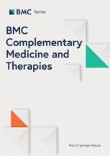
The reporting quality of acupuncture-related traumatic adverse events: a systematic review of case studies in Korea
2024 Mar 13 BMC Complementary Medicine and Therapies Kim SA, Lee JS, Kim TH, Lee S, Lee JD, Kang JW
The study found that most case studies reporting acupuncture-related traumatic AEs in Korea suffer from insufficient and inappropriate reporting, making it difficult to establish causality and assess the appropriateness of acupuncture practice.
Review Article Case Report Systematic Review Acupuncture Adverse Events
Effects of acupuncture and moxibustion on ulcerative colitis: An overview of systematic reviews
2024 Mar Heliyon Wang D, Wang Q, Wang Y, Li T, Tian M
Systematic Review Moxibustion Acupuncture Ulcerative ColitisAcupuncture and moxibustion therapies have shown effectiveness in treating ulcerative colitis according to the summarised-findings of various systematic reviews and meta-analyses.
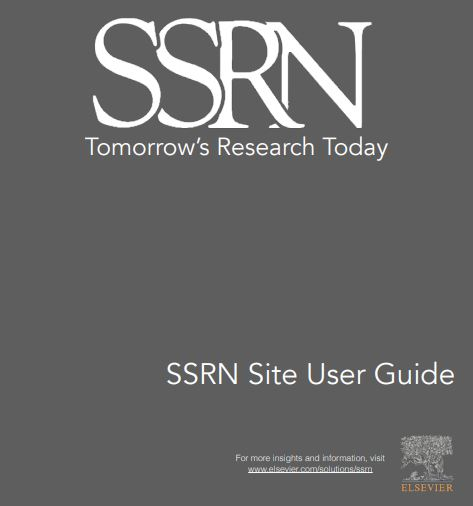
Efficacy and Safety of Different Acupuncture Therapies for Patients with Ulcerative Colitis:A Systematic Review And Network Meta-Analysis
2024 Jan SSRN Electronic Journal Zhang X, Yang S, Jin Y, Cheng X, Lu H, Wu H, et al.
Meta-Analysis Systematic Review Moxibustion Acupuncture Ulcerative ColitisDiverse acupuncture therapies, especially moxibustion, emerged as superior methods for alleviating ulcerative colitis symptoms in clinical practice.
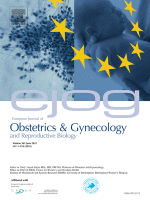
Acupuncture modification treatment for female sexual dysfunction: A meta-analysis
2023 Dec European Journal of Obstetrics & Gynecology and Reproductive Biology Ning S, Liu S, Chen X, Wang J
The meta-analysis included four studies with a total of 178 participants, and the results indicated a significant difference in Female Sexual Function Index (FSFI) scores between the acupuncture group and the control group. Specifically, acupuncture treatment showed improvement in sexual desire and sexual arousal. However, there was no statistically significant difference in the scales of lubrication, orgasm, satisfaction, and pain between the two groups. The conclusion suggests that acupuncture can have a positive impact on overall FSFI scores, sexual desire, and sexual arousal for FSD but does not significantly improve other aspects of female sexual dysfunction. The study recommends including more randomized controlled trials (RCTs) with a larger number of participants for more reliable conclusions in the future.
Systematic Review Meta-Analysis Acupuncture Female Sexual Dysfunction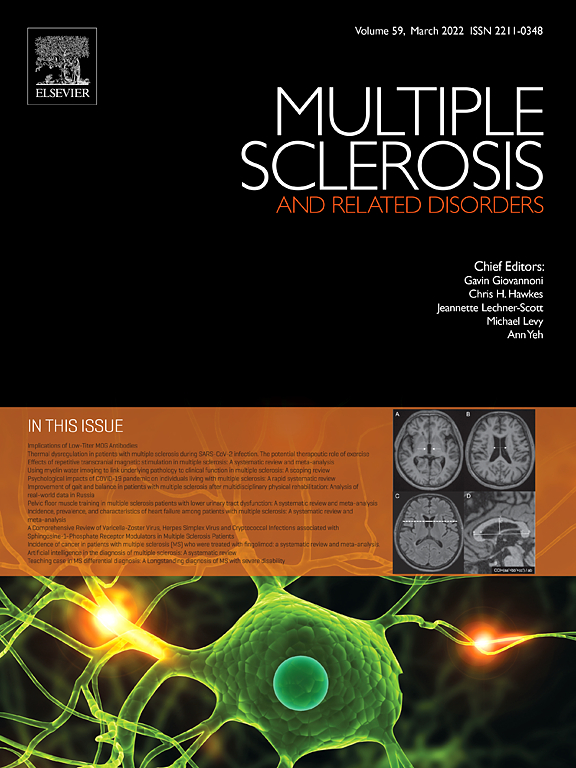
Effects of Acupuncture on Fatigue, Disability, Psychological Problems, and Sleep Quality in People with Relapsing-Remitting Multiple Sclerosis: A Randomized Controlled Trial
2023 Dec Multiple Sclerosis and Related Disorders Khodaie F, Moghadasi AN, Zhao B, Saeedi R
Twelve weeks of acupuncture treatment was effective in reducing fatigue, sleep latency, use of sleeping medication, somatization, obsessive-compulsive, depression, and paranoid disorders in people with RRMS.
Randomised Controlled Trial Acupuncture SleepResearch insights are moderated by the Research Hub team and offer an at-a-glance overview of interesting research findings.

2024 Heliyon
Acupuncture and moxibustion therapies have shown effectiveness in treating ulcerative colitis according to the summarised-findings of various systematic reviews and meta-analyses.
Systematic Review Moxibustion Ulcerative Colitis
Effects of acupuncture and moxibustion on ulcerative colitis: An overview of systematic reviews
Wang D, Wang Q, Wang Y, Li T, Tian M

2024 SSRN Electronic Journal
Diverse acupuncture therapies, especially moxibustion, emerged as superior methods for alleviating ulcerative colitis symptoms in clinical practice.
Meta-Analysis Moxibustion Ulcerative Colitis
Efficacy and Safety of Different Acupuncture Therapies for Patients with Ulcerative Colitis:A Systematic Review And Network Meta-Analysis
Zhang X, Yang S, Jin Y, Cheng X, Lu H, Wu H, et al.
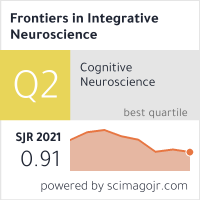
2023 Frontiers in Integrative Neuroscience
Acupuncture can enhance visual function in people with myopia via particular changes in brain activity.
Experimental Study Myopia
The effect of acupuncture at the Taiyang acupoint on visual function and EEG microstates in myopia
Su K, Wang L, Wang Z, Ma J, Zhang C, Bi H, et al.
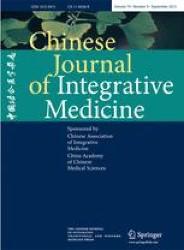
2023 Chinese Journal of Integrative Medicine
Acupuncture may have a positive impact on clinical pregnancy rate and live birth rate in women undergoing in vitro fertilization (IVF), although the results are limited by the heterogeneity of the current evidence.
Systematic Review
Pregnancy Benefit of Acupuncture on in vitro Fertilization: A Systematic Review and Meta-Analysis
Zhang H, Zhang C, Ma P, Sun C, Sun C, Liu X, et al.
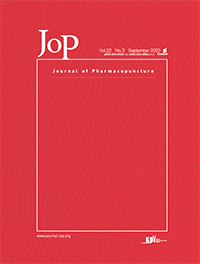
2023 Journal of Pharmacopuncture
Acupuncture combined with moxibustion has shown significant benefits in the treatment of mild to moderate Crohn's disease.
Meta-Analysis Crohn's Disease
The Effects of Acupuncture on Crohn’s Disease: a systematic review and meta-analysis
Bae JH, Kang SY, You SE, Jeong HI, Jang S, Kim KH
Review Articles
Review articles summarise and critically evaluate the current state of research on a specific topic or field by synthesising multiple primary research studies.

The reporting quality of acupuncture-related traumatic adverse events: a systematic review of case studies in Korea
2024 Mar 13 BMC Complementary Medicine and Therapies Kim SA, Lee JS, Kim TH, Lee S, Lee JD, Kang JW
The study found that most case studies reporting acupuncture-related traumatic AEs in Korea suffer from insufficient and inappropriate reporting, making it difficult to establish causality and assess the appropriateness of acupuncture practice.
Review Article Case Report Systematic Review Acupuncture Adverse Events
Effects of acupuncture and moxibustion on ulcerative colitis: An overview of systematic reviews
2024 Mar Heliyon Wang D, Wang Q, Wang Y, Li T, Tian M
Systematic Review Moxibustion Acupuncture Ulcerative ColitisAcupuncture and moxibustion therapies have shown effectiveness in treating ulcerative colitis according to the summarised-findings of various systematic reviews and meta-analyses.

Efficacy and Safety of Different Acupuncture Therapies for Patients with Ulcerative Colitis:A Systematic Review And Network Meta-Analysis
2024 Jan SSRN Electronic Journal Zhang X, Yang S, Jin Y, Cheng X, Lu H, Wu H, et al.
Meta-Analysis Systematic Review Moxibustion Acupuncture Ulcerative ColitisDiverse acupuncture therapies, especially moxibustion, emerged as superior methods for alleviating ulcerative colitis symptoms in clinical practice.

Acupuncture modification treatment for female sexual dysfunction: A meta-analysis
2023 Dec European Journal of Obstetrics & Gynecology and Reproductive Biology Ning S, Liu S, Chen X, Wang J
The meta-analysis included four studies with a total of 178 participants, and the results indicated a significant difference in Female Sexual Function Index (FSFI) scores between the acupuncture group and the control group. Specifically, acupuncture treatment showed improvement in sexual desire and sexual arousal. However, there was no statistically significant difference in the scales of lubrication, orgasm, satisfaction, and pain between the two groups. The conclusion suggests that acupuncture can have a positive impact on overall FSFI scores, sexual desire, and sexual arousal for FSD but does not significantly improve other aspects of female sexual dysfunction. The study recommends including more randomized controlled trials (RCTs) with a larger number of participants for more reliable conclusions in the future.
Systematic Review Meta-Analysis Acupuncture Female Sexual Dysfunction
Acupuncture Treatment for Restless Legs Syndrome: A Review of Randomized Controlled Trials
2023 Nov 30 Journal of Acupuncture Research Chae GE, Kim HW, Jo HJ, Koh A, Lee YJ, Choi JE, et al.
Acupuncture demonstrates significant improvements in overall health, treatment efficacy rate, sleep quality, and quality of life indicators for patients with RLS, as evidenced by reductions in pain severity (VAS scores), RLS symptoms severity (IRLSRS scores), and absence of significant side effects. Acupuncture is suggested as an effective and safe treatment for RLS, though further large-scale RCT studies are warranted to validate these findings.
Review Article Acupuncture Restless Legs SyndromeClinical Trials
Clinical trials are research studies that involve people and are conducted to evaluate the safety and efficacy of new treatments or interventions, such as drugs, medical devices, or behavioural therapies.

Effects of Acupuncture on Fatigue, Disability, Psychological Problems, and Sleep Quality in People with Relapsing-Remitting Multiple Sclerosis: A Randomized Controlled Trial
2023 Dec Multiple Sclerosis and Related Disorders Khodaie F, Moghadasi AN, Zhao B, Saeedi R
Twelve weeks of acupuncture treatment was effective in reducing fatigue, sleep latency, use of sleeping medication, somatization, obsessive-compulsive, depression, and paranoid disorders in people with RRMS.
Randomised Controlled Trial Acupuncture Sleep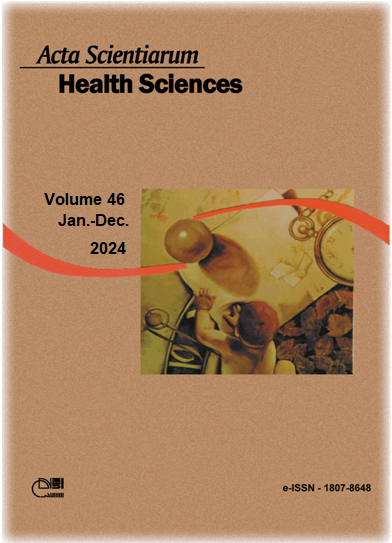
Acupuncture effects on pain and health status in women with fibromyalgia: a randomized clinical trial
2023 Aug 08 Acta Scientiarum. Health Sciences Baelz GU, Silva AMV, Duarte BSL, Steffen EL, Silva JEP, Signori LU
Acupuncture, compared to sham acupuncture, significantly reduced pain by 16% (p<0.001) and improved health status by 21% (p<0.001) in women with fibromyalgia. The improvement in health status is attributed to increased ability to work and go out, and reduced pain, fatigue, tiredness, and depression.
Randomised Controlled Trial
Acupuncture for chemotherapy-associated insomnia in breast cancer patients: an assessor-participant blinded, randomized, sham-controlled trial
2023 Apr 26 Breast Cancer Research Zhang J, Qin Z, So TH, Chang TY, Yang S, Chen H, et al.
The active acupuncture regimen, combining needling into body acupoints and acupressure on auricular acupoints, was not superior to sham control in reducing the Insomnia Severity Index (ISI) score from baseline to 6 weeks. However, it produced short-term treatment and long-term follow-up better outcomes in improving sleep onset latency, total sleep time, sleep efficiency, anxiety, depression, and quality of life. Participants in the active acupuncture group had a higher cessation rate of sleeping medications than the sham control, indicating that acupuncture could be an effective option for managing chemotherapy-associated insomnia and serve as a tapering approach to reduce the use of sleeping medications in breast cancer patients.
Randomised Controlled Trial Chemotherapy-Associated Insomnia Acupuncture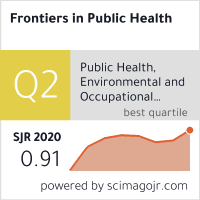
Acupuncture for comorbid depression and insomnia in perimenopause: A feasibility patient-assessor-blinded, randomized, and sham-controlled clinical trial
2023 Feb 06 Frontiers in Public Health Zhao FY, Zheng Z, Fu QQ, Conduit R, Xu H, Wang HR, et al.
Randomised Controlled Trial Perimenopausal DepressionAcupuncture can improve both perimenopausal depression and insomnia with short-medium term effects while being a safe treatment.
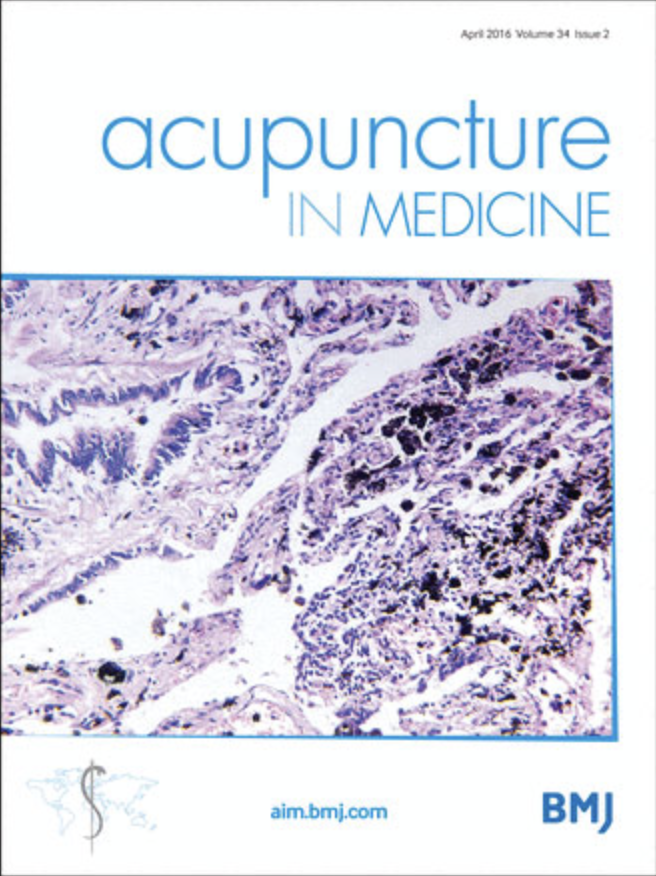
Effectiveness of acupuncture for fatigue in patients with relapsing-remitting multiple sclerosis: a randomized controlled trial
2023 Feb 01 Acupuncture in Medicine Khodaie F, Naser Moghadasi A, Kazemi AH, Zhao B
Acupuncture combined with amantadine and routine care, compared with amantadine and routine care alone, appears to be an effective short-term treatment for reducing fatigue and enhancing quality of life, including physical function and mental status, in patients with RRMS.
Randomised Controlled Trial Multiple SclerosisStudy Protocols
Published study protocols are detailed plans that outline the objectives, methodology, statistical analyses, and organisation of a research study that have been made publicly available for others to review and use as a reference.

Should acupuncture therapy be used for acute facial paralysis? A protocol for systematic review
2023 Mar 15 Systematic Reviews Cheng L, Li X, Ying Y, Du S, Zhang X, Guo W, et al.
This review will summarize the evidence on the different type of acupuncture therapy for acute Bell’s palsy and Ramsay-Hunt syndrome. We anticipate that it would be safe and effective when applied to the acute phase of PFP, and some specific suitable acupuncture methods would be found resulting from this review.
Study Protocol Acupuncture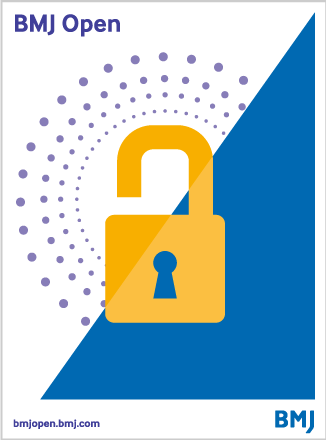
Safety and efficacy of acupuncture for varicocele-induced male infertility: a systematic review protocol
2022 Dec BMJ Open Wang S, Lu R, Shi H, Chen J, Sun M, Ding J, et al.
Study Protocol Male Fertility
Efficacy and safety of acupuncture in combination with Chinese herbal medicine in dealing with osteoporosis: A protocol for a systematic review and network meta-analysis
2022 Dec 30 Medicine Long P, Ju S, Wang J
The current systematic review and network meta-analysis will provide the effectiveness and safety of acupuncture in combination with CHM in dealing with OP. The research will provide reliable evidence for the clinical use of acupuncture in combination with CHM in dealing with OP.
Study Protocol Acupuncture
Acupuncture combined with traditional Chinese medicine for knee osteoarthritis: A protocol for systematic review and meta-analysis
2022 Dec 16 Medicine Wang Y, Lu Q, Guo H, Sun J, Li X, Guan H, et al.
This meta-analysis further established the efficacy of acupuncture combined with traditional Chinese medicine in the treatment of KOA. This meta-analysis aims to investigate the efficacy of acupuncture combined with traditional Chinese medicine on patients with KOA and provide reliable evidence. To provide more options for clinicians and patients in the treatment of KOA.
Study Protocol Acupuncture Knee Osteoarthritis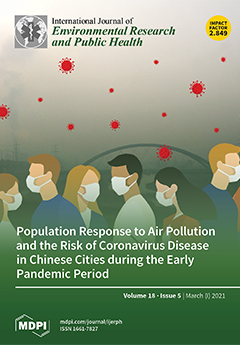
Pharmacopuncture Effects on Insomnia Disorder: Protocol for a Multi-Site, Randomized, Acupuncture-Controlled, Clinical Trial
2022 Dec 12 International Journal of Environmental Research and Public Health Lim JH, Lee JH, Kwon CY, Lee SH, Kang CW, Cho E, et al.
The findings of this trial willprovide evidence that will be useful in clinical decision-making for insomnia treatment strategies.
Study ProtocolPresentation Slides

Systematic Review
Acupuncture and moxibustion therapies have shown effectiveness in treating ulcerative colitis according to the summarised-findings of various systematic reviews and meta-analyses.
Wang D, Wang Q, Wang Y, Li T, Tian M

Meta-Analysis
Diverse acupuncture therapies, especially moxibustion, emerged as superior methods for alleviating ulcerative colitis symptoms in clinical practice.
Zhang X, Yang S, Jin Y, Cheng X, Lu H, Wu H, Ji J

Experimental Study
Acupuncture can enhance visual function in people with myopia via particular changes in brain activity.
Su K, Wang L, Wang Z, Ma J, Zhang C, Bi H, Wu J

Systematic Review
Acupuncture may have a positive impact on clinical pregnancy rate and live birth rate in women undergoing in vitro fertilization (IVF), although the results are limited by the heterogeneity of the current evidence.
Zhang H, Zhang C, Ma P, Sun C, Sun C, Liu X, Pu Z, Lin Y, Liu B, Liu C, Yan S

Meta-Analysis
Acupuncture combined with moxibustion has shown significant benefits in the treatment of mild to moderate Crohn's disease.
Bae JH, Kang SY, You SE, Jeong HI, Jang S, Kim KH
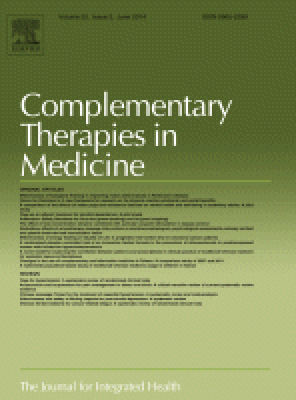
Systematic Review
Acupuncture's effectiveness in treating attention deficit hyperactivity disorder remains inconclusive due to the low quality of existing systematic reviews and meta-analyses.
Zhang L, Huang C, Chen X, Du S, Yang J, Hu B

Meta-Analysis
Acupuncture demonstrates a positive therapeutic effect on inflammatory bowel disease (IBD) by effectively regulating associated inflammatory factors.
Yang X, He M, Tang Q, Wang Z, Jin D, Wu X, Yang Y, Ma D, Sun M, Li T

Practice Guideline
Guidelines have been developed for treating frozen shoulder using traditional Chinese medicine, with multiple therapies such as acupuncture and exercise recommended.
Qin X, Sun K, Ao Y, Liu J, Wang M, Deng Q, Zhong W, liu J, Sun S, Liu X, Shi B, Guan X, Du S, Zou J, Wu C, Chen F, Fang Y, Nie X, Mo W, Guo J, Zhang Y, Dong Y, Wei X, Zhu L
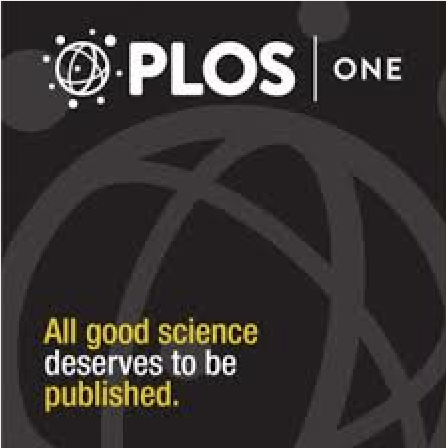
Meta-Analysis
Acupuncture, either alone or as an adjunct, improved the clinical efficacy and visual acuity of age-related macular degeneration patients, particularly those with dry AMD.
Sun W, Zhao Y, Liao L, Wang X, Wei Q, Chao G, Zhou J
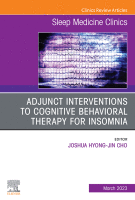
Theoretical Article
Acupuncture may enhance the effectiveness of cognitive-behavioral therapy for people suffering from insomnia and related conditions.
Kutana S, Mao JJ, Garland SN
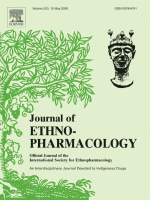
Review Article
Traditional Chinese Medicines (TCM) could increase the survival rate of retinal ganglion cells, thereby playing an active role in treating glaucoma.
Qi S, Zhang J, Zhu H, Wang Z, Li W
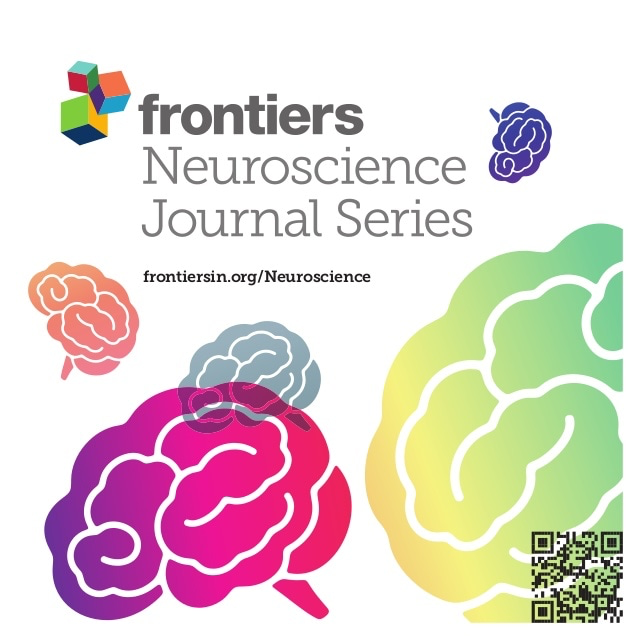
Systematic Review
Acupuncture's effectiveness for carpal tunnel syndrome uncovers better pain relief compared to night splints and potential benefits when used alongside other treatments
Dong Q, Li X, Yuan P, Chen G, Li J, Deng J, Wu F, Yang Y, Fu H, Jin R

Meta-Analysis
Acupuncture, either as an add-on or standalone treatment, improved conduct problems, learning issues, and hyperactivity symptoms in children with attention-deficit hyperactivity disorder.
Ang L, Kim JT, Kim K, Lee HW, Choi JY, Kim E, Lee MS
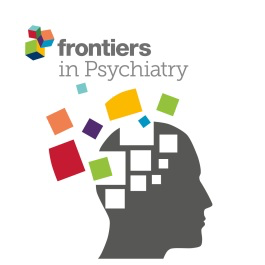
Systematic Review
Acupuncture, especially TEAS, is safer and more effective than medication for improving sleep quality in cancer related insomnia
Ou Y, Lin D, Ni X, Li S, Wu K, Yuan L, Rong J, Feng C, Liu J, Yu Y, Wang X, Wang L, Tang Z, Zhao L

Systematic Review
Acupuncture and Moxibustion Show Promise for Chronic Renal Insufficiency
Ou Y, Lin D, Ni X, Li S, Wu K, Yuan L, Rong J, Feng C, Liu J, Yu Y, Wang X, Wang L, Tang Z, Zhao L

Randomised Controlled Trial
Acupuncture can improve both perimenopausal depression and insomnia with short-medium term effects while being a safe treatment.
Zhao FY, Zheng Z, Fu QQ, Conduit R, Xu H, Wang HR, Huang YL, Jiang T, Zhang WJ, Kennedy GA
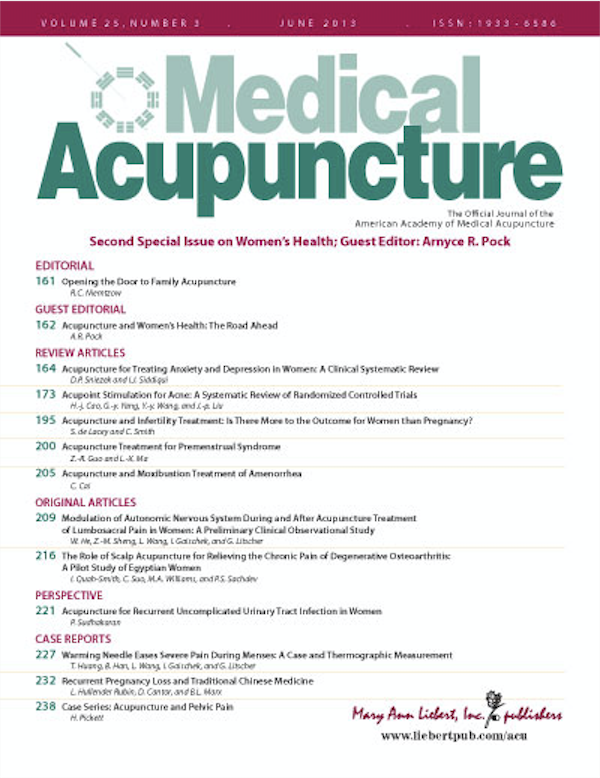
Randomised Controlled Trial
Acupuncture combined with a home-exercise program significantly reduces pain in patients suffering from plantar fasciopathy more than just a home exercise program.
Cagle SD, Covey C, Farrell J, Sharon DJ, Crawford P
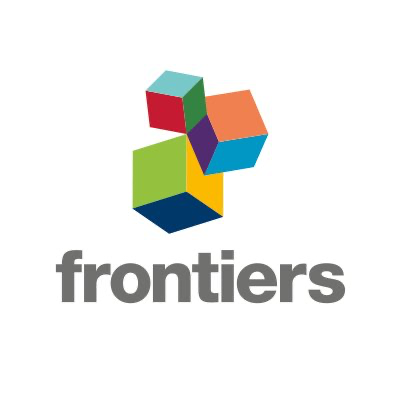
Systematic Review
Acupuncture provides speedy and effective pain relief for renal colic, surpassing traditional drugs with fewer side effects suggesting its potential as a safe and efficient option for acute pain treatment
Hsiao-Tien Chen, Cheng-Feng Kuo, Chin-Chia Hsu, Li-Chun Lai, Ai-Chin Cheng, Cheuk-Kwan Sun and Kuo-Chuan Hung

Randomised Controlled Trial
Auricular acupuncture relieved pain and decreased disability more effectively than physiotherapy for frozen shoulder treatment.
Hollisaz MT, Khatibi Aghda A, Asheghan M, Amanollahi A, Hashemi SE

Cohort Study
Acupuncture shows promise in improving psychiatric symptoms, physical symptoms, and quality of life in patients with treatment-resistant mood disorders, highlighting its potential as a complementary therapy for these conditions.
Matsuura Y, Hongo S, Taniguchi H, Yasuno F, Sakai T
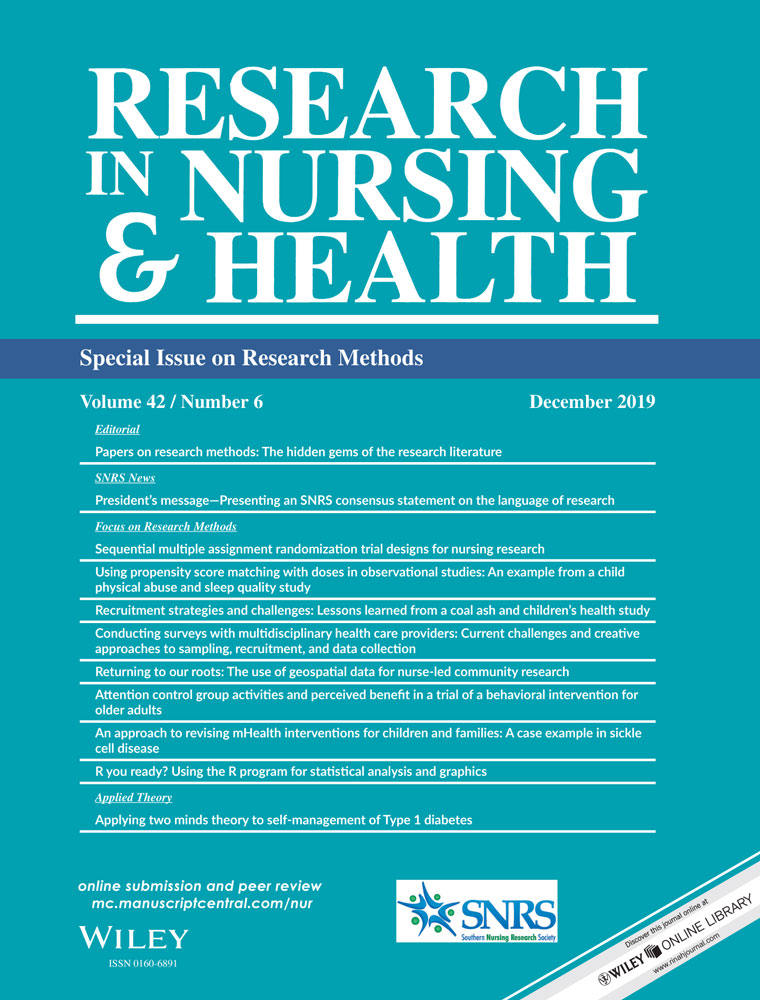
Systematic Review
Acupuncture, either in isolation or as an adjunct to pharmacological treatment, has clinical benefits and can be considered a safe option for managing depression.
Chen B, Wang CC, Lee KH, Xia JC, Luo Z

Systematic Review
Acupuncture shows promise as an effective treatment for anxiety during the COVID-19 pandemic, but further research is required to establish its effectiveness conclusively.
Li M, Liu X, Ye X, Zhuang L
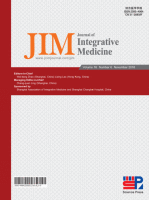
Systematic Review
Acupuncture, when used in conjunction with medicine or alone, appears to improve certain PCOS outcomes such as ovulation rate and recovery of menstrual cycle.
Yang H, Xiao Z, Yin Z, Yu Z, Liu J, Xiao Y, Zhou Y, Li J, Yang J, Liang F

Systematic Review
Acupuncture, when combined with lifestyle changes, can effectively lower blood pressure in grade 1 hypertension patients with fewer side effects
Zhang M, Zhu Y, Wang J, Li Y, Hua Z
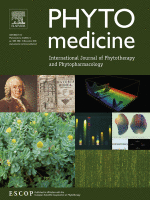
Systematic Review
Acupuncture shows positive effects on cancer-related issues; research calls for further exploration of acupuncture's efficacy and safety, especially for conditions like depression, offering further potential support for cancer survivors
Zhang X, Hou W, Pu F, Wang X, Wang Y, Yang M, Cheng K, Wang Y, Robinson N, Liu J

Meta-Analysis
Acupuncture using Lingguibafa acupoint selection shows notable improvements in various sleep parameters for individuals suffering from insomnia.
Ji H, Zhang K, Lu Y, Kong X, Ma X

Systematic Review
Acupuncture covering the depth ranges for BL18, BL20, and BL22 and their targeting of various tissues potentially alleviates sympathetic nerve issues and ischemia with assistance of the diaphragm.
Cho Y, Han Y, Kim Y, Han S, Oh K, Chae H, Hongmin C, Ryu M
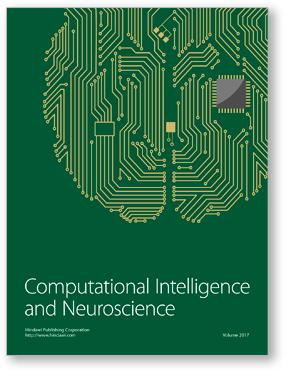
Systematic Review
Meta-analysis of TCM non-drug treatments like acupuncture and massage improved primary insomnia, reducing PSQI scores, and easing anxiety and depression.
Zhuang J, Wu J, Fan L, Liang C

Systematic Review
Meta-analysis has strong implications of the effectiveness of tongue acupuncture, especially when combined with conventional therapies, in treating poststroke aphasia. This holistic approach demonstrates significant improvements in patient outcomes.
Yang S, Li L, Jiang R, Ding H, Xu F, Ge L, Kuang P, Wang Z
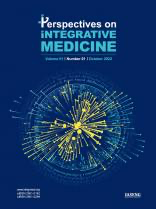
Practice Guideline
Acupuncture is safe and may be a cost-effective treatment for shoulder pain.
Birch S, Lee MS, Kim TH, Alraek T

Systematic Review
Complementary therapies are generally effective and safe in treating insomnia with acupuncture being the most frequently effective form, often yielding results superior to western medicine, sham/placebo, and no treatment.
Yeo JJ, Lee JW, Kim KS, Hyun MK
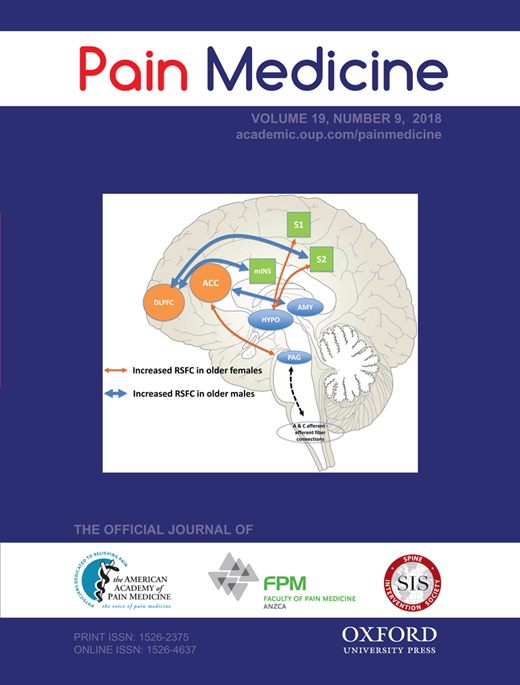
Randomised Controlled Trial
True acupuncture treatment according to traditional Chinese medicine consistently improved migraine outcomes more than just medication or mock treatments.
Facco E, Liguori A, Petti F, Zanette G, Coluzzi F, De Nardin M, Mattia C

Cohort Study
Acupuncture intervention within 7 days of onset of Bell's palsy could shorten the time to recovery and improve the outcome at 12 and 24 weeks.
Yang LS, Zhou DF, Zheng SZ, Zhao BM, Li HG, Chen QQ, Zhong Y, Yang HZ, Zhang K, Tang CZ

Systematic Review
Acupuncture coupled with traditional Chinese medicine may be more effective and safer than conventional Western medicine in treating chronic urticaria.
Lu Z, Zhou Q, Chai S, Yang H, Wang J, Luo H, Cao Y, Tao M

Systematic Review
The study found that acupuncture as an adjuvant therapy for frozen-thawed embryo transfer (FET) in infertile women had positive effects on pregnancy outcomes.
Zhu C, Xia W, Huang J, Zhang X, Li F, Yu X, Ma J, Zeng Q
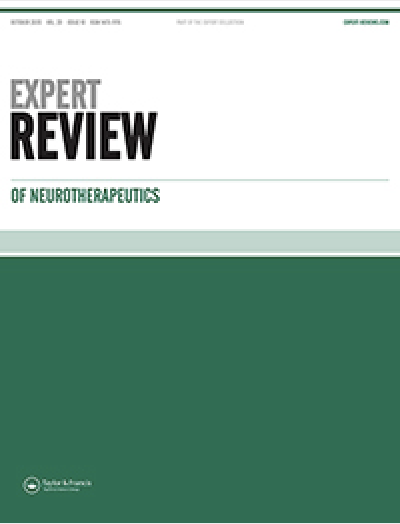
Review Article
A 6-week course of acupuncture proves as effective as 6-month drug prophylaxis for migraines, with specific Chinese point selection and stimulation appearing less important.
Endres HG, Diener HC, Molsberger A

Clinical Study
Acupuncture has shown potential in enhancing structural nerve regeneration in Chemotherapy-induced peripheral neuropathy, leading to subjective improvements and positive neurological findings.
Friedemann T, Kark E, Cao N, Klaßen M, Meyer-Hamme G, Greten JH, Rostock M, Buhlmann E, Zhao A, Schröder S

Systematic Review
Acupuncture, either solo or alongside conventional treatment, results in a significant improvement in symptoms and quality of life for chronic rhinosinusitis sufferers.
Lee B, Kwon CY, Park MY
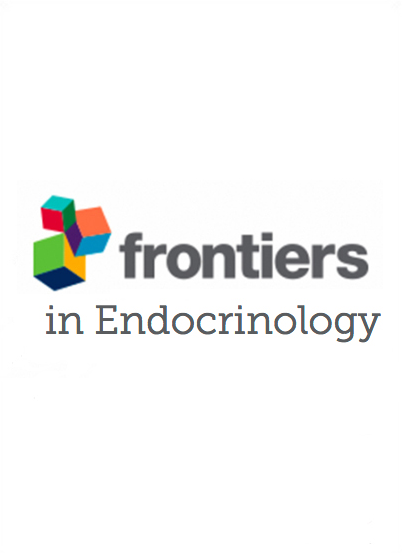
Systematic Review
PCOS patients suggests that combining acupuncture with metformin might enhance pregnancy and ovulation rates, as well as improve insulin resistance.
Chen X, Lan Y, Yang L, Liu Y, Li H, Zhu X, Zhao Y, Long C, Wang M, Xie Q, Li Z, Wu J

Systematic Review
Electroacupuncture may be more effective than manual acupuncture for managing frozen shoulder, with larger effect sizes in terms of pain, function, and response rate.
Heo JW, Jo JH, Lee JJ, Kang H, Choi TY, Lee MS, Kim JI

Systematic Review
Acupuncture added to conventional rehabilitation has been found more effective in reducing post-stroke spasticity than conventional rehabilitation alone.
Xue C, Jiang C, Zhu Y, Liu X, Zhong D, Li Y, Zhang H, Tang W, She J, Xie C, Li J, Feng Y, Jin R

Randomised Controlled Trial
Auricular acupuncture was found to improve physical and emotional aspects in patients with temporomandibular disorders, with similar results to occlusal splint treatment.
Aroca JP, Cardoso PMF, Favarão J, Zanini MM, Camilotti V, Busato MCA, Mendonça MJ, Alanis LRA

Acupuncture combined with nerve repair significantly enhances the recovery rate in patients with peripheral facial paralysis by aiding nerve regeneration.
Zhenggen Shan
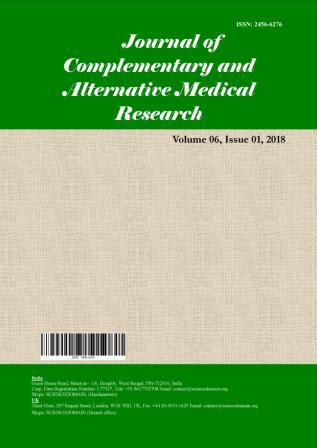
Review Article
Acupuncture has shown to be potentially beneficial as an alternate or adjunct therapy for patients with Bell's palsy following recovery from COVID-19.
Yepthomi T, Somanadhapai S

Systematic Review
Acupuncture, specifically electroacupuncture and bee venom acupuncture, shows promise as a growing therapeutic approach in the treatment of Parkinson's Disease.
Li X, Wei W, Wang Y, Wang Q, Liu Z

Systematic Review
The potential of acupuncture as a non-pharmacological intervention to alleviate IVF-related state anxiety.
Hullender Rubin LE, Smith CA, Schnyer RN, Tahir P, Pasch LA

Systematic Review
Acupuncture and moxibustion therapies have greater therapeutic effectiveness for knee osteoarthritis than sham treatments and generic acupuncture/moxibustion treatments.
Ye C, Zhou J, Wang M, Xiao S, Lv A, Wang D
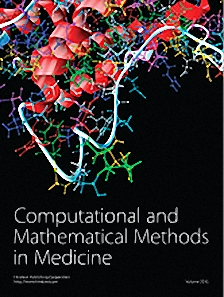
Meta-Analysis
Acupuncture combined with moxibustion showed the best outcomes in terms of efficacy and quality of life improvement for adults with irritable bowel syndrome complicated with diarrhea.
Jiang X, Guo X, Zhou J, Ye S
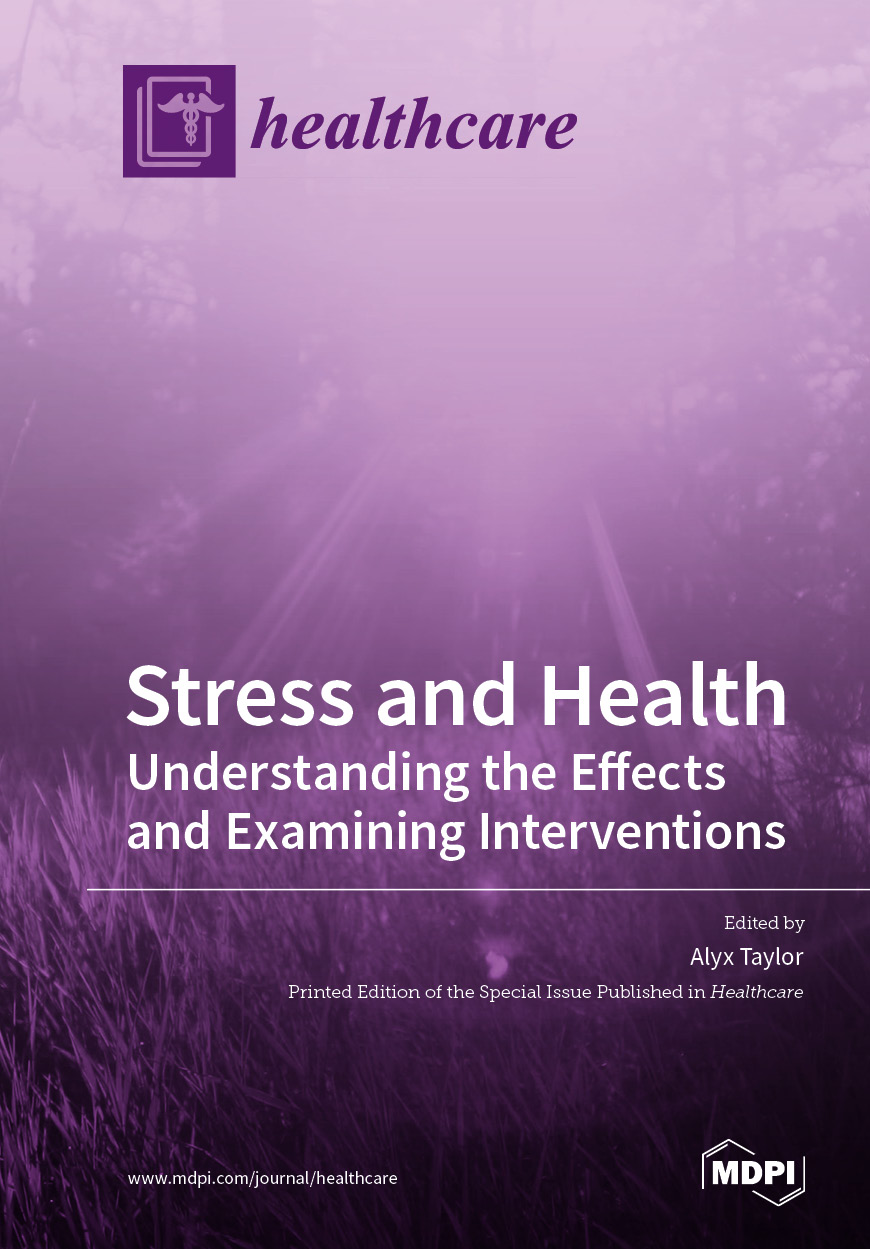
Systematic Review
Acupuncture showed a significant effect in the management of fibromyalgia patients. It reduced pain, depression, and enhanced quality of life.
Almutairi NM, Hilal FM, Bashawyah A, Dammas FA, Yamak Altinpulluk E, Hou JD, Lin JA, Varrassi G, Chang KV, Allam AES

Randomised Controlled Trial
True acupuncture over an eight-week period is effective for reducing the frequency of chronic tension-type headache.
Zheng H, Gao T, Zheng QH, Lu LY, Hou TH, Zhang SS, Zhou SY, Hao XY, Wang L, Zhao L, Liang FR, Li Y
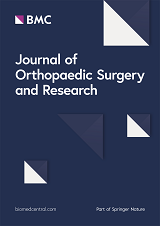
Systematic Review
Individualised acupuncture and standard acupuncture combined with TENS were the most effective protocols for the non-pharmacological management of chronic aspecific low back pain based on measures of pain and disability, compared to sham treatment.
Baroncini A, Maffulli N, Eschweiler J, Molsberger F, Klimuch A, Migliorini F
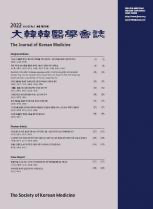
Systematic Review
Electroacupuncture treatment may be effective for treating acute gout.
Hwang JH, Song A, Song HS

Systematic Review
Electroacupuncture treatment for carpal tunnel syndrome was reported to be effective and showed a significant difference from the control group.
Park CW, Lim MJ, Lee SW, Yi YH, Song DW, Yu SG, Kim MJ, Oh DY, Choi HJ, Ju AR

Systematic Review
Acupuncture shows potential benefits in stroke rehabilitation, particularly for shoulder-hand syndrome post-stroke.
Choi TY, Jun JH, Lee HW, Yun JM, Joo MC, Lee MS
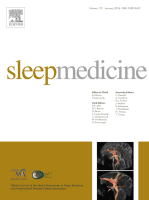
Systematic Review
Multiple acupuncture therapies, particularly acupoints catgut embedding, auricular acupressure + manual acupuncture, and electroacupuncture + acupoint application, significantly improve insomnia symptoms.
Lu Y, Zhu H, Wang Q, Tian C, Lai H, Hou L, Liu Y, Gao Y, Liu M, Yang F, Ni X, Lin L, Niu J, Tian J, Ge L

Systematic Review
The meta-analysis suggests that higher acupuncture dosages administered over multiple menstrual cycles may lead to improved endometrial receptivity and clinical pregnancy rates in infertile women with poor endometrial receptivity (PER).
Zheng X, Yu S, Liu L, Yang H, Wang F, Yang H, Lv X, Yang J

Acupuncture is a low-risk method that has the potential to enhance perioperative analgesia, decrease opioid requirement, and reduce unwanted side effects of anesthesia, surgery, and opioid administration such as nausea/vomiting.
Shah S, Godhardt L, Spofford C

Review Article
Acupuncture, when used as an integrative therapy in conjunction with traditional treatments, significantly improves the quality of life in patients with Multiple Sclerosis.
Khodaie F, Abbasi N, Kazemi Motlagh AH, Zhao B, Naser Moghadasi A
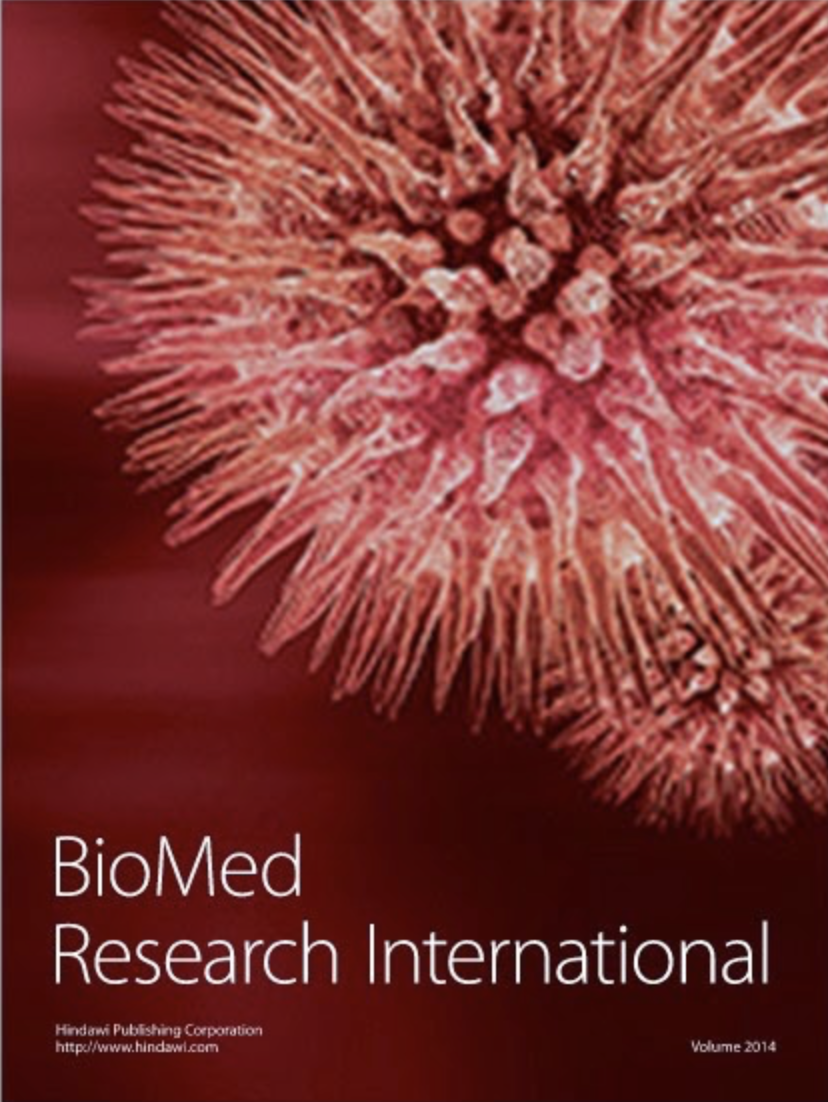
Systematic Review
Acupuncture can reduce pain and improve functional activities in patients with knee osteoarthritis, proving particularly beneficial for chronic sufferers and enhancing their quality of life.
Tian H, Huang L, Sun M, Xu G, He J, Zhou Z, Huang F, Liu Y, Liang F

Systematic Review
Acupuncture can be a safe and effective alternative therapy to conventional drugs for improving sleep quality and relieving symptoms in patients with active depression.
Zhao FY, Kennedy GA, Spencer SJ, Conduit R, Zhang WJ, Fu QQ, Zheng Z
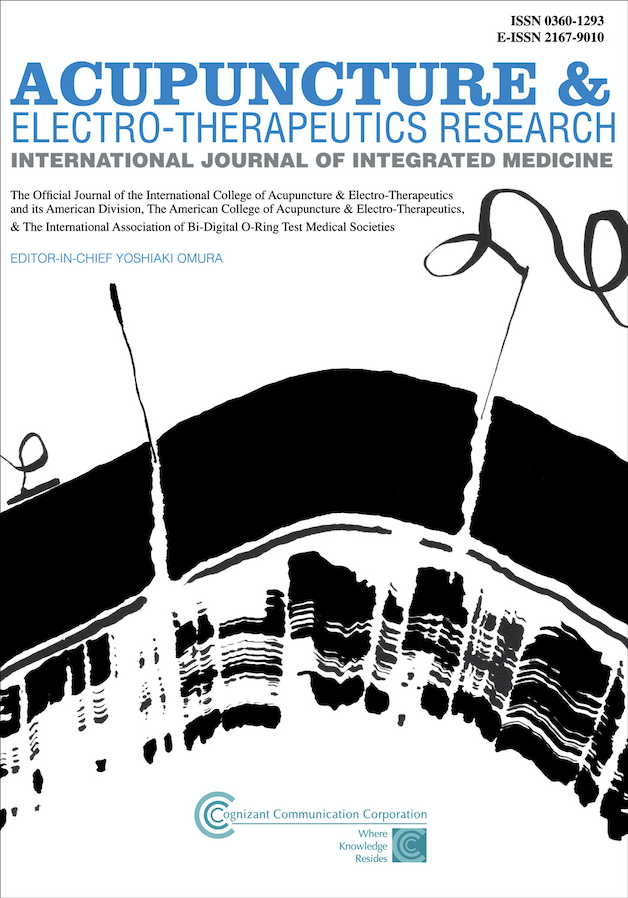
Systematic Review
Acupuncture shows promising potential in providing symptom relief for women with adenomyosis and may be considered as an alternative treatment to surgery and pharmacological medicine, based on a systematic review and meta-analysis of randomized controlled trials.
Li Q, Li YX, Fan L, Yuan SE

Review Article
Acupuncture, particularly when used alongside antidepressants, can effectively alleviate various types of depression symptoms and reduce side effects of medication.
Yang, Na-Na; Lin, Lu-Lu; Li, Yue-Jie; Li, Hong-Ping; Cao, Yan; Tan, Chun-Xia; Hao, Xiao-Wan; Ma, Si-Ming; Wang, Lu; Liu, Cun-Zhi
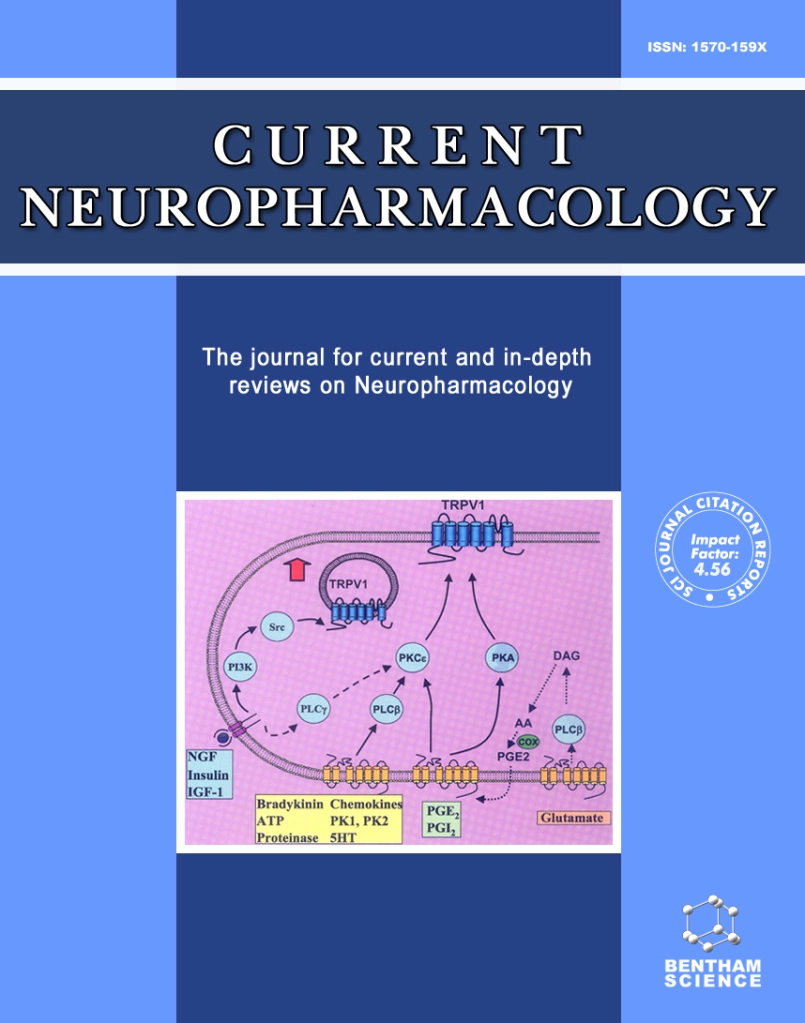
Review Article
Acupuncture could help manage different types of depression by increasing neuroplasticity, decreasing brain inflammation, and reducing side effects of conventional antidepressant treatment.
Yang NN, Lin LL, Li YJ, Li HP, Cao Y, Tan CX, Hao XW, Ma SM, Wang L, Liu CZ

Systematic Review
Among patients with PCOS, the combined use of acupuncture and moxibustion as a complementary therapy has additional efficacy regarding increased pregnancy and ovulation rates and reduced miscarriage rate.
Li P, Peng J, Ding Z, Zhou X, Liang R
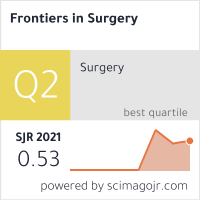
Systematic Review
Acupuncture, particularly electro-acupuncture, may alleviate post-hemorrhoidectomy pain at certain stages, but overall effectiveness remains inconclusive.
Chen H, Zhang W, Sun Y, Jiao R, Liu Z
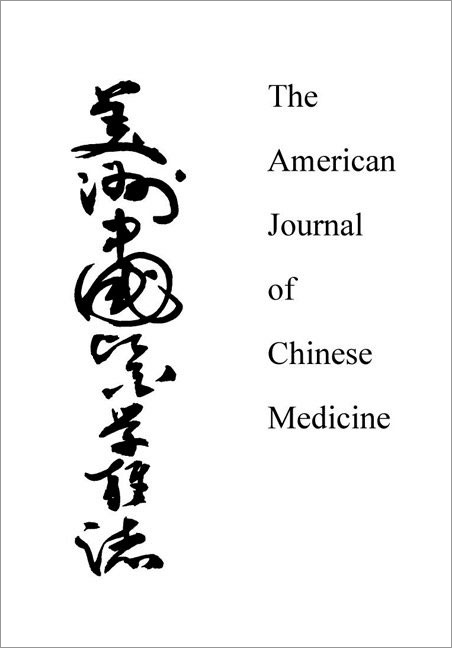
Review Article
Acupuncture shows promising results in managing autoimmune diseases by potentially regulating immune responses.
Jing Wang, Fangyi Zhu, Wei Huang, Zhengyi Chen, Ping Zhao, Yanting Lei, Yumei Liu, Xijun Liu, Bo Sun, Hulun Li
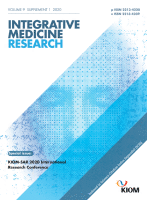
Systematic Review
Some complementary approaches, such as massage and herbal ointments, show promise in reducing postpartum pain.
Smith CA, Hill E, Denejkina A, Thornton C, Dahlen HG

Randomised Controlled Trial
Acupuncture effectively induced and sustained remission in active Crohn's disease patients, linked to an increase in anti-inflammatory gut bacteria and improved intestinal barrier.
Bao C, Wu L, Wang D, Chen L, Jin X, Shi Y, Li G, Zhang J, Zeng X, Chen J, Liu H, Wu H

Systematic Review
Acupuncture can be effective and safe for primary trigeminal neuralgia. Five acupuncture methods were superior to conventional medicine (carbamazepine) in pain reduction intensity and response rate.
Yin Z, Wang F, Sun M, Zhao L, Liang F

Systematic Review
Traditional Chinese medicine, including acupuncture, can provide superior pain relief and faster recovery for HIV-related Herpes Zoster compared to regular drugs.
Jiang Y, Zheng RX, Yu ZY, Zhang XW, Li J, Lan HD, Qiao SY, Han M, Cao HJ, Robinson N, Liu JP

Systematic Review
Acupuncture appears to have positive effects on live birth rates, clinical pregnancies, and other outcomes in female infertility, but more robust studies are required to establish its true efficacy and safety.
Kewei Quan, Chuyi Yu, Xiaohui Wen, Qiuping Lin, Naiping Wang, Hongxia Ma

Systematic Review
Acupuncture may be effective and safe for short-term pain reduction and functional improvement in hand-and-wrist conditions.
Trinh K, Zhou F, Belski N, Deng J, Wong CY
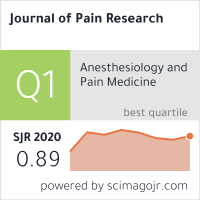
Systematic Review
Acupuncture is more effective than control treatment in alleviating pain and improving well-being in both the short- and long-term in patients with fibromyalgia.
Zheng C, Zhou T

Review Article
Acupuncture can regulate both innate and adaptive immunity of IBD patients, including the balance of Th17/Treg and Th1/Th2 cells, and also modulate intestinal flora.
Liu Z, Jiao Y, Yu T, Wang H, Zhang Y, Liu D, Xu Y, Guan Q, Lu M

Systematic Review
High prevalence of insomnia, anxiety, and depression among perimenopausal women, emphasizing the importance of exploring acupuncture as a potential green therapy for effectively addressing these interconnected issues.
Ping Y, Liang C, Fan X, Zhang L, Ying D, Wang Z
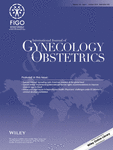
Systematic Review
Numerous complementary treatments have been used to alleviate the symptoms of endometriosis, but only acupuncture has demonstrated a significant improvement in outcomes.
Ticiana A.A. Mira, Mariana M. Buen, Murilo G. Borges, Daniela A. Yela, Cristina L. Benetti-Pinto

Randomised Controlled Trial
Acupuncture is a safe and effective treatment for Seasonal Allergic Rhinitis, significantly improving symptoms without needing relief medication or causing side effects.
Xue CC, English R, Zhang JJ, Da Costa C, Li CG

Systematic Review
Acupuncture can be used for carpal tunnel syndrome treatment without serious adverse effects.
Huh JH, Jeong HI, Kim KH

Systematic Review
Compared with conventional treatment, acupuncture as an adjuvant therapy can significantly reduce the incidence of post-stroke fatigue.
Chen Y, Peng M, Li Y

Systematic Review
Acupuncture's potential in reducing menopausal hot flush frequency compared to sham acupuncture, and its similarity in impacting hormone levels to hormone therapy.
Liu C, Wang Z, Guo T, Zhuang L, Gao X

Systematic Review
Acupuncture displays potential as a safe and effective treatment for foot and ankle pain, providing pain relief and functional improvement.
Trinh K, Belski N, Zhou F, Kuhad A, Luk D, Youn E

Randomised Controlled Trial
The standardised and brief acupuncture treatment produced a fast and clinically relevant reduction in moderate-to-severe menopausal symptoms during the six-week intervention.
Lund KS, Siersma V, Brodersen J, et al.
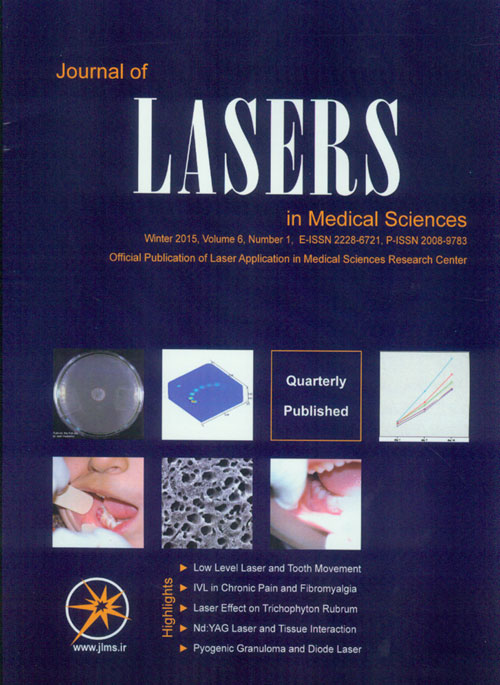
Randomised Controlled Trial
Laser acupuncture therapy might be a feasible treatment for chronic Bell's palsy and its long-term complications according to this pilot study.
Ton G, Lee LW, Ho WC, Tu CH, Chen YH, Lee YC

Randomised Controlled Trial
Auricular acupressure may be a safe and effective technique for reducing burnout and secondary traumatic stress in healthcare workers.
Afrasiabi J, McCarty R, Hayakawa J, Barrows J, Lee K, Plouffe N, Schomberg J
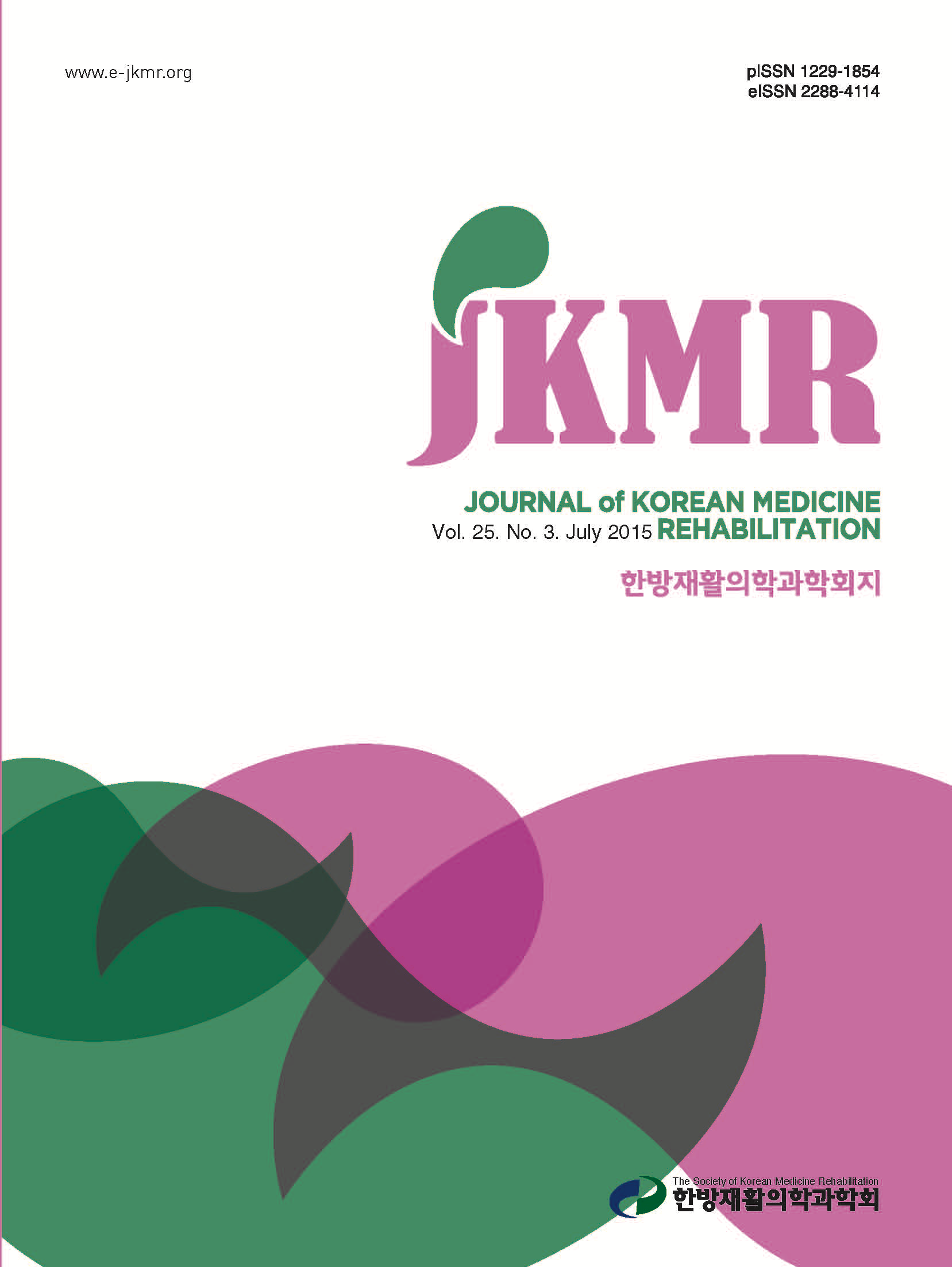
Systematic Review
Acupuncture appears to have positive effects in pain relief and functional recovery after rotator cuff surgery.
Lee SJ, Ko YM, Park JS, Park TY, Lee JH, Cho JH, Hwang EH, Kim KJ, Choi MY, Song YK
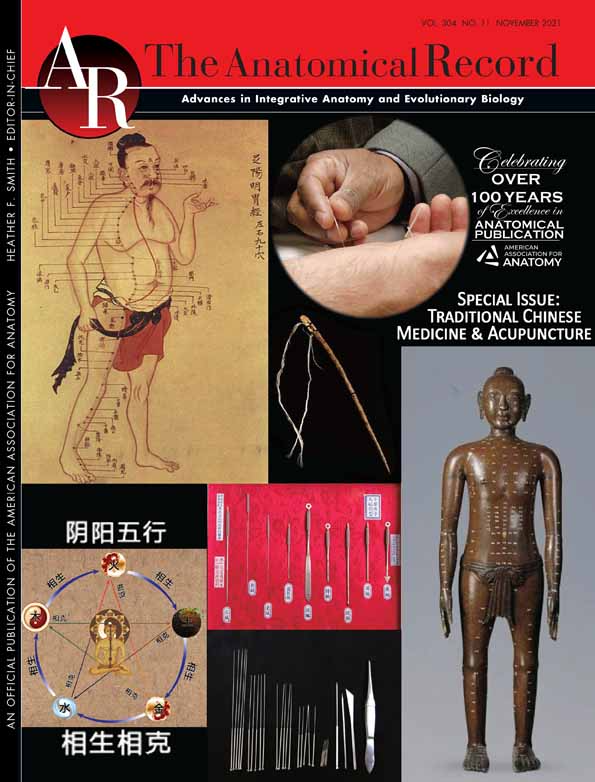
Systematic Review
Acupuncture, either alone or combined with antidepressants can effectively treat depression, and offers faster onset and longer-lasting efficacy compared to antidepressants.
Zhang Z, Li S, Meng H, Wang Y, Zhang Y, Wu M, Chen Y, Rong P, Wang Y
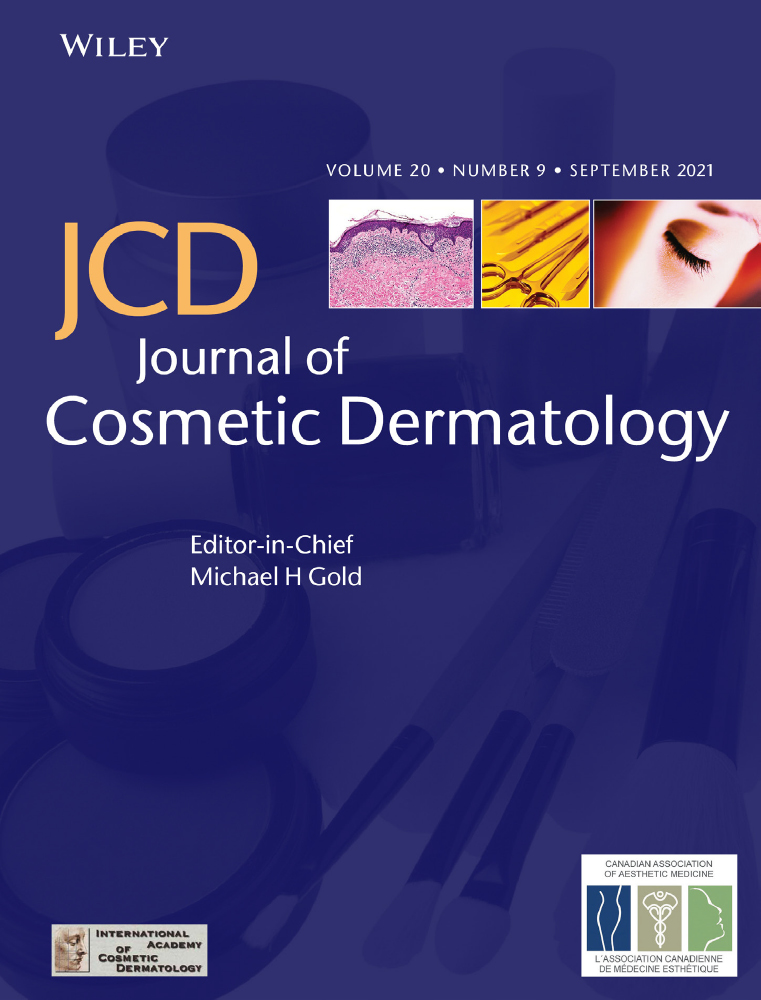
Review Article
Acne, primarily influenced by fluctuating hormone levels, may be effectively treated using acupuncture, an ancient technique that tackles the deep-rooted mechanisms crucial to acne development.
Chun‐Yan C, Guang‐yao X, Yan‐yan S, Ming‐Shu X, Peng L
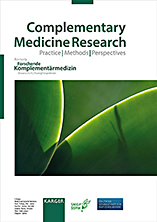
Systematic Review
Acupuncture treatment offers significant benefits for herpes zoster patients, including reduced pain intensity and faster healing times.
Cui Y, Wang F, Li H, Zhang X, Zhao X, Wang D
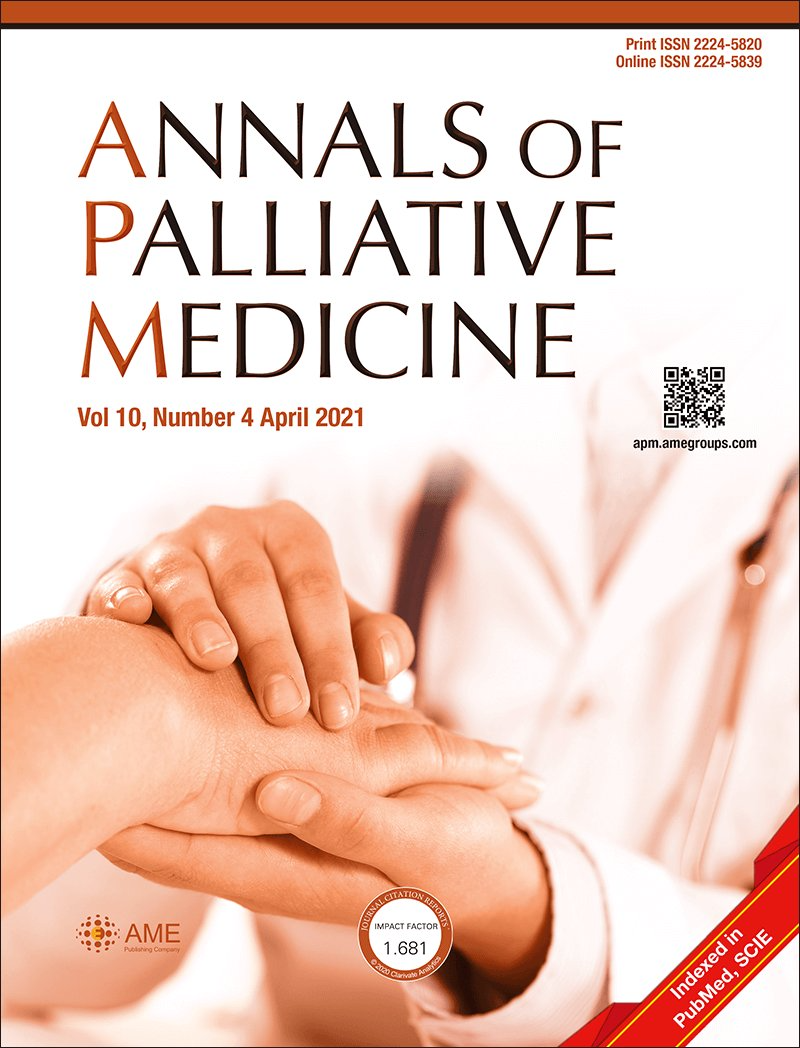
Review Article
Acupuncture therapy could potentially serve as an effective supplementary treatment method for psoriasis.
Jing M, Shi L, Zhang Y, Zhu M, Yuan F, Zhu B, Chen M, Ge X

Review Article
Acupuncture has been shown to significantly improve pain, disability, and quality of life for patients with shoulder impingement syndrome.
Park JE, Kim WY, Lee SJ, Oh DY, Lee MC, Jeon MK, Kim HJ, Ahn JY, Yang SH, Choi YY, Shin NY, Nam HJ

Systematic Review
Treatment of rheumatoid arthritis using acupuncture with Western medicine was associated with higher efficacy and lower risks than treatment with Western medicine alone.
Huo X, Liang L, Ding X, Bihazi A, Xu H
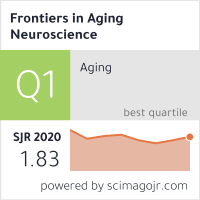
Cohort Study
Stroke patients who received acupuncture had a lesser risk of insomnia across various demographic and medical variables.
Qiu X, Han NS, Yao JX, Yu FR, Lin YY, Zhuang X

Systematic Review
Acupuncture is an effective approach for hyperemesis gravidarum and has a great potential to mitigate ketonuria, ease nausea and vomiting, increase food intake, and shorten the hospital stay.
Haizhen Lu, Chengwen Zheng, Yanmei Zhong, Linhao Cheng, Yi Zhou

Systematic Review
Acupuncture (either alone or combined with speech and language therapy) may be effective for poststroke aphasia.
Zhang Y, Wang Z, Jiang X, Lv Z, Wang L, Lu L
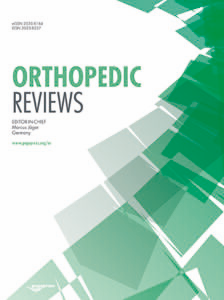
Review Article
Increasing evidence supports the use of acupuncture as part of multimodal approaches to the treatment of fibromyalgia with additive efficacy to traditional therapy.
Berger AA, Liu Y, Nguyen J, Spraggins R, Reed DS, Lee C, Hasoon J, Kaye AD

Systematic Review
Acupuncture could be effective and safe for post-stroke cognitive impairment.
Xu Kuang, Wenjuan Fan, Jiawei Hu, Liqun Wu, Wei Yi, Liming Lu, Nenggui Xu
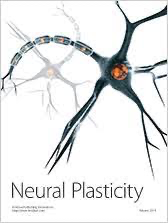
Review Article
Acupuncture may slow Parkinson's disease progression by protecting dopaminergic neurons and regulating neurotransmitter balance, potentially reducing dependence on medication.
Zhao Y, Zhang Z, Qin S, Fan W, Li W, Liu J, Wang S, Xu Z, Zhao M
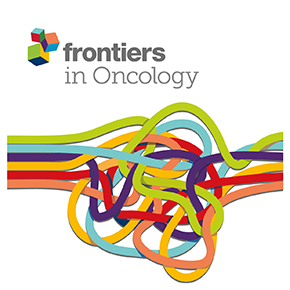
Systematic Review
Current evidence suggests that acupuncture might improve breast cancer treatment-related symptoms measured with patient-reported outcomes including quality of life, pain, fatigue, hot flashes, sleep disturbance and anxiety.
Zhang Y, Sun Y, Li D, Liu X, Fang C, Yang C, Luo T, Lu H, Li H, Zhang H, Liang Q, Wu J, Huang L, Xu R, Ren L, Chen Q

Systematic Review
Acupuncture can effectively improve the post voided residual urine, maximal cystometric capacity, and bladder capacity for first voiding desire values of patients with urinary retention after hysterectomy.
Zhao Q, Yan C, Dan M, Jia H

Systematic Review
Acupuncture alone or combined with standard care was associated with significant improvements in perimenopausal depression and reductions of other menopausal symptoms.
Zhao FY, Fu QQ, Kennedy GA, Conduit R, Zhang WJ, Zheng Z
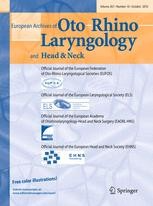
Randomised Controlled Trial
Acupuncture may be an effective supplementary treatment option for patients with olfactory loss.
Drews T, Hummel T, Rochlitzer B, Hauswald B, Hähner A

Systematic Review
The comprehensive evaluation results show that scalp acupuncture is effective in treating insomnia.
Fu-gui Liu, Ai-hua Tan, Chao-qun Peng, Yun-xia Tan, Ming-chao Yao

Systematic Review
Our updated systematic review and meta-analysis suggested that moxibustion has a positive effect on correcting breech presentation.
Liao J-A, Shao S-C, Chang C-T, Chai PY-C, Owang K-L, Huang T-H, Yang C-H, Lee T-J, Chen Y-C
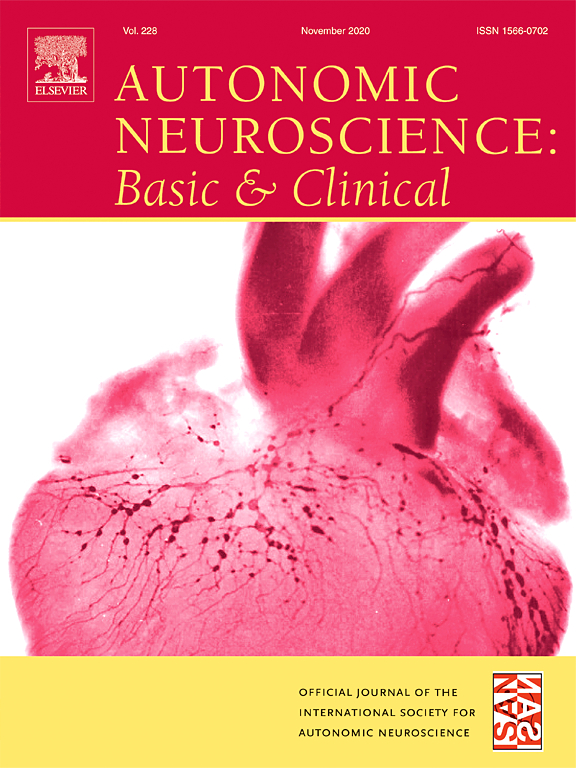
Review Article
Acupuncture, via nerve stimulation, can be a promising treatment strategy for controlling inflammation and improving organ function during sepsis by activating immune reflexes.
Pan WX, Fan AY, Chen S, Alemi SF.

Systematic Review
Acupuncture improves perimenopausal sleep quality and symptoms, potentially a safe alternative or adjunct to hypnotic drugs, requiring further research validation.
Zhao, F.-Y., Fu, Q.-Q., Kennedy, G. A., Conduit, R., Wu, W.-Z., Zhang, W.-J., & Zheng, Z.

Systematic Review
Acupuncture, moxibustion and Chinese herbal medicines are the most commonly used complementary and alternative medicine in the treatment of female infertility.
Feng J, Wang J, Zhang Y, Zhang Y, Jia L, Zhang D, Zhang J, Han Y, Luo S

Systematic Review
Based on the current evidence, acupuncture appears to be beneficial to increase the clinical pregnancy rate in women undergoing in vitro fertilization and embryo transfer.
Wang X, Wang Y, Wei S, He B, Cao Y, Zhang N, Li M
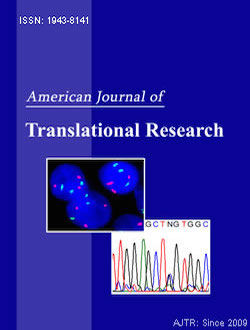
Randomised Controlled Trial
Massage combined with acupuncture can better improve the range of motion of joints and daily living ability of patients with frozen shoulder complicated with cervical spondylosis.
Liu M, Liu Y, Peng C, Wang H, Xu Y, Jiao S, Ding Y

Meta-Analysis
The evidence supports that acupuncture can be considered in the treatment of cough-variant asthma as an adjuvant therapy.
Xiong J, Qi WC, Yang H, Zou ST, Kong J, Wang CL, Zhou YF, Liang FR
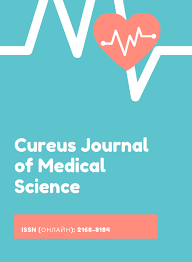
Systematic Review
Acupuncture seems to be an effective method for the long-term reduction of the intensity of headache pain in patients with tension-type headaches.
Kolokotsios S, Stamouli A, Koukoulithras I, Plexousakis M, Drousia G

Randomised Controlled Trial
Women receiving IVF perceived that acupuncture or sham acupuncture gave them a psychological advantage through increased relaxation, reduced psychological stress, and enhanced well-being and self-efficacy.
de Lacey S, Sanderman E, Smith CA

Systematic Review
Acupuncture could improve body mass index, waist-to-hip ratio as well as insulin resistance (HOMA-IR) in patients with PCOS.
Ruqun Zheng, Peng Qing, Mei Han, Jinlong Song, Min Hu, Hongxia Ma, Juan Li
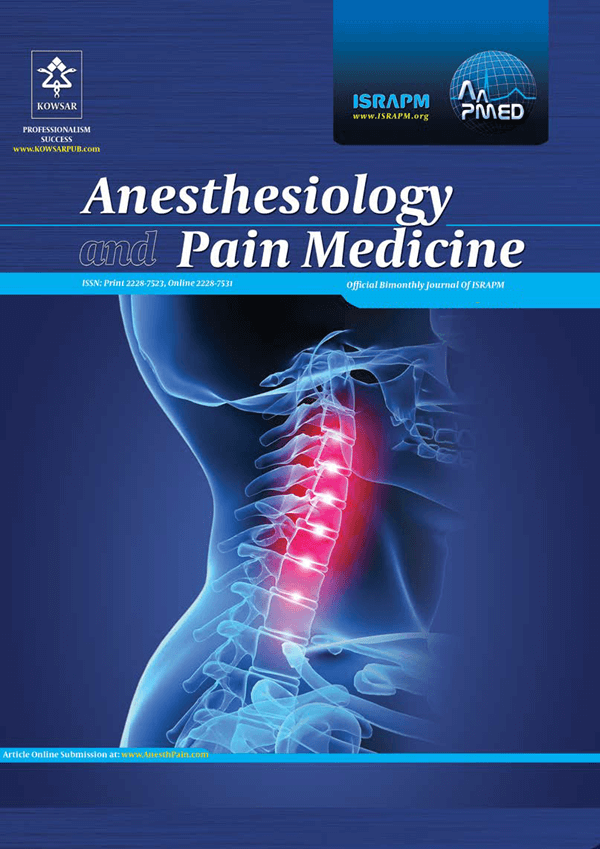
Review Article
Acupuncture is shown to be a beneficial supplementary treatment for chronic abdominal pain, improving patients' quality of life and cutting healthcare costs.
Berger AA, Liu Y, Jin K, Kaneb A, Welschmeyer A, Cornett EM, Kaye AD, Imani F, Khademi SH, Varrassi G, Viswanath O, Urits I

Review Article
Acupuncture has shown promise as a complementary approach in treating chronic abdominal pain, providing symptom relief and improving quality of life.
Berger AA, Liu Y, Jin K, Kaneb A, Welschmeyer A, Cornett EM, Kaye AD, Imani F, Khademi SH, Varrassi G, Viswanath O, Urits I

Review Article
Acupuncture, in its various forms, shows significant potential in alleviating pain and improving shoulder function in patients with rotator cuff disorders.
Choi S, Lee J, Lee S, Yang GY, Kim KH

Systematic Review
Moderate-quality evidence revealed an association between acupressure and greater pain relief compared with physical therapy.
Tao Li , Xiaohui Li ,Fan Huang , Qiang Tian , Z. Y. Fan , and S. Wu

Adding acupuncture to conventional therapy may decrease the subsequent endometriosis risk in female rheumatoid arthritis patients.
Chen Wei-Jen, Livneh Hanoch, Hsu Chien-Hui, Hu Ying-To, Lai Ning-Sheng, Guo How-Ran, Tsai Tzung-Yi

Systematic Review
Acupuncture therapy on patients with recurrent implantation failure can improve the pregnancy outcome of patients. It is a relatively effective treatment with satisfactory safety and suitable for clinical application.
Li, M., Liu, Y., Wang, H., Zheng, S., Deng, Y., & Li, Y.

Systematic Review
Compared with rehabilitation exercise or medication, acupuncture intervention can help alleviate the symptoms of urinary incontinence in middle-aged and elderly women.
Yang N, Ge X, Ye J, Liu Q, Wu Y, Yan H, Han X.
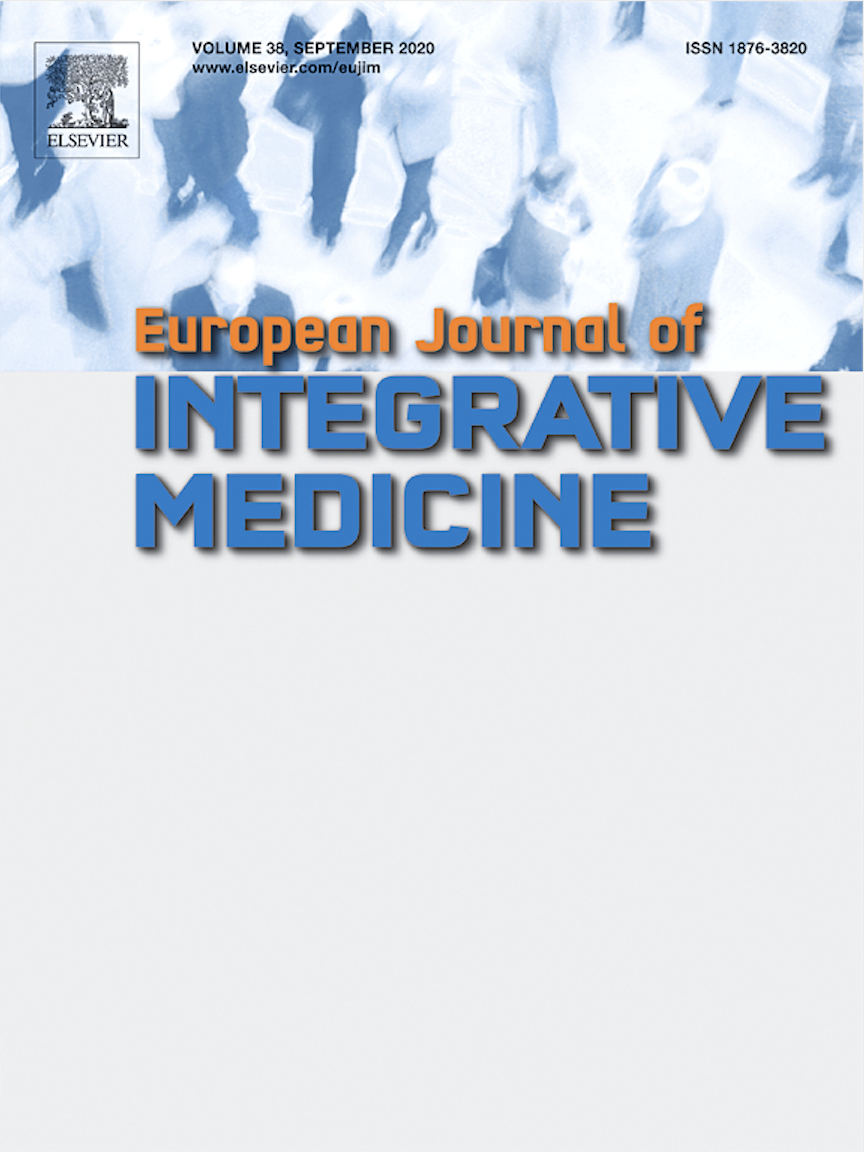
Systematic Review
Acupuncture may have a positive effect on anxiety relief during IVF treatment, while its effect on depression relief is inconclusive.
Ye JY, He YJ, Zhan MJ, Qu F
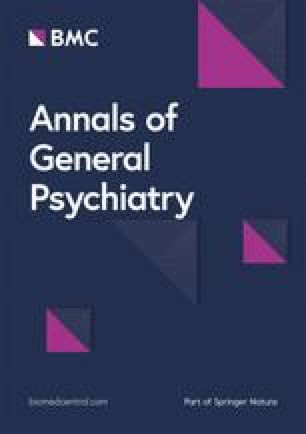
Systematic Review
Acupuncture therapy aimed at reducing anxiety in patients with generalised anxiety disorder has certain beneficial effects compared to controls.
Yang, Xy., Yang, Nb., Huang, Ff. et al.
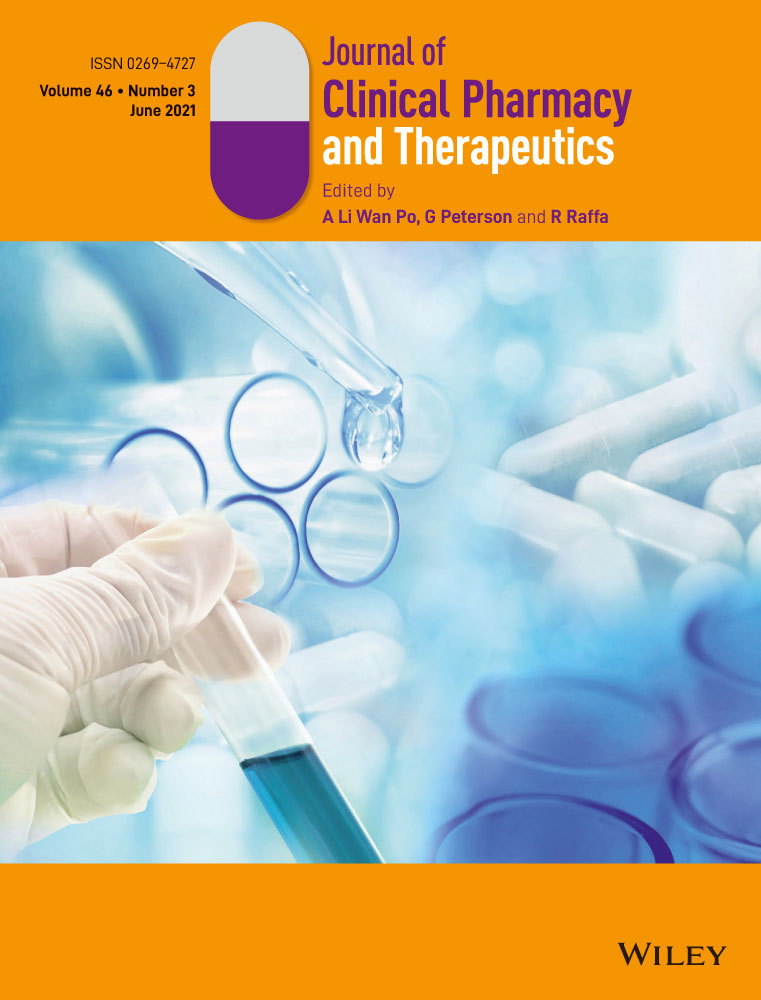
Systematic Review
Acupuncture appears to have an effect on diabetic peripheral neuropathy, effectively improving nerve conduction and clinical symptoms.
Yu B, Li M, Huang H, Ma S, Huang K, Zhong Z, Yu S, Zhang L.

Systematic Review
Acupuncture, when combined with other treatments, is an effective therapy for treating swallowing difficulties experienced after a stroke.
Zhong, L., Wang, J., Li, F., Bao, X., Liu, H., & Wang, P.
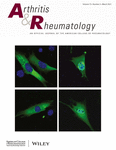
Randomised Controlled Trial
Intensive electroacupuncture appears to reduce pain and improve function in knee osteoarthritis patients more effectively than sham acupuncture.
Tu JF, Yang JW, Shi GX, Yu ZS, Li JL, Lin LL, Du YZ, Yu XG, Hu H, Liu ZS, Jia CS, Wang LQ, Zhao JJ, Wang J, Wang T, Wang Y, Wang TQ, Zhang N, Zou X, Wang Y, Shao JK, Liu CZ

Randomised Controlled Trial
Acupuncture could be as effective as pharmacological drugs for migraine prevention, with improved patient compliance and fewer adverse events.
Giannini G, Favoni V, Merli E, Nicodemo M, Torelli P, Matrà A, Giovanardi CM, Cortelli P, Pierangeli G, Cevoli S
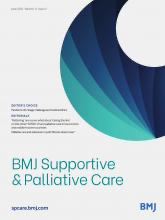
Systematic Review
Acupuncture may be an effective and safe treatment associated with pain reduction in the palliative care of patients with cancer.
Yang J, Wahner-Roedler DL, Zhou X, et al.
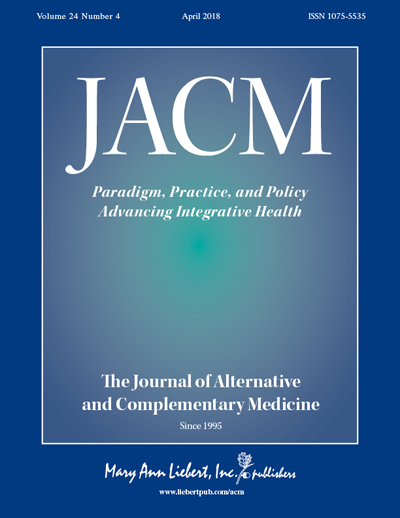
Systematic Review
Acupuncture improves clinical outcomes in uremic pruritus, atopic dermatitis, urticaria, and itch.
Hwang J, Lio PA
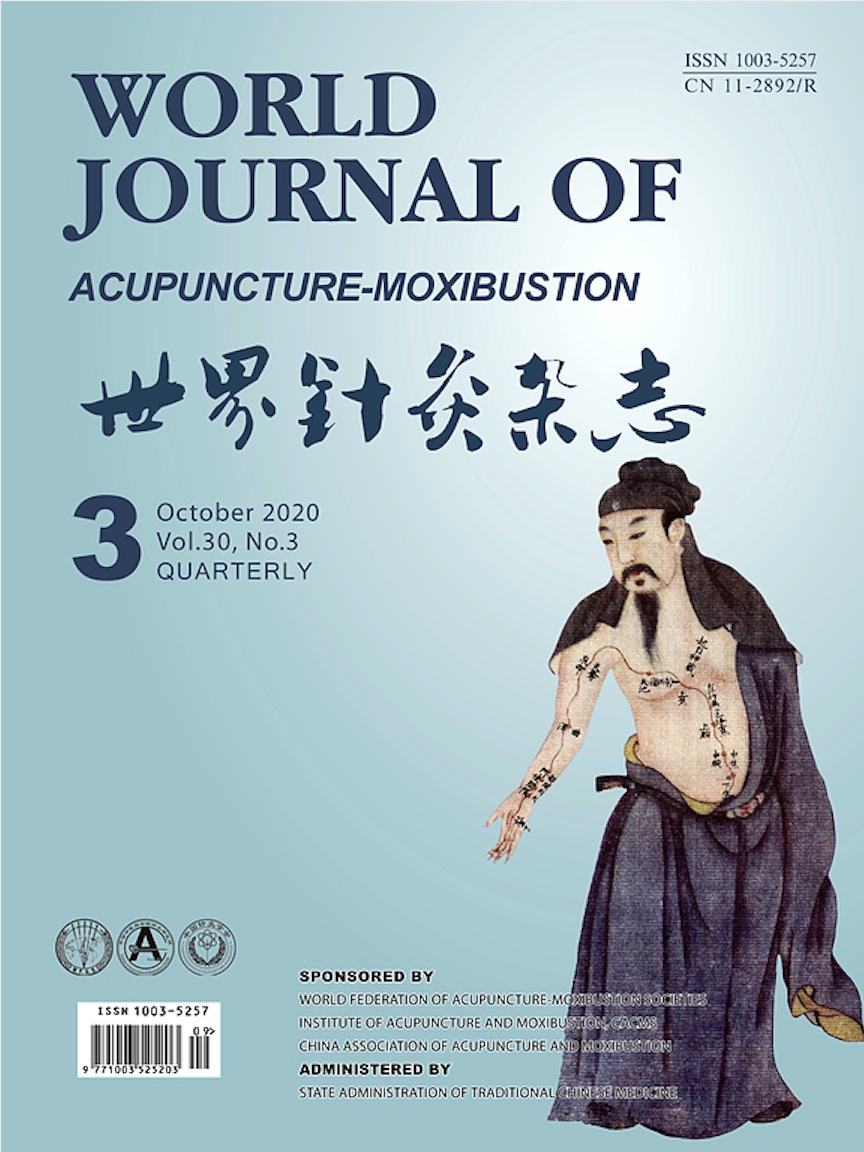
Systematic Review
Acupuncture treatment for postpartum depression is effective and can improve Hamilton Depression (HAMD) Scale, Edinburgh Postnatal Depression Scale (EPDS) and serum estradiol scores.
WANG, J., TAN, L., MEI, Q., ZHENG, Q., YANG, S., & MEI, Z.
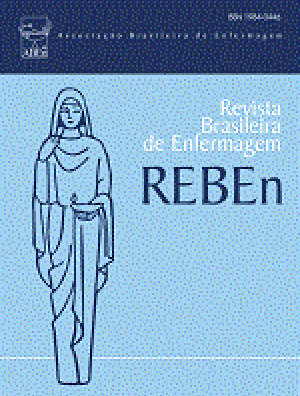
Systematic Review
Acupuncture has a positive effect in improving quality of life, fatigue and sleep in patients with chronic kidney disease.
Melo GAA, Aguiar LL, Silva RA, Pereira FGF, Silva FLBD, Caetano JÁ.

Systematic Review
Acupuncture has beneficial effects on effectiveness, cognitive ability, and activities of daily living in the treatment of dementia.
Shao S, Tang Y, Guo Y, Tian Z, Xiang D, Wu J

Meta-Analysis
Acupuncture treatment has shown to be more beneficial than standard pharmacotherapy for treating attention deficit hyperactivity disorder in children and adolescents.
Chen YC, Wu LK, Lee MS, Kung YL

Systematic Review
Acupuncture combined with rehabilitation was more effective in improving the motor function and the ability of daily living.
Hou, Y., Liu, Y., Li, M., Ning, B., Wen, Z., & Fu, W.

Review Article
Acupuncture may be a clinically effective and safe treatment for Parkinson's disease.
Huang J, Qin X, Cai X and Huang Y

Systematic Review
Acupuncture combined with antidepressants showed a more favourable effect on the treatment of post-stroke depression than antidepressants alone.
Kun Zhang, Guangwei Cui, Yuan Gao, Weidong Shen

Systematic Review
Based on moderate certainty of evidence, we conclude that acupuncture is mildly more effective and much safer than medication for the prophylaxis of migraine.
Giovanardi CM, Cinquini M, Aguggia M, Allais G, Campesato M, Cevoli S, Gentili F, Matrà A and Minozzi S
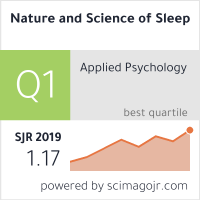
Randomised Controlled Trial
Ten sessions of electroacupuncture can improve the sleep quality of patients with insomnia without serious adverse effects.
Lee B, Kim BK, Kim HJ, Jung IC, Kim AR, Park HJ, Kwon OJ, Lee JH, Kim JH.

Cohort Study
Depressed patients who received acupuncture treatment showed a significantly lower risk of developing Parkinson's disease.
Huang CH, Lin MC, Hsieh CL

Treatments according to traditional Chinese medicine syndrome differentiation can provide patients with individualized treatments for chronic fatigue syndrome.
Zhang X, Wang M, Zhou S
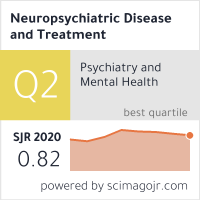
Systematic Review
Acupuncture is associated with a reduction in the risk of depression during long-term follow-up in patients with trigeminal neuralgia.
Liao CC, Lin CL, Liao KR, Li JM

Systematic Review
Compared with western medicine, acupuncture significantly increased the pregnancy and ovulation rates, as well as reducing the rate of miscarriages among Chinese women with infertility.
Zhang, J., He, Y., Liu, Y., Huang, X., & Yu, H.

Systematic Review
The combination of acupuncture and speech rehabilitation training may improve total response rate of stroke patients with dysarthria.
Xie Q, Chen X, Xiao J, Liu S, Yang L, Chen J, Lai J, Lan R, Chen Y, Yang H, Guo X.

Meta-Analysis
Acupuncture at ST25 appears to be more effective than lactulose in the treatment of functional constipation.
Li P, Luo Y, Wang Q, Shu S, Chen K, Yu D, Fan C.

Review Article
Acupuncture appears to be a promising complementary treatment for Alzheimer's disease, according to findings from systematic reviews and meta-analyses.
Huang J, Shen M, Qin X, Wu M, Liang S, Huang Y

Systematic Review
Acupuncture treatment can improve the clinical effectiveness of diarrhea-predominant irritable bowel syndrome or functional diarrhea.
Jianbo Guo, Xiaoxiao Xing, Jiani Wu, Hui Zhang, Yongen Yun, Zongshi Qin, and Qingyong He

Systematic Review
Acupuncture was superior to sham/placebo acupuncture in treating insomnia.
Zhang J, He Y, Huang X, Liu Y, Yu H

Systematic Review
Acupuncture can help relieve short-term pain and recover from dysfunction and has been used as a useful, noninvasive, and conservative modality for managing sports injuries such as lateral meniscus rupture, femoral acetabular impingement, ganglion cysts, and sports hernia.
Lee JW, Lee JH, Kim SY

Systematic Review
Acupuncture could significantly relieve pain and increase cure rate for acute ankle sprain, even producing improved results when combined with other therapies.
Liu AF, Gong SW, Chen JX, Zhai JB
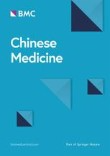
Systematic Review
Our findings revealed that all acupuncture methods are effective and safe for allergic rhinitis. Acupuncture plus conventional medicine are potentially the most effective treatment strategies for allergic rhinitis.
Yin, Z., Geng, G., Xu, G. et al.

Systematic Review
In many studies, acupuncture has been shown to be a safe, efficacious and readily available alternative therapy which may be beneficial to certain migraine patients.
Urits I, Patel M, Putz ME, Monteferrante NR, Nguyen D, An D, Cornett EM, Hasoon J, Kaye AD, Viswanath O.

Systematic Review
Acupuncture is beneficial in the treatment of metabolic syndrome and could serve as an alternative therapy for metabolic syndrome-associated conditions.
Li X, Jia HX, Yin DQ, Zhang ZJ

Systematic Review
The effect of acupuncture on weight loss may be maximized when acupuncture treatment is combined with lifestyle management in patients with overweight.
SeoyoungKim

Experimental Study
Needling at the GB20 acupoint in Traditional Chinese Medicine can reverse the expression of certain genes related to axon development and regeneration in optic neuritis.
Chen J, Zhang L, Gan X, Zhang R, He Y, Lv Q, Fu H, Liu X, Miao L

Systematic Review
Acupuncture could be safe and effective for pain reduction, restoring shoulder function, and restoring flexion range of motion for frozen shoulder patients in the short term and midterm.
Ben-Arie E, Kao PY, Lee YC, Ho WC, Chou LW, Liu HP

Systematic Review
The majority of studies concluded the superiority of short-term analgesic effects over various controls and suggested that acupuncture may be efficacious for chronic musculoskeletal pain.
Zhang YJ, Wang C
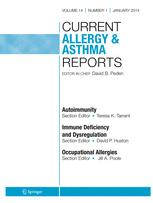
Review Article
Traditional Chinese Medicine, specifically acupuncture, demonstrates promising effects in managing allergic diseases like allergic rhinitis and asthma.
Chan HHL, Ng T

Systematic Review
Acupuncture is more effective than traditional Chinese medicine (TCM) for treating primary dysmenorrhea, offering reliable evidence to support clinical treatment decisions.
Lin J, Liao W, Mo Q, Yang P, Chen X, Wang X, Huang X, Lu D, Ma M, He F, Wu P, Li K, Liang W, Tang H

Randomised Controlled Trial
Electroacupuncture and manual acupuncture show similar effectiveness in relieving plantar heel pain syndrome with no significant difference between the two modalities.
Wang W, Liu Y, Jiao R, Liu S, Zhao J, Liu Z

Randomised Controlled Trial
Combining acupuncture via shu-stream acupoints with the Chinese herbal formulation Dang Gui Yin Zi presents a potentially effective treatment for Chronic Spontaneous Urticaria.
Qin Y, Guo J, Song P, Hou T, He Y, Han M, Yu Q, Lin W, Chen M, Su H

Systematic Review
Auricular acupressure combined with acupuncture showed the highest effectiveness in reducing post-hemorrhoidectomy pain.
Qin D, Zhang AM, Chen M, Tang TC, Du YJ, Zheng H
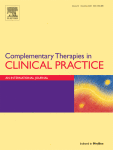
Systematic Review
This review discovered that acupuncture might be a safe and effective adjuvant therapy for individuals with poststroke spastic hemiplegia.
Fan W, Kuang X, Hu J, Chen X, Yi W, Lu L, Xu N, Wang L.

Systematic Review
Acupuncture shows promise in treating postcholecystectomy syndrome.
Yin Z, Xiao Q, Xu G, Cheng Y, Yang H, Zhou J, Fu Y, Chen J, Zhao L, Liang F
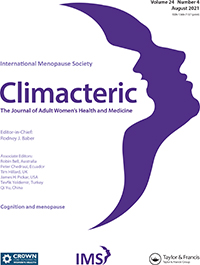
Systematic Review
Menopause symptoms, menopausal hormone therapy (MHT), and acupuncture's efficacy and safety, supported by clinical evidence, with a focus on traditional Chinese medicine practices.
Y. Qin, X. Ruan, R. Ju, J. Pang, G. Zhao & X. Hu
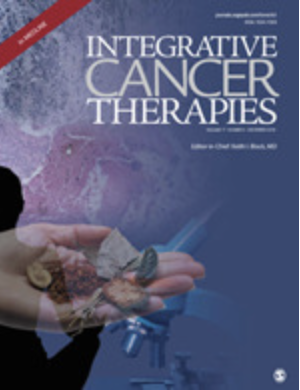
Systematic Review
The pooled results suggested that acupuncture led to moderate improvements in hot flashes, fatigue, and stiffness.
Yuanqing P, Yong T, Haiqian L, Gen C, Shen X, Dong J, Qi C, Miaomiao Q.

Systematic Review
Cupping therapy, as an adjunct to current treatments, may potentially enhance efficacy when treating patients with chronic urticaria.
Xiao, X., Zhang, L., Shi, Y., Yao, J., Cao, W., Liu, Y., Zou, Z., Zhou, S., Chen, M., Li, C., Zheng, Q., & Li, Y.

Systematic Review
Current evidence suggests that acupuncture is an efficient and safe treatment for functional constipation.
Wang, Lu; Xu, Mingmin; Zheng, Qianhua; Zhang, Wei; Li, Ying.

Review Article
Acupuncture therapy seems to decrease frequency and intensity of trigeminal neuralgia pain episodes, alone or in combination with gold standard medications.
Aquino I, Nascimento M, Aquino T, Kosminsky M

Systematic Review
Compared with the sham acupuncture group, the acupuncture group had greater improvements in the frequency of migraine attacks, VAS score, and treatment efficiency.
Ou MQ, Fan WH, Sun FR, Jie WX, Lin MJ, Cai YJ, Liang SY, Yu YS, Li MH, Cui LL, Zhou HH

Systematic Review
Our meta-analysis revealed small-to-moderate analgesic effects of acupuncture on delayed onset muscle soreness, especially on day 1 by comparing the acupuncture and control groups.
Chang WD, Chang NJ, Lin HY, Wu JH
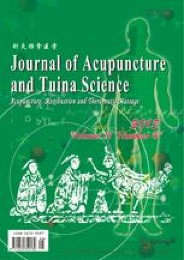
Systematic Review
In the treatment of knee osteoarthritis, the acupuncture group had significant advantages over sham acupuncture or no-acupuncture groups in relieving pain and improving physical function.
Wang, Tt., Liu, Y., Ning, Zy. et al.

Systematic Review
In the treatment of chronic pain with depression, acupuncture could not only achieve better clinical efficacy, but also have higher safety compared with conventional mediation therapy.
Yan B, Zhu S, Wang Y, Da G, Tian G
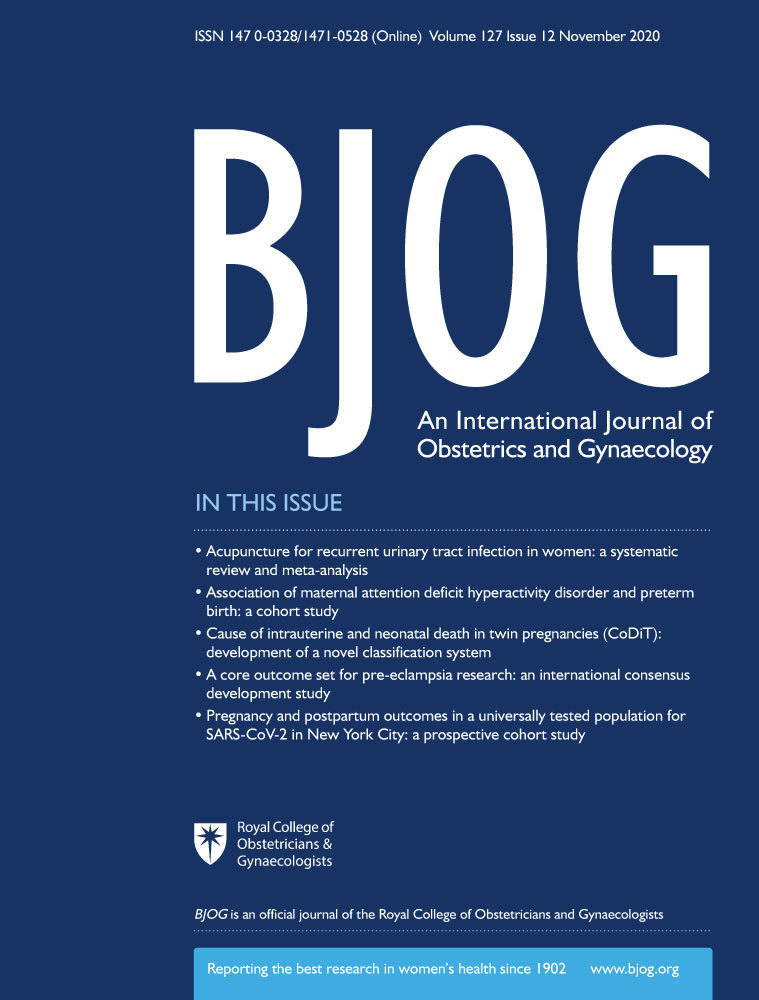
Systematic Review
Acupuncture appeared to be beneficial for treatment and prophylaxis of recurrent urinary tract infections.
Qin X, Coyle ME, Yang L, Liang J, Wang K, Guo X, Zhang AL, Mao W, Lu C, Xue CC, Liu X

Systematic Review
Acupuncture appears to be the least expensive therapeutic modality to deliver long-term in the management of trigeminal neuralgia, and our analysis indicated that it was less stressful to patients than pharmacotherapy or surgery.
Edwards, J. W., & Shaw, V.

Systematic Review
Acupuncture appears more effective than pharmacotherapy or surgery in the management of trigeminal neuralgia.
Edwards, J. W., & Shaw, V.

Systematic Review
Acupuncture plus drug therapy may have a more beneficial effect for Alzheimer's disease patients than drug therapy alone on general cognitive function in the short and medium term and on Activities of Daily Living scores in the medium term.
Wang, Y. Y., Yu, S. F., Xue, H. Y., Li, Y., Zhao, C., & Jin, Y. H.
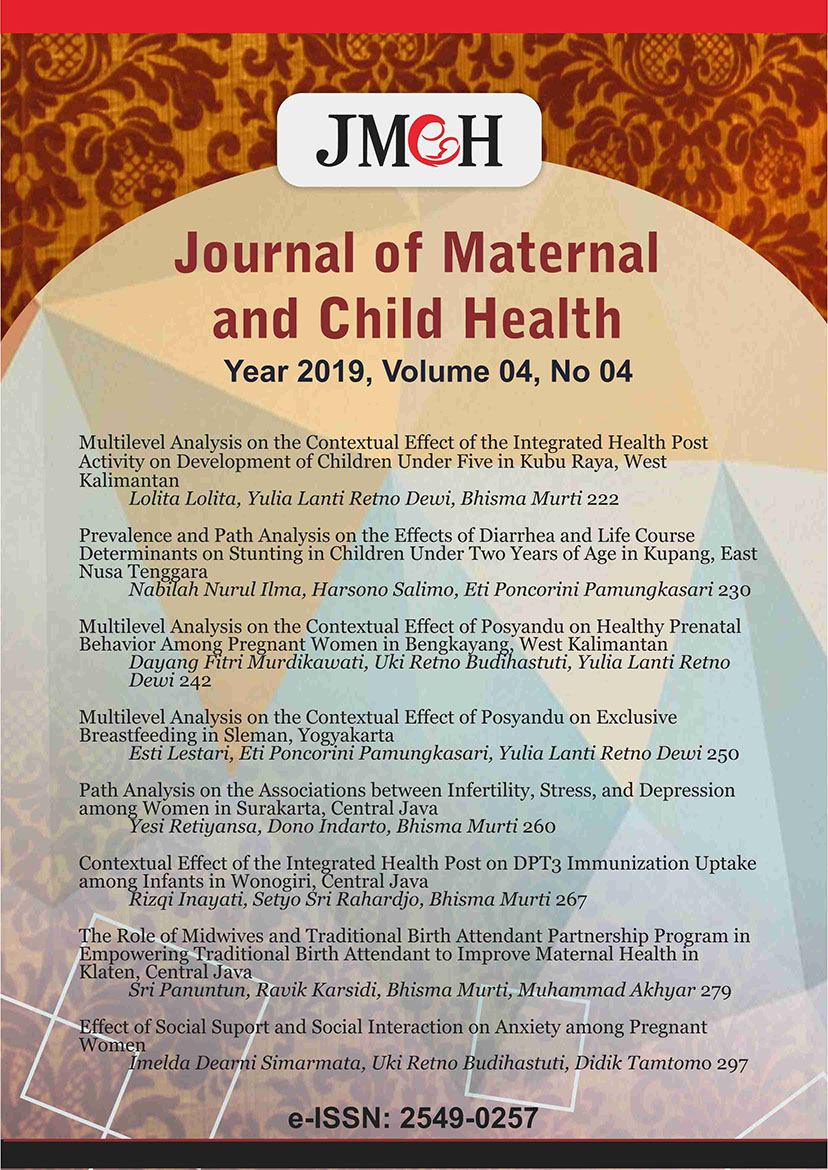
Meta-Analysis
Acupuncture therapy can affect pain reduction in dysmenorrhea patients.
Novitasari, E., Soemanto, R., & Prasetya, H.

Systematic Review
Acupuncture could promote the recovery of menstrual cycles as well as downregulate the levels of LH and testosterone in patients with PCOS.
Wu J, Chen D, Liu N
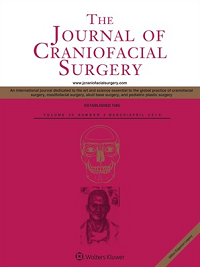
Clinical Study
Electro-acupuncture when added to standard treatment can substantially enhance recovery in Bell palsy patients, reducing paralysis severity and improving nerve function.
Gökçe Kütük S, Özkan Y, Topuz MF, Kütük M
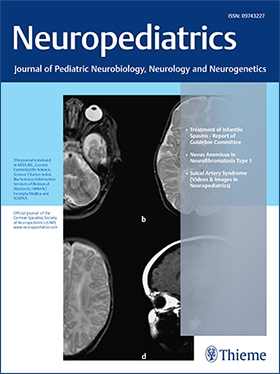
Systematic Review
Acupuncture and electroacupuncture are a therapeutic option for mild to moderate carpal tunnel syndrome with a medium level of scientific evidence, tending towards a high level, and with a medium level of recommendation.
Badia M, Santafé MM

Positive effects of acupuncture and electroacupuncture were observed in regulating gastric motility, gastric accommodation, mental status, gastrointestinal hormones, and central and autonomic functions while improving dyspeptic symptoms and quality of life.
Guo Y, Wei W, Chen JD

Randomised Controlled Trial
Acupuncture was shown to significantly improve the sleep quality in pregnant women, possibly through increasing melatonin secretion.
Foroughinia S, Hessami K, Asadi N, Foroughinia L, Hadianfard M, Hajihosseini A, Pirasteh N, Vossoughi M, Vafaei H, Faraji A, Kasraeian M, Doroudchi M, Rafiee Monjezi M, Roozmeh S, Bazrafshan K.

Systematic Review
This systematic review and meta-analysis provides evidence that acupuncture moxibustion therapy is serviceable and safe in treating breast cancer-related lymphedema.
Huimin Jin, Yuying Xiang, Yuqian Feng, Yiting Zhang, Shan Liu, Shanming Ruan, Huamiao Zhou

Systematic Review
The current evidence suggests that acupuncture and moxibustion is more effective than ibuprofen or Fenbid in the treatment of primary dysmenorrhoea.
Jun Yang, Jun Xiong, Ting Yuan, Xue Wang, Yunfeng Jiang, Xiaohong Zhou, Kai Liao, Lingling Xu

Systematic Review
Acupuncture has been shown to be more effective than vitamin B treatment in terms of clinical efficacy rate for chemotherapy induced peripheral neuropathy.
Hwang MS, Lee HY, Choi TY, et al.

Systematic Review
Acupuncture on treating chronic fatigue syndrome has the advantage for efficacy and safety compared to conventional treatments such as drugs, counselling psychology and physical therapy.
Yin ZH, Wang LJ, Cheng Y, Chen J, Hong XJ, Zhao L, Liang FR.
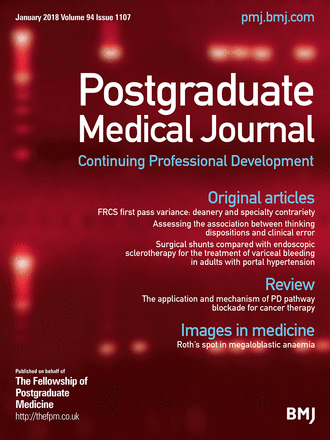
Systematic Review
Acupuncture is an effective therapy for simple obesity rather than a placebo effect.
Zhong YM, Luo XC, Chen Y, Lai DL, Lu WT, Shang YN, Zhang LL, Zhou HY

Systematic Review
Acupuncture may be an effective and safe treatment in obstructive sleep apnea patients.
Liaoyao Wang, Jia Xu, Yijun Zhan, Jian Pei
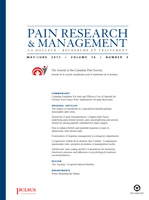
Systematic Review
Acupuncture reduced more headache days and the times of using painkiller and was more effective in reducing the frequency and degree of headache than western medicine and sham acupuncture.
Li YX, Xiao XL, Zhong DL, Luo LJ, Yang H, Zhou J, He MX, Shi LH, Li J, Zheng H, Jin RJ

Systematic Review
Acupuncture appears to be superior to drug or blocking therapy or sham acupuncture therapy for lateral epicondylitis.
Zhou Y, Guo Y, Zhou R, Wu P, Liang F, Yang Z
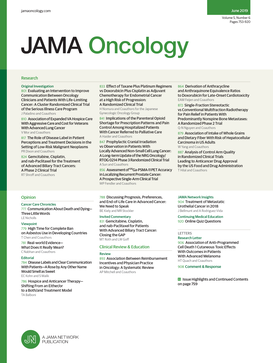
Randomised Controlled Trial
Compared with usual care, acupuncture resulted in significant improvement in chemotherapy-induced peripheral neuropathy symptoms.
Bao T, Patil S, Chen C, et al.
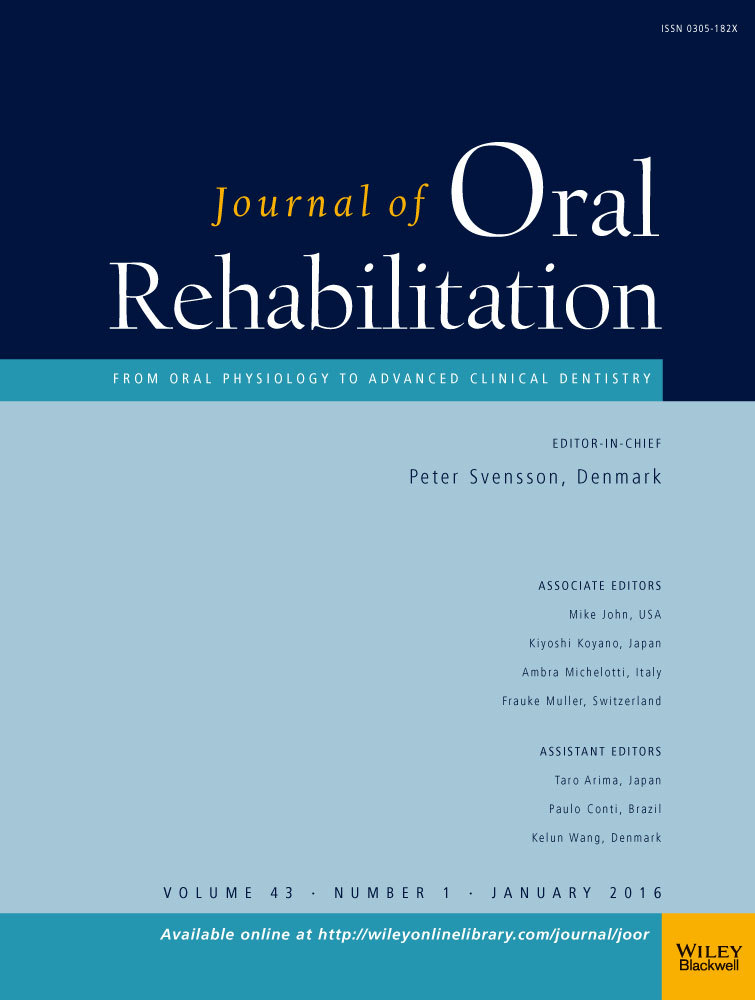
Randomised Controlled Trial
Acupuncture, regardless of whether on specific or non-specific points, substantially decreases non-chronic pain in patients suffering from Temporomandibular Disorders.
Şen S, Orhan G, Sertel S, Schmitter M, Schindler HJ, Lux CJ, Giannakopoulos NN

Systematic Review
Acupuncture at Zusanli (ST36) might be effective in reducing injuries induced by sepsis in various organs by reducing oxidative stress and inflammation.
Lai F, Ren Y, Lai C, Chen R, Yin X, Tan C, Li J, Yang C, Liang G, Li J, Zeng R

Systematic Review
Acupuncture enhances Luteinized Unruptured Follicle Syndrome (LUFS) ovulation, hormone levels, artery characteristics.
Xiaojuan Liu, Wenying Shi, Zhifeng Liu, Shuqing Shi, Chao Ke, Peiming Zhang, Zhenyu Tan, Wei Zhang

Systematic Review
Acupuncture appears to be an effective and safe method to alleviate persistent myofascial head and neck pain.
Farag AM, Malacarne A, Pagni SE, Maloney GE.

Systematic Review
Acupuncture and acupressure for labor pain.
Caroline A Smith,Carmel T Collins,Kate M Levett,Mike Armour,Hannah G Dahlen,Aidan L Tan,Bita Mesgarpour

Systematic Review
The present study indicated that acupuncture had an advantage over hormone replacement therapy in reducing serum FSH level and increasing serum E2 level in women with premature ovarian insufficiency.
Yin, Yq., Xu, Hf., Fang, Yg. et al.
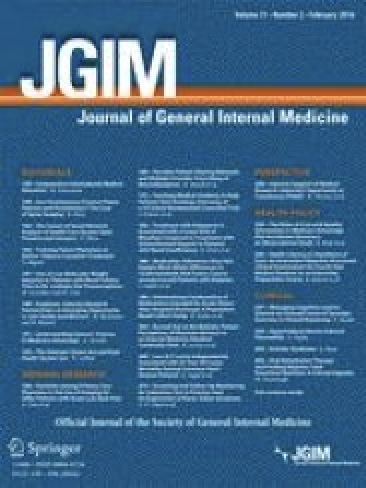
Randomised Controlled Trial
Both individual and group acupuncture therapy delivered in primary care settings reduced chronic pain and improved physical function at 12 weeks.
McKee MD, Nielsen A, Anderson B, Chuang E, Connolly M, Gao Q, Gil EN, Lechuga C, Kim M, Naqvi H, Kligler B
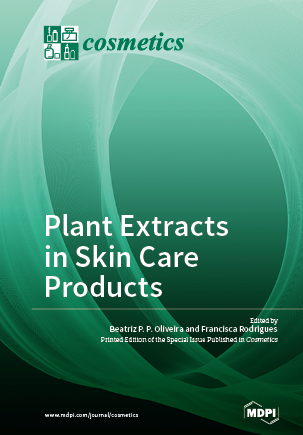
Review Article
Both facial acupuncture and facial exercises have the potential to improve the skin laxity, wrinkle length, muscle thickness, and pigmentary changes associated with aging.
M. Smith, A. Ferris, T. K. Nahar, V. Sharma, M.

Randomised Controlled Trial
Electroacupuncture might provide stronger impact on knee osteoarthritis than manual acupuncture, though both methods are safe and feasible treatments.
Wang TQ, Li YT, Wang LQ, Shi GX, Tu JF, Yang JW, Hou YQ, Lin LL, Sun N, Zhao JJ, Hou HK, Liu CZ

Systematic Review
The use of acupuncture in the management of perimenopausal depression is safe, effective, and offers long-lasting benefits relative to antidepressants and HRT.
Xiao X, Zhang J, Jin Y, Wang Y, Zhang Q

Randomised Controlled Trial
Group acupuncture was noninferior to individual acupuncture for treating cancer pain and was superior in many health outcomes. Group acupuncture is more cost-effective for alleviating cancer pain and should be considered for implementation trials.
Erica Nicole Reed, Jessa Landmann, Devesh Oberoi, Katherine-Ann L. Piedalue, Peter Faris, Linda E. Carlson

Systematic Review
Acupuncture has therapeutic potential in management of cancer-related fatigue for cancer survivors.
Jang A, Brown C, Lamoury G, Morgia M, Boyle F, Marr I, Clarke S, Back M, Oh B
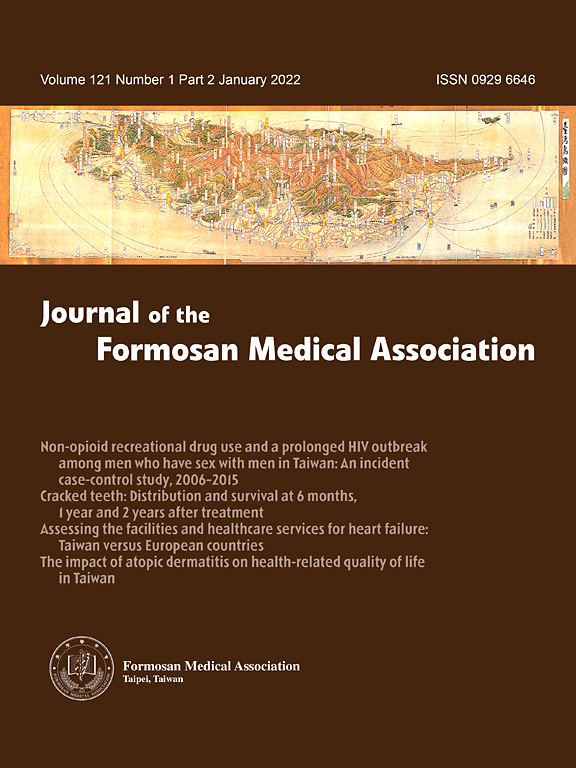
Randomised Controlled Trial
Electroacupuncture plus rehabilitation may provide earlier pain relief for patients with frozen shoulder syndrome and could be applied clinically.
Lo MY, Wu CH, Luh JJ, Wang TG, Fu LC, Lin JG, Lai JS

Systematic Review
Acupuncture treatment of insomnia is efficacious, not because of its placebo effect.
Liu C, Xi H, Wu W, Wang X, Qin S, Zhao Y, Zheng S, Wan Q, Xu L.
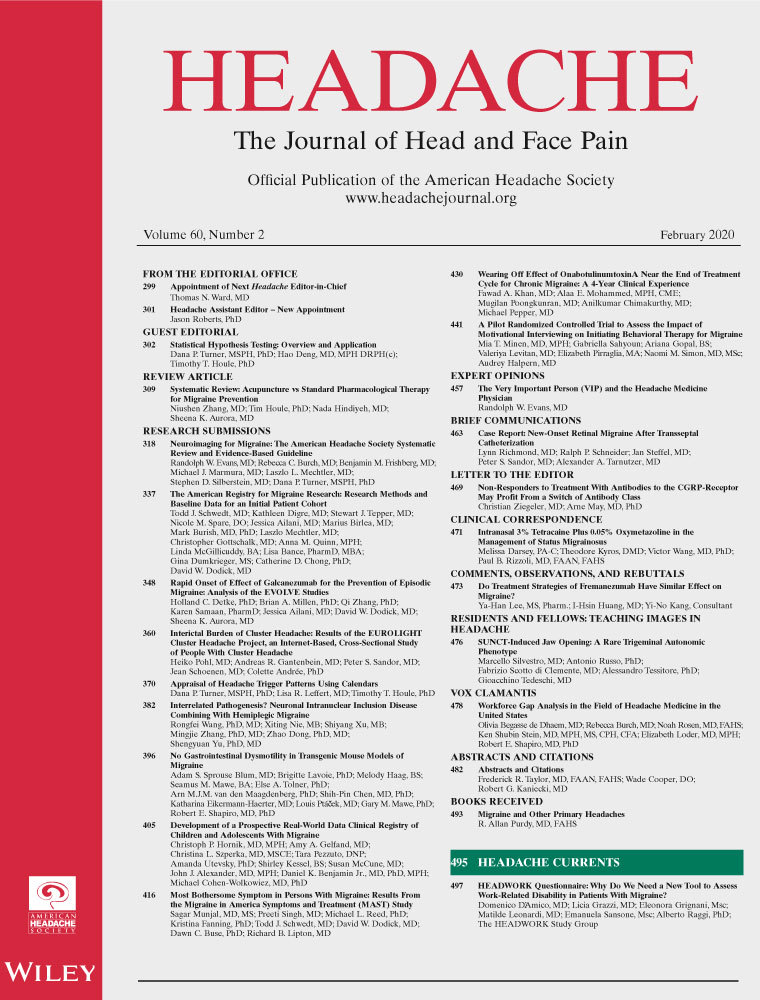
Systematic Review
There is growing evidence that acupuncture is just as effective and has fewer side effects than many of the standard pharmaceutical agents that are currently used.
Niushen Zhang, Tim Houle, Nada Hindiyeh, & Sheena K. Aurora
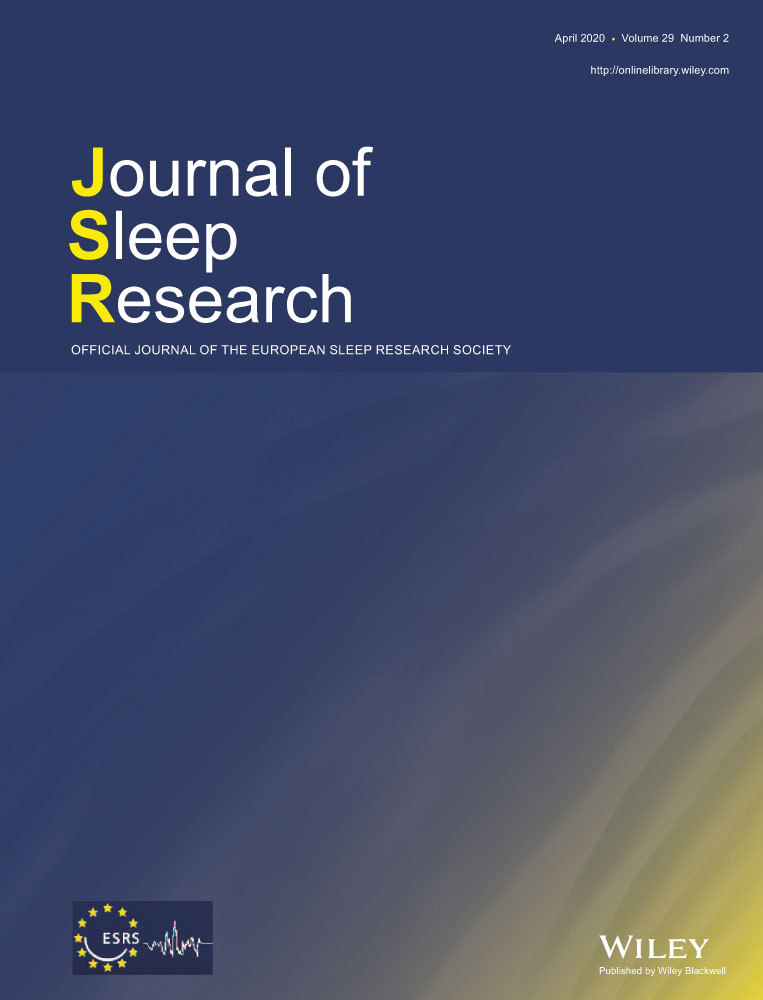
Randomised Controlled Trial
Acupuncture therapy does not impact the severity of Obstructive Sleep Apnea, blood pressure, or quality of life in hypertensive patients.
Silva MVFP, Lustosa TC, Arai VJ, Couto Patriota TLG, Lira MPF, Lins‐Filho OL, Chalegre ST, B.B.A.S. K, Secundo IV, Pedrosa RP

Systematic Review
Acupuncture and/or acupressure was significantly associated with reduced cancer pain and decreased use of analgesics.
He Y, Guo X, May BH, et al.

Systematic Review
Meta-analysis showed that acupuncture was comparable to drugs in the reduction of overactive bladder symptoms.
Mak TC, Chen HY, Cho WC

Systematic Review
Acupuncture could be used as an adjunct in clinical settings to improve efficacy of western medicine for irritable bowel syndrome.
Zheng H, Chen R, Zhao X, Li G, Liang Y, Zhang H, Chi Z

Systematic Review
Acupuncture has the advantage for acute and preventive treatment of migraine in pain improvement and safety.
Xia-tian Zhang, Xin-yi Li, Chen Zhao, Ye-yin Hu, Yi-yi Lin, He-qing Chen, Zhao-feng Shi, Xiao-yu Zhang, Hong-cai Shang, Gui-hua Tian

Systematic Review
Acupuncture significantly alleviated breast cancer treatment-related menopause symptoms for at least 3 months, but not hot flushes.
Chien TJ, Liu CY, Fang CJ, Kuo CY
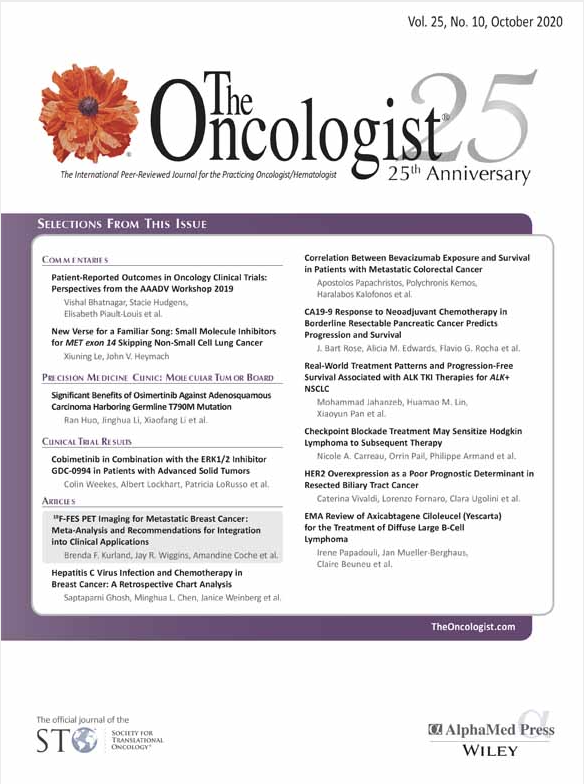
Randomised Controlled Trial
Acupuncture treatment significantly improves neuropathic symptoms in women suffering from chemotherapy-induced peripheral neuropathy after breast cancer therapy.
Lu W, Giobbie-Hurder A, Freedman RA, Shin IH, Lin NU, Partridge AH, Rosenthal DS, Ligibel JA
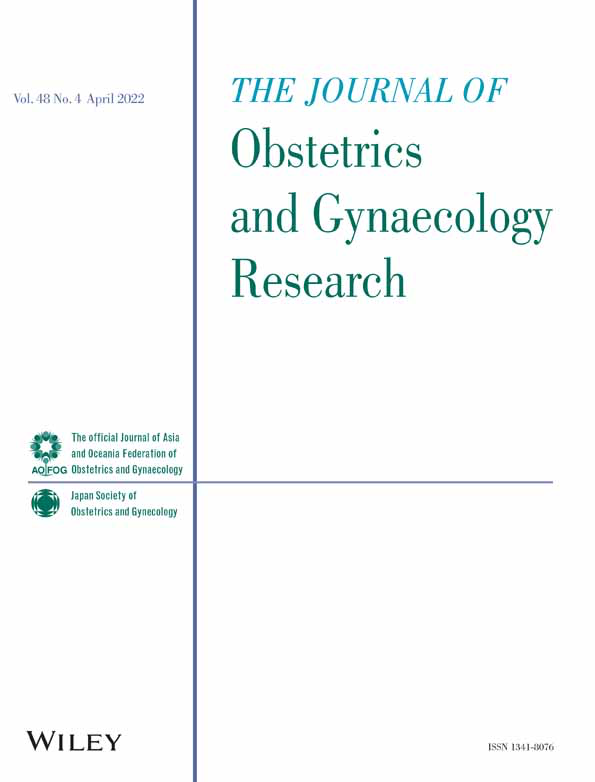
Systematic Review
Acupuncture intervention could significantly improve the treatment outcomes for breast cancer-related lymphedema, regardless of the control treatments used.
Hou W, Pei L, Song Y, Wu J, Geng H, Chen L, Wang Y, Hu Y, Zhou J, Sun J

Systematic Review
The use of acupuncture as a monotherapy significantly improved the rate of pregnancy among the study participants compared with the use of clomiphene citrate alone.
Gao R, Guo B, Bai J, Wu Y, Wu K
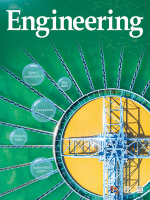
Review Article
In 2017, dozens of Chinese proprietary medicines were employed as rheumatoid arthritis treatments and resulted in good outcomes, according to the National Health Insurance Directory of China.
Hu-DanPana, YaoXiao, Wan-YingWang, Ru-TongRen,Elaine Lai-Han,Leung, LiangLiua

Systematic Review
Acupuncture can significantly increase motor function and daily living ability of individuals who suffer from spinal cord injury, especially acupuncture of the back + front or the head + back.
Feng Xiong , Chenying Fu, Qing Zhang, Lihong Peng , Zejun Liang , Li Chen, Chengqi He,and Quan Wei
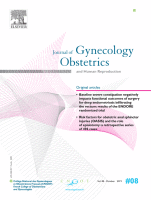
Systematic Review
Acupuncture appears to be beneficial to women with poor ovarian reserve or with previous unsuccessful attempts of in vitro fertilization with embryo transfer.
Gu, Y.-E., Zhang, X., Zhang, Q., Dai, M.-C., Wu, Y., Zhou, Y., & Qu, F.
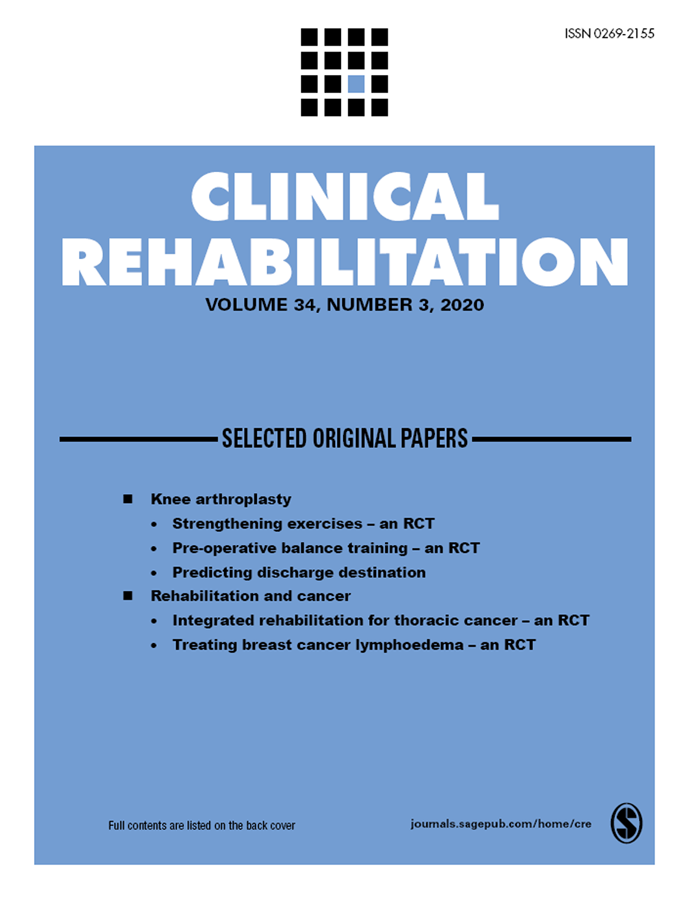
Systematic Review
For both symptom relief and function improvement, manual acupuncture is superior to ibuprofen for carpal tunnel syndrome.
Wu IXY, Lam VCK, Ho RST, Cheung WKW, Sit RWS, Chou LW, Zhang Y, Leung TH, Chung VCH

Systematic Review
Acupuncture might be effective at reducing itch intensity and may be more effective than conventional medicine at reducing eczema area and severity index (EASI) and improving the global symptoms of atopic eczema.
Jiao R, Yang Z, Wang Y, Zhou J, Zeng Y, Liu Z
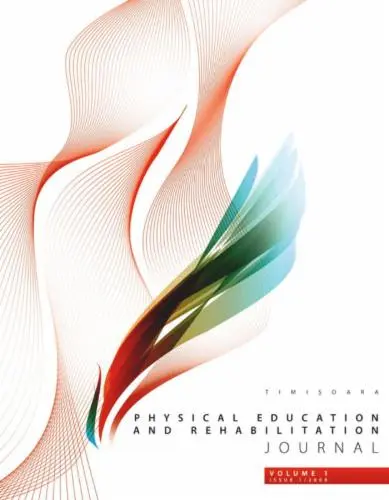
Systematic Review
The results of manual, traditional and non-invasive therapies are similar to those of surgical treatments, and even better in a very large number of cases.
Glazer C, Pantea C

Systematic Review
Acupuncture using pattern identification led to significantly improved total effectiveness rate compared to medication for insomnia.
Kim SH, Jeong JH, Lim JH, Kim BK
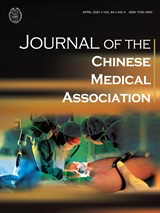
Systematic Review
Traditional Chinese acupuncture seems to be effective in improving some symptoms of postpartum depression.
Tong P, Dong LP, Yang Y, Shi YH, Sun T, Bo P

Review Article
Currently, acupuncture is considered to be a safe, helpful, and available alternative option for patients who have not responded to or complied with conventional pharmacotherapy.
Doll, E., Threlkeld, B., Graff, D., Clemons, R., Mittel, O., Sowell, M. K.

Systematic Review
Acupuncture is effective in the intervention of overweight/obesity in Asians.
Yao J, He Z, Chen Y, Xu M, Shi Y, Zhang L, Li Y.

Systematic Review
Acupuncture shows potential in reducing pain intensity, alleviating anxiety, and improving quality of life for patients suffering from postherpetic neuralgia.
Pei, W., Zeng, J., Lu, L., Lin, G., & Ruan, J.

Systematic Review
Acupuncture and its combined therapy may be effective for treating female infertility, however, the included studies are not robust enough to draw a firm conclusion.
Yun L, Liqun W, Shuqi Y, Chunxiao W, Liming L, Wei Y

Systematic Review
According to high-quality outcomes, acupuncture had more total effective rate, short-term effective rate, and less adverse reactions than western medicine in treating knee osteoarthritis.
Li J, Li YX, Luo LJ, Ye J, Zhong DL, Xiao QW, Zheng H, Geng CM, Jin RJ, Liang FR

Systematic Review
This systematic review shows that the overall effectiveness of acupuncture treatment of premenstrual syndrome is superior to that of sham acupuncture and related medications.
Zhang J, Cao L, Wang Y, Jin Y, Xiao X, Zhang Q

Systematic Review
Acupuncture therapy is an effective and safe treatment for chronic pain-related insomnia.
Fushui Liu, Jianyu You, Qi Li, Ting Fang, Mei Chen, Nana Tang, Xiaojun Yan

Systematic Review
Acupuncture yielded positive results for Alzheimer's Disease as determined via clinical efficacy rate, Mini-Mental State Examination score, Ability of Daily Living Scale score and Alzheimer’s Disease Assessment Scale-Cognition score.
Huang, Q., Luo, D., Chen, L. et al.

Systematic Review
Acupuncture appeared to significantly reduce fatigue severity measured by Chalder's Fatigue Scale and the Fatigue Severity Scale compared with other types of control.
Zhang Q, Gong J, Dong H, Xu S, Wang W, Huang G

Systematic Review
Our analysis finds a benefit of acupuncture for IVF outcomes in women with a history of unsuccessful IVF attempt, and number of acupuncture treatments is a potential influential factor.
Xie Z, Peng Z, Yao B, Chen L, Mu Y, Cheng J, Li Q, Luo X, Yang P, Xia Y

Systematic Review
Acupuncture in conjunction with Chinese medicine has shown a higher efficiency compared to only Chinese medicine in haemorrhoids treatment.
Zeng M, Cheng X, Chen G, Kou J
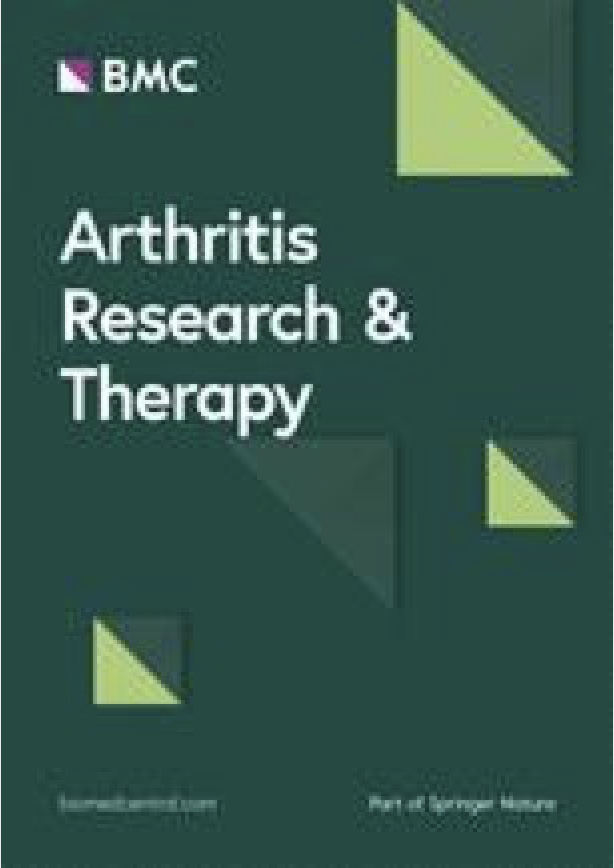
Randomised Controlled Trial
Strong electroacupuncture for at least two weeks improves chronic pain management in knee osteoarthritis patients better than weak or sham electroacupuncture.
Lv, Z., Shen, L., Zhu, B. et al.

Systematic Review
Acupuncture seems to be superior to drug therapy in the treatment of Bell's palsy including cure rate and total effective rate.
Zhang R, Wu T, Wang R, Wang D, Liu Q

Systematic Review
Acupuncture therapy seems effective for motor function, pain relief and activities of daily living in stroke patients with mild Shoulder-Hand Syndrome, when it is used in combination with rehabilitation.
Liu S, Zhang CS, Cai Y, Guo X, Zhang AL, Xue CC, Lu C

Systematic Review
Acupuncture has been presented as an effective intervention for reducing limb oedema in women post breast cancer surgery.
Zhang X, Wang X, Zhang B, Yang S, Liu D.

Systematic Review
Acupuncture as an adjunctive therapy has antihypertensive effect.
Juan Li ,1 Mingsheng Sun ,2 Jing Ye,2 Yuxi Li ,2 Rongjiang Jin ,1 Hui Zheng ,2 and Fanrong Liang 2

Systematic Review
Acupuncture could reduce Hamilton Rating Scale for Depression (HAMD) scores for postpartum depression.
Li W, Yin P, Lao L, Xu S

Systematic Review
Acupuncture shows promise in improving endometrial receptivity and fertility outcomes in infertile women, but further high-quality research is needed to establish its effectiveness definitively.
Zhong, Y., Zeng, F., Liu, W. et al.

Systematic Review
The results of this meta-analysis showed that acupuncture is more effective and safer than medication for migraine.
SHEN, Feng-jiao AU - XU, Jia AU - ZHAN, Yi-jun AU - FU, Qin-hui AU - PEI, Jian PY

Systematic Review
Acupuncture, regardless of the trial design, showed a positive effect on pain-related outcome measures for participants with diabetic peripheral neuropathy.
Nash J, Armour M, Penkala S

Review Article
Evidence indicates that acupuncture treatment may be of benefit in several neuropsychiatric disorders, including depression, anxiety, schizophrenia, and Alzheimer's Disease.
Tu CH, MacDonald I, Chen YH

Systematic Review
We found good evidence that receiving acupuncture for chronic pain is better than not receiving treatment or being placed on a waiting list and reasonable evidence that it is better than conventional or usual care.
Yan-Jiao Chen, Gabriel Shimizu Bassi, Yong-Qing Yang

Systematic Review
Acupuncture is an effective and safe treatment for patients with fibromyalgia. It may be more effective in relieving pain in both the short and long term compared with conventional medication.
Zhang X, Chen H, Xu W, Song Y, Gu Y, Ni G
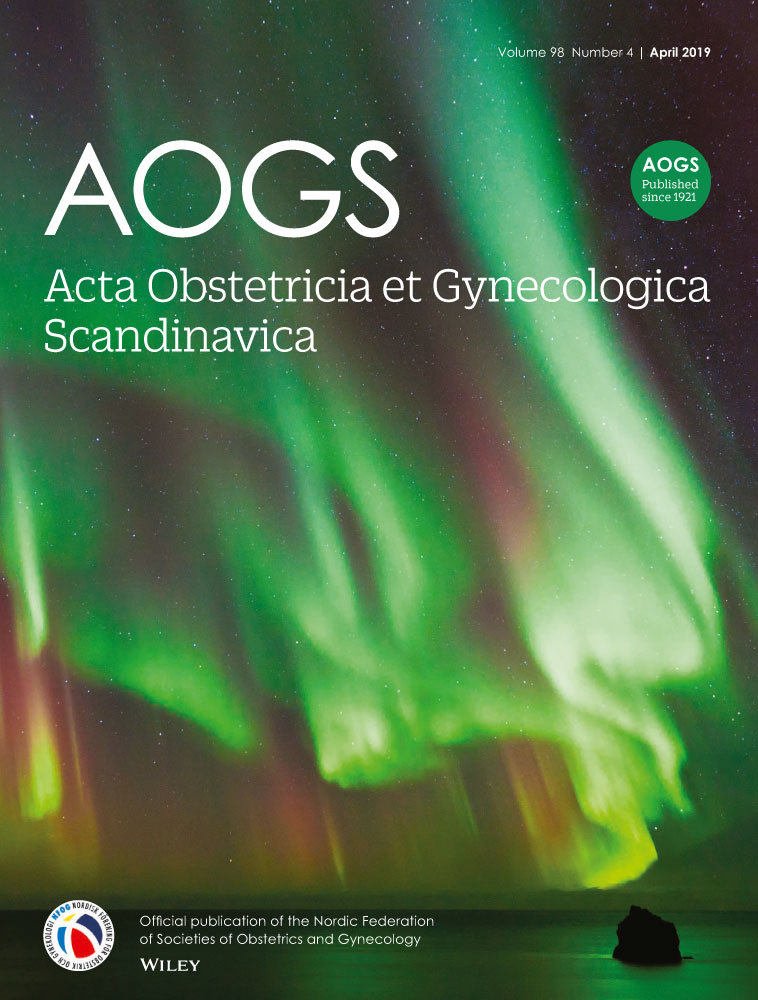
Randomised Controlled Trial
Acupuncture during IVF treatment can possibly lower anxiety at the time of embryo transfer but seems to have no long-term impact on women's quality of life.
Smith CA, de Lacey S, Chapman M, Ratcliffe J, Norman RJ, Johnson NP, Fahey P

Systematic Review
Acupuncture has some effects on asthma, especially as an adjunctive therapy.
Chunxiang Jiang, Lanlan Jiang, Qingwu Qin

Systematic Review
There is moderate evidence of efficacy for acupuncture in terms of pain reduction immediately after treatment for non-specific low back pain ((sub)acute and chronic) when compared to sham or placebo acupuncture.
Xiang Y, He J, Tian H, Cao B, Li R.

Systematic Review
Acupuncture may have a significant effect on clinical pregnancy rates, independent of comparator group, when used in women who have had multiple previous IVF cycles, or where there was a low baseline pregnancy rate.
Smith, C. A., Armour, M., Shewamene, Z., Tan, H. Y., Norman, R. J., & Johnson, N. P.
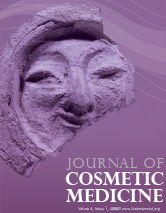
Systematic Review
The safety of cosmetic acupuncture appears tolerable, however, well-designed high-quality studies, are needed to determine its effects on facial cosmetic conditions.
Byung-Cheul Shin & Kyeong-Tae Lim

Systematic Review
Acupuncture relieved hepatic steatosis and reduced total cholesterol and triglyceride in non-alcoholic fatty liver disease patients.
Joon Hyun, Joo-bok Lee, So-yeon Kim, Chang-woo Han

Case Report
Acupuncture for cluster headache may be more effective if treated in the same way as has been shown effective for trigeminal neuralgia.
Simon Hayhoe

Systematic Review
Acupuncture in combination with rehabilitation may have benefits for the treatment of acute and subacute stroke sequelae in comparison with rehabilitation alone.
Vados, L., Ferreira, A., Zhao, S., Vercelino, R., & Wang, S.
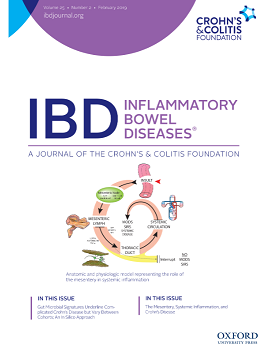
Practice Guideline
Acupuncture has been shown to decrease disease activity and inflammation via increase of vagal activity in inflammatory bowel disease.
Gengqing Song, MD, Claudio Fiocchi, MD, Jean-Paul Achkar, MD

Systematic Review
Warm needling therapy is superior to acupuncture in treating peripheral facial paralysis, providing a therapeutic option for the treatment of peripheral facial paralysis.
CAO J, YUAN A, ZHANG Y, YANG J, SONG X

Randomised Controlled Trial
Acupuncture on back-shu points of five zang, significantly improves both the physical and mental fatigue in chronic fatigue syndrome patients, along with enhancing their psychological status.
CHEN S, LIU R, WU B, CHEN S, GUO F, XUE X, WANG J

Systematic Review
Acupuncture may help to alleviate pain caused by primary dysmenorrhea.
Zhang F, Sun M, Han S, Shen X, Luo Y, Zhong D, Zhou X, Liang F, Jin R
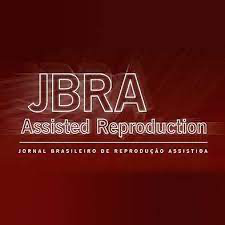
Systematic Review
Acupuncture performed on the day of embryo transfer has a significant effect on embryo implantation, however, a negative one.
Schwarze, J.-E., Ceroni, J. P., Ortega-Hrepich, C., Villa, S., Crosby, J., & Pommer, R.

Systematic Review
Findings indicated reductions in patient symptoms and improvements in biomarkers where acupuncture was used alone or in combination therapy against thyroid-relevant illnesses.
Cheng FK

Systematic Review
Chinese herbal medicine improved depression symptoms and severity compared to antidepressants for postpartum depression.
Yang L, Di YM, Shergis JL, Li Y, Zhang AL, Lu C, Guo X, Xue CC
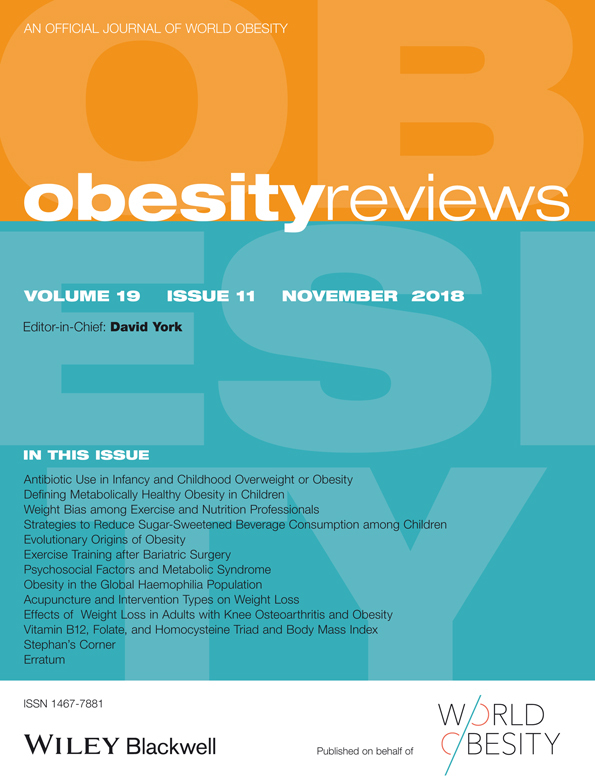
Systematic Review
Unlike herbal medicine and lifestyle modification, acupuncture treatment may be more effective in patients with overweight than in patients with obesity.
Kim SY, Shin IS, Park YJ.
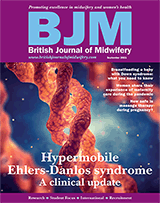
Systematic Review
Acupuncture in postpartum depression was at least as effective as fluoxetine hydrochloride, supporting the notion that acupuncture may be a safe and effective option.
Akari Komori, David Arthur, Samara Radford, Hsiewe Ying Tan, Li Zheng, Mira An, Rika Umeda, and Zhen Zheng

Systematic Review
Acupuncture appears to be effective for postpartum depression with respect to certain outcomes.
Li S, Zhong W, Peng W, Jiang G

Systematic Review
Acupuncture treatment is beneficial in vitro fertilization (IVF) or intracytoplasmic sperm injection (ICSI) for improving the clinical pregnancy, implantation, and live birth outcomes.
Zhang X, Lee MS, Smith CA, Robinson N, Zhou Y, Wu Y, Mao YY, Qu F

Systematic Review
There is potential of acupuncture combined with conventional treatment for treating female chronic pelvic pain.
Sung SH, Sung ADM, Sung HK, An TEB, Kim KH, Park JK
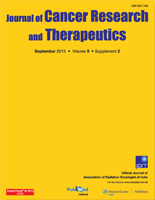
Systematic Review
The use of acupuncture as an adjunct to ameliorate hot flashes is still a relatively sound treatment for breast cancer patients.
Wang XP, Zhang DJ, Wei XD, Wang JP, Zhang DZ.

Systematic Review
Despite some indications of improved clinical pregnancy rates, the overall effectiveness of acupuncture as a treatment for couples with subfertility undergoing assisted reproduction therapy remains inconclusive and requires further high-quality research.
Xi, J., Chen, H., Peng, Z., Tang, Z., Song, X., & Xia, Y.

Systematic Review
Acupuncture may reduce overall mood and physical PMS symptoms when compared to sham. Acupressure may reduce the number of women having moderate to severe PMS symptoms when compared to sham acupressure.
Armour M, Ee CC, Hao J, Wilson TM, Yao SS, Smith CA
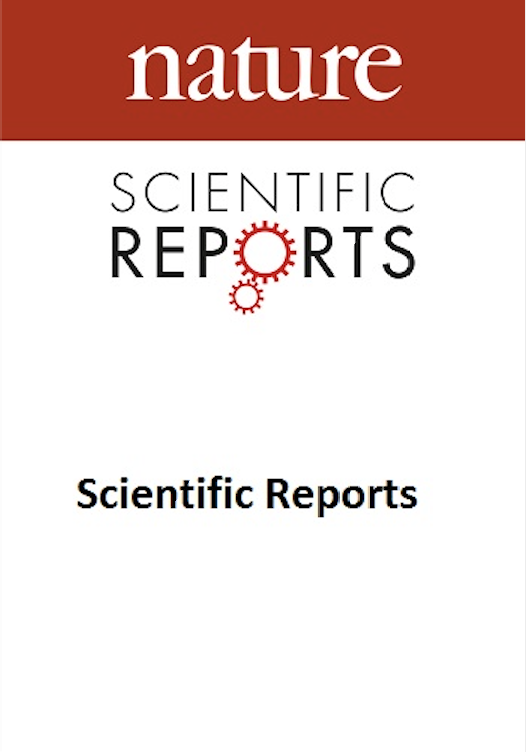
Animal Study
Acupuncture can alleviate PTSD-related depression and anxiety by boosting protein synthesis required for synaptic plasticity via the mTOR pathway in the hippocampus.
Oh JY, Kim YK, Kim SN, Lee B, Jang JH, Kwon S, Park HJ

Systematic Review
There is limited evidence that acupuncture is safe and might be effective in pain relieving for patients with postherpetic neuralgia.
Wang, Yang., Li, Wang., Peng, Weina., Zhou, Jing., Liu, Zhishun

Meta-Analysis
Our meta-analysis provides a new evidence supporting the efficacy and safety of acupuncture in treatment to post-stroke dysphagia in short-term compared with rehabilitation or medication.
Li, Lx., Deng, K. & Qu, Y.

Systematic Review
Acupuncture showed a significant benefit in pain reduction for women with endometriosis as compared with placebo.
Mira, T.A., Buen, M.M., Borges, M.G., Yela, D.A. and Benetti-Pinto, C.L.

Randomised Controlled Trial
Acupuncture appeared to significantly reduce the number of days of antihistamine use while improving rhinitis-specific quality of life and seasonal allergic rhinitis symptoms
Adam D, Grabenhenrich L, Ortiz M, Binting S, Reinhold T, Brinkhaus B

Systematic Review
Acupuncture might reduce menstrual pain and associated symptoms more effectively compared to no treatment or NSAIDs.
Woo HL, Ji HR, Pak YK, Lee H, Heo SJ, Lee JM, Park KS

Systematic Review
In people with hip osteoarthritis, at close to 8 weeks, acupuncture plus routine primary physician care may improve pain and function compared to routine primary physician care alone.
Manheimer E, Cheng K, Wieland LS, Shen X, Lao L, Guo M, Berman BM.

Review Article
Acupuncture effectively manages a range of post-spinal cord injury complications, including motor and sensory dysfunction, pain, neurogenic bowel and bladder, pressure ulcers, spasticity, and osteoporosis.
Qianqian, F., Omer, C., Lize, X., & Yun, X.

Systematic Review
Acupuncture may improve diarrhoea-predominant irritable bowel syndrome better than drugs and has the fewest side effects.
Zhu L, Ma Y, Ye S, Shu Z

Systematic Review
Acupuncture alone is more effective in treating postpartum urinary retention than intramuscular injection of neostigmine, with good safety profile.
Xiao-Mei Wang, Jing Gong, Si-Cong Li, and Mei Han

Systematic Review
Compared with other therapies, acupuncture at ST38 appeared to reach a better therapeutic effectiveness in improving the recovery of shoulder joint mobility.
Yang C, Lv TT, Yu TY, Wong S, Lu MQ, Li YZ

Systematic Review
Acupuncture showed a more favourable effect in the treatment of lumbar disc herniation than lumbar traction, ibuprofen, diclofenac sodium and meloxicam.
Tang S, Mo Z, Zhang R

Systematic Review
Acupuncture alone or combined with other treatment modalities is beneficial to the clinical conditions of rheumatoid arthritis without adverse effects reported and can improve function and quality of life and is worth trying.
Pei-Chi Chou and Heng-Yi Chu

Systematic Review
Current evidence suggests that traditional manual acupuncture integrated with rehabilitation therapy is more effective in alleviating pain, improving limb movement and activities of daily living.
Peng, L., Zhang, C., Zhou, L., Zuo, H. X., He, X. K., & Niu, Y. M. (

Randomised Controlled Trial
Acupuncture may improve symptoms in patients with mild-to-moderate atopic dermatitis.
Smith CA, Armour M, Lee MS, Wang LQ, Hay PJ
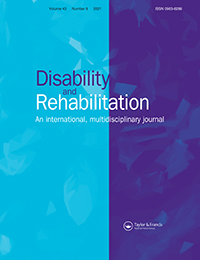
Systematic Review
Standard acupuncture was significantly more effective for restless legs syndrome severity than control conditions.
Harrison EG, Keating JL, Morgan PE.

Systematic Review
Acupuncture has similar efficacy compared to pharmacotherapies for acne vulgaris, however acupuncture interventions reported less adverse effects and may be a treatment option.
Mansu SSY, Liang H, Parker S, Coyle ME, Wang K, Zhang AL, Guo X, Lu C, Xue CCL

Systematic Review
Acupuncture may result in a moderate reduction in the severity of depression when compared with treatment as usual or no treatment.
Smith CA, Armour M, Lee MS, Wang LQ, Hay PJ

Systematic Review
Acupuncture might have effect in decreasing the number of micturition episodes, incontinence episodes, and nocturia episodes.
Zhao Y, Zhou J, Mo Q, Wang Y, Yu J, Liu Z.

Systematic Review
Acupuncture might have effect in decreasing the number of micturition episodes, incontinence episodes, and nocturia episodes.
Zhao Y, Zhou J, Mo Q, Wang Y, Yu J, Liu Z

Acupuncture therapy offered in the group setting was effective in reducing pain severity, pain interference, and depression in patients with chronic neck, back, or shoulder pain or osteoarthritis.
Benjamin Kligler, Arya Nielsen, Corinne Kohrherr,, Tracy Schmid, Eve Waltermaurer, Elidania Perez, Woodson Merrell

Systematic Review
Most studies reviewed concluded that conventional and electroacupuncture could be effective for management of shoulder pain after stroke.
Chau JPC, Lo SHS, Yu X, Choi KC, Lau AYL, Wu JCY, Lee VWY, Cheung WHN, Ching JYL, Thompson DR

Systematic Review
Evidence supports the use of acupuncture for menopause symptoms as an adjunctive or stand-alone treatment for reducing vasomotor symptoms and improving health-related quality of life outcomes.
Befus D, Coeytaux RR, Goldstein KM, McDuffie JR, Shepherd-Banigan M, Goode AP, Kosinski A, Van Noord MG, Adam SS, Masilamani V, Nagi A, Williams JW Jr.

Systematic Review
Patients in both group and individual acupuncture study arms valued the pain relief, improved quality of life, and relaxation experienced during acupuncture.
Chuang, E., Hashai, N., Buonora, M., Gabison, J., Kligler, B., & McKee

Systematic Review
Electroacupuncture can provide considerable immediate analgesia effect for primary dysmenorrhea.
Si-yi Yu, Zheng-tao Lv, Qing Zhang, Sha Yang, Xi Wu, You-ping Hu, Fang Zeng, Fan-rong Liang, Jie Yang
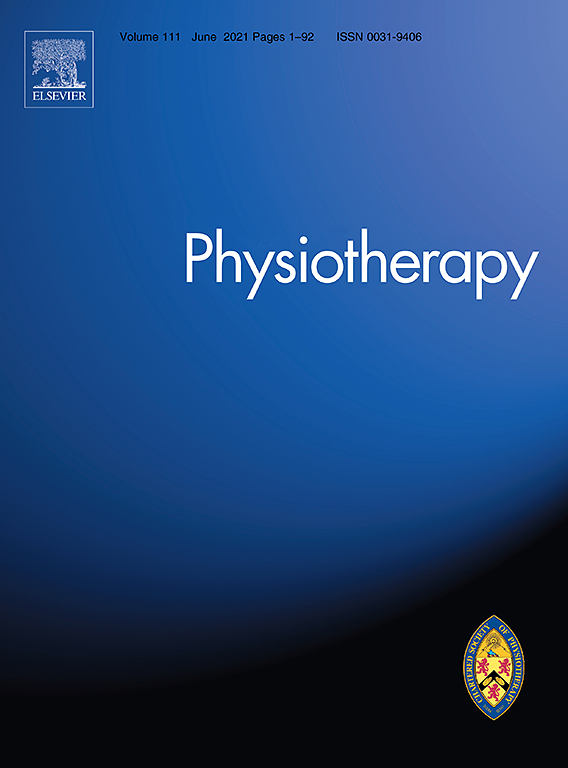
Systematic Review
Acupuncture combined with physiotherapy or exercise was found to be more effective for frozen shoulder than physiotherapy or exercise alone in the short and long term.
A. Rubio M. Mansfield J. Lewis

Systematic Review
Acupuncture-related techniques could be considered as an alternative or adjuvant therapy for psoriasis in short term.
Yeh, M. L., Ko, S. H., Wang, M. H., Chi, C. C., & Chung, Y. C.

Systematic Review
Acupuncture may be effective at relieving chronic knee pain 12 weeks after acupuncture administration.
Zhang Q, Yue J, Golianu B, Sun Z, Lu Y.
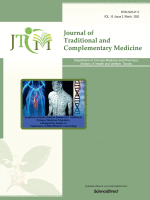
Systematic Review
In oral care, acupuncture can be a supplement to conventional treatments in temporomandibular disorders, facial pain, pain management, Sjoegrens syndrome, and in phobias and anxiety.
Gupta, D., Dalai, D., Swapnadeep, Mehta, P.D., Indra, B., Rastogi, S., Jain, A., Chaturvedi, M., Sharma, S., Singh, S., Gill, S., Singh, N., & Gupta, R. (2014). Acupuncture (針灸 Zhēn Jiǔ) – An Emerging Adjunct in Routine Oral Care. Journal of Tradi
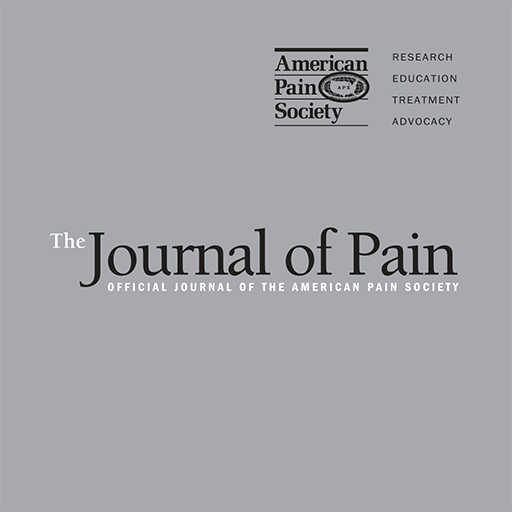
Systematic Review
Acupuncture has a clinically relevant effect on chronic pain that persists over time. Referral for acupuncture treatment is a reasonable option for chronic pain patients.
Vickers, Andrew J. et al.
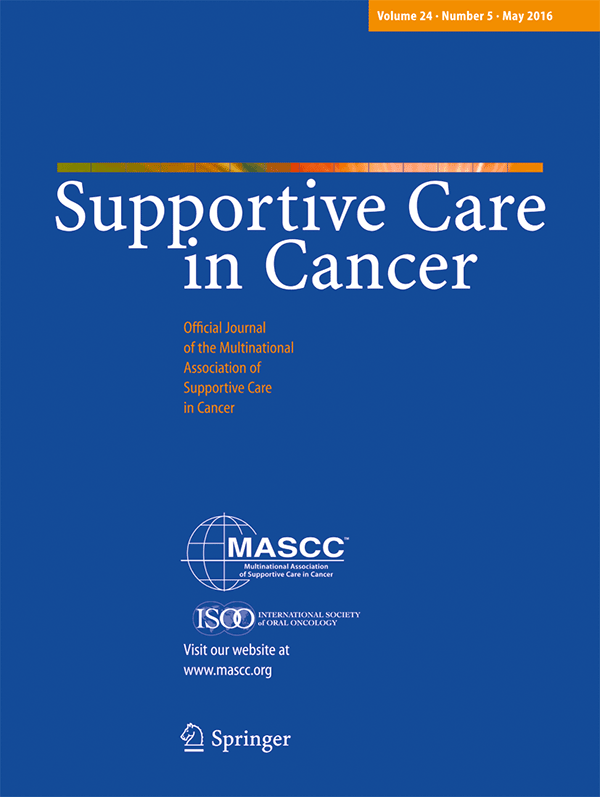
Meta-Analysis
Acupuncture significantly reduces cancer-related fatigue, especially in breast cancer patients and those undergoing anti-cancer treatment.
Zhang, Y., Lin, L., Li, H., Hu, Y., & Tian, L.

Systematic Review
The current literature suggests that acupuncture reduces endometriosis-related pain and serum CA-125 levels, regardless of the control intervention used.
Xu Y, Zhao W, Li T, Zhao Y, Bu H, Song S

Systematic Review
Acupuncture and acupressure show potential for improving cervical readiness and certain birthing outcomes, their impact on reducing caesarean section rates remains inconclusive.
Smith CA, Armour M, Dahlen HG

Systematic Review
Both the total score and the subgroup analysis strongly indicated that acupuncture can alleviate menopause-related symptoms.
Li W, Luo Y, Fu W, Lei R.

Randomised Controlled Trial
The combination of acupuncture and a low dose of gabapentin (300 mg/d) is clinically effective in treating restless legs syndrome and has an additional therapeutic benefit compared to gabapentin alone.
Raissi GR, Forogh B, Ahadi T, Ghahramanpoori S, Ghaboussi P, Sajadi S

Systematic Review
Patients receiving acupuncture combined with western medicine had a superior global symptom improvement compared with those receiving western medicine alone for gastro-oesophageal reflux disease.
Zhu, J., Guo, Y., Liu, S., Su, X., Li, Y., Yang, Y., Hou, L., Wang, G., Zhang, J., Chen, J. J. D., Wang, Q., Wei, R., & Wei, W.
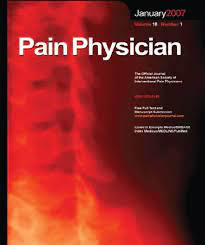
Meta-Analysis
The existing evidence suggests that most acupuncture therapies, including acupuncture combined with other therapies, are effective in decreasing pain and in improving physical function.
Li X, Wang R, Xing X, Shi X, Tian J, Zhang J, Ge L, Zhang J, Li L, Yang K.

Systematic Review
Acupoint-stimulation can relieve pain effectively in the treatment of primary dysmenorrhea and offers advantages compared with treatment by NSAIDs.
Xu, Y., Zhao, W., Li, T. et al.
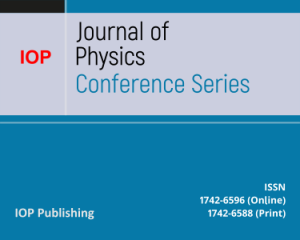
Randomised Controlled Trial
Acupuncture treatment effectively improved the quality of sleep and the quality of life for chronic hemodialysis patients.
J A Widjaja, C Simadibrata, A Srilestari, M B H Marbun

Clinical Study
iRest Yoga Nidra combined with acupuncture significantly improves psychological health in veterans compared to using acupuncture alone.
Wheeler MS, Glass CR, Arnkoff DB, Sullivan P, Hull A

Systematic Review
Acupuncture is non-inferior to hormone therapy or other applied relaxation therapies in alleviating the symptoms of menopause for its safety, non-invasive and especially considering the side effect of hormone therapy.
Chien TJ, Hsu CH, Liu CY, Fang CJ.
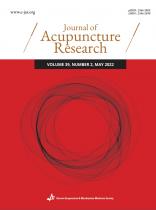
Systematic Review
Acupuncture, moxibustion, and laser acupuncture are effective as conservative therapies for the treatment of De Quervain's Stenosing Tenosynovitis.
Kong HJ, Kang JH, Yun GW, Oh SY, Lee H

Systematic Review
Cupping therapy and acupuncture are potentially safe, and they have similar effectiveness in relieving pain.
Zhang, YJ., Cao, HJ., Li, XL. et al.
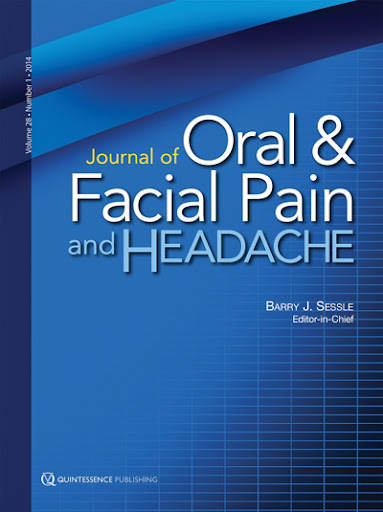
Systematic Review
Acupuncture yielded results similar to those observed in groups treated with occlusal splints for pain in myofascial temporomandibular disorder.
Ana Carla Bezerra De Carvalho Justo Fernandes, DDS, MSc/Dayanne Monielle Duarte Moura, DDS, MSc/Laura Géssica Dantas Da Silva, DDS, MSc/Erika Oliveira De Almeida, DDS, MSc, PhD/Gustavo Augusto Seabra Barbosa, DDS, MSc, PhD
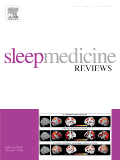
Systematic Review
The severity of primary restless legs syndrome symptoms can be significantly ameliorated by acupuncture.
Xu XM, Liu Y, Jia SY, Dong MX, Cao D, Wei YD.

Systematic Review
Acupuncture may increase the clinical pregnancy rate and ongoing pregnancy rate and decrease the risk of ovarian hyperstimulation syndrome in women with PCOS undergoing IVF or ICSI.
Jo J, Lee YJ

Systematic Review
Acupuncture adjuvant to other active medications could affect hormonal levels such as LH, LH/FSH ratio, testosterone, and fasting insulin in women with polycystic ovarian syndrome.
Jo, J., Lee, Y. J., & Lee, H.

Systematic Review
Acupuncture was more effective than conventional medicine therapy in effectiveness, improvement rate of vertigo and headache, and increased average blood flow velocity of vertebral-basilar artery.
Zhuanzhuan Hou, Shibing Xu, Qinglin Li, Libing Cai, Weigang Wu, Huida Yu, Huade Chen
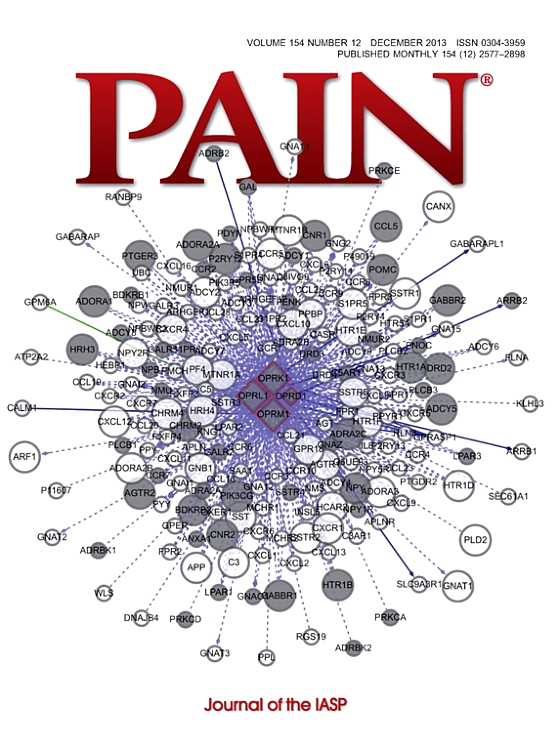
Systematic Review
Patients with chronic pain can generally be reassured that treatment effects persist after a course of treatment with acupuncture.
MacPherson, H; Vertosick, E.A; Foster, N.E; Lewith, G; Linde, K; Sherman, K.J; Witt, C.M; Vickers, A.J
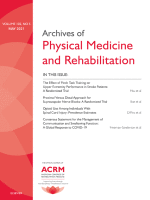
Systematic Review
Electroacupuncture combined with conventional routine care has the potential of reducing spasticity in the upper and lower limbs and improving overall and lower extremity motor function and activities of daily living for patients with spasticity, within 180 days poststroke.
Cai Y, Zhang CS, Liu S, Wen Z, Zhang AL, Guo X, Lu C, Xue CC

Systematic Review
Acupuncture can significantly improve urological symptoms in the short term for men with benign prostatic hyperplasia.
Zhang W, Ma L, Bauer BA, Liu Z, Lu Y

Systematic Review
Acupuncture and moxibustion were found to be more effective than Chinese herbal medicine, western medicine and placebo treatment (sham-acupuncture) in relieving symptoms of chronic fatigue syndrome.
Wang T, Xu C, Pan K, Xiong H.

Randomised Controlled Trial
Our study provides evidence that acupuncture has a specific impact on frozen shoulder beyond the placebo effects that may not only be beneficial in reducing short-term pain perception, but may also have a positive long-term influence on the time course of recovery.
Schröder S, Meyer-Hamme G, Friedemann T, Kirch S, Hauck M, Plaetke R, Friedrichs S, Gulati A, Briem D

Systematic Review
The majority of randomised controlled trials showed benefit for acupuncture over control in the treatment of diabetic neuropathy, Bell's palsy, and carpal tunnel syndrome.
Alexandra Dimitrova, Charles Murchison, and Barry Oken.

Systematic Review
There are potential clinical benefits of acupuncture on PTSD symptoms and functional status immediately post-intervention, as well as PTSD and depressive symptoms in the months following completion of acupuncture treatment.
Grant S, Colaiaco B, Motala A, Shanman R, Sorbero M, Hempel S
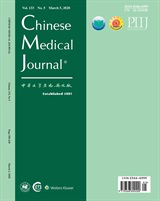
Randomised Controlled Trial
Acupuncture used for weight loss may increase the effectiveness of oral iron supplementation to treat obesity-related iron deficiency.
Xie XC, Cao YQ, Gao Q, Wang C, Li M, Wei SG

Systematic Review
Acupuncture can be adopted as part of a multimodal approach for reducing cancer-related pain.
Chiu HY, Hsieh YJ, Tsai PS.

Systematic Review
Acupuncture therapy is effective in reducing the degree of pain in patients with temporomandibular disorders, especially those with myofascial pain symptoms.
Wu, Jun-Yi MD; Zhang, Chao MD; Xu, Yang-Peng MM; Yu, Ya-Yu MD; Peng, Le PhD; Leng, Wei-Dong PhD; Niu, Yu-Ming PhD; Deng, Mo-Hong PhD

Systematic Review
Our results indicate that acupuncture is an effective treatment for obesity both alone and together with lifestyle modification.
Fang S, Wang M, Zheng Y, Zhou S, Ji G.
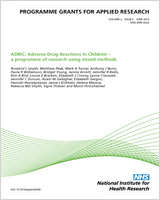
Systematic Review
The programme of research found that acupuncture was more effective than usual care and sham acupuncture for chronic pain, that it was one of the more clinically effective physical therapies for osteoarthritis and that it showed benefits in the treatment of depression.
MacPherson H, Vickers A, Bland M, et al.

Randomised Controlled Trial
For patients continuing to experience depression in primary care, there are statistically significant benefits at 3 months associated with both acupuncture and counselling interventions when provided as adjuncts to usual care.
MacPherson H, Vickers A, Bland M, et al.

Randomised Controlled Trial
Acupuncture therapy can lead to both clinical and morphological improvements in patients with carpal tunnel syndrome.
Ural FG, Öztürk GT

Systematic Review
Acupuncture was superior to either sham acupuncture or medication (including Itopride, Mosapride, and Domperidone) in relieving the major symptoms of functional dyspepsia.
Bo Pang, Tao Jiang, Yuan-Hao Du, Jing Li, Bo Li, Ya-Cai Hu, Qiu-Han Ca
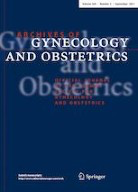
Systematic Review
Acupuncture improves the clinical pregnancy rate among women undergoing IVF and the IVF outcome results were significantly superior in the acupuncture group when acupuncture was conducted during controlled ovarian hyperstimulation.
Qian, Y., Xia, X.-R., Ochin, H., Huang, C., Gao, C., Gao, L., Cui, Y.-G., Liu, J.-Y., & Meng, Y.

Systematic Review
Acupuncture may be recommended for the treatment of chronic prostatitis/chronic pelvic pain syndrome with relatively rare incidence of adverse events.
Qin, Z., Wu, J., Tian, J. et al.

Systematic Review
Acupuncture relieves neck pain better than sham acupuncture and those who received acupuncture report less pain and disability at short‐term follow‐up than those on a wait‐list.
Trinh K, Graham N, Irnich D, Cameron ID, Forget M.

Randomised Controlled Trial
Acupuncture was a feasible intervention and reduced threatened miscarriage symptoms when compared to a touch intervention.
Betts D, Smith CA, Dahlen HG.
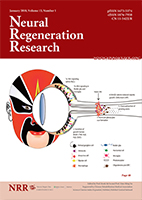
Randomised Controlled Trial
A 14-session course of needling at Fengchi is relatively safe for treating posterior circulation ischemia with vertigo.
Wen Y, Zhang C, Zhao Xf, Deng Sz, He S, Huang Lh, Tian G, Meng Zh

Systematic Review
Acupuncture's acupoint selection for treating PCOS, identifying top acupoints like Sānyīnjiāo (SP 6) and Guānyuán (CV 4). Findings reveal modern acupuncture's alignment with traditional theory, often targeting abdomen and lower limb points, including front-mu, he-sea, matching, and back-shu points.
YU C, KONG L, MA C, SHEN F, YAO GJ, XIONG Y, ZHOU H

Systematic Review
Acupuncture may have beneficial effects on improving dependency, global neurological deficiency, and some specific neurological impairments for people with stroke in the convalescent stage, with no obvious serious adverse events.
Yang A, Wu HM, Tang JL, Xu L, Yang M, Liu GJ.

Systematic Review
The study's analysis of 272 articles comparing Traditional Chinese Acupuncture (TCA) and Sham Acupuncture (SA) for managing hot flashes in menopausal breast cancer patients indicates that while 3 studies leaned towards TCA's effectiveness, 2 showed both interventions to be beneficial.
Carlos, Luís et al.

Systematic Review
We found low-to moderate-quality evidence for the efficacy and safety of acupuncture for recovery after surgery in colorectal cancer patients.
Kim KH, Kim DH, Kim HY, Son GM.

Systematic Review
Acupuncture, in combination with regular rehabilitation, may effectively alleviate poststroke shoulder pain more than rehabilitation alone.
Lee, S.-H., & Lim, S. M.

Systematic Review
Our meta-analysis found that, overall, acupuncture was superior to sham acupuncture in terms of pain relief and disability reduction for patients with musculoskeletal disorders.
Yuan QL, Wang P, Liu L, et al.

Systematic Review
Acupuncture appears to be a potentially effective treatment for reducing hot flashes in women diagnosed with breast cancer.
Chen YP, Liu T, Peng YY, Wang YP, Chen H, Fan YF, Zhang L

Systematic Review
Our results suggest that acupuncture could be effective for treating insomnia after stroke.
Lee SH, Lim SM

Systematic Review
The available evidence suggests that adding acupuncture to symptomatic treatment of attacks reduces the frequency of headaches.
Linde K, Allais G, Brinkhaus B, et al.

Systematic Review
Acupuncture compared to sham/placebo and pharmacotherapy showed statistically significant results for insomnia.
Shergis JL, Ni X, Jackson ML, Zhang AL, Guo X, Li Y, Lu C, Xue CC
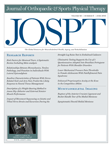
Systematic Review
Acupuncture, specifically needle-based and electroacupuncture, can potentially provide therapeutic benefits for carpal tunnel syndrome, Achilles tendinopathy, and shoulder injuries.
Cox, J., Varatharajan, S., Côté, P., & Optima Collaboration

Systematic Review
Acupuncture and related therapies are effective in reducing pain, fatigue, and in improving quality of life when compared with conventional intervention alone among cancer patients.
Lau CH, Wu X, Chung VC, Liu X, Hui EP, Cramer H, Lauche R, Wong SY, Lau AY, Sit RS, Ziea ET, Ng BF, Wu JC.

Systematic Review
Acupuncture may be used as a complementary therapy for breast cancer survivors experiencing hot flashes and other menopause-related symptoms.
Chiu, Hsiao-Yean; Shyu, Yuh-Kae; Chang, Pi-Chen, Tsai, Pei-Shan

Systematic Review
Both manual acupuncture and electroacupuncture were effective in improving the apnea/hypopnea index and mean SaO2 in the treatment of obstructive sleep apnea.
Zheng-tao Lv, Wen-xiu Jiang, Jun-ming Huang, Jin-ming Zhang, An-min Chen

Systematic Review
The available evidence suggests that a course of acupuncture consisting of at least six treatment sessions can be a valuable option for people with frequent tension-type headache.
Klaus Linde,Gianni Allais,Benno Brinkhaus, Yutong Fei,Michael Mehring,Byung‐Cheul Shin,Andrew Vickers,Adrian R White

Systematic Review
The review found limited consistent evidence supporting the effectiveness of acupuncture for relieving menstrual pain compared to sham treatments or other interventions.
Smith CA, Armour M, Zhu X, Li X, Lu ZY, Song J

Systematic Review
Acupuncture as a complementary therapy may have a potential effect in chronic urinary retention due to spinal cord injury in decreasing postvoid residual urine volume and improving bladder voiding.
Jia Wang, Yanbing Zhai, Jiani Wu, Shitong Zhao, Jing Zhou, Zhishun Liu

Systematic Review
Certain modes of acupuncture improved postoperative pain on the first day after surgery and reduced opioid use. Our findings support the use of acupuncture as adjuvant therapy in treating postoperative pain.
Wu M-S, Chen K-H, Chen I-F, Huang SK, Tzeng P-C, Yeh M-L, et al.

Review Article
Acupuncture could be tried as a complement in the treatment of pain in endometriosis as it is an overall safe treatment.
Lund I, Lundeberg T
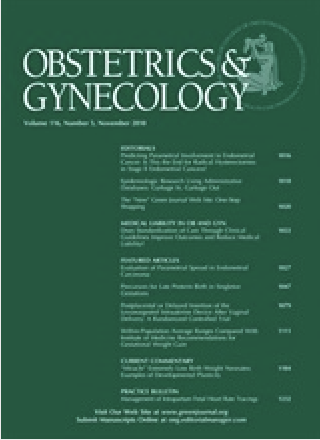
Systematic Review
Acupuncture is associated with a significant reduction in sleep disturbances in women experiencing menopause-related sleep disturbances.
Chiu, Hsiao-Yean RN, PhD; Hsieh, Yu-Jung RN, MSN; Tsai, Pei-Shan RN

Systematic Review
Acupuncture is associated with a significant reduction in sleep disturbances in women experiencing menopause-related sleep disturbances.
Chiu HY, Hsieh YJ, Tsai PS.

Systematic Review
Current evidence supports acupuncture as an effective treatment for chronic prostatitis/chronic pelvic pain syndrome-induced symptoms, particularly in relieving pain.
Qin Z, Wu J, Zhou J, Liu Z.

Randomised Controlled Trial
Traditional Chinese acupuncture can potentially improve olfactory function in patients suffering from postviral olfactory dysfunction who don't respond well to standardized treatments.
Qi Dai, Zhihui Pang, Hongmeng Yu
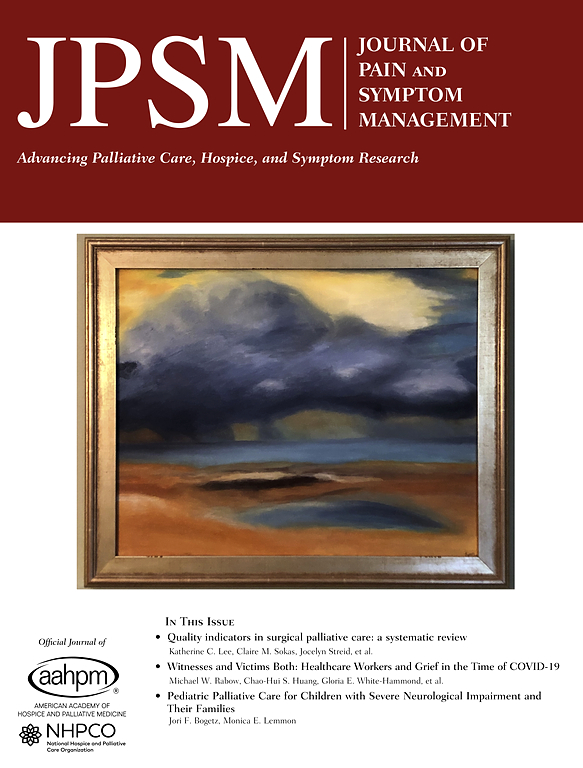
Systematic Review
A tentative conclusion can be reached that acupuncture, tuina, tai chi and qigong represent beneficial adjunctive therapies for cancer patients.
Wei-Wei Tao,Hua Jiang,Xiao-Mei Tao,Ping Jiang,Li-Yan Sha,Xian-Ce Sun

Systematic Review
Acupuncture may have a positive impact on recovering menstrual cycles, reducing BMI, and lowering luteinizing hormone (LH) levels in women with polycystic ovarian syndrome (PCOS).
Qu F, Wu Y, Hu XY, Barry JA, Zhou J, Wang FF, Ye YH, Zhang R, Han SP, Han JS, Li R, Taw MB, Hardiman PJ, Robinson N

Systematic Review
Acupoint application may be a valid complementary and alternative therapy for asthma in adults.
Su L., Meng L., Chen R., Wu W., Peng B., Man L.
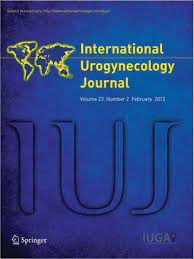
Review Article
Some comparative trials showed the benefit of acupuncture to be comparable with antimuscarinic treatment for overactive bladder.
Forde JC, Jaffe E, Stone BV, Te AE, Espinosa G, Chughtai B.

Systematic Review
Acupuncture is a prospective therapy targeting neurogenesis for ischemic stroke.
Lu, L., Zhang, Xg., Zhong, L. et al.

Systematic Review
There is a low level of evidence that acupuncture may be superior to sham acupuncture, drugs or hormone therapy for managing cancer-related insomnia.
Choi TY, Kim JI, Lim HJ, Lee MS.
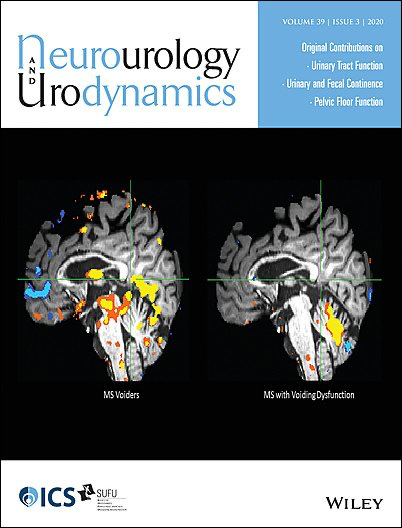
Systematic Review
Acupuncture has promising efficacy for patients with chronic prostatitis/chronic pelvic pain syndrome.
Chang SC, Hsu CH, Hsu CK, Yang SSD, Chang SJ

Systematic Review
Acupuncture may prove effective and safe in relieving symptoms of chronic urticaria.
Yao Q, Li S, Liu X, Qin Z, Liu Z

Systematic Review
Acupuncture therapy is more effective than NSAID in improving clinical efficacy rates and pain scores for treatment of chrondomalacia patellae.
Lv Z.-T.a · Li Z.-Q.b · Zhou X.c · Ma W.-W.d · Zhang J.-M.a · Chen A.-M
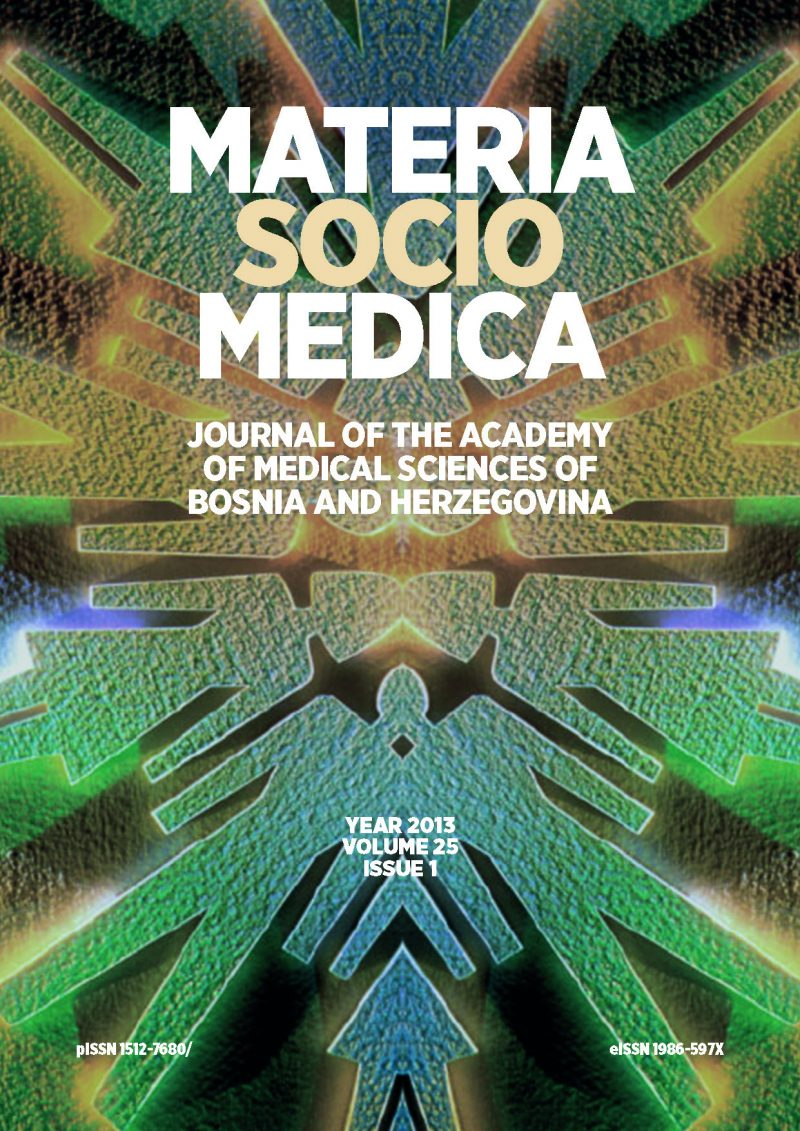
Randomised Controlled Trial
Acupuncture may enhance shoulder movement and relieve pain more effectively than standard treatment in patients suffering from adhesive capsulitis, also known as a frozen shoulder.
Asheghan M, Aghda A, Hashemi E, Hollisaz M

Systematic Review
Acupuncture may be effective in treating the pain associated with sciatica.
Ji M, Wang X, Chen M, Shen Y, Zhang X, Yang J
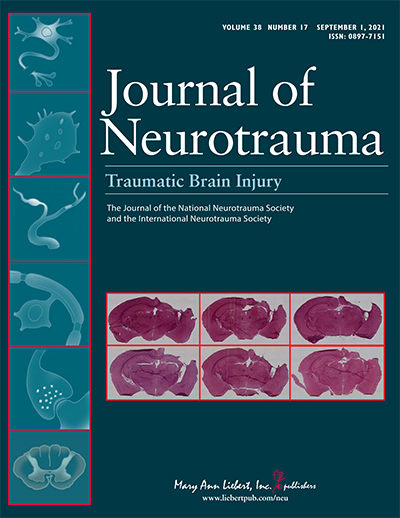
Systematic Review
Acupuncture may have a beneficial effect on neurological recovery, motor function, and functional recovery in spinal cord injury.
Ruijie Ma, Xin Liu, Justin Clark, Gail M. Williams, and Suhail A. Doi
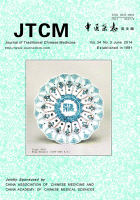
Review Article
Acupuncture, as an adjuvant therapy or monotherapy, can protect and restore dopaminergic neurons, bearing positive implications for the Parkinson's disease treatment.
Danqing X

Systematic Review
The use of acupuncture may be more effective than drugs and may enhance the effect of drugs for patients with sciatica.
Zongshi Qin, Xiaoxu Liu, Jiani Wu, Yanbing Zhai, Zhishun Liu,

Randomised Controlled Trial
Four weeks of acupuncture treatment is a safe and effective option for clinical management of seasonal allergic rhinitis in the Melbourne area for patients' symptom relief and quality of life improvement.
Xue CC, Zhang AL, Zhang CS, DaCosta C, Story DF, Thien FC

Systematic Review
Acupressure showed evidence of pain relief while acupuncture improved both the mental and the physical components of quality of life associated with primary dysmenorrhea.
Abaraogu UO, Tabansi-Ochuogu CS

Randomised Controlled Trial
Short-term acupuncture treatment is more effective than ibuprofen for mild to moderate carpal tunnel syndrome.
Hadianfard M, Bazrafshan E, Momeninejad H, Jahani N.

Systematic Review
There is moderate‐quality evidence from individual studies suggesting that acupuncture improved pelvic pain more than usual prenatal care.
Liddle SD, Pennick V

Systematic Review
Acupuncture improves outcome measures in the treatment of dermatitis, chloasma, pruritus, urticaria, hyperhidrosis, and facial elasticity.
Ma, C., & Sivamani, R. K.

Systematic Review
Acupuncture can be safely applied as an alternative, adjuvant treatment in clinical practice to treat sleep disorders in postmenopausal women.
Bezerra AG, Pires GN, Andersen ML, Tufik S, Hachul H.
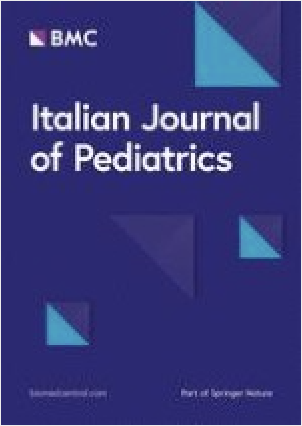
Systematic Review
Acupuncture may have a beneficial effect with respect to peak expiratory flow in children with asthma.
Liu, C.F., Chien, L.W.

Systematic Review
There is evidence of efficacy of acupuncture as an adjunctive therapy to western medicine for treating hypertension.
Zhao XF, Hu HT, Li JS, Shang HC, Zheng HZ, Niu JF, et al

Review Article
Acupuncture has the potential to treat gastrointestinal (GI) disorders by regulating GI motility, the GI barrier, visceral sensitivity, and the brain-gut axis.
Li H, He T, Xu Q, Li Z, Liu Y, Li F, Yang BF, Liu CZ.

Systematic Review
Acupuncture seems to be an effective add-on treatment in patients with depression and, to a lesser degree, in patients with schizophrenia.
Bosch P, van den Noort M, Staudte H, Lim S.

Clinical Study
Acupuncture demonstrates a significant immediate effect in reducing discomforts and VAS of both dizziness and vertigo.
Chiu, CW., Lee, TC., Hsu, PC. et al.

Systematic Review
We cautiously suggest that acupuncture therapy could demonstrate better clinical efficacy than pharmacological treatment or placebo treatment in treating nocturnal enuresis.
Lv ZT, Song W, Wu J, et al.

Systematic Review
Acupuncture has been found potentially more effective than drugs in improving cognitive function and daily life in Alzheimer's disease patients, while also demonstrating safety.
Zhou, J., Peng, W., Xu, M., Li, W., & Liu, Z.
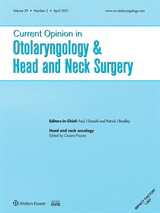
Systematic Review
There are high-quality randomized controlled trials that demonstrate efficacy and effectiveness for acupuncture in the treatment of both seasonal and perennial allergic rhinitis.
Malcolm B. Tawa, William D. Reddyb, Folashade S. Omolec, and Michael D. Seidmand

Systematic Review
The majority of trials demonstrate a positive effect of acupuncture over control condition in the treatment of neuropathy.
Alexandra Dimitrova, Charles Murchison, Barry Oken

Systematic Review
Acupuncture may impact Luteinized Unruptured Follicle Syndrome (LUFS) by lowering FSH, increasing E2, and resuming menstruation.
Jo J, Lee YJ, Lee H

Systematic Review
Acupuncture proves to be a promising alternative therapy for treating Bell's palsy, despite some controversy surrounding its use.
Li, P., Qiu, T., & Qin, C.
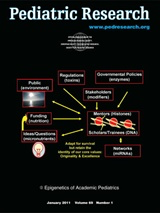
Systematic Review
The efficacy of acupuncture for some pediatric conditions is promising, such as for cerebral palsy, nocturnal enuresis, tic disorders, amblyopia, and pain reduction.
Chunsong Yang, Zilong Hao, Ling-Li Zhang & Qin Guo

Systematic Review
Acupuncture is effective for ameliorating itch intensity in itch-related diseases.
Chi Yu, Pei Zhang, Zheng-Tao Lv, Jing-Jing Li, Hong-Ping Li, Cai-Hua Wu, Fang Gao, Xiao-Cui Yuan, Jing Zhang, Wei He, Xiang-Hong Jing, Man Li,
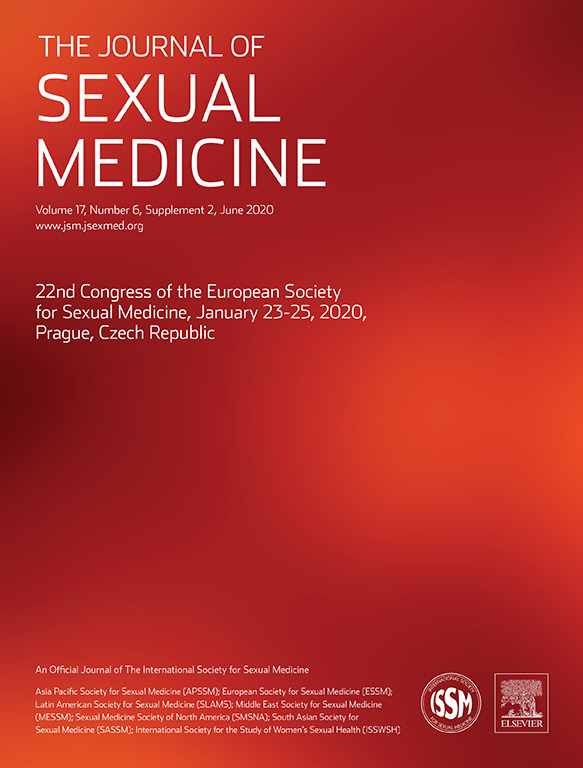
Randomised Controlled Trial
Acupuncture appeared to reduce vulvar pain and dyspareunia with an increase in overall sexual function for women with vulvodynia.
Schlaeger JM, Xu N, Mejta CL, Park CG, Wilkie DJ

Practice Guideline
Clinicians may offer acupuncture, or refer to a clinician who can offer acupuncture, for patients with allergic rhinitis who are interested in nonpharmacologic therapy.
Seidman MD et al.
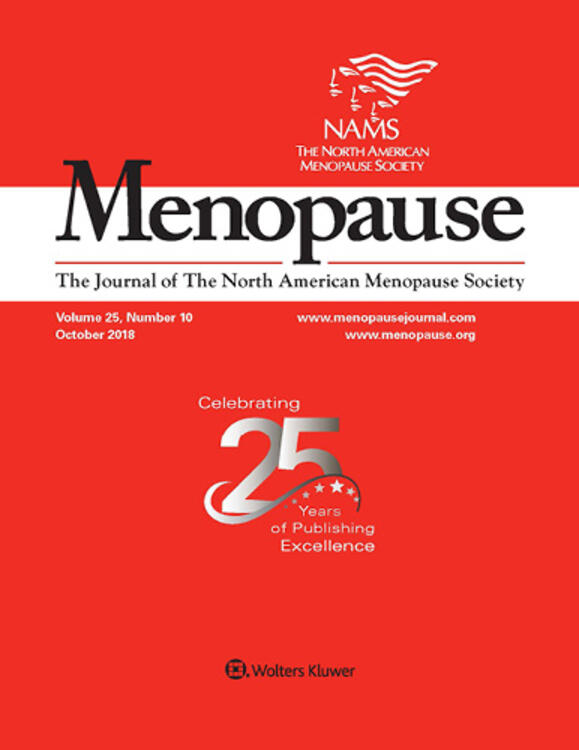
Systematic Review
Acupuncture improves hot flash frequency and severity, menopause-related symptoms, and quality of life (in the vasomotor domain) in women experiencing natural menopause.
Chiu HY, Pan CH, Shyu YK, Han BC, Tsai PS.

Systematic Review
Acupuncture, either used in isolation or as an adjunct to conventional therapy, provides short-term improvements in pain and function for chronic low back pain.
Liu L, Skinner M, McDonough S, Mabire L, Baxter GD.
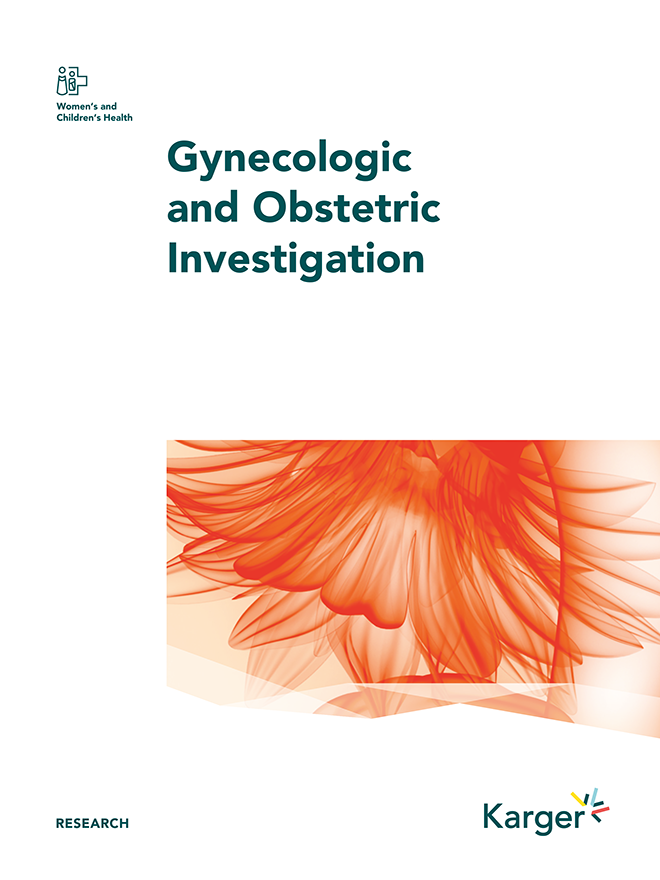
Systematic Review
We found pooled benefit of acupuncture for IVF when performed at follicle phase and 25 min before and after embryo transfer, as well as 30 min after embryo transfer and implantation phase.
Shen C.,Wu M., Shu D., Zhao X. and Gao Y.

Meta-Analysis
Our meta-analysis suggests that that acupuncture could be a safe and valid treatment option for allergic rhinitis patients.
Feng S, Han M, Fan Y, Yang G, Liao Z, Liao W, Li H

Systematic Review
Acupuncture therapies demonstrate some potential benefits in treating psoriasis vulgaris, despite conflictions in individual study results.
Coyle M, Deng J, Zhang AL, Yu J, Guo X, Xue CC, Lu C

Meta-Analysis
Current evidence provisionally demonstrates that acupuncture treatment is superior to either non-acupuncture or conventional therapy for cerebral infarction.
Li Li, Hong Zhang , Shu-qing Meng, Hai-zhou Qian
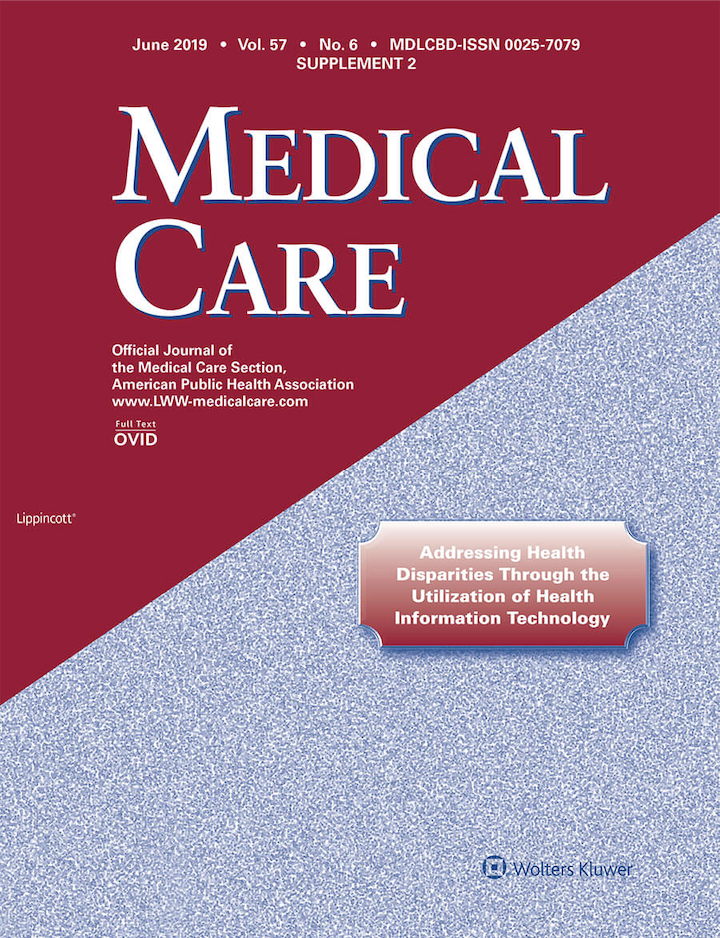
Randomised Controlled Trial
Improvement in post traumatic stress disorder severity was significantly greater among those receiving acupuncture than in those receiving usual PTSD care.
Engel CC, Cordova EH, Benedek DM, Liu X, Gore KL, Goertz C, et al.

Randomised Controlled Trial
Acupuncture is cost-effective compared with counselling or usual care alone in treating patients with depression.
Spackman, E., Richmond, S., Sculpher, M., Bland, M., Brealey, S., Gabe, R., Hopton, A., Keding, A., Lansdown, H., Perren, S., Torgerson, D., Watt, I., & MacPherson, H.
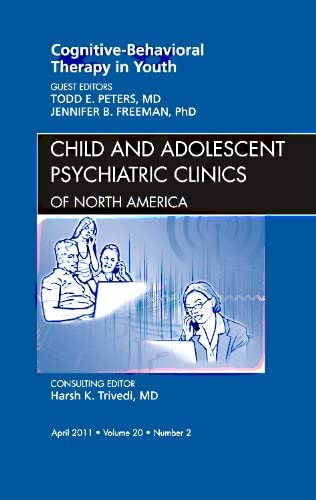
Review Article
Traditional Chinese medicine can be effective in diagnosing and treating attention-deficit/hyperactivity disorder, offering an alternative to Western pharmacologic treatment.
Ni X, Zhang-James Y, Han X, Lei S, Sun J, Zhou R

Systematic Review
The use of acupuncture for osteoarthritis is associated with significant reductions in pain intensity, improvement in functional mobility and quality of life.
Manyanga, T., Froese, M., Zarychanski, R. et al.

Systematic Review
This meta-analysis suggests that acupuncture had positive effects on cognitive function after stroke.
Fang Liu, Zhuang-Miao Li, Yi-Jing Jiang, and Li-Dian Chen.
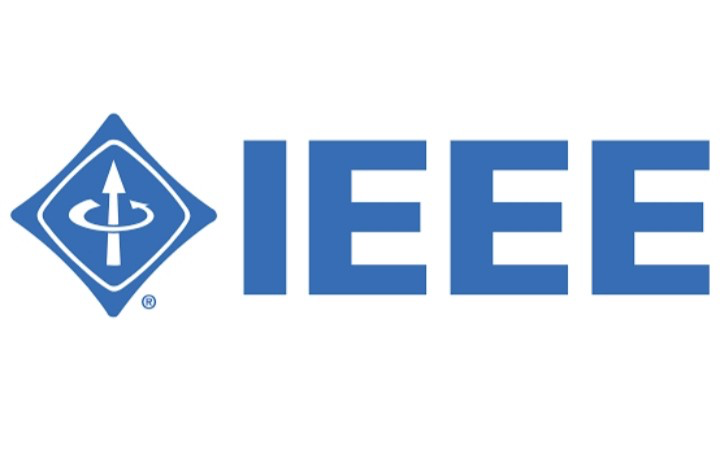
Systematic Review
Acupuncture shows promise in treating polycystic ovary syndrome (PCOS).
Hong Ma, Xiaohong Quan, Jianwei Li, Bin and Xiuhua Chen

Review Article
Despite methodological shortcomings, existing studies suggest acupuncture may improve symptoms related to Multiple Sclerosis including quality of life, fatigue, spasticity, and pain.
H. I. Karpatkin et al.

Systematic Review
Acupuncture during pregnancy appears to be associated with few adverse events when correctly applied.
Park J, Sohn Y, White AR, Lee H.

Randomised Controlled Trial
Acupuncture can be considered as an alternative option for treatment of De Quervain's tenosynovitis.
Hadianfard M, Ashraf A, Fakheri M, Nasiri A
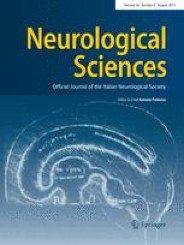
Review Article
There is an emerging role of acupuncture in the treatment of cluster headache with a possible influence on the opioid system.
Fofi L, Allais G, Quirico PE, Rolando S, Borgogno P, Barbanti P, Benedetto C

Systematic Review
Moderate quality studies suggest that acupuncture is more effective than sham acupuncture for lateral elbow pain.
Gadau M, Yeung WF, Liu H, Zaslawski C, Tan YS, Wang FC, et al
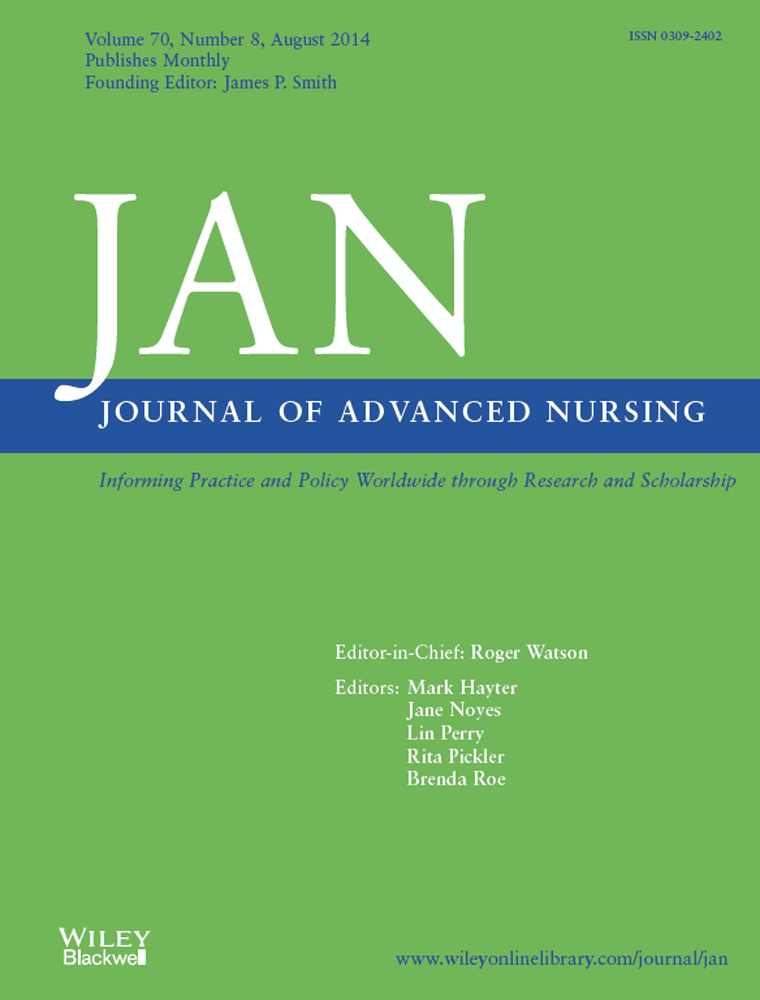
Systematic Review
Acupuncture showed both clinically important changes and statistically significant results for management of low back and/or pelvic pain (LBPP) in pregnancy.
Close C, Sinclair M, Liddle SD, Madden E, McCullough JE, Hughes C.

Meta-Analysis
Acupuncture significantly lowers blood pressure in patients taking antihypertensive medications.
Li DZ, Zhou Y, Yang YN, Ma YT, Li XM, Yu J, et al.

Systematic Review
Acupuncture can be tried based on the available data in the treatment of xerostomia in cancer patients.
Hanchanale S, Adkinson L, Daniel S, Fleming M, Oxberry SG.

Systematic Review
Acupuncture and herbal medicine show promise in alleviating premenstrual syndrome and premenstrual dysphoric disorder symptoms, with over 50% relief and proven safety.
Jang SH, Kim DI, Choi MS
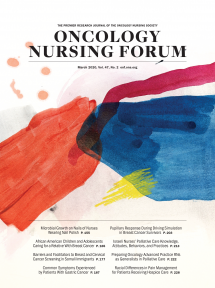
Systematic Review
Although results are inconclusive, acupuncture and acupressure tend to be effective in relieving cancer related fatigue, with the former producing a greater improvement.
Ling WM, Lui LY, So WK, Chan K.

Randomised Controlled Trial
Acupuncture and electroacupuncture treatments can alleviate Carpal Tunnel Syndrome symptoms, enhance nerve repair and improve sensory and motor functions.
Ho CY, Lin HC, Lee YC, Chou LW, Kuo TW, Chang HW, Chen YS, Lo SF
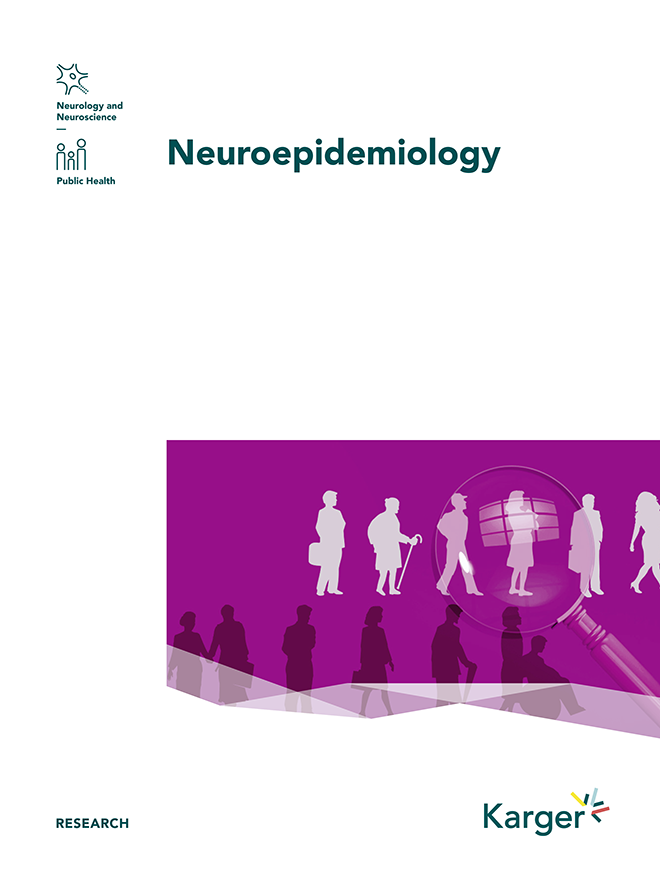
Systematic Review
Acupuncture may be effective for treating poststroke neurological impairment and dysfunction such as dysphagia.
Zhang J. Wang D. Liu M.

Systematic Review
Acupuncture shows promising evidence in cancer palliative care, particularly in reducing therapy-induced side effects and cancer pain.
Lian, WL., Pan, Mq., Zhou, Dh. & Zhang, ZJ.

Systematic Review
Acupuncture's efficacy in treating gynecologic and obstetric disorders
Selva Olid A, Martinez Zapata MJ, Sola I, Stojanovic Z, Uriona Tuma SM, Bonfill Cosp X.

Our findings suggest that the group setting, community-based locations, and low cost of this model do not compromise quality of care, and potentially reduce access barriers for those who might not otherwise consider acupuncture.
Tippens KM, Chao MT, Connelly E, Locke A.

Systematic Review
Acupuncture and moxibustion therapy show greater effectiveness than oral sulphasalazine in treating inflammatory bowel diseases.
Ji, J., Lu, Y., Liu, H., Feng, H., Zhang, F., Wu, L., Cui, Y., & Wu, H.

Systematic Review
The evidence suggested that traditional acupuncture can improve hot flashes in menopausal women and could be a potential treatment for menopausal women.
Dodin S, Blanchet C, Marc I, Ernst E, Wu T, Vaillancourt C, Paquette J, Maunsell E.

Systematic Review
Despite its widespread use during assisted reproductive technology (ART) cycles, acupuncture does not appear to improve live birth or pregnancy rates in couples dealing with subfertility.
Cheong YC, Dix S, Hung Yu Ng E, Ledger WL, Farquhar C

Systematic Review
When acupuncture was compared with no treatment, there appeared to be a benefit from acupuncture, but acupuncture appeared to be less effective than hormone therapy.
Dodin S, Blanchet C, Marc I, Ernst E, Wu T, Vaillancourt C, et al.
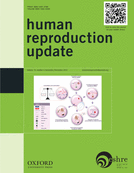
Systematic Review
The meta-analysis indicates that while adjuvant acupuncture does not show a pooled benefit for in vitro fertilization (IVF) across all trials, it appears to have a more significant effect in trials with lower baseline pregnancy rates, warranting further investigation and confirmation in additional studies.
Manheimer, E. ., van der Windt, D., Cheng, K., Stafford, K., Liu, J. ., Tierney, J., Lao, L. ., Berman, B. ., Langenberg, P., & Bouter, L.

Systematic Review
Compared with no treatment and standard therapy, acupuncture improves pain and stiffness in people with fibromyalgia.
Deare JC, Zheng Z, Xue CC, Liu JP, Shang J, Scott SW, Littlejohn G.

Systematic Review
Acupuncture has shown potential in alleviating symptoms and improving overall quality of life for patients suffering from ankle sprains.
Park J, Hahn S, Park JY, Park HJ, Lee H

Systematic Review
Our findings suggest that acupressure at the SP6 acupoint may provide more effective pain relief than that of control treatment.
Chen MN, Chien LW, Liu CF

Systematic Review
Acupuncture can be useful to treat spinal cord injury and its complications if patients experience side effects or have no (or a weak) response to a conventional treatment.
In Heo, Byung-Cheul Shin, Young-Dae Kim, Eui-Hyoung Hwang, Chang Woo Han, Kwang-Ho Heo

Systematic Review
Evidence of effectiveness of acupuncture for PTSD is encouraging but not cogent. Acupuncture may be a relatively safe alternative for PTSD in contrast to SSRI, if long-term therapy is needed for treatment.
Young-Dae Kim, In Heo, Byung-Cheul Shin, Cindy Crawford, Hyung-Won Kang, Jung-Hwa Lim,
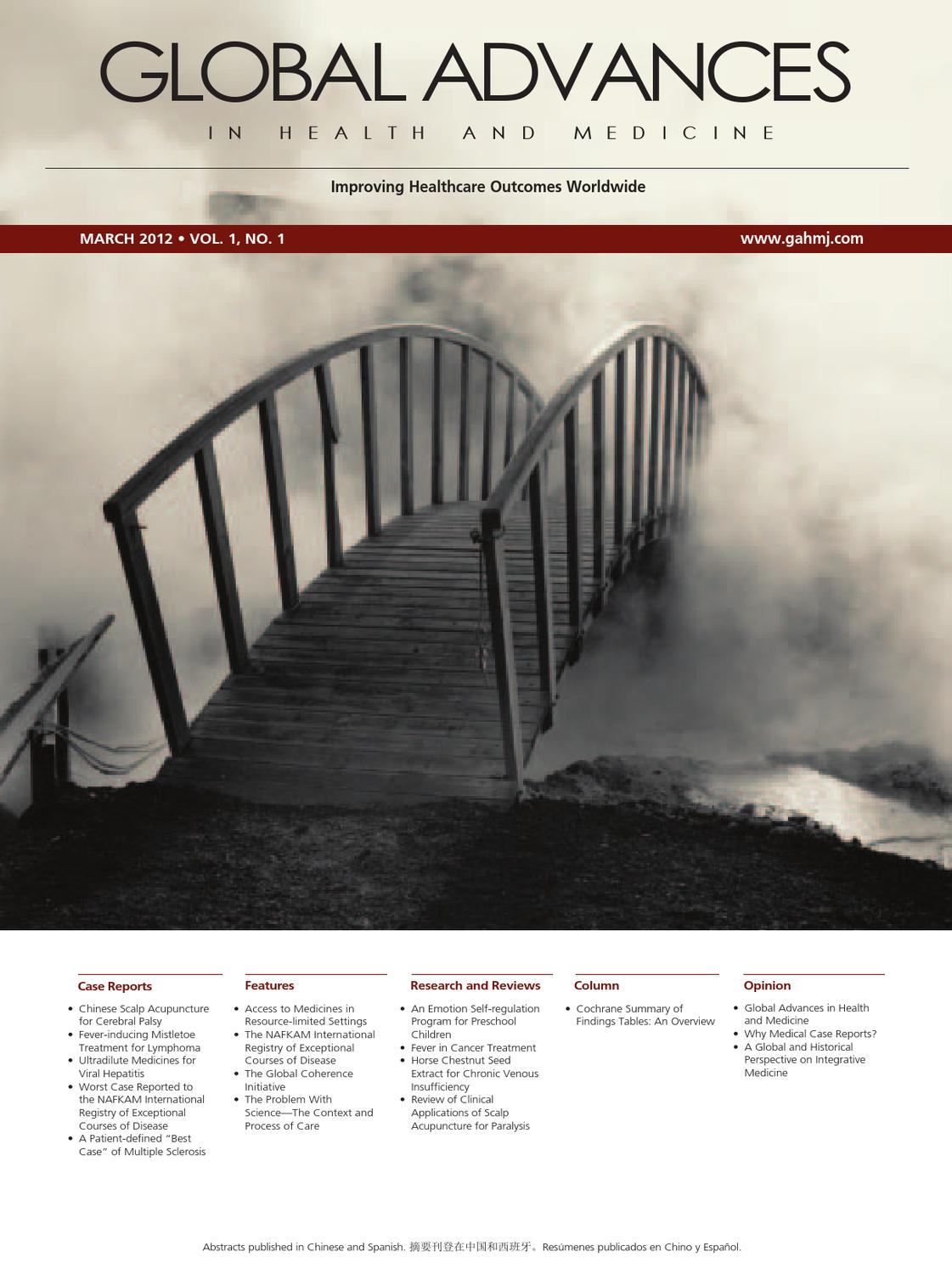
Case Report
Chinese scalp acupuncture, incorporating Western medical knowledge of the cerebral cortex, can significantly improve the quality of life and physical capacity of patients suffering from multiple sclerosis.
Hao JJ, Cheng W, Liu M, Li H, Lü X, Sun Z
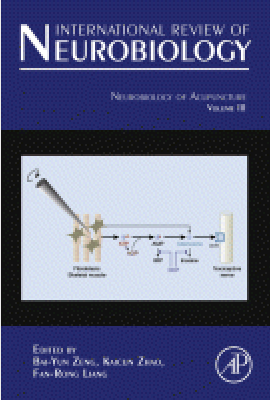
Systematic Review
The clinical efficacy of acupuncture appeared to be supported by evidence obtained from basic neuroendocrinological studies.
Kaicun Zhao

Systematic Review
There is high-level evidence to support the use of acupuncture for treating major depressive disorder in pregnancy.
Sniezek DP, Siddiqui IJ.
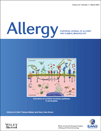
Randomised Controlled Trial
Acupuncture was found to be a more effective and safe treatment for allergic rhinitis than sham acupuncture or no treatment.
Choi SM, Park JE, Li SS, Jung H, Zi M, Kim TH, Jung S, Kim A, Shin M, Sul JU, Hong Z, Jiping Z, Lee S, Liyun H, Kang K, Baoyan L

Systematic Review
There is evidence supporting the effectiveness of acupuncture for plantar heel pain comparable to that available for conventionally used interventions, such as stretching, night splints or dexamethasone.
Clark RJ, Tighe M

Systematic Review
Acupuncture combined with exercise is effective for shoulder pain after stroke.
Jung Ah Lee, Si-Woon Park, Pil Woo Hwang, Sung Min Lim, Sejeong Kook, Kyung In Choi, and Kyoung Sook Kang.

Systematic Review
The meta-analysis suggests that acupuncture does not provide significant benefits in improving the outcomes of in vitro fertilization (IVF) or intracytoplasmic sperm injection (ICSI) treatments.
Qu, F., Zhou, J., & Ren, R.-X.

Systematic Review
Most studies suggest that acupuncture can modulate the activity within specific brain areas, and the evidence based on meta-analyses confirmed some of these results.
Huang, W., Pach, D., Napadow, V., Park, K., Long, X., Neumann, J., Maeda, Y., Nierhaus, T., Liang, F., & Witt, C. M.

Complementary and alternative medicine (CAM) therapies have the potential to provide supportive care for women presenting with threatened miscarriage.
Betts D, Smith CA, Hannah DG.

Systematic Review
Acupuncture appears to improve clinical pregnancy rate and live birth rate in women undergoing in vitro fertilization, but the choice of control used in studies may influence the outcomes.
Zheng, C. H., Huang, G. Y., Zhang, M. M., & Wang, W.

Systematic Review
Current evidence from this meta-analysis of randomized trials shows that acupuncture is effective in reducing severity of depression.
Trine Stub, Terje Alræk, Jianping Liu

Systematic Review
Acupuncture shows potential for reducing dysmenorrhoea scores in endometriosis patients.
Zhu X, Hamilton KD, McNicol ED

Systematic Review
Acupuncture might result in improvement in some outcomes in children with autism spectrum disorders.
Cheuk DKL, Wong V, Chen WX

Systematic Review
Acupuncture shows promise for alleviating PMS symptoms.
S-Y Kim, H-J Park, H Lee, H Lee

Systematic Review
Acupuncture seems promising for symptom improvement in women with premenstrual syndrome.
Kim SY, Park HJ, Lee H, Lee H

Randomised Controlled Trial
Short-term acupuncture treatment may provide long-term relief in mild-to-moderate idiopathic carpal tunnel syndrome patients.
Yang CP, Wang NH, Li TC, Hsieh CL, Chang HH, Hwang KL, Ko WS, Chang MH

Randomised Controlled Trial
Acupuncture can provide pain relief to patients with plantar fasciitis.
Shi Ping Zhang , Tsui-Pik Yip, Qiu-Shi Li

Systematic Review
Acupuncture-related therapies may have potential as an intervention for primary dysmenorrhea.
Yang, H., Liu, C.-Z., Chen, X., Ma, L.-X., Xie, J.-P., Guo, N.-N., Ma, Z.-B., Zheng, Y.-Y., Zhu, J., & Liu, J.-P.

Systematic Review
Effectiveness of acupuncture in treating primary dysmenorrhea.
HUAN YANG, CUN-ZHI LIU, HUAN YANG, CUN-ZHI LIU, XU CHEN, LIANG-XIAO MA, JIE-PING XIE, NAN-NAN GUO, ZENG-BIN MA, YUAN-YUAN ZHENG, JIANG ZHU, JIAN-PING LIU

Clinical Study
Chinese acupuncture is safe and can be efficient in alleviating pain in patients suffering from temporomandibular disorder without clear joint pathology.
Noiman M, Garty A, Maimon Y, Miller U, Lev-Ari S.

Systematic Review
A meta-analysis of acupuncture versus steroid block therapy favored acupuncture in terms of responder rate.
Lee, H., Shim, H., Shin, B., Jung, A., Lee, M., & Ernst, E.
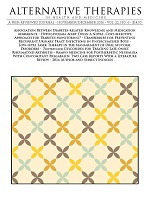
Systematic Review
The evidence reviewed previously suggests that acupuncture is of similar efficacy as carbamazepine but with fewer adverse effects in treatment of trigeminal neuralgia.
Liu H, Li H, Xu M, Chung KF, Zhang SP
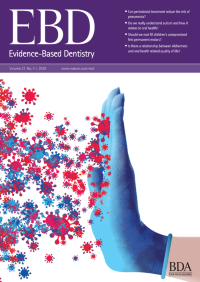
Review Article
There is limited evidence that acupuncture is more effective than sham acupuncture in alleviating pain and masseter muscle tenderness in temporomandibular disorders.
Jens C Türp
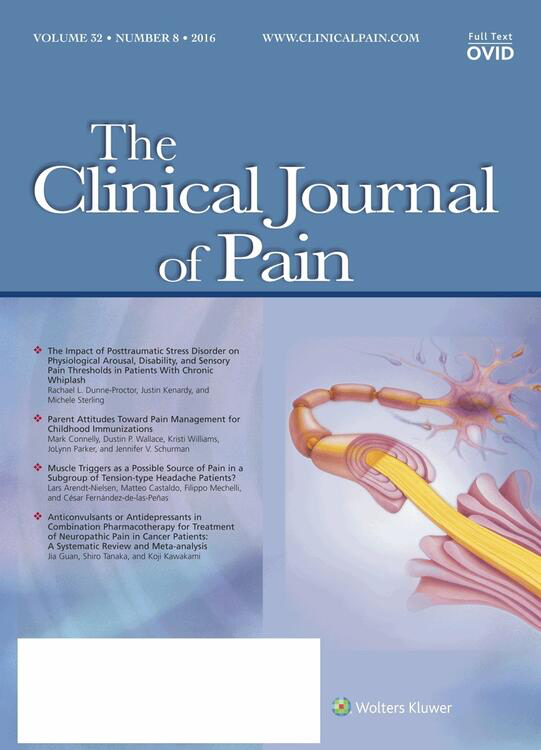
Systematic Review
Acupuncture is a reasonable adjunctive treatment for producing a short-term analgesic effect in patients with painful temporomandibular disorder symptoms.
La Touche R, Goddard G, De-la-Hoz JL, Wang K, Paris-Alemany A, Angulo-Díaz-Parreño S, Mesa J, Hernández M

Systematic Review
Acupuncture ineffective for labour pain relief:
S-H Cho, H Lee, E Ernst

Systematic Review
Study finds acupuncture for PMS holds promise.
Seung-HunChoaJongwooKimb
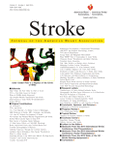
Systematic Review
Randomized clinical trials demonstrate that acupuncture may be effective in the treatment of poststroke rehabilitation.
Ping Wu , Edward Mills , David Moher , and Dugald Seely

Systematic Review
Acupuncture shows promise for reducing pain in primary dysmenorrhea compared to pharmacological treatment or herbal medicine.
Cho SH, Hwang EW

Systematic Review
Clinical studies have shown that acupuncture may have a beneficial effect on insomnia compared with Western medication.
Cao H, Pan X, Li H, Liu J.

Review Article
Acupuncture is a safe complementary/alternative medicine modality for pediatric patients on the basis of the data we reviewed.
Jindal, Vanita; Ge, Adeline; Mansky, Patrick J.

Systematic Review
The existing evidence supports the value of acupuncture for the treatment of idiopathic headaches.
Melchart D, Linde K, Berman B, White A, Vickers A, Allais G, Brinkhaus B
Executive Summary
Write an executive summary in the form of a blog article on the topic of "Research into Chinese medicine treatment for Acupuncture" summarising the research below and using language that can be easily understood by patients and avoiding medical jargon using a professional and caring tone of voice.
Write an executive summary in the form of a blog article on the topic of "Researched Chinese medicine treatments for Acupuncture" summarising the research below in an objective and easy to understand way, and using language that can be easily understood by patients. Group the article into Chinese medicine treatments first, followed by nutrition and other treatments. Avoid using medical jargon and use a professional and caring tone of voice.
Write me a concise but easy to understand executive summary on the topic of "Chinese medicine treatments for Acupuncture" based on the following research that I will give you. Your summary should be 2 paragraphs long in Australian English spelling and include references to the studies.
A Systematic Review published in 2024 in the journal Heliyon found that Acupuncture and moxibustion therapies have shown effectiveness in treating ulcerative colitis according to the summarised-findings of various systematic reviews and meta-analyses. Methodology: This evaluative study used an extensive and systematic methods to search data from seven different databases. The selected data were further refined by using different screening and evaluation frameworks like AMSTAR-2, PRISMA, ROBIS, and GRADE systems. These were used to determine the methodological quality, reporting quality, risk of bias, and the quality of evidence in the selected studies. Discussion of results: After critical evaluation, the study found ten relevant reviews and analyses that showed potential for acupuncture and moxibustion therapies being effective in ulcerative colitis treatment. However, many the identified studies were reported to have several problems in their overall design and quality of outcomes. The researchers therefore stress caution when interpreting these results due to the lack of high-quality evidence in the existing studies.
A Meta-Analysis published in 2024 in the journal SSRN Electronic Journal found that Diverse acupuncture therapies, especially moxibustion, emerged as superior methods for alleviating ulcerative colitis symptoms in clinical practice. Methodology: The researchers carried out a systematic review and network meta-analysis of clinical efficacy of various acupuncture therapies for ulcerative colitis patients. They accomplished this by sourcing for Clinical Randomized Controlled trial articles from databases such as PubMed, Embase, Cochrane Library, and other data knowledge service platforms, all of which were independently reviewed by two researchers. Several quality assessments were made through Review Manager software, and the meta-analysis was conducted with Stata 16 software. Interventions examined in the analysis included acupuncture, moxibustion, acupoint catgut embedding, and combinations of these therapies with Western medicine. Discussion of results: 52 articles encompassing 3924 patients participated in randomized control trials. The investigation revealed a range of interventions, including different acupuncture therapies and combinations of these therapies with Western medicine. Namely, moxibustion, either on its own or combined with Western medicine, consistently surfaced as top-ranked for overall effectiveness and specific outcomes. Moreover, moxibustion displayed impressive performance in reducing adverse reactions and recurrence rates. Thus, various acupuncture therapies were confirmed as safe and effective for the treatment of ulcerative colitis, with moxibustion emerging as the most effective.
A Experimental Study published in 2023 in the journal Frontiers in Integrative Neuroscience found that Acupuncture can enhance visual function in people with myopia via particular changes in brain activity. In this study, a group of 21 myopic patients received acupuncture at a specific acupoint. To assess the impact of this treatment on their vision, a technique known as contrast sensitivity (CS) was used to analyse vision quality before and after the acupuncture process. At the same time, electroencephalography (EEG) was employed to record changes in brain activity throughout the procedure. It was observed post-acupuncture that patients' contrast sensitivity was generally better, implying improved visual abilities. Moreover, EEG data divulged certain changes in brain states labelled as 'microstates', particularly a decrease in the contribution of 'microstate C' and a lower transition probability between 'microstate A' and 'microstate C'. Furthermore, analysis showed a negative correlation between the contribution of 'microstate C' and contrast sensitivity. These findings suggest a connection between the enhancement of visual function and specific neurophysiological processes.
A Systematic Review published in 2023 in the journal Chinese Journal of Integrative Medicine found that Acupuncture may have a positive impact on clinical pregnancy rate and live birth rate in women undergoing in vitro fertilization (IVF), although the results are limited by the heterogeneity of the current evidence. This study aimed to assess the efficacy of acupuncture on embryo transfer in women undergoing in vitro fertilization (IVF). A total of 49 randomized controlled trials (RCTs) involving 9422 women were analyzed. The results indicated that acupuncture had a significant positive impact on the clinical pregnancy rate (CPR) and live birth rate (LBR) compared to the control groups (odds ratio [OR]=1.65 for CPR, 1.34 for LBR). Subgroup analyses showed that traditional acupuncture was more beneficial for women aged < 35 years, those receiving ≥ 3 sessions, and those with lower baseline CPR rates in the control group. However, significant heterogeneity was observed among the studies. In conclusion, while there were some benefits of acupuncture in improving CPR and LBR in IVF, the results should be interpreted with caution due to the variability in the current evidence.
A Meta-Analysis published in 2023 in the journal Journal of Pharmacopuncture found that Acupuncture combined with moxibustion has shown significant benefits in the treatment of mild to moderate Crohn's disease. In this systematic review, the researchers conducted a comprehensive search of 12 databases for randomized controlled trials on the impact of acupuncture on Crohn's disease. Three independent reviewers assessed the risk of bias for each study. The level of evidence from meta-analyses was evaluated using the Grading of Recommendations, Assessment, Development, and Evaluation methodology. The review included a total of 12 studies. Findings suggest that acupuncture combined with moxibustion, a traditional East Asian treatment involving burning a small bunch of herbs on particular points on the body, had an effect on the treatment outcomes for patients with mild to moderate Crohn's disease when compared to a group given sham acupuncture and sham moxibustion treatments. Notably, findings on the effectiveness of acupuncture treatment only, without the addition of moxibustion, were less clear. It is also important to emphasize that this review was firmly focused on the benefits of the treatment on patients with mild to moderate symptoms of Crohn's disease.
A Systematic Review published in 2023 in the journal Complementary Therapies in Medicine found that Acupuncture's effectiveness in treating attention deficit hyperactivity disorder remains inconclusive due to the low quality of existing systematic reviews and meta-analyses. A comprehensive search of the literature up until September 2021 was carried out across seven electronic databases to gather systematic reviews and meta-analyses about the use of acupuncture for treating attention deficit hyperactivity disorder. The quality of these articles was subsequently assessed using the AMSTAR-2 tool, while the GRADE system was used to evaluate the quality of the presented evidence. A total of five systematic reviews and meta-analyses were incorporated in this study. The AMSTAR-2 tool outlined that three articles were of 'low' quality and two were of 'critically low' quality. The GRADE system was applied to ten different outcomes across the included meta-analyses. It found four outcomes to be of 'moderate' quality, four more to be of 'low' quality, and the final two outcomes were considered 'very low' quality. The majority of downgrading factors in the gathered reviews came from the risk of bias and inconsistency. Therefore, the efficacy of acupuncture in improving the various related scores and response rate remains questionable.
A Meta-Analysis published in 2023 in the journal Complementary Therapies in Medicine found that Acupuncture demonstrates a positive therapeutic effect on inflammatory bowel disease (IBD) by effectively regulating associated inflammatory factors. Eight electronic databases were utilized in a systematic search for studies that satisfied the pre-defined inclusion parameters. Two impartial reviewers evaluated the quality of the resultant studies and a meta-analysis was then performed to assess the efficacy of acupuncture on IBD and its related inflammatory factors which include TNF-α, IL-1, IL-8, and IL-10. The analysis comprised of four randomized controlled trials that involved a total of 228 patients. The beneficial effects of acupuncture on IBD patients were thoroughly inspected, as well as its ability to regulate levels of specified inflammatory factors. The P values, which refer to the probability that any observed result occurred by chance, were critically assessed for every inflammatory factor - significance was found in the values of TNF-α, IL-8, and IL-10, but not for IL-1. The conclusion drawn was that acupuncture has a positive therapeutic impact on individuals suffering from IBD, and quite importantly, can regulate inflammatory factors in these patients. As a result of these findings, it is suggested that TNF-α, IL-8, and IL-10 are the ideal inflammatory indicators for evaluating the anti-inflammatory response in this patient category.
A Practice Guideline published in 2023 in the journal Journal of Evidence-Based Medicine found that Guidelines have been developed for treating frozen shoulder using traditional Chinese medicine, with multiple therapies such as acupuncture and exercise recommended. The development of evidence-based guidelines followed internationally recognized standards and used the Grading of Recommendations Assessment, Development and Evaluation approach to determine the certainty of evidence and the strength of recommendations. A multidisciplinary group formed the development panel, who took into account benefits, harms, availability of resources, accessibility, and other factors. Nine clinical queries were defined after conducting a systematic literature review and a face-to-face meeting. The guideline panel reached a consensus on twelve recommendations which included treatments like manual therapy, acupuncture, needle knife, Cheezheng Xiaotong plaster, Gutong plaster, exercise therapy and an integrated approach of traditional Chinese medicine and Western medicine. Their strength ranged from weakly recommended to consensus based. This new guideline targets clinicians and health administrators.
A Meta-Analysis published in 2023 in the journal PLOS One found that Acupuncture, either alone or as an adjunct, improved the clinical efficacy and visual acuity of age-related macular degeneration patients, particularly those with dry AMD. The study conducted a meta-analysis on nine out of 226 articles selected from various databases such as PubMed, Ovid Medline, Embase, Cochrane Library, The Chinese National Knowledge Infrastructure Database, VIP, Wanfang, and SINOMED up until September 4, 2022. Two separate reviewers independently carried out the literature screening and data extraction and used RevMan 5.4 software for the meta-analysis. In the discussion of the results, it was found that 508 AMD patients (representing a total of 631 eyes), including 360 dry eyes and 271 wet eyes, showed improvement in both clinical efficacy and best-corrected visual acuity after receiving acupuncture treatment. The treatment also led to a reduction in their central macular thickness. However, while the benefits of acupuncture were seen, the quality of evidence supporting these outcomes was judged as ranging from "low" to "very low".
A Theoretical Article published in 2023 in the journal Sleep Medicine Clinics found that Acupuncture may enhance the effectiveness of cognitive-behavioral therapy for people suffering from insomnia and related conditions. The research methodology used in this paper is mainly a theoretical analysis and discussion of the potential synergistic effects of combining cognitive-behavioral therapy for insomnia (CBT-I) and acupuncture. This involves analysis of the current evidence base for the efficacy of acupuncture in treating insomnia and related conditions, along with examination of the practical, logistical, and regulatory aspects of combining these two treatments. In the discussion of their results, the researchers found that there is a growing body of evidence that supports the potential benefit of acupuncture in treating insomnia and its comorbidities, enhancing the current standard treatment approach of CBT-I. This appears to be an innovative approach that could potentially enhance the treatment effectiveness and outcomes for those struggling with insomnia, though it concurrently raises complex issues in terms of its practical and regulatory implementation.
A Review Article published in 2023 in the journal Journal of Ethnopharmacology found that Traditional Chinese Medicines (TCM) could increase the survival rate of retinal ganglion cells, thereby playing an active role in treating glaucoma. Methodology: The research involved a comprehensive collection and collation of scientific articles from various databases about TCM and its application on glaucoma. The therapeutic effects of TCM, including their specific formulae, crude drugs, and active components, were analyzed based on existing experimental and clinical research. The GSE26299 database was also used for a bioinformatics analysis of glaucoma, employing the GEO database chip. Results: The traditional Chinese medicines exhibited positive effects in treating glaucoma by potentially improving the microcirculation, managing oxidative stress, and regulating the immune system, which in turn increased the survival rate of retinal ganglion cells. Furthermore, the bioinformatics analysis speculated the pathogenesis of glaucoma to be associated with multiple signaling pathways. The study concluded that TCM could alleviate and treat glaucoma through various methods, with the provision that the differentiation syndrome should be the basis for proposing suitable treatment options.
A Systematic Review published in 2023 in the journal Frontiers in Neuroscience found that Acupuncture's effectiveness for carpal tunnel syndrome uncovers better pain relief compared to night splints and potential benefits when used alongside other treatments Acupuncture was found to be more effective than night splints for pain relief, but no differences were observed in symptom severity and functional status. When used alongside other treatments, acupuncture showed potential in improving various CTS factors. However, the evidence quality was generally low or very low.
A Meta-Analysis published in 2023 in the journal Medicina found that Acupuncture, either as an add-on or standalone treatment, improved conduct problems, learning issues, and hyperactivity symptoms in children with attention-deficit hyperactivity disorder. In the research, nine databases were searched extensively, covering their inceptions to July 28, 2022. Two authors independently sorted relevant studies, and a rigorous quality assessment was performed on selected studies using a well-established risk-of-bias tool for randomized trials. Features of the incorporated studies were laid out in a table, and then a thorough meta-analysis was conducted to examine the impact of acupuncture on attention-deficit hyperactivity disorder symptoms. The results derived from fourteen selected studies involving 1185 participants showcased acupuncture's efficacy in treating attention-deficit hyperactivity disorder. When used alongside conventional medicine, acupuncture had a notably positive impact on reducing conduct problems, learning difficulties, and hyperactivity symptoms. Moreover, even acupuncture in isolation helped mitigate learning issues, hyperactivity and hyperactivity impulsivity. It further exhibited superior total treatment efficacy than conventional medicine alone. Throughout the trials, no major adverse events were recorded. However, it is significant to mention that the risk of bias in these included studies raised general concerns.
A Systematic Review published in 2023 in the journal Frontiers in Psychiatry found that Acupuncture, especially TEAS, is safer and more effective than medication for improving sleep quality in cancer related insomnia Acupuncture methods like transcutaneous electrical acupuncture stimulation (TEAS) and acupuncture+moxibustion were better for sleep than medication. Acupuncture had fewer side effects than medication with positive impact on canner-related insomnia linked to factors like melatonin regulation. Amongst all treatment types, TEAS was probably the more effective.
A Systematic Review published in 2023 in the journal Frontiers in Psychiatry found that Acupuncture and Moxibustion Show Promise for Chronic Renal Insufficiency Acupuncture and moxibustion emerge as effective and safe interventions for chronic renal insufficiency, with Transcutaneous Electrical Acupuncture Stimulation showing the highest potential for efficacy.
A Randomised Controlled Trial published in 2023 in the journal Frontiers in Public Health found that Acupuncture can improve both perimenopausal depression and insomnia with short-medium term effects while being a safe treatment. The experiment involved seventy eligible participants who were randomly assigned to either a real-acupuncture (RA) or a sham-acupuncture (SA) group. They were given 17 sessions of either RA or SA treatments over an 8-week timeframe. The primary outcomes for mood and sleep were evaluated using the 17-item Hamilton Depression Rating Scale and the Pittsburgh Sleep Quality Index scores. Secondary outcomes included an evaluation of anxiety symptoms, perimenopausal symptoms, and quality of life. Also, participants' experiences and overall satisfaction with treatment were assessed. Blood samples were collected as well to measure reproductive hormone levels. Reports indicate that 65 participants completed all treatment sessions while 54 and 41 participants completed the 8-week and 16-week follow-ups respectively. The results showed the RA group to have a bigger reduction of Pittsburgh Sleep Quality Index scores at post-treatment and 8-week follow-up compared to the sham-acupuncture group. Although, the change in the Hamilton Depression Rating Scale scores for the RA group wasn’t significantly different from the sham group. There were no significant mean differences for the Hamilton Depression Rating Scale or the Pittsburgh Sleep Quality Index between the two groups from the beginning to the 16th-week follow-up, nor were any differences noted in serum reproductive hormone levels among the groups. No major adverse events were reported.
A Randomised Controlled Trial published in 2023 in the journal Medical Acupuncture found that Acupuncture combined with a home-exercise program significantly reduces pain in patients suffering from plantar fasciopathy more than just a home exercise program. A randomized controlled trial was set up at two U.S. Air Force military treatment facilities using subjects over 18 years old suffering from plantar fasciopathy. In total, 94 subjects were divided into two groups; those who only did home exercises and those who did home exercises and received acupuncture. The intervention group got acupuncture every other week, four times in total. There was no blinding and after an initial 12-week study, patients in the control group were given an option to cross over to acupuncture. The main focus of the trial outcomes was on reduction of pain and improved functioning, with scores taken at baseline, every visit, and six weeks after treatment. The outcome revealed that the control group had a notable reduction in pain at the end of the study, the intervention group had over a 50% reduction in pain immediately after every acupuncture session and a sustained reduction in pain at the termination of the study. In addition, subjects who crossed over to acupuncture from the control group observed a considerable drop in their pain scores instantly as well as at the 12 weeks post-acupuncture point. However, while function scores did enhance, there was no significant statistical difference.
A Systematic Review published in 2023 in the journal Frontiers in Medicine found that Acupuncture provides speedy and effective pain relief for renal colic, surpassing traditional drugs with fewer side effects suggesting its potential as a safe and efficient option for acute pain treatment Acupuncture proves effective for relieving pain in renal colic, demonstrating rapid onset of analgesic action and lower pain scores at 30-60 minutes compared to conventional treatments. The mechanism of action remains unclear but appears to involve nervous system modulation, endocrine regulation, and muscle relaxation. Compared to NSAIDs and opioids, acupuncture offers a safer, less risk option with potential for effective pain relief.
A Randomised Controlled Trial published in 2023 in the journal Topics in Geriatric Rehabilitation found that Auricular acupuncture relieved pain and decreased disability more effectively than physiotherapy for frozen shoulder treatment. The research was conducted through a randomized clinical trial involving three parallel groups in an outpatient clinic at a university hospital. The 116 participants, suffering from a frozen shoulder, were randomly allocated to three groups where they underwent treatments of physiotherapy, local acupuncture, or auricular acupuncture. Assessment tools like the Shoulder Pain and Disability Index questionnaire and measures of the shoulder's active and passive ranges of motion were used to evaluate the effects of treatments both before and after their implementation. The results of the study revealed that the most substantial improvements in active and passive ranges of motion including abduction, flexion, and passive external rotation were brought about by physiotherapy. Despite this, instances of pain reduction were more successfully achieved with acupuncture treatments, with auricular acupuncture leading the pack. In addition to this, auricular acupuncture made significant strides in improving the functional abilities of patients when compared to its counterpart treatments. Throughout the study, there were no reported side effects from any of the treatment approaches used.
A Cohort Study published in 2022 in the journal Journal of Acupuncture and Meridian Studies found that Acupuncture shows promise in improving psychiatric symptoms, physical symptoms, and quality of life in patients with treatment-resistant mood disorders, highlighting its potential as a complementary therapy for these conditions. This prospective study explored the effects of acupuncture on physical symptoms and quality of life (QoL) in patients with treatment-resistant major depressive disorder (MDD) and bipolar disorder (BD). After 12 weeks of acupuncture treatment, significant improvements were observed in psychiatric symptoms, physical symptoms, and various aspects of QoL. These findings suggest that acupuncture may be beneficial for both the physical and mental well-being of patients with treatment-resistant mood disorders, although further research is needed to validate these preliminary results.
A Systematic Review published in 2022 in the journal Research in Nursing & Health found that Acupuncture, either in isolation or as an adjunct to pharmacological treatment, has clinical benefits and can be considered a safe option for managing depression. A review of 22 trials involving 2,391 participants found that acupuncture can reduce depression severity. Combining acupuncture with antidepressants was more effective than using antidepressants alone or waitlist. However, acupuncture alone or with antidepressants didn't show significant benefits compared to sham acupuncture. Sham acupuncture might have stronger effects than other placebos. Differences in treatment sessions and cultural backgrounds between China and Western countries affect outcomes. Lack of standardization in acupuncture regimens hinders research. Mild adverse events were reported but need better documentation.
A Systematic Review published in 2022 in the journal Medicine found that Acupuncture shows promise as an effective treatment for anxiety during the COVID-19 pandemic, but further research is required to establish its effectiveness conclusively. Measures like wearing masks and isolation have made managing stress difficult. New stressors, like online activities and financial challenges, have also emerged. Acupuncture has shown potential as a treatment for GAD, with fewer side effects than medication or therapy. However, more research is needed to confirm its effectiveness.
A Systematic Review published in 2022 in the journal Journal of Integrative Medicine found that Acupuncture, when used in conjunction with medicine or alone, appears to improve certain PCOS outcomes such as ovulation rate and recovery of menstrual cycle. This overview consolidates existing systematic reviews (SRs) on the efficacy and safety of acupuncture for treating Polycystic Ovary Syndrome (PCOS). Methodological quality, risk of bias, and confidence in evidence were assessed from these SRs to guide clinical practice and future research directions. However, due to the inconsistency and low quality of evidence, a definitive conclusion regarding the benefits of acupuncture for PCOS remains elusive. Notably, though all included SRs suggest potential benefits, their conclusions are undermined by defects in individual SRs and the limited reliability of evidence. Acupuncture, when used in conjunction with medicine or alone, appears to improve certain PCOS outcomes such as ovulation rate and recovery of menstrual cycle. Adverse events are mild, and while some evidence points to favorable effects on various outcomes, confidence remains too low to draw firm conclusions. The review highlights methodological shortcomings in SRs' assessments and calls for robust future studies. These studies should feature pre-registered protocols, comprehensive literature retrieval, detailed statistical methods, thorough reporting of trial characteristics and funding sources, and strategies to address bias and heterogeneity. In spite of potential benefits, the current evidence's poor quality and inconsistencies necessitate further high-quality research to establish acupuncture's effectiveness and safety for PCOS definitively.
A Systematic Review published in 2022 in the journal Complementary Therapies in Medicine found that Acupuncture, when combined with lifestyle changes, can effectively lower blood pressure in grade 1 hypertension patients with fewer side effects This review analyzed 10 studies on acupuncture treatment for grade 1 hypertension. Acupuncture, in combination with lifestyle adjustments, was found to be more effective than lifestyle modification alone, placebo, or no treatment, resulting in reduced systolic and diastolic blood pressure with higher response rates. Adverse effects were mild.
A Systematic Review published in 2022 in the journal Phytomedicine found that Acupuncture shows positive effects on cancer-related issues; research calls for further exploration of acupuncture's efficacy and safety, especially for conditions like depression, offering further potential support for cancer survivors This review summarizes evidence from 51 systematic reviews on acupuncture for cancer-related conditions. Acupuncture was found to have positive effects on various conditions such as cancer-related pain, fatigue, insomnia, nausea, and more. The methodological quality of the reviews was generally low, and some biases were identified. Acupuncture was considered safe, with only mild adverse events reported. In clinical practice, acupuncture can be a beneficial option for cancer survivors for certain conditions.
A Meta-Analysis published in 2022 in the journal Medicine found that Acupuncture using Lingguibafa acupoint selection shows notable improvements in various sleep parameters for individuals suffering from insomnia. The study conducted an extensive systematic search through multiple databases such as PubMed, Web of Science, Embase, and more for randomized controlled trials that compared Lingguibafa acupoint selection acupuncture with dialectical acupoint selection acupuncture in treating insomnia. Two independent review authors extracted data and assessed each trial's quality. A meta-analysis was subsequently performed using random-effects models to calculate relative risks and weighted mean differences for categorical and continuous variables respectively. The inclusion of seven trials involving 468 patients showed that acupuncture with Lingguibafa acupoint selection either alone or combined with dialectical acupoint selection resulted in significant improvements in multiple sleep parameters, notably the Pittsburgh Sleep Quality Index score. There were also substantial improvements in sleep quality, latency, and daytime function. However, it had no significant effect in treating sleep disorder and dependence on hypnotic drugs. While the overall total effectiveness rate was higher in the Lingguibafa acupoint selection group, the conclusion was deemed less credible due to the poor methodological quality across the trials.
A Systematic Review published in 2022 in the journal Medicine found that Acupuncture covering the depth ranges for BL18, BL20, and BL22 and their targeting of various tissues potentially alleviates sympathetic nerve issues and ischemia with assistance of the diaphragm. Review analyzed 115 articles on needling depth and angle for back-shu acupuncture points in GI diseases. Key findings include the depth range for BL18, BL20, and BL22 points, their targeting of muscles, nerves, and diaphragmatic tissues, and the potential for acupuncture to alleviate sympathetic nerve overexcitability and ischemia while emphasizing the diaphragm's role in digestive function.
A Systematic Review published in 2022 in the journal Computational Intelligence and Neuroscience found that Meta-analysis of TCM non-drug treatments like acupuncture and massage improved primary insomnia, reducing PSQI scores, and easing anxiety and depression. The effectiveness of Traditional Chinese Medicine (TCM) non-drug therapies (acupuncture, moxibustion, massage, and auricular point pressing) were evaluated in treating primary insomnia. Results showed that TCM non-drug therapies significantly improved the PSQI score in insomnia patients, with a higher effective rate compared to the control groups. These therapies also demonstrated improvements in anxiety and depression.
A Systematic Review published in 2022 in the journal Evidence-Based Complementary and Alternative Medicine found that Meta-analysis has strong implications of the effectiveness of tongue acupuncture, especially when combined with conventional therapies, in treating poststroke aphasia. This holistic approach demonstrates significant improvements in patient outcomes. Meta-analysis showed significant heterogeneity in ABC scores, with tongue acupuncture combined with conventional therapies proving more effective. Clinical efficacy also favored tongue acupuncture combined with conventional therapies. CFCP scores showed significant improvement with tongue acupuncture, especially when combined with conventional therapies.
A Practice Guideline published in 2022 in the journal Perspectives on Integrative Medicine found that Acupuncture is safe and may be a cost-effective treatment for shoulder pain. There were 131 statements recommending the use of acupuncture for shoulder pain across 12 subtypes of shoulder pain. The most common statements were for non-specific ‘shoulder pain.’ There were 11 statements against the use of acupuncture for shoulder pain and three subtypes of shoulder pain. The level of evidence in studies of acupuncture treatment for shoulder pain is low, therefore, further research is needed. Recommendations for the use of acupuncture for shoulder pain are increasing but lag behind those for other pain problems such as low back pain.
A Systematic Review published in 2022 in the journal Journal of Pharmacopuncture found that Complementary therapies are generally effective and safe in treating insomnia with acupuncture being the most frequently effective form, often yielding results superior to western medicine, sham/placebo, and no treatment. The researchers conducted an extensive literature search using six different databases to gather systematic reviews and meta-analyses on the effectiveness and safety of complementary therapies for insomnia. Among the surveyed data, 30 systematic reviews/meta-analyses were chosen for the overview. An analysis using the PSQI was performed involving a significant number of randomized controlled trials and participants. The results confirm that complementary therapies had a positive impact on the PSQI scores in insomnia patients. Most of the reviews and meta-analyses reported positive results, with acupuncture being the most frequently effective form, often yielding results superior to western medicine, sham/placebo, and no treatment. However, the study discusses the presence of some methodological and reporting quality deficiencies in the systematic reviews and meta-analyses due to a lack of protocol registration and exclusions in study lists.
A Randomised Controlled Trial published in 2022 in the journal Pain Medicine found that True acupuncture treatment according to traditional Chinese medicine consistently improved migraine outcomes more than just medication or mock treatments. In the prospective, randomized, controlled study, 160 migraine patients without aura were assigned to one of four treatment groups. These treatments included: traditional Chinese medicine acupuncture combined with Rizatriptan (TA); a ritualized non-penetrative acupuncture treatment combined with Rizatriptan (RMA); a standard non-penetrative acupuncture treatment combined with Rizatriptan (SMA); or Rizatriptan alone (R). The Migraine Disability Assessment (MIDAS) questionnaire was completed before treatment, and again after three and six months. The study found that all patient groups experienced a decrease in Migraine Disability Assessment scores following treatment, indicating general improvement. However, the traditional acupuncture treatment group (TA) showed significant improvement in comparison to those who received only Rizatriptan. The ritualized non-penetrative acupuncture treatment group (RMA) showed temporary improvement, suggesting a placebo effect.
A Cohort Study published in 2022 in the journal Frontiers in Neurology found that Acupuncture intervention within 7 days of onset of Bell's palsy could shorten the time to recovery and improve the outcome at 12 and 24 weeks. A total of 345 patients were eligible for this study and were divided into the manual acupuncture/electroacupuncture (MA/EA) group (n = 76) and the EA group (n = 125). In the propensity score-matched cohort, the time to complete recovery was significantly shorter in the MA/EA group compared with the patients in the EA group. The MA/EA group had a higher rate of favorable outcomes at 12 weeks than the EA group, and the occurrence of sequelae at 24 weeks showed a greater reducing trend in the MA/EA group than the EA group.
A Systematic Review published in 2022 in the journal Medicine found that Acupuncture coupled with traditional Chinese medicine may be more effective and safer than conventional Western medicine in treating chronic urticaria. To compare the efficacy of acupuncture with traditional Chinese medicine to conventional Western medicine, several databases, including Pubmed, Embase, Cochrane Library, CNKI, Wanfang, CQVIP, and CBM, were searched until August 2021. The criterion for inclusion were randomized control trials where the experimental group was treated with acupuncture and traditional Chinese medicine, and the control group with conventional Western medicine. Studies were excluded if they were repeated publications, lacked full text, incomplete in information, or incapable of data extraction. Animal experiments, reviews, and systematic reviews were also disregarded. Data analysis was conducted using STATA 15.1 software. The analyzed results revealed that the total effective rate of the group treated with acupuncture and traditional Chinese medicine was noticeably higher than those treated with conventional Western medicine. Additionally, this group showed considerably lower Urticaria Activity Scores and pruritus scores compared to those treated with Western medicine. However, there was no substantial difference shown in the wheal score between both groups. Significantly, the recurrence rate and the incidence rate of adverse events in the group treated with acupuncture and traditional Chinese medicine were markedly lower than the other group. This highlights the greater effectiveness and safety of the combination of acupuncture and traditional Chinese medicine for chronic urticaria compared to Western medicine.
A Systematic Review published in 2022 in the journal Frontiers in Public Health found that The study found that acupuncture as an adjuvant therapy for frozen-thawed embryo transfer (FET) in infertile women had positive effects on pregnancy outcomes. The study investigates the effects of acupuncture as supplementary therapy for frozen-thawed embryo transfer (FET) in infertile women. It finds significant positive impacts on clinical pregnancy rate, biochemical pregnancy rate, endometrial thickness, and pattern. However, the evidence quality is considered unsatisfactory, prompting a call for more robust research and refined acupuncture protocols.
A Review Article published in 2022 in the journal Expert Review of Neurotherapeutics found that A 6-week course of acupuncture proves as effective as 6-month drug prophylaxis for migraines, with specific Chinese point selection and stimulation appearing less important. The study began by revisiting previous research on acupuncture as a treatment for headache, finding shortcomings in many of these studies. It explored the influence of acupuncture on migraine and how it potentially functions. The methodology involved running several large, randomized trials comparing the use of acupuncture to conventional prophylactic drug treatments, spanning a time frame of six weeks to six months, respectively. In the discussion of the results, it was found that the 6-week acupuncture treatment was just as effective in treating migraines as the 6-month drug treatment. Specific attributes of the acupuncture treatment, such as the selection and stimulation of Chinese points and the depth of the needles, were found to have lower significance than traditionally believed. The paper therefore suggested the integration of acupuncture into existing migraine therapy protocols.
A Clinical Study published in 2022 in the journal Phytomedicine found that Acupuncture has shown potential in enhancing structural nerve regeneration in Chemotherapy-induced peripheral neuropathy, leading to subjective improvements and positive neurological findings. This research was conducted at the HanseMerkur Center for TCM at the University Medical Center, Hamburg-Eppendorf. Sixty patients who had been diagnosed with Chemotherapy-induced peripheral neuropathy underwent acupuncture treatment. Patients were selected based on physical examinations, subjective and quantitative evaluations conducted using nerve conduction studies. They were then randomly divided into two groups. The first group received a ten-week acupuncture treatment while the latter was put on a waiting list. After fourteen weeks, evaluations were carried out on both groups. The second group then received the acupuncture treatment while group one was put on the waiting list. Both groups were subjected to another evaluation after 28 weeks. The results showed noticeable improvements in sural sensory nerve amplitude and sural nerve conduction velocity among patients who received acupuncture treatment. This can be seen in the subjective improvements reported by the patients in the form of reduced burning pain, cramps, numbness, frequency of symptoms and improved gait. Significantly positive findings from the physical examination, including blind walking, heel-to-toe walking, and distal pallhypesthesia further bolster the potential benefits of acupuncture treatment in managing Chemotherapy-induced peripheral neuropathy.
A Systematic Review published in 2022 in the journal Evidence-Based Complementary and Alternative Medicine found that Acupuncture, either solo or alongside conventional treatment, results in a significant improvement in symptoms and quality of life for chronic rhinosinusitis sufferers. To evaluate the effectiveness of acupuncture in treating chronic rhinosinusitis, this study utilized 10 randomized controlled clinical trials, found through searching electronic databases. Through these trials, the posttreatment severity of chronic rhinosinusitis was measured, primarily focusing on the Total Effective Rate and patient ratings on the Visual Analogue Scale. From the analysis of the trial data, it was revealed that acupuncture, when used alone or in combination with conventional treatment methods, led to significant improvements in the severity of chronic rhinosinusitis symptoms and the quality of life of patients. This was indicated by enhanced ratings on the Visual Analogue Scale and the Total Effective Rate. It was also noted that the incidence of adverse events was similar across treatment methods. Despite these promising results, the researchers found a high degree of clinical heterogeneity across the included trials, as well as generally moderate-to-low quality of evidence.
A Systematic Review published in 2022 in the journal Frontiers in Endocrinology found that PCOS patients suggests that combining acupuncture with metformin might enhance pregnancy and ovulation rates, as well as improve insulin resistance. The study initially screened 330 relevant articles, eventually including nine randomized controlled trials (RCTs) that met the inclusion criteria. These trials encompassed 1,159 patients with PCOS who underwent acupuncture or acupuncture combined with metformin treatment. Using the GRADE method, a "Summary of Findings" table was employed to evaluate the quality of evidence for various outcome measures. The main results indicated that acupuncture combined with metformin exhibited superiority over metformin alone in terms of pregnancy rate, ovulation rate, and HOMA-IR (insulin resistance). Subgroup analysis highlighted that diagnostic criteria and random methods contributed to heterogeneity in results. However, the evidence's quality was predominantly low or very low due to study limitations, inconsistencies, and imprecisions. The intervention measures, such as acupuncture methods and treatment parameters, varied substantially among studies. Challenges in contacting original authors and incomplete information posed further limitations. The study suggested potential improvements in pregnancy rate, ovulation rate, and HOMA-IR with acupuncture combined with metformin, but these findings were subject to uncertainties related to diagnostic criteria and overall evidence quality. Consequently, the conclusive efficacy of acupuncture combined with metformin for treating PCOS remains uncertain due to the dearth of high-quality research. The study called for well-designed and well-executed RCTs to address this question under standardized diagnostic criteria and treatment protocols for acupuncture and metformin.
A Systematic Review published in 2022 in the journal Frontiers in Medicine found that Electroacupuncture may be more effective than manual acupuncture for managing frozen shoulder, with larger effect sizes in terms of pain, function, and response rate. This review included thirteen studies involving 936 patients. The EA group exhibited improvements in FS pain, function, and response rates over the manual acupuncture (MA) group. As an adjunct treatment, EA improved FS pain compared to the control treatments. No adverse effects were reported. EA was found to be an efficacious method for treating FS in this review. The meta-analysis showed that EA led to a greater reduction of FS pain than MA did, although with a very low certainty of evidence. In comparison to MA, EA led to a superior degree of functional improvement in FS patients, with a very low certainty of evidence. In comparison to MA, EA enhanced the response rate of FS, again with a low certainty of evidence. Compared with WM used in isolation, EA plus WM reduced FS pain with a low certainty of evidence.
A Systematic Review published in 2022 in the journal Frontiers in Neurology found that Acupuncture added to conventional rehabilitation has been found more effective in reducing post-stroke spasticity than conventional rehabilitation alone. In this systematic review and meta-analysis, a charge was led to determine the effectiveness and safety of acupuncture for post-stroke spasticity. A comprehensive search across nine electronic databases was carried out up to June 2022. Identification was focused on randomized-controlled trials that scrutinized the potency and safety garnered from acupuncture for post-stroke spasticity. An independent screening of studies was initiated by two reviewers who also took charge of data extraction and bias risk assessment. Software tools were employed for statistical analysis of data. Out of the search, 88 studies deemed eligible were included amounting to a total of 6,431 participants. Pooled data illustrated that there was a beneficial effect when combining acupuncture and conventional rehabilitation, surpassing the results obtained from conventional rehabilitation alone. Subgroup analysis underscored that acquiring acupuncture either once or twice a day had superior results than conventional rehabilitation. The antispasmodic effect seemed to improve with more treatment sessions. A small number of studies explicitly pointed out slight adverse events related to acupuncture.
A Randomised Controlled Trial published in 2022 in the journal Complementary Therapies in Medicine found that Auricular acupuncture was found to improve physical and emotional aspects in patients with temporomandibular disorders, with similar results to occlusal splint treatment. In the study, patients suffering from temporomandibular disorders were allocated into three groups - those who received auricular acupuncture (AA), those treated with occlusal splints (OS), and a sham group. The patients were evaluated and monitored over an eight-week period using axes I and II of the RDC-TMD according to CONSORT guidelines. The findings revealed significant improvements in both the emotional aspects and physical aspects amidst the auricular acupuncture group and occlusal splint group. The sham group showed no improvements in the emotional aspect and only a few in the physical aspect. The comparison between the auricular acupuncture group and the occlusal splint group revealed similar number of variables with improved outcomes, indicating that the auricular acupuncture treatment was as effective as the occlusal splint treatment. On the other hand, the sham group presented a significant difference when compared to the other groups. These results strongly suggest the potential of auricular acupuncture as a treatment option for temporomandibular disorders.
A published in 2022 in the journal Frontiers in Pharmacology found that Acupuncture combined with nerve repair significantly enhances the recovery rate in patients with peripheral facial paralysis by aiding nerve regeneration. The research applied traditional acupuncture therapy in conjunction with nerve repair in treating peripheral facial paralysis. Examination via a microscope revealed the extent of the clinical effectiveness of combined nerve repair and acupuncture during the acute stage of the facial paralysis. Following the artificial nerve repair procedure performed 21 days prior, the nerve injury demonstrated varying levels of recovery. Furthermore, the myelin sheath, an insulating layer that forms around nerves, was found to be gradually developing and encompassing the new nerve fibers. The study found the inflammation that naturally occurs when treating nerve defects to be an inevitable process. However, moderate acupuncture was found to significantly aid and promote the repair of peripheral nerve defects. This research revealed that the combination of acupuncture and nerve repair led to outstanding improvements in the treatment of peripheral facial paralysis. The study showed that this combined treatment significantly increased the patient recovery rate. This new treatment technology was found to be simple, safe, effective, and presents a valuable enhancement to the existing treatment plans for peripheral facial paralysis.
A Review Article published in 2022 in the journal Journal of Complementary and Alternative Medical Research found that Acupuncture has shown to be potentially beneficial as an alternate or adjunct therapy for patients with Bell's palsy following recovery from COVID-19. In the methodology utilized for this research, an extensive literature search was carried out by two independent investigators. They used multiple sources including PubMed, MEDLINE, Google scholar, LILACS, and the Cochrane Register of Controlled Trials, from the year 2000 up until 2021. They used the keywords: Bell’s Palsy, covid-19, acupuncture, Mucormycosis, vaccine, and steroids. Selected articles were only those published in English and included full-text. The studies included in the review were all randomized controlled trials which compared acupuncture intervention's clinical effects (used alone or add on) with no treatment. In terms of results, although the methodological quality of most studies was considered generally low, six randomized controlled trials were found to be satisfactory and included in the study. According to the results across these studies, the groups who received acupuncture treatment reported improved outcomes compared to their baseline or control groups. This was evident as no negative side effects were reported. The review therefore indicates that acupuncture could play a beneficial role in treating patients with Bell's palsy post-recovery from COVID-19, particularly those at risk of mucormycosis and other severe health complications.
A Systematic Review published in 2022 in the journal Frontiers in Neurology found that Acupuncture, specifically electroacupuncture and bee venom acupuncture, shows promise as a growing therapeutic approach in the treatment of Parkinson's Disease. To explore global trends in acupuncture research for Parkinson's Disease over recent decades, data was gathered from the Web of Science Core Collection database. The analysis period covered 2000 through 2021, with the use of CiteSpace and VOSviewer software to review key factors such as the number of publications, countries offering significant contributions, key institutions and researchers, and recurring research keywords. Five years of research indicated a general upward trend in publications dedicated to this subject. It was observed that China, South Korea, and the USA are the predominant contributors, with Kyung Hee University and Capital Medical University recognized as the most productive institutions. Hi-Joon Park has significantly contributed to the field of study, with an emphasis on "electroacupuncture" and "bee venom acupuncture" as emerging research focus points. An analysis of the gathered information revealed that acupuncture therapy for Parkinson's Disease has an upward trajectory in scientific interest and research. Within the body of global research, specific therapeutic approaches such as electroacupuncture and bee venom acupuncture have gained prominence. It became clear that collaboration and open communication across different nations and organizations could benefit the global development and application of these promising treatments. The non-motor symptoms of Parkinson's Disease, the development of models that accurately reflect these symptoms in humans, and the efficacy of potential therapies have taken center stage in the realm of acupuncture research.
A Systematic Review published in 2022 in the journal Reproductive BioMedicine Online found that The potential of acupuncture as a non-pharmacological intervention to alleviate IVF-related state anxiety. This systematic review and meta-analysis focused on acupuncture's impact on IVF-related state anxiety. Eight trials involving 2253 participants were analyzed, with 1785 completing anxiety assessments. Results indicated a small yet significant reduction in state anxiety through acupuncture versus various controls, as measured by different scales after embryo transfer or oocyte retrieval. The standardized mean difference was -0.21, but evidence certainty was low due to limited studies and potential bias. Acupuncture emerges as a safe, drug-free option for alleviating IVF-related anxiety, although further research is needed to establish its efficacy amidst trial heterogeneity.
A Systematic Review published in 2022 in the journal Evidence-Based Complementary and Alternative Medicine found that Acupuncture and moxibustion therapies have greater therapeutic effectiveness for knee osteoarthritis than sham treatments and generic acupuncture/moxibustion treatments. The researchers queried PubMed, Embase, and CNKI databases to find qualifying trials conducted between 2017 and 2022. All trials that employed acupuncture or moxibustion for knee osteoarthritis patients were included. The process of choosing studies to be included and extracting relevant data from them was carried out by two researchers independently. The data were analyzed using R 4.1.1. The meta-analysis included seventeen trials. The results of the analysis identified a correlation between several common forms of acupuncture and moxibustion therapies, as observed via a network meta-analysis. The findings showed that treatments involving acupuncture or moxibustion were more effective than sham treatments. Furthermore, when compared with standard acupuncture or moxibustion procedures, specific acupuncture or moxibustion procedures proved to be more effective.
A Meta-Analysis published in 2022 in the journal Computational and Mathematical Methods in Medicine found that Acupuncture combined with moxibustion showed the best outcomes in terms of efficacy and quality of life improvement for adults with irritable bowel syndrome complicated with diarrhea. The study was conducted by searching major databases, including PubMed, The Cochrane Library, Embase, and database from China, for randomized controlled trials. These trials explored the effects of acupuncture and moxibustion on individuals suffering from irritable bowel syndrome complicated with diarrhea. The selected studies underwent a rigorous bias assessment and their data were analyzed using Stata 16.0 statistical software. The analysis encompassed 21 studies overall, considering 1626 patients undergoing 8 different therapeutic measures. The study found that treatments such as acupuncture, warming needle moxibustion, and a combination of acupuncture with sandwiched or heat-sensitive moxibustion revealed significantly improved outcomes when compared to the drug pinaverium bromide. On the other hand, pinaverium bromide demonstrated the lowest efficacy and effect on quality of life. The most frequently used acupuncture points were GV20, GV29, ST 25, ST37, ST36, SP6, LR3, and CV12.
A Systematic Review published in 2022 in the journal Healthcare found that Acupuncture showed a significant effect in the management of fibromyalgia patients. It reduced pain, depression, and enhanced quality of life. There were 23 included RCTs. The total sample size was 1409 patients. Compared with the sham/placebo group, the network analysis showed the highest improvement in the quality of life in the acupuncture group standardized mean difference, and then in the physiotherapy group. For the pain, there was a significant reduction with acupuncture, compared with sham/placebo. Regarding depression, it showed a significant reduction with acupuncture compared with sham/placebo. Finally, for stiffness, it showed no significant differences in the stiffness between acupuncture, fluoxetine, and physiotherapy compared with sham/placebo.
A Randomised Controlled Trial published in 2022 in the journal Neurology found that True acupuncture over an eight-week period is effective for reducing the frequency of chronic tension-type headache. In a randomized controlled trial, 218 participants diagnosed with chronic tension-type headache were divided into an intervention group and a control group, with the study conducted from June 2017 to September 2020. The intervention group received 20 true acupuncture sessions over 8 weeks, where each acupuncture point was needled to achieve a sensation, each session lasting 30 minutes. The control group received the same number of superficial acupuncture sessions, serving as a make-believe treatment, where the needling avoided inducing sensations at the acupuncture points. The results showed a trend towards greater effectiveness of true acupuncture. By week 16, the 'responder rate' (participants reporting at least a 50% reduction in monthly headache days) was higher in the true acupuncture group compared to the superficial acupuncture group, with similar results by week 32. These findings suggest that true acupuncture, involving the creation of a sensation at each acupuncture site, can noticeably reduce chronic tension-type headaches. This was observed without noting significant adverse events, hinting towards the safety of the procedure.
A Systematic Review published in 2022 in the journal Journal of Orthopaedic Surgery and Research found that Individualised acupuncture and standard acupuncture combined with TENS were the most effective protocols for the non-pharmacological management of chronic aspecific low back pain based on measures of pain and disability, compared to sham treatment. The results of this Bayesian network meta-analysis show that individualised acupuncture and standard acupuncture combined with Transcutaneous Electrical Nerve Stimulation (TENS) are the most effective protocols for the non-pharmacological management of chronic aspecific low back pain (LBP), with the highest improvement in pain and quality of life compared to sham treatment.
A Systematic Review published in 2022 in the journal Journal of Korean Medicine found that Electroacupuncture treatment may be effective for treating acute gout. This study aimed to examine the effectiveness of electroacupuncture (EA) in treating acute gout. A literature search was conducted using four international databases and eight randomized controlled trials (RCTs) were analyzed. Three evaluation tools were mainly used: Total Effective Rate (TER), Uric Acid (UA), and Pain Score (VAS). The results showed that EA, alone or in combination with other treatments, had a statistically significant level of improvement compared to Western medicine treatment, as indicated by the TER, VAS score, and UA level. However, the study has limitations such as geographical bias, small sample size, and high risk of bias. Further well-designed studies are needed to support these findings.
A Systematic Review published in 2022 in the journal Journal of Acupuncture Research found that Electroacupuncture treatment for carpal tunnel syndrome was reported to be effective and showed a significant difference from the control group. Although electroacupuncture treatment for carpal tunnel syndrome was reported to be effective and showed a significant difference from the control group, in some evaluation items no significant differences were observed. The quality and the number of studies included in this review was limiting, therefore an accurate evaluation of the efficacy of electroacupuncture treatment for CTS was not possible.
A Systematic Review published in 2022 in the journal Frontiers in Neurology found that Acupuncture shows potential benefits in stroke rehabilitation, particularly for shoulder-hand syndrome post-stroke. Systematic review papers evaluating the effectiveness of any stroke rehabilitation intervention were identified by comprehensive searches across PubMed, EMBASE, CDSR, six Korean databases, and two Chinese databases, as performed up until October 2021. Specific quality assessment tools (AMSTAR 2) were employed to determine the fitness of systematic reviews for inclusion. Furthermore, graphic representations like bubble plots were utilized to effectively visualize and organize scientific evidence on different clinical topics, number of articles, patient inclusion, confidence, and demonstrated effectiveness of interventions. The research paper scrutinizes 48 carefully-selected systematic reviews, performed between 2015 and 2021. These reviews either concentrate on post-stroke cognitive impairment (four systematic reviews) or primarily address post-stroke motor function (forty-four systematic reviews). 19 different interventions from traditional Chinese medicine, with acupuncture being the most prevalent, are methodically inspected. The study notes that the quality of the selected systematic reviews was overall low or very low. Despite this, most reviews did indicate that traditional Chinese medicine interventions, such as acupuncture, appear to possess potential benefits for stroke rehabilitation, particularly with shoulder-hand syndrome.
A Systematic Review published in 2022 in the journal Sleep Medicine found that Multiple acupuncture therapies, particularly acupoints catgut embedding, auricular acupressure + manual acupuncture, and electroacupuncture + acupoint application, significantly improve insomnia symptoms. In this research, a systematic literature search was conducted to extract data from 57 randomized controlled trials involving 4678 patients who underwent various acupuncture therapies for primary insomnia. The researchers independently screened the literature and performed a risk of bias assessment. Data from the trials were analyzed using R and Stata software, followed by an evidence assessment using the Grading of Recommendations Assessment, Development, and Evaluation system. Results showed that various acupuncture therapies, particularly acupoints catgut embedding, auricular acupressure or auricular acupuncture plus manual acupuncture, and electroacupuncture plus acupoint application, showed better effectiveness in improving insomnia, compared to the usual treatments. However, differences between the therapies were considered small or insignificant. The most common minor adverse events reported were hematoma, pain, headache, and bleeding.
A Systematic Review published in 2022 in the journal Frontiers in Public Health found that The meta-analysis suggests that higher acupuncture dosages administered over multiple menstrual cycles may lead to improved endometrial receptivity and clinical pregnancy rates in infertile women with poor endometrial receptivity (PER). This passage presents the findings of a meta-analysis focused on evaluating the efficacy of acupuncture for poor endometrial receptivity (PER) in infertile women. The study analyzed 14 randomized controlled trials (RCTs) involving 1,564 women and assessed the impact of different acupuncture dosages on endometrial receptivity parameters and subsequent pregnancy outcomes. Results indicated that higher acupuncture dosages, administered over multiple menstrual cycles, showed significant improvements in endometrial receptivity and clinical pregnancy rates (CPR). However, the effect was less pronounced in the low-dosage group. Subgroup analysis identified certain variables that contributed to the observed heterogeneity across the trials. While the findings suggest that acupuncture can be beneficial for PER, further high-quality trials with more homogeneous designs are necessary to gain a comprehensive understanding of its potential impact on fertility in this population.
A published in 2022 in the journal Current Pain and Headache Reports found that Acupuncture is a low-risk method that has the potential to enhance perioperative analgesia, decrease opioid requirement, and reduce unwanted side effects of anesthesia, surgery, and opioid administration such as nausea/vomiting. Patients undergoing abdominal, spine/neuro, and gynecologic pelvic surgery generally benefit from acupuncture. Out of the various acupuncture techniques, electroacupuncture, transcutaneous electric acupoint stimulation, and traditional total body acupuncture seem to be most promising as adjuncts to multimodal perioperative analgesia. Benefits include improved analgesia and/or reduced narcotic requirements, decrease in PONV, and shorter time to return of bowel function.
A Review Article published in 2022 in the journal Multiple Sclerosis and Related Disorders found that Acupuncture, when used as an integrative therapy in conjunction with traditional treatments, significantly improves the quality of life in patients with Multiple Sclerosis. In the methodology of this study, the PUBMED database was meticulously searched in September 2021, for English articles or at least ones with English abstracts, surfacing every article published from the inception of the literature up until the latter part of 2021. The search terms included keywords such as 'acupuncture', 'electroacupuncture', and 'multiple sclerosis' in the titles and abstracts. Out of the 75 articles discovered, just a little over a third, precisely 31 articles, were incorporated into this study. The discovery from the methodology outlined was that acupuncture provides an array of benefits for Multiple Sclerosis patients. These benefits are primarily seen in the regulation of the neuro-immune system, enhancement of life quality, fatigue reduction, improved bladder functionality, diminished limb spasm and pain, deceleration of disease progression, and decreased relapses. Traditional Chinese acupuncture and scalp acupuncture were observed to be particularly helpful in alleviating Multiple Sclerosis symptoms such as fatigue, neural functional deficits, pain, gait abnormalities, and bladder dysfunction, alongside reducing relapse occurrences. This makes acupuncture a viable integrated therapy option for patients with Multiple Sclerosis.
A Systematic Review published in 2022 in the journal BioMed Research International found that Acupuncture can reduce pain and improve functional activities in patients with knee osteoarthritis, proving particularly beneficial for chronic sufferers and enhancing their quality of life. This study amassed randomized controlled trials from various databases including PubMed, Embase, and others to assess the effectiveness of acupuncture in alleviating the symptoms of knee osteoarthritis. The researchers conducted a meta-analysis using the Cochrane systematic review method by integrating Review Manager 5.4 and TSA 0.9.5.10 beta software, in conjunction with the GRADE approach for quality assessment of the evidence. They also implemented a trial sequential analysis to manage random errors and calculate the required information size. The meta-analysis included eleven randomized controlled trials involving 2484 patients. The results indicate a positive effect of acupuncture on reducing pain and enhancing patient functionality. Conversely, stiffness symptoms were not significantly alleviated by acupuncture. Moreover, the analysis demonstrated no substantial difference between the effectiveness of acupuncture and sham procedures in improving the psychological aspects of patients' quality of life. Furthermore, physical health improvement, as measured by SF-36 or SF-12, was not significantly different between groups receiving real or sham acupuncture. The trial sequential analysis graphs showed cumulative Z-curves crossing the traditional statistical level favoring acupuncture, highlighting its potential usefulness. Therefore, acupuncture shows promise as an alternative therapy for patients with knee osteoarthritis.
A Systematic Review published in 2022 in the journal Frontiers in Psychiatry found that Acupuncture can be a safe and effective alternative therapy to conventional drugs for improving sleep quality and relieving symptoms in patients with active depression. The research methodology involved a systematic review of randomized controlled trials focusing on the effect of acupuncture on depression-related insomnia. These studies were identified from seven different databases, dating up until December 2021. The papers included compared acupuncture to controls (waiting list or placebo/sham acupuncture) and conventional treatments (Western pharmacotherapy and/or cognitive-behavioral therapy) either alone or in combination with acupuncture. The analysis followed Cochrane criteria and encompassed a total of 21 trials, including 1,571 participants. Regarding results, it was found that acupuncture significantly reduced severity metrics of sleep quality and depression for patients who have active depression, compared with placebo-acupuncture. When contrasted with standard care (antidepressants and/or sleeping aids), acupuncture led to improvements in sleep quality and depressive symptom scores. However, for those suffering from the lingering symptoms of past or partially treated depression, the therapeutic benefits of acupuncture were minor and not statistically noteworthy. Unfortunately, no studies were found to review acupuncture's efficacy compared to cognitive-behavioral therapy or its potential synergistic effect when used concurrently.
A Systematic Review published in 2022 in the journal Acupuncture & Electro-Therapeutics Research found that Acupuncture shows promising potential in providing symptom relief for women with adenomyosis and may be considered as an alternative treatment to surgery and pharmacological medicine, based on a systematic review and meta-analysis of randomized controlled trials. This systematic review examined the effects of acupuncture on relieving adenomyosis symptoms. Eleven randomized controlled trials involving 942 women were included. Acupuncture was found to significantly reduce uterine size and CA125 levels compared to pharmacological medicine alone. It also improved dysmenorrheal symptoms after three months of treatment. Additionally, the incidence of adverse events, especially hot flashes, was lower in the acupuncture group. The study suggests that acupuncture holds promise as an alternative treatment for adenomyosis, but further rigorous trials are required to confirm these findings.
A Review Article published in 2022 in the journal Frontiers in Pharmacology found that Acupuncture, particularly when used alongside antidepressants, can effectively alleviate various types of depression symptoms and reduce side effects of medication. This review set out to summarize the available data regarding the mechanisms behind, and clinical efficacy of, acupuncture in treating depression, and to compare it with pharmacological interventions. The investigation analyzed studies conducted on animal models of depression and patients diagnosed with this disorder. These studies have indicated that acupuncture has the potential to promote neuroplasticity in the hippocampal region and other neural networks, and may mitigate brain inflammation, which could in turn reduce depressive symptoms. The overall conclusions from clinical studies were that acupuncture could offer relief from symptoms in cases of primary depression, particularly milder ones. It has also been found to be beneficial in managing post-stroke depression, depression related to pain, and postpartum depression. Perspectives on the use of acupuncture alone and as a complimentary therapeutic approach were also considered in this review. The findings suggest that combining acupuncture with pharmacological antidepressant treatments can enhance symptom improvement and decrease the side effects of the drugs, which often contribute to high patient dropout rates in pharmaceutical-based treatments.
A Review Article published in 2022 in the journal Current Neuropharmacology found that Acupuncture could help manage different types of depression by increasing neuroplasticity, decreasing brain inflammation, and reducing side effects of conventional antidepressant treatment. The study under review examines the possible mechanisms and clinical effectiveness of acupuncture in the treatment of different forms of depression. To do this, the researchers examined existing studies and evidence involving both human patients and animal models. A significant aspect of the investigation involved assessing how acupuncture influences neuroplasticity within the hippocampus and neural networks, along with probing the role of this non-pharmaceutical therapy in modulating brain inflammation, which had potential implications for alleviating depressive disorders. The discussions of the results indicated that acupuncture showed considerable promise in the relief of primary depression, especially in milder cases. It was also found useful in the management of post-stroke depression, pain-related depression, and post-partum depression. The study noted positive outcomes both when acupuncture was offered as a stand-alone treatment, and when combined with conventional pharmacological treatments. It was observed that the combination of acupuncture and anti-depressant drugs not only improved primary and secondary depressive symptoms but also managed to reduce the side-effects often associated with medication regimens, which are frequent contributors to high dropout rates in pharmacological treatments.
A Systematic Review published in 2022 in the journal Evidence-Based Complementary and Alternative Medicine found that Among patients with PCOS, the combined use of acupuncture and moxibustion as a complementary therapy has additional efficacy regarding increased pregnancy and ovulation rates and reduced miscarriage rate. The systematic review included 25 RCTs assessing the efficacy and safety of acupuncture combined with moxibustion in treating PCOS, and all of them contributed data to the meta-analysis. Evidence of an association between acupuncture and moxibustion therapy and greater increases in the pregnancy rate and ovulation rate and greater reductions in the miscarriage rate and ovarian volume was found. Additionally, patients receiving acupuncture and moxibustion also exhibited greater improvements in some sex hormones (LH level, LH/FSH ratio and total testosterone level) and indicators related to metabolic disorders (fasting insulin level and BMI). Nevertheless, acupoint stimulation therapy had no significant effect on the levels of FSH, DHEAS, or oestradiol. In this systematic review, the pregnancy rate among patients who received acupuncture combined with moxibustion reached 50.9%. This value represents a substantial increase compared to that of patients who did not receive acupuncture (27.5%), with an RR of 1.81 and a 4.9% additional increase compared with patients receiving acupuncture + active drugs in the PCOSAct trial (46.0%).
A Systematic Review published in 2022 in the journal Frontiers in Surgery found that Acupuncture, particularly electro-acupuncture, may alleviate post-hemorrhoidectomy pain at certain stages, but overall effectiveness remains inconclusive. The study conducted a systematic review to assess acupuncture's effect on pain experienced post-hemorrhoidectomy. To compile the required data, the researchers closely searched through nine databases, such as PubMed and Embase, for randomized controlled trials (RCTs) home in on information concerning pain level after the surgery, the dosage of rescue analgesic medication used, patients' quality of life, and details about adverse events. Extracted data was analyzed narratively. The systematic review included four RCTs that encompassed a total of 275 patients. One observed study demonstrated that patients who underwent electro-acupuncture recorded significantly lower pain scores on the visual analog scale post-surgery and during their first defecation compared to those in the sham acupuncture group. Similar trends appeared on the verbal rating scale and Wong-Baker Faces scale but at varying time points. Another study displayed that electro-acupuncture was successful in relieving pain during defecation, up to a week following surgery, more so than local anesthetics. However, two trials that compared manual acupuncture with active medications for post-hemorrhoidectomy pain demonstrated inconsistent results.
A Review Article published in 2022 in the journal The American Journal of Chinese Medicine found that Acupuncture shows promising results in managing autoimmune diseases by potentially regulating immune responses. The methodology of the study involved a comprehensive review of how acupuncture, a form of traditional Chinese medicine, may be employed as a treatment method for autoimmune diseases such as multiple sclerosis, rheumatoid arthritis, and inflammatory bowel disease. The research was based on existing knowledge and accumulating data, investigating the role of acupuncture in regulating immune responses during these conditions. The discussion of the results revealed that acupuncture showed promise in managing these diseases. It was noted that the positive outcomes observed might be linked to the potential of acupuncture to regulate abnormal immune responses which are characteristic of autoimmune diseases. Despite the fact that the precise mechanism through which this achieved is not fully understood, the findings indicate a promising alternative method of managing autoimmune conditions.
A Systematic Review published in 2022 in the journal Integrative Medicine Research found that Some complementary approaches, such as massage and herbal ointments, show promise in reducing postpartum pain. This passage discusses a systematic review aimed at examining the effectiveness and safety of non-pharmacological methods for managing postpartum pain in women. The review included 30 trials involving both first-time and experienced mothers who experienced pain in the two weeks following childbirth. The primary focus was on pain reduction. The review found that massage showed a reduction in pain for women who had undergone caesarean births within the first 24 hours postpartum and at seven days postpartum. Additionally, herbal ointments were found to reduce perineal pain for women who had received an episiotomy within the first 24 hours and at 14 days postpartum. However, the number of trials reporting on safety was limited, and the overall quality of evidence was deemed very low. The conclusion emphasizes the need for further high-quality trials to assess the safety and effectiveness of herbal ointment and massage during the early postpartum period.
A Randomised Controlled Trial published in 2022 in the journal EClinicalMedicine found that Acupuncture effectively induced and sustained remission in active Crohn's disease patients, linked to an increase in anti-inflammatory gut bacteria and improved intestinal barrier. In a 48-week randomized, sham controlled, parallel-group clinical trial conducted at a Chinese tertiary outpatient clinic, 66 drug-resistant, mild to moderately active Crohn's disease patients were randomly assigned equally to a control or acupuncture plus moxibustion treatment group. Three treatment sessions were provided weekly for 12 weeks, followed by 36 weeks of follow-up. The acupuncture treatment was significantly more effective than the sham treatment in terms of clinical remission and response rates by week 12, results which were maintained at week 48. The acupuncture group also displayed lower Crohn's disease activity indices and C-reactive protein levels and a decreased recurrence rate. Post-treatment, this group demonstrated an increase in the diversity and relative abundance of intestinal microbiota, particularly anti-inflammatory bacteria, as well as reduced plasma levels of diamine oxidase, lipopolysaccharide, and Th1/Th17 related cytokines.
A Systematic Review published in 2022 in the journal Evidence-Based Complementary and Alternative Medicine found that Acupuncture can be effective and safe for primary trigeminal neuralgia. Five acupuncture methods were superior to conventional medicine (carbamazepine) in pain reduction intensity and response rate. A total of 58 RCTs with 4,126 participants were obtained. The meta-analysis indicated that five acupuncture methods were superior to conventional medicine (carbamazepine) in pain reduction intensity and response rate. Meanwhile, electronic acupuncture plus manual acupuncture was the most effective therapy since it reduced pain intensity in 11 methods and improved the response rate in 10 interventions. Moreover, six interventions had acceptable adverse events, and none of the included studies reported severe adverse events. However, most pieces of evidence were ranked as critically low. These findings show that acupuncture methods can be effective and safe for PTN. Moreover, electronic acupuncture plus manual acupuncture may be the best acupuncture treatment for PTN and should be administered to PTN patients. However, additional well-designed and high-quality RCTs should be conducted to verify the above findings in the future.
A Systematic Review published in 2022 in the journal Evidence-Based Complementary and Alternative Medicine found that Traditional Chinese medicine, including acupuncture, can provide superior pain relief and faster recovery for HIV-related Herpes Zoster compared to regular drugs. The review began by searching nine electronic databases for randomized controlled trials focused on the use of traditional Chinese medicine in treating HIV-associated Herpes Zoster. Two independent authors extracted data on interventions and outcomes, and the Cochrane risk-of-bias tool was used to evaluate the quality of the trials. Meta-analyses were subsequently performed using specific software. Results of the review showed that in general, the use of Chinese herbal medicine resulted in lower pain intensity and shorter herpes-related pain duration. Additionally, patients treated with this type of medicine and combined treatments recorded lower incidences of postherpetic neuralgia. The cure rate, defined as the complete absence of pain and herpes, also significantly improved with acupuncture and Chinese herbal medicine, compared to regular drugs. Notably, four trials reported on side effects, and no severe adverse events were mentioned.
A Systematic Review published in 2022 in the journal Evidence-Based Complementary and Alternative Medicine found that Acupuncture appears to have positive effects on live birth rates, clinical pregnancies, and other outcomes in female infertility, but more robust studies are required to establish its true efficacy and safety. This study evaluated acupuncture's efficacy for female infertility through a systematic review of 27 randomized controlled trials involving 7676 participants. The intervention group receiving acupuncture showed significantly higher rates of live births, clinical pregnancies, biochemical pregnancies, ongoing pregnancies, adverse events, and implantation rates compared to the control group. However, no significant difference was found in oocytes retrieved, good-quality embryo rate, miscarriages, and ectopic pregnancy rate. While the study suggests potential benefits of acupuncture, further high-quality research is needed to confirm these findings.
A Systematic Review published in 2022 in the journal Medical Acupuncture found that Acupuncture may be effective and safe for short-term pain reduction and functional improvement in hand-and-wrist conditions. In the 10 included RCTs (622 participants), 6 had a low risk of bias. For cryotherapy-induced pain, 1 trial showed significant pain reduction post treatment. For rheumatoid arthritis, 1 trial shown significant pain reduction and function improvements post treatment and short-term. For carpal tunnel syndrome, 1 trial showed significant pain reduction and functional improvements intermediate-term, while 3 trials suggested no significant difference. For tenosynovitis, 1 trial showed significant pain reduction and function improvements short-term. For poststroke impairments, 1 trial showed significant function improvements post treatment and at short-term, while another trial suggested no significant difference. No significant improvements were noted for trapezio-metacarpal joint osteoarthritis. In 2 trials, adverse effects occurred in patients with carpal tunnel syndrome; yet acupuncture appeared to be relatively safe.
A Systematic Review published in 2022 in the journal Journal of Pain Research found that Acupuncture is more effective than control treatment in alleviating pain and improving well-being in both the short- and long-term in patients with fibromyalgia. This meta-analysis included 12 studies with 715 participants comparing the effects of real acupuncture with control intervention. The results indicated that acupuncture could effectively relieve pain and improve well-being in patients with FM, with both short - and long-term benefits. However, acupuncture had no effect on fatigue, sleep, physical function, and stiffness compared with control treatment. The subgroup analysis indicated that the real acupuncture group produced more analgesic effects than the control group, with different number of sessions, types of acupuncture, and stimulation. In addition, acupuncture was not associated with serious reactions and had a reliable safety profile.
A Review Article published in 2022 in the journal Evidence-Based Complementary and Alternative Medicine found that Acupuncture can regulate both innate and adaptive immunity of IBD patients, including the balance of Th17/Treg and Th1/Th2 cells, and also modulate intestinal flora. The methodology of the research revolved around a review of existing studies related to the treatment of Inflammatory Bowel Disease (IBD) via acupuncture. The broad scope of exploration focused on the effects of acupuncture on the immunomodulatory mechanism inherent in these patients. The review pursued a detailed study of how acupuncture directly influenced both the innate and adaptive immunity systems in IBD patients as well as its regulation on their intestinal flora. The results discussion revealed that acupuncture had multiple immunomodulatory effects on IBD patients. On one hand, it influenced their innate immunity by regulating elements such as their intestinal epithelial barriers, toll-like receptors, NLRP3 inflammasomes, oxidative stress, and endoplasmic reticulum stress. On the other hand, it affected their adaptive immunity by modulating the balance of Th17/Treg and Th1/Th2 cells. Furthermore, an interesting revelation from the study was that acupuncture could also significantly regulate the intestinal flora of the patients.
A Systematic Review published in 2022 in the journal Medicine found that High prevalence of insomnia, anxiety, and depression among perimenopausal women, emphasizing the importance of exploring acupuncture as a potential green therapy for effectively addressing these interconnected issues. This passage discusses the prevalence of insomnia among perimenopausal women, its association with anxiety and depression, and the potential of acupuncture as a green therapy for treating these issues. The passage outlines the objectives and methods of a systematic review aiming to evaluate the efficacy of acupuncture in improving sleep quality and alleviating anxiety and depression in perimenopausal women, highlighting the need for safer alternatives to conventional medications and the significance of such a study.
A Systematic Review published in 2022 in the journal International Journal of Gynecology & Obstetrics found that Numerous complementary treatments have been used to alleviate the symptoms of endometriosis, but only acupuncture has demonstrated a significant improvement in outcomes. The complementary interventions studied were acupuncture, exercise, electrotherapy, and yoga. All were inconclusive in affirming benefit, but demonstrated a positive trend in the treatment of symptoms of endometriosis. Meta-analysis of acupuncture showed a significant benefit in pain reduction as compared with placebo.
A Randomised Controlled Trial published in 2022 in the journal The American Journal of Chinese Medicine found that Acupuncture is a safe and effective treatment for Seasonal Allergic Rhinitis, significantly improving symptoms without needing relief medication or causing side effects. The study was a two-phase, single-blind, crossover clinical trial where randomly assigned subjects, split into two groups, were treated with either real or sham acupuncture. All participants received treatment thrice a week for four weeks straight before being flipped onto the other form of treatment for another four uninterrupted weeks without a washout period. The real acupuncture treatment plan was guided by Chinese Medicine Theory. The subjects' responses were measured at various stages - before, during, and after the trials. In the study, significant improvement was marked in the subjective symptom scores, both nasal and non-nasal, between the group that received the genuine acupuncture and the sham treatment. It was noteworthy, however, that no marked differences were found in the relief medication scores between the two groups. There were also no recorded side effects from either the real or sham acupuncture groups. This suggests that acupuncture proves to be a safe and effective alternative for managing Seasonal Allergic Rhinitis.
A Systematic Review published in 2021 in the journal Journal of Pharmacopuncture found that Acupuncture can be used for carpal tunnel syndrome treatment without serious adverse effects. In the selected papers, several measurement tools measured the post-treatment improvement of patients and, in most cases, a comparison of the acupuncture and control groups showed that acupuncture treatment was significantly more effective than the comparator intervention. Thus, acupuncture treatment was positively evaluated with regard to efficacy for mild-to-moderate carpal tunnel syndrome.
A Systematic Review published in 2021 in the journal Acupuncture & Electro-Therapeutics Research found that Compared with conventional treatment, acupuncture as an adjuvant therapy can significantly reduce the incidence of post-stroke fatigue. A total of 6 RCTs were included in this study, including 426 cases (213 cases in the treatment group and 213 cases in the control group). Our systematic review and meta-analysis suggests that acupuncture combined with conventional rehabilitation therapy is an effective therapy for patients suffering from post-stroke fatigue, which is suitable for clinical promotion and use. However, due to methodological weakness and limited number of RCTs, the results should be interpreted cautiously. Further clinical trials with large sample sizes and a rigorous design are needed.
A Systematic Review published in 2021 in the journal Acupuncture in Medicine found that Acupuncture's potential in reducing menopausal hot flush frequency compared to sham acupuncture, and its similarity in impacting hormone levels to hormone therapy. This study aimed to assess acupuncture's effectiveness and safety in treating menopausal hot flushes and its impact on hormone levels. Through meta-analyses of thirteen randomized controlled trials involving 1784 patients, it found that acupuncture reduced hot flush frequency compared to sham acupuncture, but didn't affect end scores of frequency or severity. Acupuncture demonstrated hormone level effects similar to hormone therapy. However, due to limited trial quality and quantity, further high-quality trials are necessary for definitive conclusions.
A Systematic Review published in 2021 in the journal Medical Acupuncture found that Acupuncture displays potential as a safe and effective treatment for foot and ankle pain, providing pain relief and functional improvement. The researchers gathered Randomized Controlled Trials (RCTs) from 6 major English databases, and relevant systematic reviews manually via Google Scholar. The selected RCTs studied the comparison of acupuncture with various types of sham acupuncture and nonactive or waitlist controls in terms of pain intensity, functional status, and general quality of life. All procedures including study screening, data extraction, risk of bias assessment, and quality assessment were conducted independently. Instead of performing a quantitative synthesis, the team opted for a narrative synthesis as quantitative pooling wasn't fit for the collected data. Four RCTs involving a total of 211 participants were included. Due to distinct clinical heterogeneity involving all the outcomes, the team did not conduct a quantitative analysis. Using a quality grading system, all outcomes were rated as supported by low or very low-quality evidence. Despite this, the study still showed acupuncture is potentially effective for treating participants with plantar fasciitis or Achilles tendinopathy, in terms of pain relief and functional status improvement, over short- and intermediate-term follow-ups. Notably, no adverse events linked to acupuncture use were reported.
A Randomised Controlled Trial published in 2021 in the journal BMJ Open found that The standardised and brief acupuncture treatment produced a fast and clinically relevant reduction in moderate-to-severe menopausal symptoms during the six-week intervention. Randomised and controlled, with 1:1 allocation to the intervention group or the control group. The assessor and the statistician were blinded. The acupuncture style was western medical with a standardised approach in the predefined acupuncture points CV-3, CV-4, LR-8, SP-6 and SP-9. The intervention group received one treatment for five consecutive weeks. The control group was offered treatment after 6 weeks. The acupuncture intervention significantly decreased hot flushes, day-and-night sweats, general sweating, menopausal-specific sleeping problems, emotional symptoms, physical symptoms and skin and hair symptoms compared with the control group at the 6-week follow-up. The pattern of decrease in hot flushes, emotional symptoms, skin and hair symptoms was already apparent 3 weeks into the study. Mild potential adverse effects were reported by four participants, but no severe adverse effects were reported. The standardised and brief acupuncture treatment produced a fast and clinically relevant reduction in moderate-to-severe menopausal symptoms during the six-week intervention. No severe adverse effects were reported.
A Randomised Controlled Trial published in 2021 in the journal Journal of Lasers in Medical Sciences found that Laser acupuncture therapy might be a feasible treatment for chronic Bell's palsy and its long-term complications according to this pilot study. Methodology: This study was a two-armed, parallel, randomized, investigator-subject-assessor-blinded, sham-controlled pilot study with 17 deserving participants who were randomly assigned to either Laser Acupuncture Therapy (LAT) or sham LAT group. The LAT group had three sessions of therapy every week for a period of six weeks, receiving a total of 18 sessions, while the sham LAT group underwent the same procedure but with a sham laser device. The change in the social subscale of the Facial Disability Index from the start to the end (week 6) was used as the primary outcome measurement. Additional outcomes measured included changes in the House-Brackmann facial paralysis scale, Sunnybrook facial grading system, and stiffness scale at weeks 3 and 6. Discussion of Results: The House-Brackmann score demonstrated a notable difference between the start of the study and the third week, and the Sunnybrook and stiffness scores showed borderline significance from the onset to the conclusion (week 6). However, comparison between the Facial Disability Index score at the start and end of six weeks did not yield any considerable difference. These findings suggested that LAT may have clinical effects on chronic Bell's palsy and its long-term complications.
A Randomised Controlled Trial published in 2021 in the journal Journal of Trauma Nursing found that Auricular acupressure may be a safe and effective technique for reducing burnout and secondary traumatic stress in healthcare workers. In this prospective randomized trial with an open, parallel-group design, participants were randomized to receive one of three interventions: auricular acupuncture, auricular seed acupressure, or auricular massage. Interventions took place over a period of 3 weeks at a 334-bed Level II pediatric trauma center. Using a pre-/posttest design, the researchers analyzed self-reported scores from the State-Trait Anxiety Inventory, the Professional Quality of Life scale, and the Caring Ability Inventory. The study found that auricular seed acupressure was associated with a reduction in burnout and secondary traumatic stress. Importantly, this effect remained even after adjusting for individual pretest scores. Attempts at achieving significant effects on anxiety levels, professional quality of life, and caring ability, however, did not yield any significant improvement. Overall, the data suggest that auricular acupressure is a very effective strategy for reducing work-related stress among health care staff.
A Systematic Review published in 2021 in the journal Journal of Korean Medicine Rehabilitation found that Acupuncture appears to have positive effects in pain relief and functional recovery after rotator cuff surgery. The research method applied to this study involved a comprehensive search of key terms like 'rotator cuff surgery' and 'acupuncture' across ten databases. The focus was on finding suitable randomized controlled trials to study. Once these trials were identified, they were thoroughly analyzed to assess the therapeutic effects of acupuncture after rotator cuff surgery. The subsequent in-depth analysis of six select randomized controlled trials revealed the positive effect of acupuncture on patients who had undergone rotator cuff surgery. This acupuncture treatment seems beneficial in terms of providing pain relief and aiding in functional recovery of patients post-surgery. Notably, there's mention of a high overall risk of bias in these analyzed trials.
A Systematic Review published in 2021 in the journal The Anatomical Record found that Acupuncture, either alone or combined with antidepressants can effectively treat depression, and offers faster onset and longer-lasting efficacy compared to antidepressants. A thorough literature search has been facilitated via the PubMed bibliographic search engine to assess the safety and effectiveness of acupuncture therapy in treating depression. The process examined the study designs, intervention methods, control groups, as well as the results and safety of the acupuncture trials. Acupuncture showed significant positive impact on patients' depressive symptoms whether used alone or as an adjunct to antidepressants. It proved to have a rapid onset speed and enduring efficacy, surpassing that of antidepressants. The relief from depression symptoms was evident even in the augmentation of antidepressants. Furthermore, qualifications of the acupuncturist, choice of acupoints, and use of intervention measures seem to be key factors dictating efficacy and safety of acupuncture in the treatment of depression.
A Review Article published in 2021 in the journal Journal of Cosmetic Dermatology found that Acne, primarily influenced by fluctuating hormone levels, may be effectively treated using acupuncture, an ancient technique that tackles the deep-rooted mechanisms crucial to acne development. The methodology of this research paper involved analyzing and understanding acne, identifying its causes and pathogenesis. It was noted that acne is particularly prevalent among juveniles and can be problematic if not treated properly, often leaving persistent scars. It was found that there are four different mechanisms involved in the formation of acne lesions, which are associated with the pathogenic influence of damp heat and heat on specific meridians according to Traditional Chinese Medicine. Additionally, the study reviewed various treatment methods that ranged from oral medications to creams, gels and also the use of acupuncture as potential means of acne treatment. The results discussed in the paper indicate that hormone level fluctuations serve as a key factor in the development of acne. The researchers delved into the utilization of acupuncture therapy as a treatment for acne. They explained the methods, devices, and different techniques involved in this ancient Chinese practice, laying emphasis on acupuncture's role in addressing the significant and deeper mechanisms in acne progression. The clinical trials underscored the efficacy of acupuncture in managing acne, positioning it as an influential remedy within the growing field of medicine.
A Systematic Review published in 2021 in the journal Complementary Medicine Research found that Acupuncture treatment offers significant benefits for herpes zoster patients, including reduced pain intensity and faster healing times. The methodologies of this study entailed screening five databases for randomized clinical trials (RCTs) that were published up to August 2019. These studies had to examine the effectiveness of acupuncture as a standalone treatment for herpes zoster. Key outcomes assessed included pain intensity, crust formation time, crust shedding time, and the occurrence of post-herpetic neuralgia. In the study's results, there was considerable impact noted from acupuncture treatment on the herpes zoster patients. When compared to antiviral therapy, it was found that acupuncture led to less pain, quicker formation and shedding of crusts, and a lower incidence of post-herpetic neuralgia. A meta-regression analysis identified that the sample size and treatment duration were significant sources of variation in the results. Despite some variation in the decrustation time data, a sensitivity analysis indicated that the general outcomes were stable and reliable.
A Review Article published in 2021 in the journal Annals of Palliative Medicine found that Acupuncture therapy could potentially serve as an effective supplementary treatment method for psoriasis. The methodology of this study involved a thorough search across eight electronic databases, include grey, or unpublished, literatures. The search ranged from the date of inception of these databases to July 2021. Researchers used strict criteria to select which systematic reviews and meta-analyses to include in their analysis. The selected reviews were then assessed using specific tools to evaluate their methodological quality, reporting quality, bias risk, and the overall quality of primary outcome measures. In the results discussion, it was found that, of the seven systematic reviews and meta-analyses that met the inclusion criteria, all were deemed to have low methodological quality and contained major discrepancies in their financial statements, protocols, and registrations. Two of these studies were considered to have a low risk of bias. Out of 27 outcomes investigated in this review, only one was classified as high-quality evidence, seven as moderate-quality, and 19 as low-quality. Despite these findings, the researchers cautiously endorse acupuncture as a supplementary treatment method for psoriasis, although this endorsement is based mostly on lower-quality evidence.
A Review Article published in 2021 in the journal Journal of Acupuncture Research found that Acupuncture has been shown to significantly improve pain, disability, and quality of life for patients with shoulder impingement syndrome. The research methodology involved a literature review of randomized controlled trials where acupuncture was used as an intervention for patients diagnosed with shoulder impingement syndrome. Relevant clinical studies were retrieved from several databases based on specific inclusion and exclusion criteria, and the interventions used, and results obtained were diligently analyzed. Six of these studies were chosen for an extensive review based on the stringent parameters defined. The results of these six studies testify to the apparent efficacy of acupuncture as a treatment for shoulder impingement syndrome. Upon analysis, the acupuncture treatment group consistently demonstrated significant positive changes in metrics evaluating pain, disability, and quality of life. There was an observed decrease in evaluative indicators such as Shoulder Pain and Disability Index, Numeric Rating Scale, Visual Analogue Scale, and others, and a considerable increase in the scores of the self-reported questionnaires like UCLA, AL-score, EuroQol 5 Dimension, and more. One study even reported acupuncture's effectiveness to be on par with corticosteroid injections in terms of improvements in pain and quality of life measures. Notably, no major side effects from acupuncture were reported across the studies.
A Systematic Review published in 2021 in the journal Acupuncture & Electro-Therapeutics Research found that Treatment of rheumatoid arthritis using acupuncture with Western medicine was associated with higher efficacy and lower risks than treatment with Western medicine alone. In total, 9 RCTs involving 698 patients were included for analysis. VAS, ESR, CRP, and RF were all shown to favor the combination of acupuncture with Western medicine compared to Western medicine alone. ST36 (Zusanli), EX-UE9 (Baxie), Ll11 (Quchi), GB34 (Yanglingquan), TE14 (Jianliao) and TE4 (Yangchi) were frequently used in 9 clinical trials.
A Cohort Study published in 2021 in the journal Frontiers in Aging Neuroscience found that Stroke patients who received acupuncture had a lesser risk of insomnia across various demographic and medical variables. The study data was derived from the case database of a Chinese hospital, featuring stroke patients diagnosed between 2010 and 2019. These patients were sorted into two groups: one which received acupuncture and one which did not. The sorting was performed using a propensity score matching technique. Comparisons were made between the two groups using the incidence of insomnia as the primary indicator, with Cox regression analysis and the Kaplan-Meier method serving as the main analytical tools. The results indicated that stroke patients who underwent acupuncture treatments were less susceptible to insomnia as compared to counterparts who didn't receive acupuncture treatment. This decrease in the incidence of insomnia was observed across various categories such as genders, age groups, stroke types and stroke locations, with the acupuncture group displaying a significantly lesser cumulative incidence of insomnia.
A Systematic Review published in 2021 in the journal Evidence-Based Complementary and Alternative Medicine found that Acupuncture is an effective approach for hyperemesis gravidarum and has a great potential to mitigate ketonuria, ease nausea and vomiting, increase food intake, and shorten the hospital stay. Studies meeting inclusion criteria, from 1995 to 2020, have been incorporated into this meta-analysis to make evaluations on the outcome of acupuncture in the treatment of hyperemesis gravidarum (HG). Totally, 16 studies and 1043 patients (531 vs 512) were covered. According to this study, acupuncture was more effective than the conventional treatment of HG; it could better promote the conversion of the urinary ketone to improve ketonuria. In terms of symptoms, acupuncture seems to be more effective in reducing nausea and vomiting and increasing food intake. In short, acupuncture is an effective approach for HG and has a great potential to mitigate ketonuria, ease nausea and vomiting, increase food intake, and shorten the hospital stay. There is some evidence that acupuncture may be utilized as a supplement and alternative to HG. However, the poor quality of the incorporated studies and potential publication bias can exert a certain impact on the results. For the better clinical application and promotion of acupuncture in the treatment of HG, more large-scale samples, multi-center, and top-quality RCTs are needed urgently. In the future, it is necessary to further study the relationship between acupuncture and conventional medication and acupuncture placebo to obtain the best clinical solution.
A Systematic Review published in 2021 in the journal Complementary Medicine Research found that Acupuncture (either alone or combined with speech and language therapy) may be effective for poststroke aphasia. Fourteen trials involving 936 participants had poor reporting and methodological quality. Our meta-analysis showed that compared to the speech and language therapy (SLT) group, acupuncture combined with SLT could improve the rate of Boston Diagnostic Aphasia Examination (BDAE), scores of Aphasia Battery of Chinese (ABC) which includes repeating ability, reading ability, writing ability, naming ability, and listening comprehension ability. All RCTs were considered at high risk of biased assessment. In the future, rigorous clinical trials with an accurate method design and high reporting quality are required to validate our results.
A Review Article published in 2021 in the journal Orthopedic Reviews found that Increasing evidence supports the use of acupuncture as part of multimodal approaches to the treatment of fibromyalgia with additive efficacy to traditional therapy. Given the positive evidence in most studies examining the use of acupuncture as an adjunct to exercise, physical therapy, or pharmacological treatment, and in light of the safety and availability of the treatment, there seems to be increasing evidence supporting the incorporation of acupuncture as part of multi-modality treatment plans for fibromyalgia.
A Systematic Review published in 2021 in the journal Acupuncture in Medicine found that Acupuncture could be effective and safe for post-stroke cognitive impairment. A total of 28 trials with 2144 participants were included in the qualitative synthesis and meta-analysis. Results indicated that acupuncture groups may be benefiting more than non-acupuncture groups with respect to variation of MoCA scores, and the heterogeneity decreased in both subgroup analysis and sensitivity analysis. In addition, acupuncture groups might be benefiting more than non-acupuncture groups in terms of changes in MMSE score, and the heterogeneity decreased in subgroup analysis. Only one RCT addressed adverse events, and the symptoms were mild and did not affect treatment and evaluation. Acupuncture could be effective and safe for PSCI. Nevertheless, the results should be interpreted cautiously due to the high ROB of included trials and very low quality of evidence for assessed outcomes.
A Review Article published in 2021 in the journal Neural Plasticity found that Acupuncture may slow Parkinson's disease progression by protecting dopaminergic neurons and regulating neurotransmitter balance, potentially reducing dependence on medication. The study summarizes various clinical trials that explore the impact of acupuncture on Parkinson's disease. It predominantly focuses on how acupuncture, when combined with anti-Parkinson's medication, helps in improving the symptoms of the disease. Furthermore, it delves into the protective role of acupuncture on dopaminergic neurons in the brain through various physiological pathways including antioxidative stress, anti-inflammatory, and anti-apoptotic mechanisms. The abstract also discusses how acupuncture could potentially modulate the neurotransmitter balance in the patient's basal ganglia circuit. The results inferred from the review of the current studies show possible benefits of acupuncture in managing Parkinson's disease. During the early stages of the disease in particular, acupuncture demonstrated potential in reducing the neurodegeneration of the dopamine-producing neurons in the brain. This could eventually regulate the balance of the dopaminergic circuit in the brains of these patients. This regulation and neuroprotective role suggest that acupuncture could potentially delay the progression of Parkinson's disease. These potential benefits could reduce the patient's dependence on medication for managing their symptoms.
A Systematic Review published in 2021 in the journal Frontiers in Oncology found that Current evidence suggests that acupuncture might improve breast cancer treatment-related symptoms measured with patient-reported outcomes including quality of life, pain, fatigue, hot flashes, sleep disturbance and anxiety. Out of the 2, 524 identified studies, 29 studies representing 33 articles were included in this meta-analysis. At the end of treatment (EOT), the acupuncture patients’ quality of life (QoL) was measured by the QLQ-C30 QoL subscale, the Functional Assessment of Cancer Therapy-Endocrine Symptoms (FACT-ES), the Functional Assessment of Cancer Therapy–General/Breast (FACT-G/B), and the Menopause-Specific Quality of Life Questionnaire (MENQOL), which depicted a significant improvement. The use of acupuncture in BC patients lead to a considerable reduction in the scores of all subscales of the Brief Pain Inventory-Short Form (BPI-SF) and Visual Analog Scale (VAS) measuring pain. Moreover, patients treated with acupuncture were more likely to experience improvements in hot flashes scores, fatigue, sleep disturbance, and anxiety compared to those in the control group, while the improvements in depression were comparable across both groups. Long-term follow-up results were similar to the EOT results.
A Systematic Review published in 2021 in the journal Medicine found that Acupuncture can effectively improve the post voided residual urine, maximal cystometric capacity, and bladder capacity for first voiding desire values of patients with urinary retention after hysterectomy. There is insufficient evidence that acupuncture can increase the patient's MFR, BR, and UIR. However, acupuncture can effectively improve the PVR, maximal cystometric capacity, and bladder capacity for first voiding desire values of patients with urinary retention after hysterectomy. Although limited due to the quality and methodological limitations of the included studies, acupuncture can still be used as an effective and safe treatment for women with urinary retention after hysterectomy.
A Systematic Review published in 2021 in the journal Frontiers in Psychiatry found that Acupuncture alone or combined with standard care was associated with significant improvements in perimenopausal depression and reductions of other menopausal symptoms. Our review found that acupuncture was better than standard care alone in reducing HAMD score by 1.4–3.6, which is of clinical significance—acupuncture is better than or at least equivalent to antidepressant in improving perimenopausal women's depression. In addition to the satisfactory short-term effects, the intermediate- and long-term benefits of acupuncture against PMD outlast those of antidepressants. Long-term clinical efficacy is crucial in the management of depressive symptoms, as depression is characterized by a high recurrence rate. Frequent relapse of depression and withdrawal symptoms of antidepressants are also two major reasons for numerous patients reject psychotropic agents and seek help from CAM therapy. It is interesting to note that acupuncture also improved perimenopausal symptoms (decreased KI scores), better than either antidepressant alone or antidepressant combined with HRT, reflecting different underlying mechanisms of the two interventions (acupuncture vs. pharmacotherapy).
A Randomised Controlled Trial published in 2021 in the journal European Archives of Oto-Rhino-Laryngology found that Acupuncture may be an effective supplementary treatment option for patients with olfactory loss. Sixty patients with smell loss following infections of the upper respiratory tract were included in this investigation Half of the study group were randomly assigned to verum acupuncture and the other half to sham acupuncture Olfaction was measured by means of the “Sniffin’ Sticks” test battery (odour threshold, discrimination and identification). Compared to sham acupuncture, verum was associated with an improvement of smell function as measured by the TDI score. The improvement was largely determined by improvement in odour discrimination, and was significantly better in patients with a shorter duration of the disorder.
A Systematic Review published in 2021 in the journal Evidence-Based Complementary and Alternative Medicine found that The comprehensive evaluation results show that scalp acupuncture is effective in treating insomnia. A total of 21 studies were included in this study, and a total of 1606 cases were included. The comprehensive evaluation results show that scalp acupuncture is effective in treating insomnia. Compared with the control group, scalp acupuncture can significantly improve the effective rate of treating insomnia. The PSQI score subgroup analysis showed that the PSQI score of the head was significantly better than that of the drug and blank group, but there was no significant difference from other acupuncture methods. Sensitivity analysis showed that scalp acupuncture ameliorates the PSQI score better, but excluding any item had high heterogeneity. Meta regression analysis of PSQI score according to different intervention measures in the control group showed that the difference of intervention measures in the control group was the source of heterogeneity. In terms of adverse events, the scalp acupuncture group had no adverse events, which was significantly better than the control group. Based on this study, we found that scalp acupuncture is effective and safe in the treatment of insomnia.
A Systematic Review published in 2021 in the journal Healthcare found that Our updated systematic review and meta-analysis suggested that moxibustion has a positive effect on correcting breech presentation. Our study found that acupuncture-type interventions (including moxibustion, acupuncture, and moxibustion plus acupuncture) at BL67 increase the frequency of cephalic presentation at birth. Moxibustion seemed to be more effective in correcting non-vertex presentation in the Asian population than in the non-Asian population. Our study included only RCTs that were eligible and up-to-date. To minimalize the impact of potential bias, a sensitivity analysis was performed; such an analysis was not reported as being conducted in most previous studies. After comparing the net effects of different acupuncture-type interventions before and after sensitivity analysis, a positive effect on correcting breech presentation, particularly with moxibustion alone or in combination with acupuncture, is consistent. Our findings provide robust support of the effectiveness of moxibustion on correcting breech presentation.
A Review Article published in 2021 in the journal Autonomic Neuroscience: Basic and Clinical found that Acupuncture, via nerve stimulation, can be a promising treatment strategy for controlling inflammation and improving organ function during sepsis by activating immune reflexes. The study used a neuromodulation approach, leveraging the technique of peripheral nerve stimulation through acupuncture. This was linked with known somatic-autonomous-immune reflexes with the aim to control inflammation and improve organ functions in sepsis cases. The local and systematic effects of this methodology were largely achieved through the activation of several reflexes. These included the somatic-sympathetic-splenic reflex, the somatic-sympathic-adrenal reflex, the somatic-vagal-splenic reflex, and the somatic-vagal-adrenal reflex. The activation of these particular reflexes is what sets acupuncture apart from other nerve stimulation techniques. In terms of results, the method used for immunomodulation and inflammation control showed considerable promise for sepsis treatment. The acupuncture procedure achieved regulation by activating appropriate reflexes which in turn produced a systemic effect, thereby controlling inflammation and enhancing organ function. The research findings underscore acupuncture as an effective therapy, providing significant advantages for immunomodulation in acute inflammation such as sepsis, leading to a comprehensive, evidence-based therapy recommendation.
A Systematic Review published in 2021 in the journal Evidence-Based Complementary and Alternative Medicine found that Acupuncture improves perimenopausal sleep quality and symptoms, potentially a safe alternative or adjunct to hypnotic drugs, requiring further research validation. Certainly, here's a more concise summary: Acupuncture, alone or combined with hypnotic drugs, improves sleep for perimenopausal women more effectively than using only hypnotics. The reduction in PSQI scores (2.4 to 3.1 points) is clinically significant. However, uncertainties exist about acupuncture's hormonal effects due to limited data, and differences from Hormone Replacement Therapy (HRT) are unclear. Adverse events related to acupuncture are mild. The review's strength lies in comparing acupuncture with standard pharmacotherapy and focusing on common acupuncture methods. Yet, study limitations include small sizes, low quality, and high heterogeneity. The review suggests moderate evidence for acupuncture's positive effects. Acupuncture outperforms hypnotic drugs in reducing PSQI scores and improving perimenopausal symptoms, possibly through hormone regulation. However, exact mechanisms need further investigation. Acupuncture's role as an adjuvant therapy with hypnotics or HRT requires exploration. The absence of sham acupuncture limits understanding of placebo effects. Overall, acupuncture shows promise as a safe option to enhance sleep and manage menopause-related symptoms, but more research is needed for clarity.
A Systematic Review published in 2021 in the journal Evidence-Based Complementary and Alternative Medicine found that Acupuncture, moxibustion and Chinese herbal medicines are the most commonly used complementary and alternative medicine in the treatment of female infertility. Currently, complementary and alternative medicine (CAM), as a new treatment for infertility, is gradually challenging the dominant position of traditional therapies in the treatment of infertility. CAM claims that it can adjust and harmonize the state of the female body from a holistic approach to achieve a better therapeutic effect and has been increasingly used by infertile women.
A Systematic Review published in 2021 in the journal Frontiers in Public Health found that Based on the current evidence, acupuncture appears to be beneficial to increase the clinical pregnancy rate in women undergoing in vitro fertilization and embryo transfer. This study reviews the SRs of acupuncture for infertile women undergoing IVF-ET. Based on the current evidence, acupuncture appears to be beneficial to increase the CPR in women undergoing IVF-ET. However, there are severe heterogeneity and methodological quality defects, which limit the reliability of results. Further, high-quality primary studies are still needed.
A Randomised Controlled Trial published in 2021 in the journal American Journal of Translational Research found that Massage combined with acupuncture can better improve the range of motion of joints and daily living ability of patients with frozen shoulder complicated with cervical spondylosis. A total of 164 patients with frozen shoulder treated in our hospital from June 2016 to April 2019 were recruited and divided into a control group and an observation group. There were 100 cases in the observation group, all of whom were treated with massage combined with acupuncture. Another 64 cases were enrolled in the control group, all of whom were treated with acupuncture alone. The recovery of myodynamia, rating scale of the American Shoulder and Elbow Surgeons (ASES), score of American Spinal Injury Association (ASIA), ROM score, vascular cell adhesion molecule 1 (VCAM-1) and intercellular adhesion molecule 1 (ICAM-1), complication rate, total effective rate, and patient satisfaction were assessed. After treatment, patients in the observation group had better recovery of myodynamia than the control group. They also had lower VAS scores, higher life function score and total ASES scores, higher ASIA scores, higher ROM scores, lower VCAM-1 and ICAM-1 expression, lower complication rate, higher total effective rate, and higher patient satisfaction.
A Meta-Analysis published in 2021 in the journal Evidence-Based Complementary and Alternative Medicine found that The evidence supports that acupuncture can be considered in the treatment of cough-variant asthma as an adjuvant therapy. In this study, a total of 929 patients (464 cases in the treatment group and 465 cases in the control group) were included in 11 RCT studies of acupuncture treatment for cough-variant asthma (CVA). Meta-analysis results based on published evidence showed that total effective rate, recurrence rate, and symptom integral (cough, sputum, XiongGe full tightness), pulmonary function (FVC, FEV1, and PEF), and biochemical indicators (CRP, TNF alpha, and IgE) were superior with acupuncture treatment of CVA compared to control groups. The results showed that giving priority to simple acupuncture or auxiliary treatment of CVA clinical curative effect is better. Advantages include reducing the recurrence rate, improving symptoms, and regulating immune inflammation index. The quality of the studies was low, but there was research into the negative reports and risk of bias. Safety analysis: 3 of the 11 studies mentioned adverse reactions of acupuncture, mainly manifesting as minor reactions such as gastrointestinal reactions and local skin redness. Compared with the control group, there were fewer adverse reactions, and the safety was higher.
A Systematic Review published in 2021 in the journal Cureus Journal of Medical Science found that Acupuncture seems to be an effective method for the long-term reduction of the intensity of headache pain in patients with tension-type headaches. In the long term, acupuncture demonstrated a statistical (p=0.009) and clinical benefit compared with placebo/sham. Statistical analyses between the two groups showed a reduction of 0.41 in the VAS scale at the acupuncture group (mean difference: -0.41[CI: -0.72, -0.10]) (Figure 6).The heterogeneity was zero (I2=0%, p=0.65). As a result, acupuncture seems to be an effective method for the long-term reduction of the intensity of headache pain in patients with TTH.
A Randomised Controlled Trial published in 2021 in the journal Reproductive BioMedicine & Society Online found that Women receiving IVF perceived that acupuncture or sham acupuncture gave them a psychological advantage through increased relaxation, reduced psychological stress, and enhanced well-being and self-efficacy. In this qualitative study, participants reported that compassionate care and an opportunity to rest during IVF, and especially following embryo transfer, had an emotionally important effect. All women in the trial underwent the same procedural practices which involved bed rest during needling, among other comforts. Some women described benefitting purely from this opportunity to rest quietly in a supportive environment amidst the maelstrom of IVF. There was also recognition that this ‘oasis’, albeit brief, was an important time for allowing the meaning of having an embryo transferred to ‘soak in’, and presented an oppportunity to ‘be in the moment’.
A Systematic Review published in 2021 in the journal Evidence-Based Complementary and Alternative Medicine found that Acupuncture could improve body mass index, waist-to-hip ratio as well as insulin resistance (HOMA-IR) in patients with PCOS. Overall, we found that acupuncture was closely associated with decreased BMI, WHR, FPG, and HOMA-IR and that acupuncture could significantly improve HOMA-IR and the level of fasting glucose in patients with PCOS, which confirms previous reports. It is also reported that acupuncture can decrease BMI and WHR. FINS, 2hFPG, and 2hFINS were reduced in the acupuncture groups, but these differences were not significantly different. The results of the lipid profile were reported in a few studies, and we found that acupuncture significantly improved triglycerides levels, while the differences in total cholesterol, LDL-C, and HDL-C were not significant. Acupuncture seems to be associated with a few adverse events, and the reported adverse events, such as bleeding, were mild and transient, demonstrating that acupuncture is safe and reliable. Thus, we conclude that acupuncture, compared with standard therapy, is more effective and safer in improving glucose metabolism and insulin sensitivity in patients with PCOS.
A Review Article published in 2021 in the journal Anesthesiology and Pain Medicine found that Acupuncture is shown to be a beneficial supplementary treatment for chronic abdominal pain, improving patients' quality of life and cutting healthcare costs. The research explores the utilization of acupuncture to treat chronic abdominal pain, a condition widespread and chiefly affected by Irritable Bowel Syndrome (IBS) and Inflammatory Bowel Disease (IBD). This type of pain is defined by three episodes of severe abdominal pain over a span of three months. While its causes are still being looked into, it is believed to be an outcome of the chronicity of acute pain or chronic pain syndromes. A wide array of treatments for these conditions exist but often fall short of fully controlling the symptoms. Acupuncture, a form of traditional Chinese medicine based on the concept of rebalancing the patient's Qi, or Ying/Yang balance, is being investigated as a complementary method. In terms of results, acupuncture has proven effective in providing additional alleviation of symptoms, leading to improved quality of life and reduced disability for patients affected by chronic abdominal pain. While it's not a curative solution, it aids in minimizing symptoms and enhancing overall life quality. It is also considered a safe and inexpensive alternative that may result in significant healthcare savings. Notably, it's not recommended for all patients; its benefits seem to be more pronounced in a select group.
A Review Article published in 2021 in the journal Anesthesiology and Pain Medicine found that Acupuncture has shown promise as a complementary approach in treating chronic abdominal pain, providing symptom relief and improving quality of life. The methodology revolves around applying acupuncture, a form of integrative medicine from traditional Chinese medicine, to patients suffering from chronic abdominal pain. This pain is defined as having three severe abdominal pain instances over three months, often caused by chronic acute pain or chronic pain syndromes, primarily IBS and IBD. Despite existing treatments, these often fail to control the symptoms completely, leaving room for complementary methods like acupuncture. This practice is based on rebalancing a patient's Qi, or Ying/Yang balance, previously shown effective in treating various conditions. The results reveal that acupuncture can serve as a crucial adjunct in managing chronic abdominal pain. It is not a cure, but it significantly aids in symptom reduction and quality of life improvement. Particularly for those affected by IBS and IBD, acupuncture offers extra relief from lingering symptoms, thereby improving quality of life, decreasing disability, and potentially contributing to healthcare cost savings. Acupuncture has emerged as a safe, inexpensive, and beneficial approach for selected patients suffering from chronic abdominal pain.
A Review Article published in 2021 in the journal Journal of Acupuncture Research found that Acupuncture, in its various forms, shows significant potential in alleviating pain and improving shoulder function in patients with rotator cuff disorders. The participating researchers examined a multitude of sources, involving 12 electronic databases and 3 trial registries until November 2019, poring over any applicable randomized trial regardless of its language or date of publication. The research primarily focused on pain symptoms, the functionality of the shoulder, and the ratio of participants showing improvement within 12 weeks since the initiation of the trial. They adopted the Grading of Recommendations Assessment, Development and Evaluation approach to assess the certainty of evidence, while the included studies' bias risks were evaluated using the Cochrane risk of bias tool. Various types of acupuncture were evaluated, including manual acupuncture, dry needling, electroacupuncture, acupotomy, warm needle acupuncture and fire needle acupuncture, extracted from a total of 28 randomized trials involving 2,216 participants. The results gleaned from these trials suggest that acupuncture could indeed have a significant impact on the relief of pain and the enhancement of shoulder function for patients suffering from rotator cuff diseases. However, discrepancies between the trials resulted in considerable heterogeneity. Despite this, no significant harm was observed amongst the patients. However, due to the level of uncertainty associated with the data and the partialness of the reports, the safety of acupuncture is still up for debate.
A Systematic Review published in 2021 in the journal Evidence-Based Complementary and Alternative Medicine found that Moderate-quality evidence revealed an association between acupressure and greater pain relief compared with physical therapy. The systematic review and meta-analysis included 23 RCTs with 2400 participants with low back pain. Consistent with previous systematic reviews, moderate-quality evidence revealed an association between acupressure and greater pain relief compared with physical therapy. Although rated as very-low to low, poor quality evidence suggested that acupressure, with or without combinative acupuncture therapy, contributed to a greater amelioration of pain and functional disability from low back pain compared with usual care, tuina massage, or acupuncture. Trial sequential analysis results revealed that adequate studies supported the significance of the clinical response rate of acupressure, with or without combinative acupuncture therapy, compared to other treatments.
A published in 2021 in the journal Frontiers in Medicine found that Adding acupuncture to conventional therapy may decrease the subsequent endometriosis risk in female rheumatoid arthritis patients. Between 1998 and 2010, female subjects with RA were recruited from a nationwide database (5,736 patients; age ≥20 years). Enrolled patients included 2,407 acupuncture users and 2,407 nonusers randomly selected using propensity scores. The occurrence of endometriosis was recorded through the end of 2012. Cox proportional hazards regression was used to estimate the adjusted hazard ratio (HR) associated with acupuncture use. Results: During the follow-up period, 35 acupuncture users and 94 non-users developed endometriosis, with incidence rates of 2.36 and 4.91 per 1,000 person-years, respectively. Acupuncture use was associated with a 55% lower endometriosis risk. Those who received high intensity acupuncture (≥15 packages) had the greatest benefit. The results of multivariable analysis demonstrated that the use of acupuncture was related to a significantly reduced risk of endometriosis. In the subgroup analysis, the medium- to high-level intensity acupuncture use was found to possibly lessen the risk of having endometriosis for more than 70%. We discovered that the post-rheumatoid arthritis acupuncture use would significantly reduce the risk of endometriosis in a dose-dependent manner.
A Systematic Review published in 2021 in the journal Evidence-Based Complementary and Alternative Medicine found that Acupuncture therapy on patients with recurrent implantation failure can improve the pregnancy outcome of patients. It is a relatively effective treatment with satisfactory safety and suitable for clinical application. The aim of this analysis was to identify the efficacy and safety of acupoint stimulation therapy for RIF patients. The results of meta-analysis show that for the outcome measurements including clinical pregnancy rate, biochemical pregnancy rate, embryo implantation rate, and endometrial thickness, the use of acupuncture in the treatment group is higher than the sham or nonacupuncture group, in which the difference is statistically significant. These results are believable and reliable. The included studies are highly homogeneous and there is no obvious publication bias. However, large heterogeneity appears in the statistical analysis of the endometrial thickness. Moreover, there was no statistical significance in the number of embryo transfers and the type of endometrium.
A Systematic Review published in 2021 in the journal European Journal of Obstetrics & Gynecology and Reproductive Biology found that Compared with rehabilitation exercise or medication, acupuncture intervention can help alleviate the symptoms of urinary incontinence in middle-aged and elderly women. A total of eight studies with 607 patients were included in the evaluation. The current meta-analysis showed that compared with rehabilitation exercise or medication, acupuncture intervention significantly improved the clinical effectiveness, reduced the urine leakage in pad test and decrease the ICIQ-SF score. The results indicated that acupuncture intervention can help the patients alleviate the symptoms effectively. Based on this study, acupuncture intervention of stress urinary incontinence in middle-aged and elderly women can improve the clinical effectiveness, reduce the urine leakage in pad test and ICIQ-SF score. More high-quality studies with large sample size are required for further verification.
A Systematic Review published in 2021 in the journal European Journal of Integrative Medicine found that Acupuncture may have a positive effect on anxiety relief during IVF treatment, while its effect on depression relief is inconclusive. Twelve studies with 2867 participants were included. A significant difference was observed for the relief of anxiety comparing acupuncture with controls during IVF treatment. No significant difference was found for clinical pregnancy rate. Only 2 out of 12 studies assessed remission of depression but there was no clear effect shown for acupuncture.
A Systematic Review published in 2021 in the journal Annals of General Psychiatry found that Acupuncture therapy aimed at reducing anxiety in patients with generalised anxiety disorder has certain beneficial effects compared to controls. Twenty RCTs were included in this systematic review and meta-analysis. All included studies were designed for patients with generalised anxiety disorder (GAD), and 18 studies were published in Chinese. Egger’s test showed that the asymmetry of the funnel plot in all studies was not significant. The meta-analysis of anxiety symptoms showed that acupuncture was more effective than the control condition, with a standard mean effect size of − 0.41, and that acupuncture intervention showed good tolerance and safety in the treatment of anxiety disorder.
A Systematic Review published in 2021 in the journal Journal of Clinical Pharmacy and Therapeutics found that Acupuncture appears to have an effect on diabetic peripheral neuropathy, effectively improving nerve conduction and clinical symptoms. Acupuncture appears to have an effect on DPN, effectively improving nerve conduction and clinical symptoms. Although the methodological quality of the included studies was generally very low and defects were frequent, our study highlights areas where improvement in methodology is required. There is a need for further study of the pathogenesis of DPN, and for developing a unified standard for methods of acupuncture treatment, acupoint selection, and adverse reactions reporting. Traditional Chinese medical practices such as acupuncture should adopt an evidence-based approach to provide greater confidence in their use.
A Systematic Review published in 2021 in the journal Evidence-Based Complementary and Alternative Medicine found that Acupuncture, when combined with other treatments, is an effective therapy for treating swallowing difficulties experienced after a stroke. In the methodology used for this study, the researchers examined various English and Chinese databases up to March 2020, focusing on randomized controlled trials that used acupuncture or combined acupuncture with other treatments to help stroke patients with dysphagia. Two authors independently assessed and extracted the data. For quality control, the bias risk assessment tool recommended by the Cochrane Collaboration was used to assess each selected study. The researchers then conducted a meta-analysis using RevMan 5.3 software and calculated pooled analyses by the mean difference. Results showed that when compared to a control group, patients who underwent acupuncture combined with other treatments experienced an improvement in their ability to swallow as measured by different scales and tests. No serious adverse effects were reported in the studies, indicating that acupuncture is not only effective but also safe as a treatment method for dysphagia following stroke.
A Randomised Controlled Trial published in 2021 in the journal Arthritis & Rheumatology found that Intensive electroacupuncture appears to reduce pain and improve function in knee osteoarthritis patients more effectively than sham acupuncture. In this multicenter research, individuals suffering from knee osteoarthritis were randomly selected to receive one of three treatments thrice weekly, over an eight-week period: electroacupuncture, manual acupuncture, or sham acupuncture. A double-blind model was enforced where participants, outcome assessors, and statisticians remained unaware of the specific treatment group allocations. The primary benchmark of success was the response rate, which gauged the ratio of participants who noted a minimum clinically important improvement in both pain and function by the eighth week. In the study involving 480 participants, 442 were evaluated for the effectiveness of treatment. The response rates varied among the groups at week 8: with electroacupuncture and manual acupuncture groups reporting higher rates of improvement compared to the sham acupuncture group. On continued assessment at weeks 16 and 26, these higher response rates were sustained in both the electroacupuncture and manual acupuncture groups. Among the patients, those who received intensive electroacupuncture reported less pain and better function at week 8 compared to those who received sham acupuncture, and these effects persisted through week 26. Whereas, intensive manual acupuncture did not show any significant benefits at week 8 but showed improvement in the follow-up period.
A Randomised Controlled Trial published in 2021 in the journal Frontiers in Neurology found that Acupuncture could be as effective as pharmacological drugs for migraine prevention, with improved patient compliance and fewer adverse events. In the study, patients experiencing migraines who hadn't undergone preventive treatment in the prior 3 months were randomly divided into two groups. Group A underwent 12 acupuncture sessions, while Group B received a range of suitable medications for each individual. The frequency of headaches was compared at the beginning and end of treatment, and both groups were assessed after three and six months post-treatment. Results highlighted that both treatments led to a significant decrease in headache frequency. Of the patients, around 34% saw a 50% reduction of headache days post-treatment. The improvements seen at the end of treatment were maintained in 57.3% of patients three months after and in 38.8% of patients six months after, notably in the acupuncture group. Based on this data, acupuncture can be seen as an effective alternative for migraine prophylaxis.
A Systematic Review published in 2021 in the journal BMJ Supportive & Palliative Care found that Acupuncture may be an effective and safe treatment associated with pain reduction in the palliative care of patients with cancer. Five studies (n=189) were included in this systematic review. Results indicated a favourable effect of acupuncture on pain relief in palliative care for patients with cancer. According to OCEBM 2011 Levels of Evidence, they were level 2 in one case (20%), level 3 in two cases (40%) and level 4 in the remaining (40%). Low-level evidence adversely affects the reliability of findings. Acupuncture may be an effective and safe treatment associated with pain reduction in the palliative care of patients with cancer. Further high-quality, adequately powered studies are needed in the future.
A Systematic Review published in 2021 in the journal The Journal of Alternative and Complementary Medicine found that Acupuncture improves clinical outcomes in uremic pruritus, atopic dermatitis, urticaria, and itch. A systematic review published in 2015 found that acupuncture improves outcomes in several dermatological diseases. We performed a systematic review of studies that have been done since then to present updated evidence. Results showed that acupuncture improves clinical outcomes in uremic pruritus, atopic dermatitis, urticaria, and itch. Acupuncture does not significantly reduce postoperative itch in patients undergoing cesarean section under spinal anesthesia. While there are some promising studies that support the use of acupuncture for skin diseases, additional large-scale, randomized, sham-controlled trials need to be performed to present consistent high-level evidence of acupuncture's role in dermatology.
A Systematic Review published in 2021 in the journal World Journal of Acupuncture-Moxibustion found that Acupuncture treatment for postpartum depression is effective and can improve Hamilton Depression (HAMD) Scale, Edinburgh Postnatal Depression Scale (EPDS) and serum estradiol scores. Meta analysis was conducted in the literature in recent 10 years relating to clinical randomized controlled trials of acupuncture in treatment of postpartum depression, which provided references for acupuncture in treatment of postpartum depression. Fourteen articles were included in this study, among which, acupuncture group was set as treatment group, and oral administration of fluoxetine as control group in 4 articles; acupuncture group was set as treatment group, and oral administration of maltodextrin granules as control group in 2 articles. The differences in the 6 articles were statistically significant, without interference from other compound factors.
A Systematic Review published in 2021 in the journal The Brazilian Journal of Nursing found that Acupuncture has a positive effect in improving quality of life, fatigue and sleep in patients with chronic kidney disease. Nine studies were selected; the acupuncture techniques used were auriculotherapy, electroacupuncture and acupressure aimed at improving quality of life, fatigue, sleep and clinical variables of the disease. The studies that assessed quality of life, sleep and fatigue presented significant benefits. Studies that assessed quality of life, sleep and fatigue presented significant benefits. There was no statistical significance in the improvement of serum creatinine levels and glomerular filtration rate. Methodological and assessment tools’ divergence made impossible meta-analysis.
A Systematic Review published in 2021 in the journal European Journal of Integrative Medicine found that Acupuncture has beneficial effects on effectiveness, cognitive ability, and activities of daily living in the treatment of dementia. Thirteen SRs with meta-analyses met the inclusion criteria, including a total of 137 RCTs and 9012 participants. The results suggested that acupuncture has beneficial effects on effectiveness, cognitive ability, and activities of daily living in the treatment of dementia for 4–24 weeks, although there was a high degree of heterogeneity. Subgroup analysis showed that acupuncture was more effective in treating vascular dementia than Alzheimer's disease. Further analyses also revealed that single acupuncture treatment was superior to combination treatments and that the safety of acupuncture was significantly higher than that of drug treatments. The quality of reports was rated “high” in one SR, “moderate” in five SRs, and “low” in seven SRs. The methodological quality of only one SR was “low,” and the rest were rated "very low." The quality of evidence was rated “high” in one SR, including the effectiveness rate, MMSE, ADAS-cog, HDS, MoCA and FAQ.
A Meta-Analysis published in 2021 in the journal Complementary Medicine Research found that Acupuncture treatment has shown to be more beneficial than standard pharmacotherapy for treating attention deficit hyperactivity disorder in children and adolescents. The study employed a systematic review and meta-analysis of randomized controlled trials comparing the effects of acupuncture treatment with pharmacotherapy (specifically, methylphenidate hydrochloride) in patients diagnosed with ADHD. Ten studies, involving a total of 876 patients, were selected from 12 electronic databases that were searched from inception until February 3, 2020. Effectiveness of treatment and post-treatment hyperactivity scores formed the main outcomes, along with studying the occurrence of adverse events and post-treatment course. In terms of the results, the meta-analysis found that acupuncture treatment demonstrated significantly higher effectiveness than pharmacotherapy and showed capabilities of reducing hyperactivity scores but to a lesser extent than pharmacotherapy. Additionally, there were no adverse events reported in the acupuncture group in two studies, and another study reported that acupuncture could even reduce adverse reactions from drugs. Lastly, three studies concluded that the positive effects of acupuncture treatment were sustained after the treatment was completed.
A Systematic Review published in 2021 in the journal Evidence-Based Complementary and Alternative Medicine found that Acupuncture combined with rehabilitation was more effective in improving the motor function and the ability of daily living. The mechanism for the effects of acupuncture in the improvement of motor function and activity of daily life may be explained by two reasons. First, acupuncture can directly enhance the motor function and daily life of stroke patients. Acupuncture has been shown to lead to a higher improvement in motor function than conventional treatment. Acupuncture when combined with rehabilitation may have a positive effect on motor function, activity of daily life, neurological deficits, and spasticity. Indeed, the meta-analysis concluded that no matter what kind of acupuncture therapy was combined with rehabilitation, it was better than the rehabilitation group when it came to significantly improving the activity of daily life of patients after ischaemic stroke. Second, acupuncture may indirectly improve the motor function and daily living ability of stroke patients by improving the symptoms of unilateral neglect and making them aware of their limbs. Acupuncture points may be the more intensive parts of the sensory organs that produce needle sensation. Acupuncture sensation is continuously transmitted to the central nervous system through the peripheral receptors of acupuncture point of contact, which facilitates new cognitive neural pathways for effective information, processing, and analysis, which may be one of the mechanisms for improving the perception of an injured hemisphere and alleviating the symptoms of unilateral neglect in patients.
A Review Article published in 2020 in the journal Frontiers in Neurology found that Acupuncture may be a clinically effective and safe treatment for Parkinson's disease. In this study, a thorough search was done in eight different databases to find systematic reviews and meta-analyses that investigated the potential benefits of acupuncture for treating Parkinson's disease. The methodological quality of these collected reviews was assessed using the Assessing the Methodological Quality of Systematic Reviews 2 checklist, and the quality of the evidence provided by the reviews was evaluated with the Grading of Recommendations, Assessment, Development, and Evaluation criteria. Of the 11 reviews analysed, all were regarded as very low-quality studies on the Assessing the Methodological Quality of Systematic Reviews 2 checklist. However, despite the limited quality, these reviews provide a narrative analysis that suggests acupuncture may offer a safe and effective treatment for Parkinson's disease. The Grading of Recommendations, Assessment, Development, and Evaluation scale categorized the evidence quality as very low to moderate. Despite the overall low evidence and methodological quality, it is highlighted that acupuncture may still hold potential as a treatment option for Parkinson's disease. It's also noted that the results should be interpreted with caution due to the low quality of the studies included.
A Systematic Review published in 2020 in the journal Acupuncture in Medicine found that Acupuncture combined with antidepressants showed a more favourable effect on the treatment of post-stroke depression than antidepressants alone. Thirteen randomized controlled trials (RCTs) involving 904 participants were included in the study. The results of this meta-analysis showed that, compared with antidepressants alone, acupuncture combined with antidepressants led to a significant decrease in the HAMD score, had a better effective rate and lower National Institutes of Health Stroke Scale (NIHSS) scores, and led to a significant increase in the Barthel index scores.
A Systematic Review published in 2020 in the journal Frontiers in Neurology found that Based on moderate certainty of evidence, we conclude that acupuncture is mildly more effective and much safer than medication for the prophylaxis of migraine. We included in our meta-analysis 9 studies, with a total of 1,484 participants that compared acupuncture with pharmacological prophylaxis for the prevention of migraine attacks in adults with chronic or episodic migraine. We found moderate quality of evidence that acupuncture is mildly more effective than any pharmacological prophylaxis in reducing the days with migraine per month, pain intensity, drop out from treatment, though the magnitude of the differences was small. We also found moderate quality of evidence that acupuncture is more effective than pharmacological prophylaxis in increasing the response rate to treatments and quality of life, but the magnitude of the differences was small. Conversely, we found moderate quality of evidence of a strong reduction in favor of acupuncture in both the dropout rate due to any and in the dropout rate due to adverse event.
A Randomised Controlled Trial published in 2020 in the journal Nature and Science of Sleep found that Ten sessions of electroacupuncture can improve the sleep quality of patients with insomnia without serious adverse effects. Results of the current trial provide supportive evidence that electroacupuncture can be an effective, safe, and well-tolerated non-pharmacological intervention for insomnia, using validated placebo control and validated subjective questionnaires. Further long-term studies with objective sleep measures are needed for a more definitive conclusion.
A Cohort Study published in 2020 in the journal Frontiers in Aging Neuroscience found that Depressed patients who received acupuncture treatment showed a significantly lower risk of developing Parkinson's disease. The study was retrospective in nature and was based on data sourced from Taiwan's National Health Insurance Research Database. An equal number of patients (9,189), with and without acupuncture treatment, were selected from the total 48,981 patients newly diagnosed with depression between 2000 and 2012. These study participants were matched 1:1 using the propensity score method. The incidence of Parkinson's disease in these two groups was compared using the Kaplan-Meier method and the difference was examined with a log-rank test. The severity of depression and specific acupoints used were not indicated. The results indicated a significantly lower risk of developing Parkinson's disease in patients who had undergone acupuncture treatment. Differences in age, sex, insurance amount, geographic region, urbanization levels, comorbidities, and drugs were taken into account. The cumulative effect was such that the incidence was significantly lower in the acupuncture cohort as compared to the non-acupuncture cohort.
A published in 2020 in the journal Evidence-Based Complementary and Alternative Medicine found that Treatments according to traditional Chinese medicine syndrome differentiation can provide patients with individualized treatments for chronic fatigue syndrome. Currently, there are many methods for treating CFS with TCM, showing its advantages. On one hand, treatments according to syndrome differentiation are diverse and involve herbal decoctions and proprietary Chinese medicines. External treatments include moxibustion, acupuncture, tuina, cupping, and other treatments. Combination therapies include two or more external treatments combined and internal and external treatments combined, which are often better than monotherapies and can remedy deficiencies. However, the clinical manifestations of CFS are different. Although fatigue is the main manifestation, there are individual differences in the appearance of insomnia or muscle pain in some patients. Treatments according to syndrome differentiation can provide patients with individualized treatments. On the other hand, TCM often has the advantages of simplicity, effectiveness, convenience, and a lower cost.
A Systematic Review published in 2020 in the journal Neuropsychiatric Disease and Treatment found that Acupuncture is associated with a reduction in the risk of depression during long-term follow-up in patients with trigeminal neuralgia. In total, 776 patients with newly diagnosed trigeminal neuralgia in each cohort with similar baseline characteristics were enrolled in the study. The acupuncture cohort had a reduced risk of depression compared to the non-acupuncture cohort. Kaplan–Meier analysis also revealed that the cumulative incidence of depression was significantly lower in the acupuncture cohort during the 13-year follow-up period. In particular, the beneficial effect of acupuncture was a decrease in the risk of depression among TN patients aged 50– 69 years who had also used carbamazepine.
A Systematic Review published in 2020 in the journal European Journal of Integrative Medicine found that Compared with western medicine, acupuncture significantly increased the pregnancy and ovulation rates, as well as reducing the rate of miscarriages among Chinese women with infertility. Twenty-four eligible RCTs (n=2095) were included in this review. The NMA data showed that warm acupuncture had the highest chances of increasing the rate of pregnancy while acupuncture most positively affected the ovulation rate. On the other hand, a combination of acupuncture and moxibustion had the most significant improvement in endometrial thickness and could reduce the rate of pregnancy loss.
A Systematic Review published in 2020 in the journal Integrative Medicine Research found that The combination of acupuncture and speech rehabilitation training may improve total response rate of stroke patients with dysarthria. Our study revealed that, compared with speech rehabilitation training alone, additional acupuncture has a beneficial effect on clinical response rate (when using FDA for evaluation), based on low-quality evidence. Furthermore, no serious adverse events were reported among the studies analyzed.
A Meta-Analysis published in 2020 in the journal Evidence-Based Complementary and Alternative Medicine found that Acupuncture at ST25 appears to be more effective than lactulose in the treatment of functional constipation. The meta-analysis demonstrates that acupuncture at ST25 appears to be more effective than lactulose in the treatment of functional constipation. This was found to be especially true for deep needling with high-frequency dilatational wave, which had a greater impact on improving CCS, FSD, CTT, and CCS6m. Additionally, acupuncture at ST25 was shown to be safer than conventional treatment, with the rate of AE being significantly lower for both deep needling and shallow needling.
A Review Article published in 2020 in the journal Frontiers in Aging Neuroscience found that Acupuncture appears to be a promising complementary treatment for Alzheimer's disease, according to findings from systematic reviews and meta-analyses. The study analysed the role of acupuncture as a complementary treatment for Alzheimer's disease by perusing systematic reviews and meta-analyses using data from eight electronic databases. The researchers employed a variety of tools such as the Assessing the Methodological Quality of Systematic Reviews 2, Risk of Bias in Systematic Reviews tool, Preferred Reporting Items for Systematic Reviews and Meta-Analyses, and the Grading of Recommendations, Assessment, Development, and Evaluation to determine the quality of methodology, risk of potential bias, and quality of the evidence. A total of eleven systematic reviews and meta-analyses met the necessary criteria for inclusion in this study. The results, despite indicating that acupuncture may show promise as a complementary treatment for Alzheimer's disease, all rated critically low in quality when assessed with the tools employed. Some methodological weaknesses remained, particularly pertaining to the protocol and registration, search strategy, risk of bias, additional analyses, and funding. Only a small portion of the reviews exhibited a low risk of bias. There was no high-quality evidence found, but moderate-quality evidence was provided for seven outcomes. The risk of bias in the original trials seemed more prevalent than inconsistency, imprecision, and publication bias.
A Systematic Review published in 2020 in the journal Neural Plasticity found that Acupuncture treatment can improve the clinical effectiveness of diarrhea-predominant irritable bowel syndrome or functional diarrhea. In this systematic review and meta-analysis, the effectiveness and safety of 31 acupuncture concerned studies for patients with IBS-D or FD were evaluated. We found that acupuncture can significantly reduce the number of stools per week in IBS-D or FD patients, improve patients’ overall symptoms, improve the total effective rate, decrease the recurrence rate, and reduce the pain level of patients. Based on the results, we believe that acupuncture can improve the quality of life of patients with IBS-D or FD. Although the number of adverse events in the acupuncture group was similar to that in the control group, the majority of adverse events in the acupuncture group were subcutaneous hemorrhage. With such slight adverse events, we have observed that acceptance among patients has not been reduced. Moreover, the withdrawal rate of patients in the acupuncture group was still slightly lower than that in the control group.
A Systematic Review published in 2020 in the journal Complementary Therapies in Medicine found that Acupuncture was superior to sham/placebo acupuncture in treating insomnia. A total of 15 studies involving 1108 patients. Meta-analysis results showed that acupuncture therapy was superior to sham/placebo acupuncture in terms of improving Pittsburgh sleep quality index (PSQI), insomnia severity index (ISI), total sleep time (TST), sleep-onset latency (SOL), wake after sleep onset (WASO), sleep efficiency (SE), even during the follow-up period, acupuncture therapy was superior to sham/placebo acupuncture on PSQI. Based on the outcomes included in this study, the efficacy of acupuncture was superior to that of placebo acupuncture in treating insomnia. Types of acupuncture therapy and placebo may underestimate the efficacy of acupuncture in different ways.
A Systematic Review published in 2020 in the journal International Journal of Environmental Research and Public Health found that Acupuncture can help relieve short-term pain and recover from dysfunction and has been used as a useful, noninvasive, and conservative modality for managing sports injuries such as lateral meniscus rupture, femoral acetabular impingement, ganglion cysts, and sports hernia. In addition, acupuncture has been suggested as a treatment worth trying for diseases such as yips and delayed onset muscle soreness. The included cases showed some potential of acupuncture in the treatment of various types of sports injuries, beyond pain control in musculoskeletal disorders. However, considering that this review was based on case reports/series, a limited understanding of the clinical value of acupuncture in athletes is required. In the future, more specific research questions and hypotheses should be addressed to generate evidence based on experimental research.
A Systematic Review published in 2020 in the journal Evidence-Based Complementary and Alternative Medicine found that Acupuncture could significantly relieve pain and increase cure rate for acute ankle sprain, even producing improved results when combined with other therapies. The researchers executed parallel-group randomized controlled trials without any language or publication date restraints. Participants suffering from acute ankle sprains were included irrespective of their demographic details, or the diagnostic criteria used to confirm their condition. Experimental interventions consisted of acupuncture alone or a combination of acupuncture and traditional therapies, while the control interventions were either no treatment, placebo, or traditional therapies only. The Kofoed ankle score was the main outcome, with secondary outcomes covering a range of parameters from pain scale to cure rate. Several databases were searched to find potentially eligible studies up to the date of September 10, 2020, with trial registry platforms and the reference lists of the eligible studies also being verified for any ongoing or unpublished studies. The study analysed seventeen eligible studies to study the effect of acupuncture on acute ankle sprains. No significant difference was found between the Kofoed ankle scores of the acupuncture and Rest, Ice, Compression, Elevation (RICE) groups. However, acupuncture did show a significant impact on pain relief and an increased cure rate compared to the RICE group. The combination of acupuncture and RICE also resulted in a significant increase in pain relief and cure rate compared to just the RICE method. Acupuncture, when combined with massage, brought about a significant reduction in pain compared to just massage, while the combination with traditional Chinese medicine outperformed Chinese medicine alone in pain relief, duration of pain, and cure rate. There were almost no adverse reactions reported, with one mild drug-related allergic reaction which healed without any treatment.
A Systematic Review published in 2020 in the journal Chinese Medicine found that Our findings revealed that all acupuncture methods are effective and safe for allergic rhinitis. Acupuncture plus conventional medicine are potentially the most effective treatment strategies for allergic rhinitis. Our findings revealed that all acupuncture methods are effective and safe for allergic rhinitis. Moreover, either moxibustion or manual acupuncture plus conventional medicine are potentially the most effective treatment strategies for allergic rhinitis. Based on these findings, it is evident that acupuncture therapy is not inferior to pharmacologic therapy. Therefore, for allergic rhinitis patients who are either unresponsive to conventional medicine or are intolerant to adverse events, acupuncture therapy should be administered. However, the quality of these included trials was mainly ranked as moderate quality, we recommend additional well-designed RCTs with larger sample sizes to validate these findings.
A Systematic Review published in 2020 in the journal Neurology and Therapy found that In many studies, acupuncture has been shown to be a safe, efficacious and readily available alternative therapy which may be beneficial to certain migraine patients. Migraines are difficult to treat, and current treatment options have many unwanted side effects, such as exacerbating headache pain in those with chronic migraine. Therefore, while the primary treatment for migraines is drug therapy, acupuncture is gaining increasing attention as a viable addition to the treatment management of migraine patients due to its measurable effects on both the duration and frequency of migraine attacks. Many studies suggest that acupuncture is a safe, helpful and available alternative therapy that may be beneficial to certain migraine patients. Nevertheless, further large-scale RCTs are warranted to further consolidate these findings and provide further support for the clinical value of acupuncture.
A Systematic Review published in 2020 in the journal Acupuncture in Medicine found that Acupuncture is beneficial in the treatment of metabolic syndrome and could serve as an alternative therapy for metabolic syndrome-associated conditions. A total of 13 RCTs were identified with 423 subjects undergoing acupuncture regimens and 411 receiving control interventions. Active acupuncture yielded better outcomes than sham acupuncture with respect to improving multiple metabolic syndrome indices. Acupuncture monotherapy had similar effectiveness in controlling triglyceride levels and high-density lipoprotein levels compared to CMs. The overall effects of adjunctive acupuncture were markedly greater than those of controls (CMs + LI, CMs, and LI) with respect to waist circumference with a mean difference of −5.11 cm and body mass index with a mean difference of −2.54, and improvements were observed in most hyperlipidemia indices and fasting blood glucose. An evidence-based acupuncture regimen was identified as a future treatment strategy for metabolic syndrome.
A Systematic Review published in 2020 in the journal Integrative Medicine Research found that The effect of acupuncture on weight loss may be maximized when acupuncture treatment is combined with lifestyle management in patients with overweight. We found 27 trials involving 32 intervention arms and 2,219 patients. Acupuncture plus lifestyle modification (LM) was more effective than LM alone and sham acupuncture plus LM, whereas acupuncture alone was not more effective than sham acupuncture alone and no treatment. Auricular acupuncture, manual acupuncture and pharmacopuncture favoured weight loss. Finally, acupuncture treatment was effective only in subjects with overweight, not in subjects with obesity (body mass index ≥30). Our study suggests that the effect of acupuncture on weight loss may be maximized when auricular and manual acupuncture or pharmacopuncture treatment is combined with LM in patients with overweight.
A Experimental Study published in 2020 in the journal Frontiers in Integrative Neuroscience found that Needling at the GB20 acupoint in Traditional Chinese Medicine can reverse the expression of certain genes related to axon development and regeneration in optic neuritis. To explore the molecular mechanisms of GB20 acupoint needling treatment on Optic Neuritis, a common symptom of Multiple Sclerosis, an Experimental Autoimmune Encephalomyelitis (EAE) mouse model with EAE-associated optic neuritis was utilized. Traditional Chinese Medicine practices of needling at the GB20 acupoint and GV16 acupoint control treatment were applied, followed by RNA sequencing of the retinal transcriptome to identify differentially expressed genes. In the discussion of the results, it was found that of the genes affected by optic neuritis, needling at the GB20 acupoint reversed the expression of 21 genes, including Nr4a3, Sncg, Uchl1, and Tppp3. These genes are particularly involved in axon development and regeneration, suggesting a beneficial effect from GB20 acupoint needling. Moreover, it was discovered that GB20 needling also influenced the circadian rhythm in the mouse retina with optic neuritis. The GV16 was also identified to be an effective control site for GB20 treatment in animal studies.
A Systematic Review published in 2020 in the journal Evidence-Based Complementary and Alternative Medicine found that Acupuncture could be safe and effective for pain reduction, restoring shoulder function, and restoring flexion range of motion for frozen shoulder patients in the short term and midterm. In this systematic review and a meta-analysis, acupuncture had shown to be a safe treatment with a significant effect in regard to reducing pain, improving shoulder function, and flexion ROM in the short term and midterm. However, due to the small number of included studies and methodological limitations in these studies, more large-scale high-quality RCTs are warranted in order to give a robust conclusion. Future studies should compare acupuncture to other treatments and sham acupuncture. Additionally, longer follow-up time is needed for investigating the effect of acupuncture in the mid- and long term, and the duration of future FS studies follow-up should be increased to one year.
A Systematic Review published in 2020 in the journal Current Rheumatology Reports found that The majority of studies concluded the superiority of short-term analgesic effects over various controls and suggested that acupuncture may be efficacious for chronic musculoskeletal pain. We examined 16 review articles and 11 randomized controlled trials published in the last 5 years on the clinical efficacy of acupuncture in adults with CMP conditions. The available evidence suggests that acupuncture does have short-term pain relief benefits for patients with symptomatic knee osteoarthritis and chronic low back pain and is a safe and reasonable referral option. Acupuncture may also have a beneficial role for fibromyalgia. However, the available evidence does not support the use of acupuncture for treating hip osteoarthritis and rheumatoid arthritis.
A Review Article published in 2020 in the journal Current Allergy and Asthma Reports found that Traditional Chinese Medicine, specifically acupuncture, demonstrates promising effects in managing allergic diseases like allergic rhinitis and asthma. The methodology for this paper involved an extensive review of recent publications, predominantly those presenting randomized controlled trials, that assess the use of Traditional Chinese Medicine (TCM) in treating allergies. The focus was on the two most popular treatment modalities in TCM, Chinese herbal medicine and acupuncture. Publications detailing the mechanisms by which TCM impacts allergic diseases, as well as literature in Chinese, were also examined. The analysis of the results showed an increasing trend of using TCM, specifically Chinese herbal medicine, to manage allergic diseases. However, literature evidence was found lacking to conclusively establish its effectiveness. On the other hand, acupuncture showed more definitive evidence of its utility, especially when treating allergic rhinitis and asthma, either as a standalone intervention or alongside conventional western medication. Its effectiveness in treating atopic eczema and urticaria was less clear, nonetheless, it's recommended to be incorporated into the treatment of specific allergic diseases on a personalized basis.
A Systematic Review published in 2020 in the journal Annals of Palliative Medicine found that Acupuncture is more effective than traditional Chinese medicine (TCM) for treating primary dysmenorrhea, offering reliable evidence to support clinical treatment decisions. In this study, an exhaustive search yielded 209 articles, from which 12 randomized controlled trials (RCTs) were carefully selected for quality evaluation after excluding animal experiments and reviews. Through stringent evidence-based criteria and exclusions of studies with unclear data or diagnostic criteria, seven research articles were deemed suitable for analysis, focusing on the effects of acupuncture and traditional Chinese medicine (TCM) on primary dysmenorrhea. A meta-analysis of these studies, showcasing minimal heterogeneity, revealed a statistically significant advantage for acupuncture over TCM, with an odds ratio (OR) of 4.86 (95% confidence interval: 2.84–8.33) indicating higher clinical effectiveness. However, with a modest sample size of 492 patients across trials and acknowledgment of the generally low quality of included literature—many lacking randomization and blinding—the study highlights the necessity for more rigorous, large-scale randomized controlled trials adhering to methodological rigor to solidify the observed superiority of acupuncture in treating primary dysmenorrhea.
A Randomised Controlled Trial published in 2020 in the journal Acupuncture in Medicine found that Electroacupuncture and manual acupuncture show similar effectiveness in relieving plantar heel pain syndrome with no significant difference between the two modalities. In this research, participants were randomly divided into two groups to receive either electroacupuncture (EA) or manual acupuncture (MA) treatments. They underwent a course of 12 treatment sessions over a span of 4 weeks, followed by 24 weeks of follow-up. The study prioritized the assessment of treatment responders, who were identified as patients showcasing at least a 50% reduction from their initial worst pain intensity experienced during the initial steps in the morning after 4 weeks of treatment. The study encompassed 92 patients diagnosed with PHPS, enlisted between July 2018 and June 2019. A total of 78 patients (85% of the original group) successfully completed both the treatment and follow-up. The results highlight that after the 4-week treatment period, both the EA and MA groups experienced a decrease in heel pain and showed improved plantar function with no serious treatment-related adverse events. Interestingly, no significant differences were observed between the two groups in terms of pain intensity relief or in any secondary outcomes after 4 weeks of treatment and at follow-up points at 16 and 28 weeks.
A Randomised Controlled Trial published in 2020 in the journal Medicine found that Combining acupuncture via shu-stream acupoints with the Chinese herbal formulation Dang Gui Yin Zi presents a potentially effective treatment for Chronic Spontaneous Urticaria. The research employed a multicenter, randomized, controlled study design emphasizing on evaluating the efficacy and safety of integrating Chinese herbal medicine with a particular acupuncture technique. The research participant group constituted 111 outpatients suffering from Chronic Spontaneous Urticaria, all aged between 18 to 65 years. These participants underwent randomization into three distinct groups. Group A received the basic acupuncture combined with the herbal formulation Danggui Yinzi, while Group B was given Dangui Yinzi and acupuncture using shu-stream acupoints. The control group was only treated using Dangui Yinzi. Treatment for all groups lasted for 4 weeks, with an additional 8-week monitoring period. The study (while ignoring the quantitative data) showed that the alternative approach using a combination of shu-stream acupoints and Chinese herbal medicine in treating Chronic Spontaneous Urticaria resulted in noticeable changes in the patients' conditions. This was reflected in the patients' symptoms, side effects of the treatment, and overall quality of life. This method introduced an innovative, cost-effective, and straightforward treatment strategy for solving a complex clinical issue.
A Systematic Review published in 2020 in the journal European Journal of Integrative Medicine found that Auricular acupressure combined with acupuncture showed the highest effectiveness in reducing post-hemorrhoidectomy pain. A systematic review and network meta-analysis was used to identify the comparative efficiency of various acupuncture-related techniques for pain relief following hemorrhoidectomy. Searches were conducted across several databases, including MEDLINE, Embase, the Cochrane Library Chinese biomedical database, and China journal full-text database, from January 1, 1996, to February 1, 2020. The search targeted randomized controlled trials assessing the effectiveness of acupuncture and related techniques. The Cochrane risk of bias instrument and GRADE were used to determine the quality of the included trials, and the data were processed using a random-effects model. The study analyzed 107 randomized controlled trials, assessing the relative effectiveness of 40 treatments technique and 48 randomized controlled trials were used to analyze a responder rate. The results showed that Auricular acupressure plus acupuncture, acupuncture, other acupuncture techniques and auricular acupressure were significantly more effective than usual care. Furthermore, auricular acupressure plus acupuncture emerged as the most effective treatment. An additional round of analysis that focused on pain intensity was carried out, using 72 of the original randomized controlled trials. This study found that offering eight treatments had a higher effectiveness compared to usual care, with auricular acupressure plus acupuncture emerging as the most potent relief method.
A Systematic Review published in 2020 in the journal Complementary Therapies in Clinical Practice found that This review discovered that acupuncture might be a safe and effective adjuvant therapy for individuals with poststroke spastic hemiplegia. Researchers retrieved 2452 articles in total, after screening, thirty-eight studies with 2628 participants of were included. In this meta-analysis, twenty-seven trials revealed that acupuncture therapy was associated with an increase in FMA scores compared with rehabilitation training (RT).
A Systematic Review published in 2020 in the journal Evidence-Based Complementary and Alternative Medicine found that Acupuncture shows promise in treating postcholecystectomy syndrome. Acupuncture may offer relief for Postcholecystectomy Syndrome (PCS), as revealed by a systematic review and meta-analysis of 14 RCTs with 1593 participants. While acupuncture combined with conventional medicine didn't significantly reduce pain, it significantly lowered postoperative nausea and vomiting incidence and improved gastrointestinal recovery compared to conventional medicine alone. However, the study acknowledges the limitations of included RCTs, including small sample sizes and low methodological quality. Further high-quality trials conforming to standardized reporting are needed to validate these findings. Adverse events related to acupuncture were reported as mild and acceptable. Further research is crucial for definitive conclusions regarding acupuncture's efficacy for PCS.
A Systematic Review published in 2020 in the journal Climacteric found that Menopause symptoms, menopausal hormone therapy (MHT), and acupuncture's efficacy and safety, supported by clinical evidence, with a focus on traditional Chinese medicine practices. This passage discusses menopause-related symptoms and various treatment options available. Menopausal hormone therapy (MHT) is commonly recommended for managing these symptoms, but non-hormonal therapies like acupuncture are becoming popular alternatives, especially for those unsuitable for MHT. Acupuncture, a traditional Chinese practice, has gained support for effectively improving menopause symptoms, backed by clinical evidence. The passage also highlights the authors' clinical experience and studies from Tsinghua University Chuiyangliu Hospital in Beijing, China, emphasizing the safety of acupuncture in traditional Chinese medicine.
A Systematic Review published in 2020 in the journal Integrative Cancer Therapies found that The pooled results suggested that acupuncture led to moderate improvements in hot flashes, fatigue, and stiffness. Evidence for outcome indicators of symptom management were downgraded by the GRADE system for inconsistency, indirectness, and imprecision in the included RCTs. Nonetheless, acupuncture is a moderately appropriate alternative therapy for hormone therapy–related side effects in breast cancer patients. However, it still lacks large-sample, multicenter, prospective RCTs. Future research should focus on standardizing comparison groups and treatment methods, be at least single-blinded, assess biologic mechanisms, have adequate statistical power, and involve multiple acupuncturists.
A Systematic Review published in 2020 in the journal Journal of Integrative Medicine found that Cupping therapy, as an adjunct to current treatments, may potentially enhance efficacy when treating patients with chronic urticaria. The research adopted a systematic review of randomized controlled trials, with the focus on efficacy and safety of cupping therapy for chronic urticaria. The researchers employed a search strategy aimed at identifying related keywords like "chronic urticaria" and "cupping therapy" in the title and abstracts, sourced from nine major electronic databases up till May 2019. Only trials that included patients with chronic urticaria who received dry or wet cupping were considered. The quality of the methodological design and potential bias of the studies were evaluated. The findings suggest the efficacy of cupping therapy when used, not as a standalone treatment, but as an adjunct to other treatments, particularly to antihistamines and acupuncture. In a sample of trials, there were no significant differences between using wet cupping and conventional medications in terms of their total effective rate. However, cupping therapy combined with antihistamines or acupuncture was found to be more effective than when these treatments were used separately. No serious adverse events were reported as part of these findings.
A Systematic Review published in 2020 in the journal Evidence-Based Complementary and Alternative Medicine found that Current evidence suggests that acupuncture is an efficient and safe treatment for functional constipation. This systematic review suggests that acupuncture for FC is safe and effective, especially in terms of increased stool frequency and improved constipation symptoms, stool formation, and quality of life, but the relationship between acupuncture and drugs is not clear. In the future, high-quality RCTs are still needed to provide evidence to support these conclusions and examine the alternative or complementary relationship between acupuncture and existing drugs for the treatment of FC.
A Review Article published in 2020 in the journal Revista Internacional de Acupuntura found that Acupuncture therapy seems to decrease frequency and intensity of trigeminal neuralgia pain episodes, alone or in combination with gold standard medications. Among the six studies selected, most were randomized controlled clinical trials, developed in China. Only one study performed a retrospective cross-sectional. To assess pain, most used the VAS scale. There were very similar methods concerning points selection and treatment protocols. All studies found a significant decrease in pain frequency or intensity, disregarding the type of acupuncture applied.
A Systematic Review published in 2020 in the journal Frontiers in Neurology found that Compared with the sham acupuncture group, the acupuncture group had greater improvements in the frequency of migraine attacks, VAS score, and treatment efficiency. Meta-analysis of 28 articles showed that acupuncture treatment has higher treatment efficiency than sham acupuncture treatment, and acupuncture can reduce the frequency of migraine attacks and ameliorate the visual analog scale (VAS) score more significantly. Compared with the medication (medication group), acupuncture treatment is more effective and the incidence of adverse reactions is lower. In addition, the transcranial doppler (TCD) analysis results suggested that the acupuncture group has a better hemodynamic improvement effect than the medication group, but the results need to be further verified due to the existence of heterogeneity.
A Systematic Review published in 2020 in the journal Evidence-Based Complementary and Alternative Medicine found that Our meta-analysis revealed small-to-moderate analgesic effects of acupuncture on delayed onset muscle soreness, especially on day 1 by comparing the acupuncture and control groups. Our systematic review and meta-analysis revealed that acupuncture had very-small-to-small and small-to-moderate effects on pain relief for DOMS when compared with sham and no acupuncture, respectively. The evidence for the benefit of acupuncture to relieve the symptoms of DOMS was still weak. Based on our review, limited findings of acupuncture for DOMS were concluded through insufficient data due to a lack of high-quality and well-reported articles.
A Systematic Review published in 2020 in the journal Journal of Acupuncture and Tuina Science found that In the treatment of knee osteoarthritis, the acupuncture group had significant advantages over sham acupuncture or no-acupuncture groups in relieving pain and improving physical function. Eight databases were extensively searched up to March 2018. Randomized controlled trials (RCTs) comparing the efficacy of acupuncture with sham acupuncture or no acupuncture for knee osteoarthritis were included. The Cochrane Collaboration’s tool was used for assessing the risk of bias. A total of 18 RCTs were included, involving a total of 3 522 participants. The results showed that acupuncture was superior to sham acupuncture in relieving pain and improving physical function. In comparison to the no-acupuncture group, the acupuncture group also showed significant advantages in relieving pain and improving physical function. Sensitivity analyses suggested that the results were robust, and Egger’s test found no potential publication bias.
A Systematic Review published in 2020 in the journal Evidence-Based Complementary and Alternative Medicine found that In the treatment of chronic pain with depression, acupuncture could not only achieve better clinical efficacy, but also have higher safety compared with conventional mediation therapy. Acupuncture has a promising application prospect due to its unique advantages for the treatment of chronic pain with depression comorbidity, which can be used in patients suffering from some certain chronic pain with depression comorbidity with poorer response to the conventional medication or suffering from serious side effects.
A Systematic Review published in 2020 in the journal BJOG: An International Journal of Obstetrics & Gynaecology found that Acupuncture appeared to be beneficial for treatment and prophylaxis of recurrent urinary tract infections. Five RCTs involving 341 participants were included. Methodological quality of studies and strength of the evidence were low to moderate. The chance of achieving a composite cure with acupuncture therapies was greater than that with antibiotics. The risk of UTI recurrence was lower with acupuncture than with no treatment and sham acupuncture. Acupuncture appeared to be beneficial for treatment and prophylaxis of recurrent urinary tract infections, noting the limitations of the current evidence. Given the growing challenge of antibiotic resistance, there is a need for high-quality RCTs of non-pharmacological interventions such as acupuncture.
A Systematic Review published in 2020 in the journal Acupuncture in Medicine found that Acupuncture appears to be the least expensive therapeutic modality to deliver long-term in the management of trigeminal neuralgia, and our analysis indicated that it was less stressful to patients than pharmacotherapy or surgery. Acupuncture also had fewer mean reported side effects compared with surgery and pharmacotherapy, and the lowest cost; after 5 years, the cost of acupuncture was estimated to be £750, compared to £1507.73 for carbamazepine and £4878.42 for microvascular decompression. Acupuncture was the least stressful according to the Holmes and Rahe’s Social Readjustment Rating Scale (SRRS) (53 points), whereas surgery was second most stressful (153 points) and pharmacotherapy was the most stressful intervention to patients (217 points).
A Systematic Review published in 2020 in the journal Acupuncture in Medicine found that Acupuncture appears more effective than pharmacotherapy or surgery in the management of trigeminal neuralgia. Acupuncture appears more effective than pharmacotherapy or surgery. Statistical analysis of side effects was not possible due to inconsistent reporting protocols, but the data suggest that acupuncture is considerably safer than pharmacotherapy or surgery. Acupuncture also appears to be the least expensive therapeutic modality to deliver long-term (65 weeks onwards), and our analysis indicated that it was less stressful to patients than pharmacotherapy or surgery. Further study into these areas and the practicality of its availability in the UK National Health Service (NHS) and other health systems is recommended.
A Systematic Review published in 2020 in the journal Frontiers in Aging Neuroscience found that Acupuncture plus drug therapy may have a more beneficial effect for Alzheimer's disease patients than drug therapy alone on general cognitive function in the short and medium term and on Activities of Daily Living scores in the medium term. 30 RCTs (2,045 patients) were included in this review. The main finding of our review suggests acupuncture plus drug therapy may be more beneficial for AD patients than drug therapy alone in the areas of general cognitive function in the short term and medium term, and ADL skills in the medium term. However, acupuncture alone may not have superior effects when compared with drug therapy on general cognitive function, ADL skills, or incidence of adverse events. Duration of treatment may not modify the effect of acupuncture in comparison with drug therapy.
A Meta-Analysis published in 2020 in the journal Journal of Maternal and Child Health found that Acupuncture therapy can affect pain reduction in dysmenorrhea patients. 7 articles from South Korea, Taiwan, Spain, China, India, and Hong Kong were reviewed in this meta-analysis. This study showed that acupuncture therapy was -1.16 better in reducing pain in dysmenorrhea patients.
A Systematic Review published in 2020 in the journal Medicine found that Acupuncture could promote the recovery of menstrual cycles as well as downregulate the levels of LH and testosterone in patients with PCOS. Twenty two studies with 2315 participants were included in this systematic review and meta-analysis. A pooled analysis showed a recovery of the menstrual period in the acupuncture group. Furthermore, there were significant decreases in the luteinizing hormone (LH) and testosterone in the acupuncture group. No significant differences were observed in the rates of live birth, pregnancy, and ovulation, and no significant differences were observed in the LH/follicle-stimulating hormone (FSH) ratio. There was insufficient evidence to support that acupuncture could promote live birth, pregnancy, and ovulation. However, acupuncture could promote the recovery of menstrual cycles as well as downregulate the levels of LH and testosterone in patients with PCOS.
A Clinical Study published in 2020 in the journal Journal of Craniofacial Surgery found that Electro-acupuncture when added to standard treatment can substantially enhance recovery in Bell palsy patients, reducing paralysis severity and improving nerve function. In the study, a total of 88 patients diagnosed with Bell palsy participated. They were divided into two groups. The first group comprised 40 patients who received standard treatment (ST) only, while the second group consisted of 48 individuals receiving standard treatment plus additional electro-acupuncture therapy (ST-EA). Details concerning patient demographics, symptoms, comorbidities, and clinical outcomes over a 3-month treatment period were meticulously recorded. What's more, the treatment response outcomes were assessed via the House-Brackmann grading system, facial nerve recovery profile and electromyography. What emerged from the data was that the ST-EA group showed a significantly higher improvement compared to the ST group. A higher proportion of individuals experienced normal nerve function, as evinced by the 12 week electromyography tests. Additionally, a superior number of patients presented with a House-Brackmann grade of less than or equal to 2 in the 3rd, 6th, and 12th weeks of treatment, suggesting a decrease in paralysis severity. Furthermore, more patients in the ST-EA group showed facial nerve recovery profile scores of 8 or above in both the 6th and 12th weeks of treatment, indicating more satisfactory functional recovery. These outcomes highlight the promising impact of electro-acupuncture therapy as a safe and potent adjunct to standard treatment for Bell palsy.
A Systematic Review published in 2020 in the journal Neuropediatrics found that Acupuncture and electroacupuncture are a therapeutic option for mild to moderate carpal tunnel syndrome with a medium level of scientific evidence, tending towards a high level, and with a medium level of recommendation. The search retrieved 698 articles in total. After applying the inclusion and exclusion criteria, 21 articles were included. The level of evidence of all the articles was medium-high. The level of recommendation was medium, and the risk of bias was neutral, with a tendency towards low bias. The articles included revealed symptomatic and neurophysiological improvements, both peripheral as well as central, due to the cerebral response that occurs associated with the function of the median nerve.
A published in 2020 in the journal World Journal of Gastroenterology found that Positive effects of acupuncture and electroacupuncture were observed in regulating gastric motility, gastric accommodation, mental status, gastrointestinal hormones, and central and autonomic functions while improving dyspeptic symptoms and quality of life. In this systematic review, we pooled randomized controlled trials with mechanistic investigations of acupuncture or electroacupuncture in improving dyspeptic symptoms, and illustrated the existing results that may provide potential explanations for the therapeutic effects. The findings of included studies in this review suggest that acupuncture and electroacupuncture can improve gastric motility and accommodation, regulate gastrointestinal hormones and mental status, and alter certain central and autonomic functions in patients with functional dyspepsia. However, due to limitations in the included articles, high-quality studies with well-planned designs and multiregional investigations are necessary to provide more convincing and credible evidence.
A Randomised Controlled Trial published in 2020 in the journal Nature and Science of Sleep found that Acupuncture was shown to significantly improve the sleep quality in pregnant women, possibly through increasing melatonin secretion. Fifty-five of 72 participants completed the study. There was no statistically significant difference regarding PSQI score and 6-sulfatoxymelatonin level between intervention and control groups at the baseline. At the end of the study period, treatment with acupuncture significantly improved the PSQI score with a large effect size of 3.7, as well as 6-sulfatoxymelatonin level with a medium effect size of 0.6 as compared to the control group. No adverse effects were noted during acupuncture sessions and follow-up visits. Acupuncture was shown to significantly improve the sleep quality in pregnant women, possibly through increasing melatonin secretion, and could be recommended as a low-cost and low-risk alternative treatment to pharmacological therapies.
A Systematic Review published in 2020 in the journal Evidence-Based Complementary and Alternative Medicine found that This systematic review and meta-analysis provides evidence that acupuncture moxibustion therapy is serviceable and safe in treating breast cancer-related lymphedema. Twelve RCTs with 778 participants were identified for further analysis. On account of the evidence we assessed, the conclusion that can be reached is that acupuncture moxibustion therapy (AMT) could be considered as an alternative option to enhance the efficacy of breast cancer-related lymphedema (BCRL) treatment. Eight trials showed that AMT combined with physiotherapy or functional exercise for the treatment of BCRL significantly improved the total effective rate, in comparison with using conservative treatment alone. Based on changes in the difference of upper limbs before and after treatment, five trials suggested that AMT or AMT plus physical therapy was more effective than physical therapy alone. The differences in arm dimension changes were smaller in patients treated with AMT than those in untreated patients. These results showed that acupuncture and moxibustion enhance the beneficial effects of physical therapy. Moreover, pooled data from five studies showed that AMT (including cupping) had advantage over Western medicine and physiotherapy at improving the quality of life among BCRL patients. Among the included studies, only one trial clearly recorded the adverse events that occurred during the treatment period. It can be said that AMT is basically safe and hardly bring about harm to the human body. Several studies have taken moxibustion as an intervention measure. The results indicated that moxibustion efficiently alleviated the symptoms of edema in BCRL patients, without any obvious adverse events. Hence, after several times of professional guidance, patients could carry out moxibustion by themselves, which is free of time and place restrictions. These findings indicated that the efficacy of AMT was higher compared to other conservative treatments. Apart from this, since the adverse events of AMT were negligible, it was extraordinary attractive to women with BCRL.
A Systematic Review published in 2020 in the journal Evidence-Based Complementary and Alternative Medicine found that The current evidence suggests that acupuncture and moxibustion is more effective than ibuprofen or Fenbid in the treatment of primary dysmenorrhoea. This overview provided a comprehensive overview of the evidence on the effectiveness and safety of acupuncture and moxibustion for PD. Evidence of moderate quality suggested that acupuncture and moxibustion had a positive effect on indomethacin or Fenbid in treating PD. Low-quality evidence showed that compared to NSAIDs, acupuncture and moxibustion could relieve PD related pain with less adverse effects, which needs to be further researched. The adverse effects related to the acupuncture and moxibustion were mild, and they included dizziness, fainting, or minimal bleeding after acupuncture.
A Systematic Review published in 2020 in the journal Medicine found that Acupuncture has been shown to be more effective than vitamin B treatment in terms of clinical efficacy rate for chemotherapy induced peripheral neuropathy. Aside from 1 study using sham-EA as a control group, all 12 studies included acupuncture versus pharmacological treatments. The results showed that acupuncture could show a superior clinical efficacy than vitamin B therapy. However, the methodological quality of the involved studies was generally low.
A Systematic Review published in 2020 in the journal Chinese Journal of Integrative Medicine found that Acupuncture on treating chronic fatigue syndrome has the advantage for efficacy and safety compared to conventional treatments such as drugs, counselling psychology and physical therapy. We found that acupuncture on treating Chronic Fatigue Syndrome has the advantage for efficacy and safety compared to conventional treatments such as drugs, counseling psychology and physical therapy. Acupuncture has shown to have less side effects and drug resistance. A combined therapy of Western medicine and Chinese medicine has proven to be most effective for patients.
A Systematic Review published in 2020 in the journal Postgraduate Medical Journal found that Acupuncture is an effective therapy for simple obesity rather than a placebo effect. The results of this meta-analysis demonstrated that acupuncture could improve body mass index, body weight and waist circumference, suggesting that acupuncture is effective compared with sham acupuncture for the treatment of obesity. However, due to the small number of included studies and limited sample size, our conclusions remain to be confirmed by further high-quality RCTs.
A Systematic Review published in 2020 in the journal BioMed Research International found that Acupuncture may be an effective and safe treatment in obstructive sleep apnea patients. Besides, acupuncture may also reduce apnea-hypopnea index (AHI) and Epworth Sleepiness Score (ESS) and improve LSaO2 of obstructive sleep apnea patients. This result is more significant in moderate and severe obstructive sleep apnea patients patients. These evidences may be useful to clinicians, patients, and health policy makers with regard to the application of acupuncture in obstructive sleep apnea patients. However, further high-quality RCTs are needed to confirm the efficacy and safety of acupuncture for obstructive sleep apnea patients patients.
A Systematic Review published in 2020 in the journal Pain Research & Management found that Acupuncture reduced more headache days and the times of using painkiller and was more effective in reducing the frequency and degree of headache than western medicine and sham acupuncture. Based on high quality of evidence, we conclude that acupuncture is more effective and safer than medication or sham acupuncture in the treatment of migraine. However, the methodological quality, risk of bias, and reporting quality of SRs in acupuncture for migraine still needs improvement in future.
A Systematic Review published in 2020 in the journal Pain Research and Management found that Acupuncture appears to be superior to drug or blocking therapy or sham acupuncture therapy for lateral epicondylitis. In conclusion, despite the limitations of the methodology, the results of this meta-analysis indicated that acupuncture therapy might be more effective than drugs and blocking therapy in improving the clinical efficacy rate and decreasing the VAS score. Well-designed RCTs with larger sample sizes and long-term follow-up on these topics are still needed to supply reliable evidence on the efficacy of acupuncture for treating lateral epicondylitis.
A Randomised Controlled Trial published in 2020 in the journal JAMA Oncology found that Compared with usual care, acupuncture resulted in significant improvement in chemotherapy-induced peripheral neuropathy symptoms. We found therapeutic benefit of real acupuncture for neuropathic pain that is consistent with previous pilot acupuncture CIPN trials. Distinctively, our study is the first, to our knowledge, to incorporate a sham treatment and a nontreatment control to evaluate the efficacy of acupuncture for CIPN. The addition of a sham acupuncture control in an acupuncture clinical trial is difficult owing to the challenge of incorporating a truly inert placebo. In addition, a sham control limits the ability of a small effect size to elucidate a true difference between real and sham acupuncture. Not only did our study demonstrate the feasibility of conducting a sham-controlled acupuncture trial, it generated sufficient pilot data to inform a definitive sham-controlled efficacy trial. Our trial is limited by its small sample size, single center, and short-term follow-up.
A Randomised Controlled Trial published in 2020 in the journal Journal of Oral Rehabilitation found that Acupuncture, regardless of whether on specific or non-specific points, substantially decreases non-chronic pain in patients suffering from Temporomandibular Disorders. In this double-blinded, single-centre, randomized controlled trial, 49 patients with non-chronic painful Temporomandibular Disorders were divided into two groups. Group A received acupuncture on specific points, while Group B had acupuncture on non-specific points. Subjects were examined, treated weekly with acupuncture for a month by a dentist, and reexamined five weeks after the initial examination by an examiner unaware of the study groups. The main criteria for assessment was characteristic pain intensity, with other factors considered including mouth opening ability, patients' expectations regarding treatment, mood, and oral health-related quality of life. The results indicated that neither age nor characteristic pain intensity significantly differed between the two groups. However, characteristic pain intensity was notably lower five weeks post initial examination for both groups. A perceived increase in mouth-opening capacity, enhanced oral health-related quality of life, and a substantial reduction in mood disorder symptoms were encountered, with all patients holding positive views towards acupuncture therapy. The findings determined that the reduction of non-chronic pain from Temporomandibular Disorders through acupuncture cannot be credited to the selection of specific points alone.
A Systematic Review published in 2020 in the journal Evidence-Based Complementary and Alternative Medicine found that Acupuncture at Zusanli (ST36) might be effective in reducing injuries induced by sepsis in various organs by reducing oxidative stress and inflammation. The researchers conducted a systematic review of seven databases, covering the inception of each to May 2019. They identified 54 studies that used acupuncture at ST36, a specific acupuncture point, for treating experimental sepsis, drawing from both English and Chinese literature resources. The studies reviewed suggest that acupuncture could serve as a complementary strategy in treating sepsis by reducing damage in multiple body systems: cardiac, lung, kidney, liver, gastrointestinal tract, and the immune system. It's thought to achieve these results through several mechanisms: limiting oxidative stress, managing inflammation, improving microcirculation, and upholding immune balance with the help of dopamine. Worth noting, however, is that these positive findings must be carefully considered due to the methodological quality and potential publication bias of the included studies.
A Systematic Review published in 2020 in the journal Complementary Therapies in Medicine found that Acupuncture enhances Luteinized Unruptured Follicle Syndrome (LUFS) ovulation, hormone levels, artery characteristics. This meta-analysis aimed to assess the overall effectiveness and safety of acupuncture for treating Luteinized Unruptured Follicle Syndrome (LUFS) using Randomized Controlled Trials (RCTs). Ten studies with 715 participants were analyzed. Acupuncture, whether used alone or alongside other treatments, significantly improved ovulation rates, as confirmed by Trial Sequential Analysis. However, evidence regarding acupuncture's impact on pregnancy rates was insufficient. The studies also showed improvements in hormone levels and ovarian artery characteristics. The level of evidence for most outcomes was rated as "low" or "very low," emphasizing the need for cautious interpretation. The conclusion suggests that acupuncture, either alone or in combination with drugs, is effective in improving ovulation in LUFS cases. However, due to limited concurrent evidence, further high-quality studies are required to strengthen these findings.
A Systematic Review published in 2020 in the journal Complementary Therapies in Medicine found that Acupuncture appears to be an effective and safe method to alleviate persistent myofascial head and neck pain. To investigate the impact of acupuncture on persistent myofascial head and neck pain, only randomized controlled clinical trials were considered. These studies were hunted in a variety of databases, including PubMed, Ovid Medline, Embase, Google Scholar, and the Cochrane Library, in addition to a manual search. The main metric used for outcome measurement was the comparison of the mean pain intensity score on the Visual Analogue Scale (VAS) between the acupuncture and sham-needling/no intervention groups. Additionally, safety data and adherence rate were looked into. The key findings from the gathered randomized controlled clinical trials showed a decrease in the Visual Analogue Scale pain intensity scores in the acupuncture group when compared with the sham-needling/no intervention group. Only four trials were included in the concluding meta-analysis, which showed a substantial difference in pain intensity between the acupuncture and sham-needling/no intervention groups. Overall, the results demonstrated promising safety levels, evidenced by low side effects/withdrawal rates. However, the studies were inconsistent in the way they reported outcomes.
A Systematic Review published in 2020 in the journal Cochrane Database of Systematic Reviews found that Acupuncture and acupressure for labor pain. This review of 28 trials encompassing 3960 women assessed the efficacy of acupuncture and acupressure in managing labor pain. Results indicate that acupuncture may enhance pain relief satisfaction and reduce analgesic use. Acupressure, compared to combined control or usual care, may decrease pain intensity. However, evidence quality varies, emphasizing the need for further high-quality research including sham controls, and exploring additional outcomes like sense of control in labor and overall childbirth satisfaction.
A Systematic Review published in 2020 in the journal Journal of Acupuncture and Tuina Science found that The present study indicated that acupuncture had an advantage over hormone replacement therapy in reducing serum FSH level and increasing serum E2 level in women with premature ovarian insufficiency. Eight eligible RCTs with a total of 496 POI patients were included in the meta-analysis. The pooled results showed that there was a significant reduction in the basal serum FSH level and a remarkable elevation in the basal E2 level in the acupuncture group when compared with the control. Subgroup analysis showed that compared with HRT, a significant decrease in the FSH level was observed in both acupuncture alone and acupuncture plus HRT, while a remarkable elevation of E2 was only found in acupuncture plus HRT. There was no significant difference in the LH level between acupuncture and HRT, only one trial reported AMH, and no significant difference was found between acupuncture and HRT.
A Randomised Controlled Trial published in 2020 in the journal Journal of General Internal Medicine found that Both individual and group acupuncture therapy delivered in primary care settings reduced chronic pain and improved physical function at 12 weeks. Our results demonstrate that individual and group acupuncture can be offered safely in the community health center setting, that acceptability to patients and clinicians is very high, and that a substantial proportion of patients with chronic pain will have clinically significant improvement in both pain and overall physical health. Based on these results, acupuncture therapy should be offered as part of pain care to underserved populations in the primary care setting. Non-inferiority of group treatment was not demonstrated, suggesting that further research is needed on the optimal strategy for delivering group acupuncture in this context to consider it as effective as individual treatment.
A Review Article published in 2020 in the journal Cosmetics found that Both facial acupuncture and facial exercises have the potential to improve the skin laxity, wrinkle length, muscle thickness, and pigmentary changes associated with aging. While injectables, lasers, and surgical interventions have traditionally been used to reverse the changes associated with facial aging, other alternative therapies such as facial acupuncture and facial exercises are now being studied for facial rejuvenation. In this paper, we both summarize the concepts of facial acupuncture and facial exercises, and review seven studies that evaluate the efficacy of these modalities. Data from these studies suggest that both facial acupuncture and facial exercises have the potential to improve the skin laxity, wrinkle length, muscle thickness, and pigmentary changes associated with aging. Patients frequently reported improvement and experienced very few side effects. However, further research is necessary before these modalities are widely accepted as effective by the medical community, though the results of these studies may ultimately make providers less hesitant when patients seek out these services.
A Randomised Controlled Trial published in 2020 in the journal Acupuncture in Medicine found that Electroacupuncture might provide stronger impact on knee osteoarthritis than manual acupuncture, though both methods are safe and feasible treatments. The study consisted of a multicenter randomized controlled clinical trial conducted in Beijing, during which 60 participants suffering from knee osteoarthritis were split into two groups: Electroacupuncture and Manual Acupuncture. Participants in both groups were treated at the same local traditional acupuncture points, with the Electroacupuncture group using an electrical apparatus. The Manual Acupuncture group experienced a sham procedure, utilizing a working power indicator but no actual current, to keep the participants blind to the experimental conditions. Over 8 weeks, both groups received 24 treatment sessions. The successfulness of the treatments was determined by response rates, pain, stiffness, functionality, and quality of life. In the results, 53 out of 60 participants completed the study. Within these participants, the response rates were 43% for the Electroacupuncture group and 30% for the Manual Acupuncture group. Differences between group outcomes were noted but not deemed statistically significant. There were low rates of adverse effects in correspondence with the two methods, which were also evenly distributed across the two groups.
A Systematic Review published in 2020 in the journal Evidence-Based Complementary and Alternative Medicine found that The use of acupuncture in the management of perimenopausal depression is safe, effective, and offers long-lasting benefits relative to antidepressants and HRT. Here, we report a meta-analysis of 16 RCTs that together, comprising 1311 participants. Our analysis of both the effective rate and HAMD score revealed that acupuncture achieved better outcomes in the management of perimenopausal depression-relative antidepressants and HRT. Additionally, follow-up analysis indicates that the benefits of acupuncture against perimenopausal depression last longer those of antidepressants. However, measurements of the levels of estrogenic hormones did not reveal statistically significant differences in those treated by acupuncture relative to pharmacologic antidepressants. Further research is therefore warranted to establish whether the observed acupunctural benefits are associated with changes in the levels of estrogen. Our meta-analysis suggests that, in the management of perimenopausal depression, acupuncture is relatively safer than pharmacological agents. The main adverse effects following acupuncture include subcutaneous bleeding and pain following the piercing. These side effects can be reduced by choosing different acupoints. Additionally, patients with fear of needles experience needle sickness, which is characterized by anxiety, dizziness, palpitations, and sweating. These side effects are temporary and can be reduced by training acupuncturists to psychologically prepare patients prior to starting the procedure. On the contrary, negative side effects of antidepressants are related to the respective drugs’ mechanisms of action and most cannot be avoidable. It should, however, be noted that the risks associated with acupuncture could not be assessed with confidence as many of the RCTs in our study did not adequately report adverse effects of their interventions.
A Randomised Controlled Trial published in 2020 in the journal Evidence-Based Complementary and Alternative Medicine found that Group acupuncture was noninferior to individual acupuncture for treating cancer pain and was superior in many health outcomes. Group acupuncture is more cost-effective for alleviating cancer pain and should be considered for implementation trials. Biweekly acupuncture therapy offered in the group setting for 6 weeks, delivered for half the cost of individual acupuncture, was as effective as individual acupuncture for reducing cancer-related pain interference and severity and was superior to individual acupuncture in improving sleep quality, fatigue, and psychological distress. Group acupuncture may be an effective treatment option for patients who may otherwise be unable to afford it due to relatively high costs and the lack of universal coverage for acupuncture treatment. Where possible, cancer centers and practitioners should consider offering acupuncture in group-based settings, rather than individually, for routine cancer pain treatments as a more cost-effective delivery model.
A Systematic Review published in 2020 in the journal Integrative Cancer Therapies found that Acupuncture has therapeutic potential in management of cancer-related fatigue for cancer survivors. Given that CRF is a debilitating symptom among cancer survivors that has proven complex to manage, it is important to explore a wide range of treatment options. The findings of this systematic review and meta-analysis suggest that acupuncture has clinical applications in the management of CRF in conjunction with standard care. Investigating the physiological mechanisms underlying the effects of acupuncture on CRF with biomarkers including cytokines will provide important insights into future clinical applications. Acupuncture for cancer survivors with fatigue, particularly those receiving chemotherapy and radiation therapy that induce fatigue, can have a beneficial effect on fatigue and overall quality of life, when used as an adjunctive intervention to conventional cancer care. Therefore, it is recommended that acupuncture be incorporated into guidelines for the management of CRF in order to improve patient care.
A Randomised Controlled Trial published in 2020 in the journal Journal of the Formosan Medical Association found that Electroacupuncture plus rehabilitation may provide earlier pain relief for patients with frozen shoulder syndrome and could be applied clinically. This clinical trial investigated the short and medium-term effects of true and sham electroacupuncture on people with frozen shoulder syndrome (FSS). The study included 21 participants who were randomly divided into two groups: a true electroacupuncture group and a sham electroacupuncture group. Both groups received 18 sessions of treatment over 6-9 weeks and were then followed up for 1, 3, and 6 months. The results showed that both groups had lasting effects at 1, 3, and 6 months, but the true electroacupuncture group showed earlier pain relief and more improvement in shoulder mobility. Overall, the study suggests that electroacupuncture plus rehabilitation may provide early pain relief for FSS patients and may have clinical applications.
A Systematic Review published in 2020 in the journal Annals of Palliative Medicine found that Acupuncture treatment of insomnia is efficacious, not because of its placebo effect. Acupuncture is a common alternative therapy for clinical treatment of insomnia. As the underlying mechanism is yet unclear, its efficacy is often considered as placebo effect. To clarify whether acupuncture treatment of insomnia is only due to its placebo effect, a systematic review and a meta-analysis were designed based on the comparison between acupuncture and sham acupuncture. Compared to the sham groups, acupuncture significantly decreased the PSQI score (P<0.0001). A subgroup analysis showed that the selection of sham acupuncture methods did not affect the results of PSQI. A subgroup of two trials with a total of 141 participants with major depressive disorder did not show any significant reductions in total PSQI scores (P=0.11). In addition, a significant difference was detected in the change of Insomnia Severity Index (ISI) scores (362 adult patients, 4 trials) between acupuncture and sham acupuncture (P<0.0001). The PSG and actigraphy data from acupuncture and the sham did not reveal any significant differences in the sleep structure changes. For the selection of sham acupuncture, both methods performed similarly in a clinical setting. Moreover, insomnia patients with major depression disorder were not recommended to use only acupuncture treatment.
A Systematic Review published in 2019 in the journal Headache found that There is growing evidence that acupuncture is just as effective and has fewer side effects than many of the standard pharmaceutical agents that are currently used. Out of the 706 search results, 7 clinical trials, with a total of 1430 participants, met inclusion criteria for trials comparing the effectiveness of acupuncture to standard pharmacologic treatment. Several of the studies showed acupuncture to be more effective than standard pharmacological treatments for migraine prevention; however, methodological heterogeneity precluded aggregation of these data.
A Randomised Controlled Trial published in 2019 in the journal Journal of Sleep Research found that Acupuncture therapy does not impact the severity of Obstructive Sleep Apnea, blood pressure, or quality of life in hypertensive patients. The study examined the effects of acupuncture on blood pressure and Obstructive Sleep Apnea severity in hypertensive patients. These patients, all suffering from mild to moderate Obstructive Sleep Apnea, were randomly divided into two groups, one of which received acupuncture treatment while the other received sham-acupuncture treatment, essentially a placebo. Each patient's condition was assessed before and after ten acupuncture sessions, relying on measures such as polysomnography, around-the-clock blood pressure monitoring, and a life quality survey. A total of 44 patients completed the study, the group covering both genders, with an average age of 57 years, and a diverse range of body mass indices and apnea-hypopnea indices. It's important to note that there were no distinguishable differences observed in the apnea-hypopnea index, daytime or nighttime blood pressure, or life quality between the group that received genuine acupuncture treatment and the group that received the placebo treatment.
A Systematic Review published in 2019 in the journal JAMA Oncology found that Acupuncture and/or acupressure was significantly associated with reduced cancer pain and decreased use of analgesics. This study found a moderate level of evidence that acupuncture and/or acupressure was significantly associated with lower pain intensity in patients with cancer compared with a sham control, which suggests a potential for a combination of acupuncture and acupressure to help reduce opioid doses in patients with cancer.
A Systematic Review published in 2019 in the journal Acupuncture in Medicine found that Meta-analysis showed that acupuncture was comparable to drugs in the reduction of overactive bladder symptoms. Seven eligible trials involving 695 participants were included. Meta-analysis showed that acupuncture was comparable to drugs (tolterodine tartrate/solifenacin) in the reduction of micturition episodes over 24 hours, increase in voided volume of each micturition episode, and reduction of overactive bladder symptom score. In addition, acupuncture was not significantly different compared with placebo in the reduction of overactive bladder symptom score. No serious adverse events were reported.
A Systematic Review published in 2019 in the journal Pain Research and Management found that Acupuncture could be used as an adjunct in clinical settings to improve efficacy of western medicine for irritable bowel syndrome. Taken together, for improvement of IBS symptoms and quality of life, no difference was found in acupuncture relative to sham controls studies, while some studies indicated positive results of acupuncture in alleviating IBS symptoms, reflective of a larger potential for treating IBS by true acupuncture. Acupuncture seemed to be superior over western medicine, but the placebo effects couldn’t be ignored for all the studies were conducted in China. Acupuncture might be used as an adjunct to western medicine, herbal medicine and tuina for a better clinical effect. Future high-quality and large-sample studies with adequate stimulation amounts need to be conducted for further testing.
A Systematic Review published in 2019 in the journal Pain Research & Management found that Acupuncture has the advantage for acute and preventive treatment of migraine in pain improvement and safety. This overview included a considerable number of systematic reviews/meta analyses (SR/MAs), illustrating that acupuncture has the advantage in pain improvement of VAS score, headache days/frequency, analgesic use and efficacy of response rate, and effective rate according to the present evidence. In terms of conclusion, the results of all 15 (100%) SR/MAs were positive. For treatment, 6 SR/MAs reported acupuncture had superiority relative to drugs; 4 SR/MAs reported acupuncture had superiority relative to sham acupuncture, drugs; 3 SR/MAs reported acupuncture had superiority relative to sham acupuncture; 1 SR/MA reported acupuncture had superiority relative to drugs, other TCM treatments. 1 SR/MA reported that acupuncture had superiority in treating migraine, but did not mention the control group in the conclusions. Based on previous evidence we reviewed, we supposed acupuncture might be a kind of available treatment for migraine in preventive or acute treatment, but in consideration of low methodological quality of present SR/MAs or RCTs of acupuncture for migraine, we need more high-quality evidence to demonstrate the effect of acupuncture for migraine.
A Systematic Review published in 2019 in the journal Climacteric found that Acupuncture significantly alleviated breast cancer treatment-related menopause symptoms for at least 3 months, but not hot flushes. In total, 943 patients from 13 RCTs were analyzed. The meta-analysis showed that acupuncture had no significant long-term maintenance effect on the frequency or severity of hot flushes, but had a significant 3-month maintenance effect of ameliorating menopause symptoms at 3 months after treatment ended. No adverse events were reported.
A Randomised Controlled Trial published in 2019 in the journal The Oncologist found that Acupuncture treatment significantly improves neuropathic symptoms in women suffering from chemotherapy-induced peripheral neuropathy after breast cancer therapy. In this randomized pilot trial, women with stage I-III breast cancer with grade 1 or higher chemotherapy-induced peripheral neuropathy post adjuvant chemotherapy were tested. Patients were split evenly into two groups: an immediate acupuncture group and a control group. Those in the immediate acupuncture arm underwent 18 acupuncture sessions over 8 weeks before the treatment was halted. Conversely, the control group received the usual care over eight weeks before beginning nine acupuncture sessions across the same time span. Different parameters such as sensory scores, neurotoxicity, and pain severity were evaluated at the start, then at 4, 8, and 16 weeks post enrollment. The results, which excluded any statistical references, showed a notable improvement in the immediate acupuncture group in terms of neuropathic symptoms, including sensory scores, neurotoxicity summary score, and pain severity score when observed at the end of eight weeks. No negative side effects were observed during the entire period. This indicates acupuncture as a potential therapeutic option for breast cancer patients suffering from chemotherapy-induced peripheral neuropathy.
A Systematic Review published in 2019 in the journal Journal of Obstetrics and Gynaecology Research found that Acupuncture intervention could significantly improve the treatment outcomes for breast cancer-related lymphedema, regardless of the control treatments used. The methodology of this study began with a detailed survey of public databases, including China Academic Journals Full-text Database, Database of Chinese Sci-Tech Journal, Wanfang, PubMed, Embase and the Cochrane Library, and focused on looking for randomized controlled trials related to the use of acupuncture for the treatment of breast cancer-related lymphedema. Clinical trials on the treatment of this condition, where acupuncture was used in conjunction with drugs or functional exercise, were singled out for inclusion in the study. The assessment of any potential risk of bias and quality was performed by two investigators using Cochrane Handbook standard, accompanied by meta-analysis with the help of Revman software. As for the discussion of the results, the study comprised 13 different studies, enrolling a total of 747 patients. Analysis of these enrolled studies revealed that the use of acupuncture intervention showed an increase in success rate in treating breast cancer-related lymphedema. This was evidenced by an observed improvement in the subjective pain, discomfort, and upper limb swelling in patients who received acupuncture therapy, irrespective of the control intervention used. However, it was mentioned that the majority of the studies used in the assessment contained inconsistent efficacy indicators.
A Systematic Review published in 2019 in the journal Acupuncture in Medicine found that The use of acupuncture as a monotherapy significantly improved the rate of pregnancy among the study participants compared with the use of clomiphene citrate alone. The use of acupuncture in the treatment of infertility may be an appropriate alternative for some patients. To our knowledge, this is the first meta-analysis available to date that compares the use of acupuncture alone or together with clomiphene citrate versus clomiphene citrate alone in the treatment of anovulatory infertility. While some results were promising, their validity is limited by questionable methodological designs, lack of sufficient allocation concealment, inadequate sample sizes and limited long-term follow-up. As such, any results drawn from these studies should be interpreted with caution and applied with care to clinical practice.
A Review Article published in 2019 in the journal Engineering found that In 2017, dozens of Chinese proprietary medicines were employed as rheumatoid arthritis treatments and resulted in good outcomes, according to the National Health Insurance Directory of China. Based on the expert consensus in treating RA in China, YiShenJuanBi Pill and WangBi Electuary were recommended as treatments for patients with RA in the inactive stage, and have been listed in the guidelines since 2013. According to several clinical studies, YiShenJuanBi Pill markedly improves clinical symptoms and relieves bone erosion in patients with RA, and is particularly effective in patients with early-stage or age-related RA. WangBi Electuary alleviates the symptoms of patients with RA in a relatively short time when combined with MTX, and the efficacy of this combined therapy has been shown to be better than the combined therapy of MTX and LEF. TongBi Capsule and HanShiBi Pill are highly recommended for patients with RA presenting with cold-dampness syndrome. Moreover, TongBi Capsule has been used to treat age-related RA when combined with MTX, and shows better effectiveness and fewer side effects than the MTX monotherapy. HanShiBi Pill is more suitable for long-term treatment courses because it exerts fewer gastrointestinal effects while simultaneously producing good effects on arthritis. For patients diagnosed with heat-dampness syndrome, TCM doctors may select BiZhongXiao Decoction, ShiReBi Pill, or ReBiKang Capsule.
A Systematic Review published in 2019 in the journal Evidence-Based Complementary and Alternative Medicine found that Acupuncture can significantly increase motor function and daily living ability of individuals who suffer from spinal cord injury, especially acupuncture of the back + front or the head + back. We used Bayesian frameworks to compare various acupuncture therapies and rehabilitation (and medicine), and the results showed that acupuncture may be an effective and safe treatment, and there are differences between existing acupuncture therapies for spinal cord injury. And, its ranking chart may be useful for clinical practice and further research. In terms of data processing, we used scores at the end of treatment to arrive at clinically valuable conclusions. The main results of the ranking chart showed that the acupuncture on the back + front, the back + head is most effective in improving muscle strength, followed by the back and back + limbs, head + limbs, limbs, back + front + limbs, and simple rehabilitation training (and drugs); while the back + front is most effective in improving the ability of daily life, followed by the back + head, back + limbs, back + front + limbs, back, rehabilitation training, limbs, and head + limbs.
A Systematic Review published in 2019 in the journal Journal of Gynecology Obstetrics and Human Reproduction found that Acupuncture appears to be beneficial to women with poor ovarian reserve or with previous unsuccessful attempts of in vitro fertilization with embryo transfer. The present systematic review is designed to summarize the evidence concerning the effect of acupuncture on pregnancy outcomes in vitro fertilization with embryo transfer (IVF-ET). We searched MEDLINE, the Wanfang Database, the China Academic Journal Electronic Full-text Database in the China National Knowledge Infrastructure, and the Index to Chinese Periodical Literature. Randomized controlled trials with intervention groups using acupuncture and control groups consisting of no acupuncture or sham (placebo) acupuncture in IVF-ET treatment were selected. Study characteristics were examined from these studies and an intention-to-treat approach was used to extract outcome data from each study. In total, 31 articles including 4450 women passed our selection criteria. The legitimacy, characteristics, and IVF outcomes of the included trials were summarized. Additional Traditional Chinese Medicine (TCM) theory-based, standardized, large-size, randomized, and multicenter trials are necessary prior to any conclusions being drawn on whether TCM can improve IVF outcomes.
A Systematic Review published in 2019 in the journal Clinical Rehabilitation found that For both symptom relief and function improvement, manual acupuncture is superior to ibuprofen for carpal tunnel syndrome. Result of this systematic review has shown that acupuncture and related therapies appear to be effective in improving symptoms, function and pain in carpal tunnel syndrome. However, validity of such conclusion is limited as majority of the included trials are at high risk of bias from lack of blinding. Associated adverse events were minimal.
A Systematic Review published in 2019 in the journal Acupuncture in Medicine found that Acupuncture might be effective at reducing itch intensity and may be more effective than conventional medicine at reducing eczema area and severity index (EASI) and improving the global symptoms of atopic eczema. Acupuncture might be an effective treatment capable of reducing itch intensity, and may be more effective than conventional medicine at reducing EASI and improving global symptoms for patients with AE. Acupuncture is a safe treatment for patients with AE, but the available data are too few to suggest that acupuncture alone is effective at improving quality of life and recurrence rate. More high-quality trials with larger sample sizes are needed to confirm the effects of acupuncture on AE.
A Systematic Review published in 2019 in the journal Timisoara Physical Education and Rehabilitation Journal found that The results of manual, traditional and non-invasive therapies are similar to those of surgical treatments, and even better in a very large number of cases. In the current context of medicine and therapy, statistics indicate a tendency to approach the carpal tunnel syndrome by surgical treatment, to the detriment of approaching the pathology through a non-invasive technique. The relevant specialized articles selected for this study, and published in the past 10 years, prove that alternative medicine, physical therapy, electrotherapy, and the natural evolution of untreated patients or of patients exposed to the placebo effect, may significantly improve the symptoms of the carpal tunnel syndrome.
A Systematic Review published in 2019 in the journal Integrative Medicine Research found that Acupuncture using pattern identification led to significantly improved total effectiveness rate compared to medication for insomnia. Our main results suggest that both of manual acupuncture and electroacupuncture used with pattern-identification may improve sleep duration, quality of subjective sleep, and daytime function of patients compared with medication. Acupuncture using pattern-identification is one type of individualized therapy and use in actual clinical setting. Our result may provide useful evidence to practitioners in clinical practice because this design may reflect acupuncture treatment in real world.
A Systematic Review published in 2019 in the journal Journal of the Chinese Medical Association found that Traditional Chinese acupuncture seems to be effective in improving some symptoms of postpartum depression. A total of 887 PPD patients from 12 randomised controlled trials were included in the quantitative meta-analysis, with 443 patients in the treatment group and 444 patients in the control group. Patients in the acupuncture group had significantly better performances assessed by the Hamilton Depression Scale than those in the control group, and the pooled MD was −1.27 (95% CI: −2.55 to 0.01; p = 0.05, I2 = 83%) in the random-effect model. In addition, significantly better performance in the effective rate was observed in the acupuncture group than in the control group, and the pooled RR was 1.20 (95% CI: 1.09 to 1.33; p < 0.0001, I2 = 46%). However, in subgroup analysis for the acupuncture therapy alone, only effective rate showed a significantly better performance.
A Review Article published in 2019 in the journal Neuropediatrics found that Currently, acupuncture is considered to be a safe, helpful, and available alternative option for patients who have not responded to or complied with conventional pharmacotherapy. The authors conducted an exhaustive review of existing literature exploring the use of acupuncture to address migraine headaches in children. This review encompassed understanding the neurobiological mechanisms of acupuncture, studies on adult headaches, pediatric headache studies, consideration of acupuncture's safety, and its application in other health conditions present in children. The findings of this review suggested that acupuncture emerges as a safe and effective treatment option for migraine in children. Evidence proposes that it can be effectively integrated into the primary treatment regime to reduce the child's discomfort and pain. The effectiveness of acupuncture comes with the added advantage of being safe, with negligible risks, especially important when dealing with young patients. These insights support acupuncture to be seriously considered as an auxiliary treatment strategy for migraines in children.
A Systematic Review published in 2019 in the journal Medicine found that Acupuncture is effective in the intervention of overweight/obesity in Asians. Our meta-analysis demonstrated that acupuncture was effective as an intervention for overweight/obesity in Asians; however, relative to exercise alone, acupuncture plus exercise had no effect on the change of BMI or waist circumstance. The evidence is weak due to the low quality of the included studies. Long-term, high-quality studies are needed to evaluate the efficacy of acupuncture for weight loss.
A Systematic Review published in 2019 in the journal Journal of Pain Research found that Acupuncture shows potential in reducing pain intensity, alleviating anxiety, and improving quality of life for patients suffering from postherpetic neuralgia. Methodology: To understand the effectiveness of acupuncture in treating postherpetic neuralgia, six different databases were examined for randomized controlled trials. The data from these studies was extracted and further assessed for quality. A meta-analysis was conducted on a selection of these studies using the software RevMan 5.3. Additionally, the Grading of Recommendations Assessment Development and Evaluation system contributed towards evaluating the overall quality of the evidence presented in these studies. Discussion: The research establishes that acupuncture has a positive effect on postherpetic neuralgia, such as lowering the intensity of pain experienced and reducing the scores on the Hamilton Anxiety Scale. Other forms of intervention like electroacupuncture, fire needle, and bloodletting and cupping also proved effective in relieving pain. The results also indicate an enhanced quality of life for those individuals who used acupuncture. The quality of evidence that supports the use of acupuncture for this type of pain was judged to be moderate.
A Systematic Review published in 2019 in the journal Medicine found that Acupuncture and its combined therapy may be effective for treating female infertility, however, the included studies are not robust enough to draw a firm conclusion. Current evidence identified from this review suggested that acupuncture may be effective in the treatment of female infertility. The conclusion of this present review is limited by the low quality of the included studies. Future multicenter RCTs with rigorous methodological quality are needed to clarify the role of acupuncture in female infertility.
A Systematic Review published in 2019 in the journal Medicine found that According to high-quality outcomes, acupuncture had more total effective rate, short-term effective rate, and less adverse reactions than western medicine in treating knee osteoarthritis. Firstly, this overview provides the latest evidence on acupuncture for knee osteoarthritis based on the findings of systematic reviews, which indicated that acupuncture may have more total effective rate, short-term effective rate, and less adverse reactions in treating knee osteoarthritis than western medicine. Secondly, this overview is predesigned, which helps restrict the likelihood of biased decisions in reviewing. Thirdly, comprehensive search strategies were conducted for a wide range of data. Fourthly, independent reviewers were engaged in searching, screening, and assessing the potential studies and there was a high consistency among the reviewers.
A Systematic Review published in 2019 in the journal Evidence-Based Complementary and Alternative Medicine found that This systematic review shows that the overall effectiveness of acupuncture treatment of premenstrual syndrome is superior to that of sham acupuncture and related medications. Results. A total of 15 studies, comprising of 1103 cases, were included. Overall, acupuncture significantly increased the effective rate of PMS compared with medicine and sham acupuncture. Subgroup analyses showed no significant difference among different intervention time to start acupuncture treatment. Among the acupoints involved in the treatment of PMS, SP6, LR3, and RN4 were the most commonly used. The current meta-analysis reveals that acupuncture leads to better effective rate, but the intervention time has no significant effect on the efficacy of acupuncture treatment for PMS. SP6, LR3, and RN4 are the most commonly used acupoints in treating PMS. However, large-scale, case-control studies with rigorous designs are required to provide more accurate evidence.
A Systematic Review published in 2019 in the journal Evidence-Based Complementary and Alternative Medicine found that Acupuncture therapy is an effective and safe treatment for chronic pain-related insomnia. In our current study, we pooled the data from nine studies involving 944 patients. Our pooled analysis indicated that acupuncture treatment was significantly better than drugs group in improving effective rate and cure rate and in debasing PSQI score and VAS score. In addition, compared with sham acupuncture, manual acupuncture treatment has an advantage in improving the effective rate and reducing the PSQI score, but the two groups have no statistical significance in improving the cure rate. In this meta-analysis, only four studies reported relevant adverse events. The combined data showed no significant difference in adverse reactions between acupuncture group and control group. Therefore, we can carefully recommend that acupuncture is as safe as control group for CPRI. In addition, adverse events were relatively mild, mainly including bruises, soreness, nausea, dizziness, and other discomforts. These adverse events can be effectively avoided by strengthening the aseptic operation specification, and improving the professional ability of doctors. Based on the findings of our included studies, we propose that acupuncture is an effective and safe therapy for patients with CPRI.
A Systematic Review published in 2019 in the journal Current Medical Science found that Acupuncture yielded positive results for Alzheimer's Disease as determined via clinical efficacy rate, Mini-Mental State Examination score, Ability of Daily Living Scale score and Alzheimer’s Disease Assessment Scale-Cognition score. Eight databases were searched for articles published up to and including July 2017, and 13 studies fulfilling the inclusion criteria were identified. The main outcomes assessed were clinical efficacy rate, Mini-Mental State Examination score, Ability of Daily Living Scale score, Alzheimer’s Disease Assessment Scale-Cognition score, Hasegawa’s Dementia Scale (HDS) score, and adverse events. The methodological quality of the articles was assessed using Cochrane’s risk of bias. All the studies compared the efficacy of acupuncture with that of medication, and were published in Chinese journals. Meta-analysis revealed that acupuncture yielded positive results as determined via all the indexes scored except the HDS. Only one of the studies reported adverse events associated with acupuncture and medication. The rate of adverse events in the medication group was 13%. In most of the studies assessed in the current meta-analysis, acupuncture alone was better than conventional western medicines for the treatment of AD.
A Systematic Review published in 2019 in the journal Acupuncture in Medicine found that Acupuncture appeared to significantly reduce fatigue severity measured by Chalder's Fatigue Scale and the Fatigue Severity Scale compared with other types of control. Sixteen studies with 1346 subjects were included. Most studies had low methodological quality. Meta-analyses showed a favourable effect of acupuncture on overall response rate compared with sham acupuncture and Chinese herbal medicine. Acupuncture also appeared to significantly reduce fatigue severity measured by Chalder’s Fatigue Scale and the Fatigue Severity Scale compared with other types of control. Our review indicated that acupuncture was more effective than sham acupuncture and other interventions (Chinese herbal medicine, mainly), but no firm conclusion could be reached owing to limited data, poor quality and potentially exaggerated effect size evaluation. Further large, rigorously designed and reported RCTs are required.
A Systematic Review published in 2019 in the journal BMC Complementary Medicine and Therapies found that Our analysis finds a benefit of acupuncture for IVF outcomes in women with a history of unsuccessful IVF attempt, and number of acupuncture treatments is a potential influential factor. Our analysis finds a benefit of acupuncture for IVF outcomes among women with a history of unsuccessful IVF attempt, and number of acupuncture treatments is a potential influential factor. As repeated IVF cycle is possibly a proxy for implantation failure, which associated with poor prognoses (i.e. increasing age, longer history of infertility, elevated Peak FSH). In the future, analyses of pooled, patient-level data will be useful to find the true role of these parameters on the efficacy of acupuncture on IVF outcomes.
A Systematic Review published in 2019 in the journal Acupuncture & Electro-Therapeutics Research found that Acupuncture in conjunction with Chinese medicine has shown a higher efficiency compared to only Chinese medicine in haemorrhoids treatment. The research adopted a systematic review and meta-analysis of randomized clinical trials using Review Manager 5.3. It highlighted and evaluated trials where the combined treatment of acupuncture and Chinese medicine was compared against Chinese medicine alone for haemorrhoids. The parameters taken into account for the outcomes of this analysis included the effective rate, recurrence rate, and symptom scores before and after treatment. These symptoms comprised perianal edema, hemafecia, perianal pain, pruritus ani, and prolapse of haemorrhoids. The results from the trials included in this meta-analysis, showed a distinct improvement in clinical efficacy for the combined use of acupuncture and Chinese medicine over just Chinese medicine alone in the treatment of haemorrhoids. Not only was the effective rate higher, but the recurrence rate was lower. Furthermore, there was significant improvement in all the assessed symptoms – perianal edema, hemafecia, perianal pain, pruritus ani, and prolapse of haemorrhoids - showing a more comprehensive treatment impact. The experiment's combined treatment displayed a 7% higher efficiency compared to the control group just using Chinese medicine.
A Randomised Controlled Trial published in 2019 in the journal Arthritis Research & Therapy found that Strong electroacupuncture for at least two weeks improves chronic pain management in knee osteoarthritis patients better than weak or sham electroacupuncture. In this investigation, a multicenter, three-arm parallel, single-blind randomized controlled trial was conducted in which 301 patients suffering from knee osteoarthritis were randomly divided into three groups based on the electroacupuncture current intensity: strong, weak, and sham. Treatments were carried out in five sessions per week over a two-week period. The impact of these treatments was primarily measured by assessing the Visual Analog Scale, conditioned pain modulation function, and the Western Ontario and McMaster Universities Osteoarthritis Index. After a week of electroacupuncture, a clinically significant improvement was observed in Visual Analog Scale scores and Western Ontario and McMaster Universities Osteoarthritis Index scores, but not in conditioned pain modulation function. However, after two weeks of treatment, improvements were seen in all three primary outcomes when compared to baseline. In terms of enhancing conditioned pain modulation function specifically, both weak and strong electroacupuncture outperformed the sham option, with strong electroacupuncture showing superiority to weak, and resulted in better pain management.
A Systematic Review published in 2019 in the journal Medicine found that Acupuncture seems to be superior to drug therapy in the treatment of Bell's palsy including cure rate and total effective rate. Despite the poor quality of the included studies, our meta-analysis further confirmed the results of previous researches. Despite the high risk of bias and heterogeneity, acupuncture seems to be superior to drug therapy in the treatment of Bell's palsy including cure rate and total effective rate, which may be an effective method of treating Bell's palsy. When treating patients with facial paralysis, Acupuncture can be seen as one of the effective and operational treatment options. However, due to the existence of methodological flaws and potential bias risk in the included studies, more high-quality and large-sample RCTs are needed. Therefore, please carefully refer to the research conclusions of this meta-analysis.
A Systematic Review published in 2019 in the journal Frontiers in Neurology found that Acupuncture therapy seems effective for motor function, pain relief and activities of daily living in stroke patients with mild Shoulder-Hand Syndrome, when it is used in combination with rehabilitation. This systematic review shows that adding acupuncture to routine rehabilitation can improve clinical outcomes (pain and motor function) for people with mild post-stroke SHS. However, the evidence was assessed as “low” by GRADE due to the methodological limitations and heterogeneity of included studies, which made our certainty in recommending acupuncture for this condition in clinical practice as “low.” Well-designed placebo-controlled RCTs with a long treatment duration and follow up, as well as standardized reporting, are needed to support acupuncture's safe and effective use in the management of post-stroke SHS.
A Systematic Review published in 2019 in the journal Acupuncture in Medicine found that Acupuncture has been presented as an effective intervention for reducing limb oedema in women post breast cancer surgery. The methodology involved a broad electronic search through six databases for research papers published till November 2017. Only randomized controlled trials focused on the use of acupuncture for breast cancer-related lymphedema were included in the process. Ultimately, six trials, involving a cumulative total of 318 patients, were identified for evaluation. The main outcomes looked at were the pre/post-treatment differences in the diameter of the elbow joint, reductions in upper limb lymphedema and effectiveness index based on arm measurement data in patients with breast cancer. The analysis of results revealed an overall positive effect of acupuncture intervention on the parameters examined. Two of the studies observed a significant reduction in elbow joint diameter and upper limb lymphedema in the acupuncture groups. Another two studies noted a marked difference in the effectiveness index based on arm measurements between the acupuncture and control groups, favoring the former. The fifth study used bioelectrical impedance spectroscopy and reported a significant reduction in lymphedema. The sixth study, however, did not report any significant difference in bioimpedance between the groups. Overall the results suggest that acupuncture could be an effective method for managing limb oedema in patients post breast cancer treatment.
A Systematic Review published in 2019 in the journal International Journal of Hypertension found that Acupuncture as an adjunctive therapy has antihypertensive effect. The mechanism of acupuncture for hypertension is related to RAAS, vascular endothelium, oxidative stress, the neuroendocrine system, and other factors; also, there is cross-talk between multiple systems and multiple targets. In addition, the functional images, genes, metabolism, etc. change with antihypertensive effect. Acupuncture can protect target organs in addition to reducing BP. Overall, based on the mechanism research acupuncture may be an effective intervention for management of hypertension.
A Systematic Review published in 2019 in the journal BioMed Research International found that Acupuncture could reduce Hamilton Rating Scale for Depression (HAMD) scores for postpartum depression. Though our meta-analysis revealed that acupuncture had a lower efficacy compared to other antidepression treatments, symptoms of depression relief were observed in the majority of the studies analysed. These findings indicate that although the efficacy of acupuncture was lower compared to antidepressants, the benefits of acupuncture were still attractive to women with postpartum depression due to their negligible side-effects. In summary, despite the limitations mentioned above, this current systematic review suggests that acupuncture could reduce HAMD scores. However, EPDS, clinical response, and serum estradiol levels were unaffected by acupuncture treatment. Furthermore, our analysis revealed that treatment efficacy was variable and depended on the control types used. Large-scale and well-designed RCTs are required before a conclusive statement could be made regarding the efficacy of acupuncture for the treatment of postpartum depression.
A Systematic Review published in 2019 in the journal BMC Complementary Medicine and Therapies found that Acupuncture shows promise in improving endometrial receptivity and fertility outcomes in infertile women, but further high-quality research is needed to establish its effectiveness definitively. This systematic review aimed to assess the effectiveness of acupuncture in improving endometrial receptivity (ER) based on randomized controlled trials (RCTs). The review included RCTs of infertile women with low ER and excluded other causes of infertility or non-RCTs. The researchers conducted an extensive search through various databases up to August 2018 without language restrictions. After analyzing the collected data, they found evidence indicating that acupuncture may enhance pregnancy rate, embryo transfer rate, trilinear endometrium, endometrial thickness, and decrease resistive index, pulse index, and peak systolic velocity/end-diastolic blood velocity when compared with medication, sham acupuncture, or physiotherapy. However, the overall level of evidence was mostly very low or low. Despite the statistically significant results, the authors emphasize the need for more large-scale, long-term RCTs with robust methodologies to further validate the efficacy and safety of acupuncture for women with low ER
A Systematic Review published in 2019 in the journal World Journal of Acupuncture-Moxibustion found that The results of this meta-analysis showed that acupuncture is more effective and safer than medication for migraine. A total of 13 trails including 1218 participants met the selection criteria. The meta-analysis of 3 articles showed that acupuncture was more effective in reducing the frequency of migraine attacks than medication. The meta-analysis of three articles showed that acupuncture was more effective in reducing the number of migraine days than medication after treatment. The meta-analysis of six articles showed that acupuncture was more effective in reducing VAS after treatment. The meta-analysis of two articles showed that acupuncture was more effective in reducing VAS during follow-up. The meta-analysis of seven articles showed that the total effective rate of acupuncture was higher than that of medication. In addition, fewer adverse effects in acupuncture groups were reported than in medication groups. Overall the quality of the evidence was low. The results of this meta-analysis showed that acupuncture is more effective and safer than medication for migraine. Acupuncture can be considered a treatment option for patients willing to undergo this treatment. But more high-quality studies, based on standardized, comprehensive and objective evaluation, are required to enhance the reliability of the conclusion.
A Systematic Review published in 2019 in the journal Acupuncture in Medicine found that Acupuncture, regardless of the trial design, showed a positive effect on pain-related outcome measures for participants with diabetic peripheral neuropathy. Acupuncture, regardless of the trial design, showed a positive effect on pain-related outcome measures for participants with DPN. However, a meta-analysis could not be performed owing to the highly heterogeneous outcome measures and limited number of high-quality RCTs available. Findings from this review showed that acupuncture improves symptoms despite the variations in acupuncture dosage, and provides beneficial effects in comparison with vitamin B therapies and no treatment. However, owing to problems with control group suitability and blinding, strong non-specific effects cannot be ruled out.
A Review Article published in 2019 in the journal Frontiers in Psychiatry found that Evidence indicates that acupuncture treatment may be of benefit in several neuropsychiatric disorders, including depression, anxiety, schizophrenia, and Alzheimer's Disease. The pathophysiology of these disorders may be associated with glutamate dysregulation, marked by a high rate of glutamate release and elevated expression of glutamate receptors and glutamate transporters in the CNS. The ability of acupuncture stimulation to modulate glutamate receptor and EAAT expression suggests that the treatment effects of acupuncture are underpinned by its intervention in the dysregulated glutamate system. Further preclinical and clinical studies are needed to clarify the possible mechanisms of acupuncture in these neuropsychiatric disorders and to establish protocols for treatment guidelines.
A Systematic Review published in 2019 in the journal Evidence-Based Complementary and Alternative Medicine found that We found good evidence that receiving acupuncture for chronic pain is better than not receiving treatment or being placed on a waiting list and reasonable evidence that it is better than conventional or usual care. In general, our analysis demonstrated good evidence that receiving acupuncture is better than not receiving treatment or being put on a waiting list in terms of pain control. When it was compared to conventional or usual care, acupuncture presented slightly (reasonable) better outcomes. Limited evidence was found in placebo treatments that involve the expectation of needling (real or fake). However, conclusions about the effectiveness of acupuncture in treating chronic pain are still limited due to the low quality of the studies published.
A Systematic Review published in 2019 in the journal Journal of Pain Research found that Acupuncture is an effective and safe treatment for patients with fibromyalgia. It may be more effective in relieving pain in both the short and long term compared with conventional medication. We included 12 RCTs that compared acupuncture therapy to sham acupuncture or conventional medication. With respect to reducing pain (VAS 0–10 cm scale), there was moderate-quality evidence showing that real acupuncture was more effective than sham acupuncture in the short term, and similar results were obtained with low-quality evidence in the long term. With respect to improving the quality of life, there was low-quality evidence showing that real acupuncture was more effective than sham acupuncture in both the short and long term. In the comparison of acupuncture vs conventional medication, we found very low-quality evidence showing that acupuncture was more effective in relieving pain in both the short and long term.
A Randomised Controlled Trial published in 2019 in the journal Acta Obstetricia et Gynecologica Scandinavica found that Acupuncture during IVF treatment can possibly lower anxiety at the time of embryo transfer but seems to have no long-term impact on women's quality of life. A multicenter randomised controlled trial was conducted recruiting women between 18 to 42 years, who were already undergoing a fresh IVF cycle and not using acupuncture. The experiment ran between June 2011 and October 2015 in Australia and New Zealand. Random assignments placed participants in either the acupuncture group or a control group which received sham acupuncture. Three treatments were administered in total - the first between the 6th and 8th day of ovarian stimulation, and the other two on the day of the embryo transfer. The results of the study highlighted that participants who received acupuncture reported experiencing significantly less anxiety following the embryo transfer. However, no discernible difference was found between the groups in terms of quality of life following the embryo transfer. The apparent benefit of acupuncture on the general health of participants was not sustained 14 weeks after the trial, which indicates that acupuncture might not have a long-term impact on a woman's emotional well-being following an IVF cycle.
A Systematic Review published in 2019 in the journal Evidence-Based Complementary and Alternative Medicine found that Acupuncture has some effects on asthma, especially as an adjunctive therapy. Acupuncture has been applied to treat asthma for thousands of years in China. Asthma was listed as an indication for acupuncture in 1979 by the WHO; however, despite its use for millennia, no strong evidence has demonstrated the beneficial efficiency of conventional treatments plus acupuncture compared with conventional treatments alone. Previous research has indicated that acupuncture downregulates the expression of proinflammatory proteins and upregulates the expression of anti-inflammatory proteins. To the best of our knowledge, this is the first meta-analysis that has systematically estimated the effectiveness of conventional treatments plus acupuncture compared with conventional treatments alone. Conventional treatments plus acupuncture did not show any beneficial effects on pulmonary function in asthmatic patients over conventional treatments alone. However, conventional treatments plus acupuncture did show a clinically and statistically significant improvement in the symptom response rate and the IL-6 level when compared with conventional treatments alone.
A Systematic Review published in 2019 in the journal Acupuncture in Medicine found that There is moderate evidence of efficacy for acupuncture in terms of pain reduction immediately after treatment for non-specific low back pain ((sub)acute and chronic) when compared to sham or placebo acupuncture. 14 trials (2110 participants) were included in the review, and 9 were included in the meta-analysis. Immediately after the acupuncture treatment we found statistically significant differences in pain reduction between acupuncture and sham or placebo therapy, but there were no differences in function. At follow-up, there were significant differences in pain reduction, but not in function. We conducted subgroup analyses both immediately after treatment and at follow-up.
A Systematic Review published in 2019 in the journal Reproductive BioMedicine Online found that Acupuncture may have a significant effect on clinical pregnancy rates, independent of comparator group, when used in women who have had multiple previous IVF cycles, or where there was a low baseline pregnancy rate. Evidence suggests acupuncture may be effective when compared with no adjunctive treatment, with increased clinical pregnancies and live births, but is not an efficacious treatment when compared with sham controls. Future research should focus on different dosing acupuncture regimens, and exploration of the components of acupuncture that are contributing to improved reproductive outcomes. Increased understanding of these components may have broader application to the care and treatment modalities provided to women undergoing IVF. Further exploration of the effects of acupuncture for women with poorer IVF outcomes is warranted.
A Systematic Review published in 2018 in the journal Journal of Cosmetic Medicine found that The safety of cosmetic acupuncture appears tolerable, however, well-designed high-quality studies, are needed to determine its effects on facial cosmetic conditions. Our systematic review of 2 RCTs and 5 prospective, single- armed studies demonstrated that there are a few trials with high-quality evidence regarding cosmetic acupuncture for facial cosmetic conditions. The safety of cosmetic acupuncture appears tolerable; however, well-designed high-quality studies, such as sham-controlled studies with standardized cosmetic acupuncture interventions, are needed to determine its effects on facial cosmetic conditions.
A Systematic Review published in 2018 in the journal The Journal of Internal Korean Medicine found that Acupuncture relieved hepatic steatosis and reduced total cholesterol and triglyceride in non-alcoholic fatty liver disease patients. From the 8 included trials, the values of the following examinations were extracted: liver ultrasonography, liver CT, body fat CT, aspartate transaminase (AST), alanine transaminase (ALT), gamma-glutamyltransferase (GGT), total cholesterol (TC), triglyceride (TG), low density lipoprotein (LDL) cholesterol, high density lipoprotein (HDL) cholesterol, fasting blood sugar (FBS), hosmeostatic model assessment for insulin resistance (HOMA-IR), weight, body mass index (BMI), waist hip ratio (WHR), obesity degree, body fat mass, body fat rate, leptin, malondialdehyde (MDA), and super oxide dismutase (SOD). In the 4 outcomes, cure rate in liver ultrasonography (RR=1.56; 95%CI=1.05~2.31; P=0.03), cure rate in liver CT (RR=2.23; 95%CI=1.33~3.72; P=0.002), TC (MD=-0.78; 95%CI=-1.41~-0.15; P=0.02), and TG (MD=-2.05; 95%CI= -3.88~-0.21; P=0.03), acupuncture was more effective than the control intervention.
A Case Report published in 2018 in the journal Acupuncture in Medicine found that Acupuncture for cluster headache may be more effective if treated in the same way as has been shown effective for trigeminal neuralgia. Acupuncture has not generally been successful for cluster headache. This may be due to acupuncturists approaching the problem as one of severe migraine. In fact, cluster headache is classed as a trigeminal autonomic cephalgia. In this case report, episodic cluster headache is treated in the same way as has been shown effective for trigeminal neuralgia. Acupuncture is applied to the contralateral side at points appropriate for stimulating branches of the trigeminal nerve. Thus, ST2 is used for the infraorbital nerve, BL2 and Yuyao for the supratrochlear and supraorbital nerves, and Taiyang for the temporal branch of the zygomatic nerve.
A Systematic Review published in 2018 in the journal Acupuncture in Medicine found that Acupuncture in combination with rehabilitation may have benefits for the treatment of acute and subacute stroke sequelae in comparison with rehabilitation alone. A systematic review was carried out. A search was conducted in March 2014 using PubMed, Medline, the Cochrane Library, Chinese National Knowledge Infrastructure database (CNKI) and Wanfang databases. English and Chinese language articles published within 10 years of the search were reviewed for inclusion. Randomised control trials comparing combined treatment with acupuncture and rehabilitation and rehabilitation alone in patients with acute or subacute stroke (onset until 3 months after stroke) were included in this review. Three review authors independently checked the titles and abstracts of trials for inclusion based on selection criteria. Studies measuring changes of motor function, activities of daily living, neurological deficit or spasticity/range of motion during the treatment period and at the end of follow-up were included. 17 trials met the inclusion criteria, of which five were of good quality. 14 trials had results favourable to acupuncture combined with rehabilitation, compared with conventional rehabilitation treatment alone.
A Practice Guideline published in 2018 in the journal Inflammatory Bowel Diseases found that Acupuncture has been shown to decrease disease activity and inflammation via increase of vagal activity in inflammatory bowel disease. In this review, we discuss the history, theory, and methodology of acupuncture and review potentially beneficial mechanisms of action of acupuncture for managing inflammatory bowel disease. Acupuncture has been shown to decrease disease activity and inflammation via increase of vagal activity in inflammatory bowel disease. Acupuncture has demonstrated beneficial roles in the regulation of gut dysbiosis, intestinal barrier function, visceral hypersensitivity, gut motor dysfunction, depression/anxiety, and pain, all of which are factors that can significantly impact quality of life in patients with inflammatory bowel disease.
A Systematic Review published in 2018 in the journal World Journal of Acupuncture - Moxibustion found that Warm needling therapy is superior to acupuncture in treating peripheral facial paralysis, providing a therapeutic option for the treatment of peripheral facial paralysis. The meta-analysis of 5 articles showed that warm needling therapy could improve the House–Brackmann (H–B) scores of patients with peripheral facial paralysis more than acupuncture, indicating that warm needling therapy provides superior improvement in the function of facial nerve innervation in the patients. No adverse events were reported in the included studies. The methodological quality of the included studies was generally low.
A Randomised Controlled Trial published in 2018 in the journal World Journal of Acupuncture-Moxibustion found that Acupuncture on back-shu points of five zang, significantly improves both the physical and mental fatigue in chronic fatigue syndrome patients, along with enhancing their psychological status. In this study, sixty patients divided into a treatment group and a control group. The treatment group received acupuncture on the back-shu points of five zang organs. Techniques used included perpendicular and oblique needling, lifting-thrusting, and twisting-twirling, each acupoint being attended for 10 seconds. In contrast, the control group received the treatment outward of these points without seeking deqi, a sensation linked to effective needling, and with no manipulation. Both groups received treatments twice a week, each lasting twenty minutes, and to a total of eight treatments. The study's results showed that there was a higher effective treatment rate seen in the group who received acupuncture on back-shu points than the control group. Physical and mental fatigue scores, assessed using Fatigue Scale-14, were significantly reduced post-treatment in the treatment group. Moreover, the Symptom Check-List 90, used to measure the patient's psychological status, showed notable improvement in the treatment group, demonstrating that the acupuncture approach used in the treatment group improved not just physical and mental fatigue but also the patients' psychological state. While the treatment rendered a positive impact on the control group too, the outcome was more pronounced in the treatment group.
A Systematic Review published in 2018 in the journal Evidence-Based Complementary and Alternative Medicine found that Acupuncture may help to alleviate pain caused by primary dysmenorrhea. While five systematic reviews reported contradictory results, the three of higher quality suggested that individuals who received acupuncture experienced lower levels of pain than their counterparts who received sham treatments. And two studies on acupressure also reported positive results and improved pain measured with VAS. The highest quality study showed that EA at SP6 was better in pain relief compared to EA at GB39. Cho et al. found that acupuncture was associated with a significant reduction in pain compared with pharmacological treatment or herbal medicine. Besides, one study found acupuncture at different acupoint had no difference in the mean VAS score reduction. Due to the study design, it only demonstrated the effects of difference meridian acupoints on primary dysmenorrhea, which, however, could not rule out the role of acupuncture therapy for the disease. Only two studies reported adverse events, such as fainting during acupuncture, a hematoma, and a needling sensation after acupuncture. There were no serious adverse events. But these can be avoided with caution. Therefore, with the correct management and application, acupuncture is a safe technique for PD treatment.
A Systematic Review published in 2018 in the journal JBRA Assisted Reproduction found that Acupuncture performed on the day of embryo transfer has a significant effect on embryo implantation, however, a negative one. According to our findings, physicians should encourage their patients to avoid undergoing acupuncture on the day of ET, since it diminishes the chances of getting pregnant. It still has to be elucidated the mechanisms by which acupuncture negatively affects embryo implantation. In conclusion, acupuncture performed on the day of ET has a significant effect on embryo implantation, however, a negative one. Therefore, clinicians should encourage their patients to avoid this technique the day of ET.
A Systematic Review published in 2018 in the journal Journal of Integrative Medicine found that Findings indicated reductions in patient symptoms and improvements in biomarkers where acupuncture was used alone or in combination therapy against thyroid-relevant illnesses. Analysing 29 clinical projects that were retrieved from 29 major digital databases and include 1757 patients aged 7–79 years from China, Italy, Korea, Macedonia and Russia, this narrative review offers an overview of the efficacy, and evaluated the safe and cost-effective use of acupuncture against hyperthyroidism, hypothyroidism and thyroid-relevant illnesses. Findings indicated reductions in patient symptoms and improvements in biomarkers where acupuncture was used alone or in combination therapy. In addition to showing the role of acupuncture as an alternative and complementary medicine or as an adjunctive therapy for curative and rehabilitative purposes, more well-designed researches are needed to achieve reliable data.
A Systematic Review published in 2018 in the journal Complementary Therapies in Medicine found that Chinese herbal medicine improved depression symptoms and severity compared to antidepressants for postpartum depression. This systematic review provides up-to-date evidence of acupuncture and Chinese herbal medicine for postpartum depression. We found Chinese herbal medicine improved depression symptoms and severity compared to antidepressants. Acupuncture was neither superior nor inferior to sham or antidepressants. Adverse events were similar to sham/placebo and less than antidepressants. The full extent of the effect remains inconclusive due to poor quality extant randomized controlled trials.
A Systematic Review published in 2018 in the journal Obesity Reviews found that Unlike herbal medicine and lifestyle modification, acupuncture treatment may be more effective in patients with overweight than in patients with obesity. This systematic review and meta-analysis involving 32 intervention arms and 2,219 patients suggests that the effect of acupuncture on obesity may be maximized when auricular and manual acupuncture, pharmacopuncture or catgut embedding treatments is combined with lifestyle modification. Acupuncture treatment alone may be not effective on weight loss. Unlike herbal medicine and lifestyle modification, acupuncture treatment may be more effective in patients with overweight than in patients with obesity. Further studies are required to overcome the limitations of small number of RCTs, short-term effect and low methodological quality.
A Systematic Review published in 2018 in the journal British Journal of Midwifery found that Acupuncture in postpartum depression was at least as effective as fluoxetine hydrochloride, supporting the notion that acupuncture may be a safe and effective option. Of the 1592 studies reviewed, three met the inclusion criteria for quantitative analysis. Two studies reported no significant differences between acupuncture and fluoxetine for depression, while the third reported significant improvements.
A Systematic Review published in 2018 in the journal Acupuncture in Medicine found that Acupuncture appears to be effective for postpartum depression with respect to certain outcomes. Nine trials involving 653 women were selected. The result of this meta-analysis demonstrated that the acupuncture group had a significantly greater overall effective rate compared with the control group. Moreover, acupuncture significantly increased oestradiol levels compared with the control group. Regarding the Hamilton Rating Scale for Depression (HAMD) and Edinburgh Postnatal Depression Scale (EPDS) scores, no difference was found between the two groups.
A Systematic Review published in 2018 in the journal European Journal of Integrative Medicine found that Acupuncture treatment is beneficial in vitro fertilization (IVF) or intracytoplasmic sperm injection (ICSI) for improving the clinical pregnancy, implantation, and live birth outcomes. Statistically significant differences were observed in rates of clinical pregnancy, live birth, and implantation rate between the acupuncture and the control groups. No significant differences were found for biochemical pregnancies, ongoing pregnancies, or miscarriage between the two groups. Adverse events were described in 4 studies.
A Systematic Review published in 2018 in the journal Evidence-Based Complementary and Alternative Medicine found that There is potential of acupuncture combined with conventional treatment for treating female chronic pelvic pain. This review suggests the potential of acupuncture combined with conventional treatment compared to conventional treatment alone for treating female chronic pelvic pain. However, there is insufficient evidence to conclude that acupuncture can be recommended as a complementary and alternative (CAM) treatment for women with CPP. To draw a firm conclusion, future studies should require not only lager, more rigorously designed RCTs but also research on different acupuncture treatment types.
A Systematic Review published in 2018 in the journal Journal of Cancer Research and Therapeutics found that The use of acupuncture as an adjunct to ameliorate hot flashes is still a relatively sound treatment for breast cancer patients. The therapeutic effect of acupuncture on hot flashes among breast cancer survivors is probably multifactorial, and the results of our research support the possibility that acupuncture could reduce hot flashes for patients suffering from breast cancer.
A Systematic Review published in 2018 in the journal Evidence-Based Complementary and Alternative Medicine found that Despite some indications of improved clinical pregnancy rates, the overall effectiveness of acupuncture as a treatment for couples with subfertility undergoing assisted reproduction therapy remains inconclusive and requires further high-quality research. This abstract summarizes the findings of systematic reviews and meta-analyses assessing the effectiveness of acupuncture in treating couples with subfertility undergoing assisted reproduction therapy (ART). The review included eleven studies published between 2009 and 2017 and examined primary outcomes of live birth and clinical pregnancy, and secondary outcomes of ongoing pregnancy, miscarriage, and adverse events. The results suggest that acupuncture may improve the clinical pregnancy rate in ART patients. However, there was insufficient evidence to support its impact on live birth rate, ongoing pregnancy rates, or miscarriage, mainly due to the low quality of the included studies. The overall effectiveness of acupuncture in treating subfertility during ART remains uncertain, emphasizing the need for further high-quality research and well-reported trials.
A Systematic Review published in 2018 in the journal Cochrane Database of Systematic Reviews found that Acupuncture may reduce overall mood and physical PMS symptoms when compared to sham. Acupressure may reduce the number of women having moderate to severe PMS symptoms when compared to sham acupressure. The limited evidence available suggests that acupuncture and acupressure may improve both physical and psychological symptoms of premenstrual syndrome (PMS) when compared to a sham control. There was insufficient evidence to determine whether there was a difference between the groups in rates of adverse events.There is no evidence comparing acupuncture or acupressure versus current International Society for Premenstrual Disorders (ISPMD) recommended treatments for PMS, such as selective serotonin reuptake inhibitors (SSRIs). Further research is required, using validated outcome measures for PMS, adequate blinding and suitable comparator groups reflecting current best practice.
A Animal Study published in 2018 in the journal Scientific Reports found that Acupuncture can alleviate PTSD-related depression and anxiety by boosting protein synthesis required for synaptic plasticity via the mTOR pathway in the hippocampus. The researchers conducted their study by observing a PTSD rat model that had been induced with a single prolonged stress (SPS). They administered acupuncture at HT8, a known acupuncture point, and gathered data on the ensuing behavioral changes using the forced swimming, elevated plus maze, and open field tests. They compared these results with those achieved using fluoxetine, a common antidepressant drug. They aimed to probe the underlying mechanisms by which acupuncture might work by studying its effect on protein translation in the mTOR signaling pathway and its subsequent enhancement of the activation of synaptic proteins such as PSD95, Syn1, and GluR1 in the hippocampus. The effects of acupuncture at HT8 point resulted in a significant alleviation in both depression and anxiety-like behaviors that had earlier been induced by SPS in the rat test subjects. This alleviation of symptoms was disrupted by the administration of rapamycin. These results are comparable to those brought about by the use of fluoxetine. The results further show that acupuncture aids in regulating protein translation in the mTOR signaling pathway, boosting the activation of synaptic proteins like PSD95, Syn1, and GluR1 in the hippocampus.
A Systematic Review published in 2018 in the journal Medicine found that There is limited evidence that acupuncture is safe and might be effective in pain relieving for patients with postherpetic neuralgia. Seven RCTs comparing acupuncture versus pharmacologic therapy were included. Meta-analysis was conducted for acupuncture's effect on postherpetic neuralgia evaluating by pain intensity. Results from 2 RCTs showed that compared with pharmacologic therapy, acupuncture was better in decreasing the pain intensity measured by visual analog scale score. The limitations of the study are as follows: only trials comparing acupuncture versus pharmacologic therapy were included and all of the included trials were performed in China.
A Meta-Analysis published in 2018 in the journal Chinese Journal of Integrative Medicine found that Our meta-analysis provides a new evidence supporting the efficacy and safety of acupuncture in treatment to post-stroke dysphagia in short-term compared with rehabilitation or medication. Twenty-nine RCTs comprising 2,190 patients were included. The included studies had a medium quality grade based on the Consolidated Standards of Reporting Trials (CONSORT) and Standards for Reporting Interventions in Clinical Trials of Acupuncture (STRICTA) checklist. Acupuncture therapy provided a higher effective rate compared with nonacupuncture treatments. Subgroup and meta-regression analyses suggested that acupuncture intensity and measurement method were main sources of heterogeneity and resulted in a significant difference for pooled effect size. No severe adverse events were documented in these RCTs.
A Systematic Review published in 2018 in the journal International Journal of Gynecology & Obstetrics found that Acupuncture showed a significant benefit in pain reduction for women with endometriosis as compared with placebo. The complementary interventions studied were acupuncture, exercise, electrotherapy, and yoga. All were inconclusive in affirming benefit, but demonstrated a positive trend in the treatment of symptoms of endometriosis. Meta-analysis of acupuncture showed a significant benefit in pain reduction as compared with placebo. Numerous complementary treatments have been used to alleviate the symptoms of endometriosis, but only acupuncture has demonstrated a significant improvement in outcomes.
A Randomised Controlled Trial published in 2018 in the journal Acupuncture in Medicine found that Acupuncture appeared to significantly reduce the number of days of antihistamine use while improving rhinitis-specific quality of life and seasonal allergic rhinitis symptoms The data from 414 patients were analysed. The acupuncture group used antihistamines significantly less often compared with the other groups (acupuncture vs sham acupuncture: mean difference −4.49 days, p=0.01; acupuncture vs RM: mean difference −9.15 days, p<0.001). Approximately 38% of the acupuncture group did not use any antihistamine in contrast to only 16% in the RM group. The pre-post comparison suggested that the acupuncture patients did not need to increase the days of antihistamine use to alleviate their symptoms, unlike the other groups. Acupuncture appeared to significantly reduce the number of days of antihistamine use while improving RQoL and SAR symptoms; it can therefore be considered a valuable, additional treatment option for patients with SAR.
A Systematic Review published in 2018 in the journal Medicine found that Acupuncture might reduce menstrual pain and associated symptoms more effectively compared to no treatment or NSAIDs. The results of this study suggest that acupuncture might reduce menstrual pain and associated symptoms more effectively compared to no treatment or NSAIDs, and the efficacy could be maintained during a short-term follow-up period. Despite limitations due to the low quality and methodological restrictions of the included studies, acupuncture might be used as an effective and safe treatment for females with primary dysmenorrhea.
A Systematic Review published in 2018 in the journal Cochrane Database of Systematic Reviews found that In people with hip osteoarthritis, at close to 8 weeks, acupuncture plus routine primary physician care may improve pain and function compared to routine primary physician care alone. Because acupuncture has previously been documented to have a low risk of adverse effects, and because arthritis patients seem to be accepting of acupuncture (Rao 1999), there seem to be few drawbacks to hip OA patients electing to receive acupuncture, other than the additional costs incurred. While some private health insurance plans cover much of the costs of acupuncture, it is not typically covered by governmental health plans, with some exceptions (NICE 2009). Thus, the out‐of‐pocket costs of the acupuncture will vary depending on an individual's health plan. Given the potential disability caused by OA of the hip and the few available treatments, acupuncture may be considered one treatment option, particularly among patients who are not yet ready for a joint replacement or who are unable to tolerate oral NSAIDs. However, patients should be informed that acupuncture probably has little or no effect in reducing pain or improving function relative to sham acupuncture. . Because there are currently no registered ongoing RCTs, this evidence base is unlikely to substantially change in the near future.
A Review Article published in 2018 in the journal Journal of Acupuncture and Meridian Studies found that Acupuncture effectively manages a range of post-spinal cord injury complications, including motor and sensory dysfunction, pain, neurogenic bowel and bladder, pressure ulcers, spasticity, and osteoporosis. The effect of acupuncture on post-spinal cord injury orthostatic hypotension and sexual dysfunction remains unclear. Decreased oxidative stress, inhibition of inflammation and neuronal apoptosis, regulation of the expression and activity of endogenous biological mediators, and increased regenerative stem cell production are the possible mechanisms of acupuncture therapy for spinal cord injury. Although many limitations have been reported in previous studies, given the evidence for the efficacy of acupuncture, we recommend that physicians should support the use of acupuncture therapy for SCI complications.
A Systematic Review published in 2018 in the journal Evidence-Based Complementary and Alternative Medicine found that Acupuncture may improve diarrhoea-predominant irritable bowel syndrome better than drugs and has the fewest side effects. Acupuncture may improve diarrhoea-predominant irritable bowel syndrome better than drugs and has the fewest side effects. Sham acupuncture may have curative effect except for placebo effect. In the future, it is necessary to perform highly qualified research to prove this result. Pinaverium bromide also has good curative effects with fewer side effects than other drugs.
A Systematic Review published in 2018 in the journal Evidence-Based Complementary and Alternative Medicine found that Acupuncture alone is more effective in treating postpartum urinary retention than intramuscular injection of neostigmine, with good safety profile. Based on our meta-analysis, the cure rate and effectiveness rate were significantly better in the acupuncture alone group than in intramuscular injection of neostigmine alone group. Thus, although intramuscular injection of neostigmine is the most commonly used drug for postpartum urinary retention, its efficacy is suboptimal; instead, acupuncture can achieve better curative effect. Moreover, no adverse event was reported in the acupuncture group, demonstrating acupuncture is safe and reliable. Therefore, acupuncture is more effective and safe in treating postpartum urinary retention. This review of 15 randomized trials shows that acupuncture is more effective and safe in treating postpartum urinary retention compared with intramuscular injection of neostigmine. However, the beneficial findings are inconclusive due to generally moderate evidence, and further large, rigorous trials are still warranted.
A Systematic Review published in 2018 in the journal Evidence-Based Complementary and Alternative Medicine found that Compared with other therapies, acupuncture at ST38 appeared to reach a better therapeutic effectiveness in improving the recovery of shoulder joint mobility. The results of our meta-analysis revealed significant differences in acupuncture at Tiaokou (as sole treatment or in combination with shoulder acupoints) versus other therapies (acupuncture at shoulder acupoints, tuina, exercise of the affected shoulder, and oral NSAIDs) for the relief of shoulder pain. What is more, compared with other therapies, acupuncture at Tiaokou appeared to reach a better therapeutic effectiveness in improving the recovery of shoulder joint mobility.
A Systematic Review published in 2018 in the journal Acupuncture in Medicine found that Acupuncture showed a more favourable effect in the treatment of lumbar disc herniation than lumbar traction, ibuprofen, diclofenac sodium and meloxicam. Thirty RCTs involving 3503 participants were included in the study. Meta-analysis showed that acupuncture had a higher total effective rate than lumbar traction, ibuprofen, diclofenac sodium and meloxicam. Acupuncture was also better than lumbar traction and diclofenac sodium in terms of visual analogue scale (VAS) scores, and better than lumbar traction with respect to Japanese Orthopaedic Association (JOA) scores. In addition, the total effective rate in five individual trials was greater for acupuncture than for mannitol plus dexamethasone and mecobalamin, ibuprofen plus fugui gutong capsule, loxoprofen, mannitol plus dexamethasone and huoxue zhitong decoction, respectively. Additionally, two individual trials showed a superior effect of acupuncture in VAS scores comparedwith ibuprofen or mannitol plus dexamethasone, respectively.
A Systematic Review published in 2018 in the journal Evidence-Based Complementary and Alternative Medicine found that Acupuncture alone or combined with other treatment modalities is beneficial to the clinical conditions of rheumatoid arthritis without adverse effects reported and can improve function and quality of life and is worth trying. Several important possible mechanisms were summarized including anti-inflammatory effect, antioxidative effect, and regulation of immune system function. However, there is still inconsistency regarding the clinical efficacy and lack of well-designed human/animal double-blinded RCTs. Future discussion for further agreement on taking traditional Chinese medicine (TCM) theory into consideration as much as possible is a top priority.
A Systematic Review published in 2018 in the journal Clinical Rehabilitation found that Current evidence suggests that traditional manual acupuncture integrated with rehabilitation therapy is more effective in alleviating pain, improving limb movement and activities of daily living. A total of 20 studies involving 1918 participants were included in this study. Compared to rehabilitation therapy alone, the combined therapy significantly reduced pain on the visual analogue scale and improved limb movement on the Fugl–Meyer Assessment scale and the performance of activities of daily living (ADL) on the Barthel Index scale or Modified Barthel Index scale. Of these, the visual analogue scale score changes were significantly higher favoring the combined therapy after treatment, with severe heterogeneity.
A Randomised Controlled Trial published in 2018 in the journal Complementary Therapies in Medicine found that Acupuncture may improve symptoms in patients with mild-to-moderate atopic dermatitis. The SCORing Atopic Dermatitis (SCORAD), VAS (Pruritus), VAS (Insomnia), Patient Oriented Eczema Measure (POEM), Dermatology Life Quality Index (DLQI), and Eczema Area and Severity Index (EASI) were significantly improved in the real acupuncture groups.
A Systematic Review published in 2018 in the journal Disability and Rehabilitation found that Standard acupuncture was significantly more effective for restless legs syndrome severity than control conditions. The current management of restless leg syndrome is primarily pharmacological, and medications can have unwanted side effects. Repetitive transcranial magnetic stimulation, exercise, compression devices, counterstrain manipulation, infrared therapy, and standard acupuncture may reduce restless leg syndrome severity. Vibration pads, cryotherapy, yoga, compression devices, and acupuncture may improve some sleep-related outcomes in restless leg syndrome. Non-pharmacological interventions for RLS may cause placebo effects and rehabilitation professionals should control for this possibility in future investigations.
A Systematic Review published in 2018 in the journal Evidence-Based Complementary and Alternative Medicine found that Acupuncture has similar efficacy compared to pharmacotherapies for acne vulgaris, however acupuncture interventions reported less adverse effects and may be a treatment option. There was no statistical difference in the efficacy of acupuncture compared to pharmacotherapies for acne vulgaris; however acupuncture interventions reported less adverse effects. Poor methodological quality of trial design and lack of consistent reporting of outcome measures from some trials were found in this review; therefore results should be interpreted with caution. Future trials should include rigorous methodological design and reporting should follow standard reporting conventions such as CONSORT and STRICTA. Quality of life measures and further understanding of the mechanisms of acupuncture on acne should also be considered for future studies.
A Systematic Review published in 2018 in the journal Cochrane Database of Systematic Reviews found that Acupuncture may result in a moderate reduction in the severity of depression when compared with treatment as usual or no treatment. The 64 trials included in this review compared acupuncture alone or in combination with pharmaceutical therapy versus a range of comparator interventions. The reduction in severity of depression at the end of treatment was smaller when acupuncture was compared with control acupuncture than when acupuncture was compared with no treatment control, although we rated both sets of results as providing low‐quality evidence. The possible benefit of acupuncture provided alone or in conjunction with pharmaceutical medication such as a selective serotonin reuptake inhibitor (SSRI) compared with pharmaceutical monotherapy is uncertain owing to the very low quality of available evidence. The effect of acupuncture compared with psychological therapy is unclear. The risk of adverse events with acupuncture is also unclear, as most trials did not report these adequately. However, in general, the risk of adverse events associated with acupuncture is low (Melchart 2004;Witt 2009). Few trials reported on dropout, reduced use of medication, and quality of life. Evidence is insufficient to show the optimal type of acupuncture or characteristics of acupuncture dosage. Lack of medium‐term and long‐term follow‐up in clinical trials represents a significant limitation of the evidence base.
A Systematic Review published in 2018 in the journal Medicine found that Acupuncture might have effect in decreasing the number of micturition episodes, incontinence episodes, and nocturia episodes. Overactive bladder is stated as the occurrence of urinary urgency which will cause negative impacts and decrease patients’ health-related quality of life. The aim of this systematic review is to assess the efficiency and safety of acupuncture for adults with overactive bladder (OAB) comparing with sham-acupuncture, drugs, and acupuncture plus drugs. Acupuncture might have effect in decreasing the number of micturition episodes, incontinence episodes, and nocturia episodes. However, the evidence is insufficient to show the effect using acupuncture alone or the additional effect to drugs in treating OAB.
A Systematic Review published in 2018 in the journal Medicine found that Acupuncture might have effect in decreasing the number of micturition episodes, incontinence episodes, and nocturia episodes. According to the results of meta-analysis, acupuncture might have effect in decreasing the number of micturition episodes, incontinence episodes, and nocturia episodes. However, the evidence is insufficient to show the effect using acupuncture alone or the additional effect to drugs in treating OAB. Nevertheless, acupuncture is comparatively with few adverse reactions and safe. In the future, studies with high methodological quality and larger sample sizes are required.
A published in 2018 in the journal Pain Medicine found that Acupuncture therapy offered in the group setting was effective in reducing pain severity, pain interference, and depression in patients with chronic neck, back, or shoulder pain or osteoarthritis. Subjects received eight weekly acupuncture therapy sessions in a group setting. Acupuncture therapy included a combination of palpation, acupuncture needling, Tui na, Gua sha, and auricular treatment. Baseline pain levels were established in a two- to four-week run-in; assessment of the intervention impact on pain intensity, mood, and functional status were made at the end of the treatment period (eight weeks) and 16 weeks after completion of intervention (24 weeks). Of the total 113 participants recruited for the trial, 96 completed the 24-week protocol. We found a statistically and clinically significant decrease in pain severity, pain interference, and depression in our study population. There were no serious adverse events. Acupuncture therapy offered in the group setting was effective in reducing pain severity, pain interference, and depression in patients with chronic neck, back, or shoulder pain or osteoarthritis. Benefit persisted through the 24-week measure despite no additional treatment. This finding has potentially important implications for improving access to effective acupuncture treatment for patients with limited financial resources.
A Systematic Review published in 2018 in the journal Frontiers in Neurology found that Most studies reviewed concluded that conventional and electroacupuncture could be effective for management of shoulder pain after stroke. This review suggests that conventional acupuncture and electroacupuncture could be effective treatments for survivors with poststroke shoulder pain, with regard to reducing pain and improving upper extremity function and physical function. However, the results of this review should be interpreted with consideration of its limitations.
A Systematic Review published in 2018 in the journal The Journal of Alternative and Complementary Medicine found that Evidence supports the use of acupuncture for menopause symptoms as an adjunctive or stand-alone treatment for reducing vasomotor symptoms and improving health-related quality of life outcomes. Evidence from RCTs supports the use of acupuncture as an adjunctive or stand-alone treatment for reducing VMSs and improving HRQOL outcomes, with the caveat that observed clinical benefit associated with acupuncture may be due, in part, or in whole to nonspecific effects. The safety of acupuncture in the treatment of VMSs has not been rigorously examined, but there is no clear signal for a significant potential for harm.
A Systematic Review published in 2018 in the journal The Journal of Alternative and Complementary Medicine found that Patients in both group and individual acupuncture study arms valued the pain relief, improved quality of life, and relaxation experienced during acupuncture. Group acupuncture can decrease cost and increase capacity by decreasing clinic space needs and increasing patient volume per acupuncturist; however, the effectiveness and patient acceptability of group and individual session acupuncture have never been directly compared. Patients in both study arms valued the pain relief, improved quality of life, and relaxation experienced during acupuncture. Privacy and mixed-sex groups were cited as a concern by a minority of patients; however, most of those randomized to the group setting noted that these concerns abated after initiating treatment. Differences between arms included the depth of the relationship with the acupuncturist and misgivings related to the treatment space. Group dynamics varied; some groups fostered a supportive, therapeutic interaction, while others were more reserved.
A Systematic Review published in 2017 in the journal Evidence-Based Complementary and Alternative Medicine found that Electroacupuncture can provide considerable immediate analgesia effect for primary dysmenorrhea. Our findings indicated that EA at SP6 can provide considerable immediate analgesic effect for primary dysmenorrhea and its immediate effect of pain relieving seems to be superior to control interventions. Moreover, there was greater prevalence of curative rate in the EA treatment group compared with the pharmacological treatments after a course of treatment. These results appear to be encouraging, but it should be considered at the same time that they are based on relatively low number of trials and relatively poor methodological quality of the primary studies. Hence, future research should be designed strictly and comprehensively to provide unbiased evidence about the efficacy of EA in the treatment of PD.
A Systematic Review published in 2017 in the journal Physiotherapy found that Acupuncture combined with physiotherapy or exercise was found to be more effective for frozen shoulder than physiotherapy or exercise alone in the short and long term. Shoulder pain is a leading musculoskeletal pain complaint, and is responsible for high morbidity with marked impact on quality of life. Acupuncture is a modality commonly employed in the treatment of shoulder conditions; however, past systematic reviews investigating its effectiveness have been inconclusive, noting a paucity of good quality research. A new body of research has since been published, and is included within this review. The objective of this systematic review was therefore to investigate the current evidence base for the effectiveness of acupuncture in the treatment of shoulder pain.
A Systematic Review published in 2017 in the journal The Journal of Alternative and Complementary Medicine found that Acupuncture-related techniques could be considered as an alternative or adjuvant therapy for psoriasis in short term. A total of 13 RCTs with 1,060 participants were included. The methodological quality of included studies was not rigorous. Acupoint stimulation, compared with nonacupoint stimulation, had a significant treatment for psoriasis. However, the most common adverse events were thirst and dry mouth. Subgroup analysis was further done to confirm that the short-term treatment effect was superior to that of the long-term effect in treating psoriasis. Network meta-analysis identified acupressure or acupoint catgut embedding, compared with medication, and had a significant effect for improving psoriasis. It was noted that acupressure was the most effective treatment.
A Systematic Review published in 2017 in the journal Acupuncture in Medicine found that Acupuncture may be effective at relieving chronic knee pain 12 weeks after acupuncture administration. Nineteen trials were included in this systematic review. Of these, data from 17 studies were available for analysis. Regarding the effectiveness of acupuncture alone or combined with other treatment, the results of the meta-analysis showed that acupuncture was associated with significantly reduced CKP at 12 weeks on WOMAC pain subscale and VAS. As for safety, no difference was found between the acupuncture and control groups.
A Systematic Review published in 2017 in the journal Journal of Traditional and Complementary Medicine found that In oral care, acupuncture can be a supplement to conventional treatments in temporomandibular disorders, facial pain, pain management, Sjoegrens syndrome, and in phobias and anxiety. Acupuncture aims to treat a range of medical and dental ailments, though is most commonly used for pain relief. This article reviews about the various possible roles of acupuncture in clinical dental practice. Acupuncture has potential in supplementing conventional treatment procedures by its diverse applicability outreach. Role of acupuncture in dental practice has been well supported by clinical trials. Its role in alleviating facial pain, pre-operative and post-operative dental pain has led to its widespread application.
A Systematic Review published in 2017 in the journal The Journal of Pain found that Acupuncture has a clinically relevant effect on chronic pain that persists over time. Referral for acupuncture treatment is a reasonable option for chronic pain patients. We included randomized trials of acupuncture needling versus either sham acupuncture or no acupuncture control for nonspecific musculoskeletal pain, osteoarthritis, chronic headache, or shoulder pain. Trials were only included if allocation concealment was unambiguously determined to be adequate. Raw data were obtained from study authors and entered into an individual patient data meta-analysis. The main outcome measures were pain and function. An additional 13 trials were identified, with data received for a total of 20,827 patients from 39 trials. Acupuncture was superior to sham as well as no acupuncture control for each pain condition (all P < .001) with differences between groups close to .5 SDs compared with no acupuncture control and close to .2 SDs compared with sham. We also found clear evidence that the effects of acupuncture persist over time with only a small decrease, approximately 15%, in treatment effect at 1 year. Acupuncture is effective for the treatment of chronic musculoskeletal, headache, and osteoarthritis pain. Treatment effects of acupuncture persist over time and cannot be explained solely in terms of placebo effects. Referral for a course of acupuncture treatment is a reasonable option for a patient with chronic pain.
A Meta-Analysis published in 2017 in the journal Supportive Care in Cancer found that Acupuncture significantly reduces cancer-related fatigue, especially in breast cancer patients and those undergoing anti-cancer treatment. In the methodology, seven different medical databases were systematically reviewed for randomized controlled trials concerning the effects of acupuncture on cancer-related fatigue up until November 2016. Two independent reviewers assessed for bias and extracted correlated data with the use of Review Manager 5. Ten trials met the eligibility criteria for the meta-analysis, which incorporated a total of 1327 patients; 733 received acupuncture and 594 served as control. The results showed that acupuncture markedly mitigated fatigue in cancer patients irrespective of whether they were simultaneously undergoing anti-cancer treatment, with particularly substantial effects among those with breast cancer. The duration and frequency of acupuncture sessions varied, but all schedules produced meaningful effects. While a majority of the trials reported no negative events, one highlighted manageable incidents such as spot bleeding and bruising. Overall, acupuncture was found to be a successful method for managing cancer-related fatigue.
A Systematic Review published in 2017 in the journal PLOS One found that The current literature suggests that acupuncture reduces endometriosis-related pain and serum CA-125 levels, regardless of the control intervention used. Of the 10 studies included, only one pilot study used a placebo control and assessed blinding; the rest used various controls (medications and herbs), which were impossible to blind. The sample sizes were small in all studies, ranging from 8 to 36 patients per arm. The mean difference (MD) in pain reduction (pre- minus post-interventional pain level—measured on a 0–10-point scale) between the acupuncture and control groups was 1.36. Acupuncture had a positive effect on peripheral blood CA-125 levels, as compared with the control groups. Similarly, the effect of acupuncture on clinical effective rate was positive, as compared with the control groups.
A Systematic Review published in 2017 in the journal Cochrane Database of Systematic Reviews found that Acupuncture and acupressure show potential for improving cervical readiness and certain birthing outcomes, their impact on reducing caesarean section rates remains inconclusive. The study evaluates the efficacy and safety of acupuncture and acupressure for third-trimester cervical ripening or labor induction. Of the 22 trials analyzed, acupuncture's effect on caesarean sections remains inconclusive, while electro-acupuncture appears to influence birthing outcomes like cesarean section rates, instrumental vaginal birth, and spontaneous vaginal birth. The quality of evidence varies, and more comprehensive trials are required to establish their effectiveness and potential safety.
A Systematic Review published in 2017 in the journal Complementary Medicine Research found that Both the total score and the subgroup analysis strongly indicated that acupuncture can alleviate menopause-related symptoms. Six studies were included. Our analysis found that acupuncture can reduce the MRS score in menopausal women by the end of the treating period (2-3 months, on average) and even in the follow-up period (1-3 months), not only in the total score but also in each subscale score. But the grade of evidence is very low. Both the total score and the subgroup analysis strongly indicated that acupuncture can alleviate menopause-related symptoms. However, the evidence is not very strong. Thus, further studies about the efficiency of acupuncture on menopausal symptoms based on well-designed trials are needed.
A Randomised Controlled Trial published in 2017 in the journal Journal of Acupuncture and Meridian Studies found that The combination of acupuncture and a low dose of gabapentin (300 mg/d) is clinically effective in treating restless legs syndrome and has an additional therapeutic benefit compared to gabapentin alone. The study aimed to investigate the effectiveness of medical acupuncture as an additional treatment to gabapentin for controlling restless legs syndrome (RLS) symptoms. Forty-six RLS patients were randomly assigned to either receive 10 sessions of acupuncture plus gabapentin or gabapentin alone over four weeks, with their symptoms assessed before, immediately after, and eight weeks after treatment. Results showed that the experimental group had significantly better improvements in VAS, IRLSRS, and PSQI compared to the control group. After the treatment, both groups had significant improvements in VAS and IRLSRS, while only the experimental group had a significant improvement in PSQI.
A Systematic Review published in 2017 in the journal Acupuncture in Medicine found that Patients receiving acupuncture combined with western medicine had a superior global symptom improvement compared with those receiving western medicine alone for gastro-oesophageal reflux disease. A total of 12 trials involving 1235 patients were included. Meta-analyses demonstrated that patients receiving MA/EA combined with WM had a superior global symptom improvement compared with those receiving WM alone with no significant heterogeneity. Recurrence rates of those receiving MA/EA alone were lower than those receiving WM with low heterogeneity, while global symptom improvement (six studies) and symptom scores (three studies) were similar. Descriptive analyses suggested that acupuncture also improves quality of life in patients with GORD.
A Meta-Analysis published in 2017 in the journal Pain Physician found that The existing evidence suggests that most acupuncture therapies, including acupuncture combined with other therapies, are effective in decreasing pain and in improving physical function. Thirty-three trials with 1,692 patients were included. Patients were allocated to 22 kinds of interventions, of which dry needling and manual acupuncture was the most frequently investigated intervention. Compared with placebo-sham acupuncture, scraping combined with warming acupuncture and moxibustion was found to be more effective for decreasing pain intensity; miniscalpel-needle was more effective for increasing the PPT; trigger points injection with bupivacaine was associated with the highest risk of adverse event; and only EA showed a significant difference in the ROM.
A Systematic Review published in 2017 in the journal BMC Complementary Medicine and Therapies found that Acupoint-stimulation can relieve pain effectively in the treatment of primary dysmenorrhea and offers advantages compared with treatment by NSAIDs. The current evidence reveals that acupoint-stimulation in the treatment of primary dysmenorrhea has some obvious advantages compared with treatment by NSAIDs. The advantages are that acupoint-stimulation can alleviate the symptoms of dysmenorrhoea, reduce the level of peripheral blood PGF2α and has fewer side effect, so it can be used to treat primary dysmenorrhea patients, especially individuals with NSAIDs contraindication.
A Randomised Controlled Trial published in 2017 in the journal Journal of Physics Conference Series found that Acupuncture treatment effectively improved the quality of sleep and the quality of life for chronic hemodialysis patients. Twenty-eight hemodialysis patients suffering from insomnia were divided randomly into two groups, an acupuncture group (n = 15) who received acupuncture treatment at the points HT7 Shenmen, PC6 Neiguan, GV20 Baihui, and EX-HN1 Sishenchong, anda control group (n = 13) who underwent a sham procedure in which a needle was inserted into an elastic bandage at the same points. The acupuncture treatment was done during hemodialysis twice a week for five weeks. PSQI scores and the WHOQOL-BREF were assessed before treatment, after the fifth treatment, and at the end of the treatment. Significant differences were found in the PSQI score and in the WHOQOL-BREF between the acupuncture group and the control group by the end of the period of treatment. Acupuncture treatment effectively improved the quality of sleep and the quality of life for these chronic hemodialysis patients.
A Clinical Study published in 2017 in the journal Mindfulness found that iRest Yoga Nidra combined with acupuncture significantly improves psychological health in veterans compared to using acupuncture alone. The study employed iRest Yoga Nidra, a mindfulness approach that promotes relaxation and focused attention, along with acupuncture. Initially developed for military use, iRest was combined with acupuncture in this exploratory study to determine its effectiveness. Specifically, this was tested on veterans with a view to improving their psychological health. Throughout the study, the participants were exposed to principles such as non-judgment and observation of opposing feelings and emotions, along with the inclusion of these principles into their everyday life. The analysis of results showed that the combined therapy using iRest and acupuncture had a marked effect on psychological health. There were significant improvements in areas such as depression, psychological symptom severity, depression or tension as a result of pain, and the emotional interference with activities of daily life. Conversely, the group that had only undergone acupuncture treatment showed no significant benefits in these areas. Also significant was that the comfort shown by the treatment group was a moderate to high degree in contrast to the low comfort experienced by the group receiving only acupuncture. The overall treatment condition demonstrated considerable changes, with veterans reporting substantive decreases in the levels of mild, moderate, and severe depression. Additionally, it was indicated that the benefits of the combined treatment did not differ across factors such as age, gender, or race.
A Systematic Review published in 2017 in the journal PLOS One found that Acupuncture is non-inferior to hormone therapy or other applied relaxation therapies in alleviating the symptoms of menopause for its safety, non-invasive and especially considering the side effect of hormone therapy. This meta-analysis of women with breast cancer confirms that acupuncture had no significant effect on the severity of hot flush, but did significantly alleviate the symptoms of menopause. We conclude that acupuncture is non-inferior to hormone therapy or other applied relaxation therapies in alleviating the symptoms of menopause for its safety, non-invasive and especially considering the side effect of hormone therapy. Recent studies show that use of acupuncture does not correlate with increased levels of plasma estradiol. Considering the safety and lack of serious adverse effects associated with acupuncture, in contrast to hormone therapy, acupuncture should be considered for treating hot flush and menopause syndrome in women with breast cancer.
A Systematic Review published in 2017 in the journal The Acupuncture found that Acupuncture, moxibustion, and laser acupuncture are effective as conservative therapies for the treatment of De Quervain's Stenosing Tenosynovitis. A total of 51 studies, consisting of 28 case reports and 23 RCTs, were selected and analyzed according to the research methods defined in this paper. The most common treatments used in the 51 studies were Acupuncture (60.78%) followed by Acupotomy (13.73%), Pharmacopuncture (9.8%), Moxibustion (7.84%) and Laser acupuncture (7.84%). The most commonly used acupoints for acupuncture treatment of DQST were Ashi points and acupoints, such as LI05, LI11, LI04, LI10 and LI06 in the Large Intestine Meridian.
A Systematic Review published in 2017 in the journal Chinese Medicine found that Cupping therapy and acupuncture are potentially safe, and they have similar effectiveness in relieving pain. Regardless the potential bias and limitations of this review, all of the included studies showed that cupping therapy had similar therapeutic effects with acupuncture in treating pain-related conditions (such as cervical pain, back pain, osteoarthritis, and acute soft tissue injury). For pain-related conditions, cupping therapy and acupuncture have different choice of acupoints. Based on our review, acupuncture often use two basic acupoints which are tenderness point (Ashi) and the meridians passing through the pain area; while for cupping therapy, wet cupping uses special acupoints (such as Haoyi for cervical spondylopathy) for local pain, and flash cupping combined with moving cupping often use the meridians passing through the pain area for widespread pain. Considering the similar therapeutic effects of these two therapies, clinical practitioners may consider to choose any of them, based on their own clinical experience and the preference of patients.
A Systematic Review published in 2017 in the journal Journal of Oral & Facial Pain and Headache found that Acupuncture yielded results similar to those observed in groups treated with occlusal splints for pain in myofascial temporomandibular disorder. A total of four randomized clinical trials using acupuncture (traditional, trigger point, and laser) for TMD treatment met the eligibility criteria and were included. Although the studies featured small sample sizes and short-term follow-up periods, acupuncture yielded results similar to those observed in groups treated with occlusal splints and were significantly superior than those obtained from placebo acupuncture–treated groups. Despite the weak scientific evidence supporting its efficacy, acupuncture treatment appears to relieve the signs and symptoms of pain in myofascial TMD. More controlled and randomized clinical trials with larger sample sizes are needed in this field of research to verify these initial findings.
A Systematic Review published in 2017 in the journal Sleep Medicine Reviews found that The severity of primary restless legs syndrome symptoms can be significantly ameliorated by acupuncture. Complementary and alternative therapies have been found to be effective in both primary and secondary restless legs syndrome (RLS). The severity of primary RLS symptoms can be significantly ameliorated by exercise training, transcutaneous spinal direct current stimulation, pneumatic compression devices, light therapy, repetitive transcranial magnetic stimulation, and acupuncture. Pneumatic compression devices and yoga also improve RLS-related disorders. Exercise training is highly efficacious in the reduction of symptom severity in uremic RLS and related effects such as poor quality of life. Endovenous laser ablation may be a good choice for patients with concurrent RLS and superficial venous insufficiency.
A Systematic Review published in 2017 in the journal Acupuncture in Medicine found that Acupuncture may increase the clinical pregnancy rate and ongoing pregnancy rate and decrease the risk of ovarian hyperstimulation syndrome in women with PCOS undergoing IVF or ICSI. Acupuncture may increase the CPR and OPR and decrease the risk of OHSS in women with PCOS undergoing IVF or ICSI. Further studies are needed to confirm the efficacy and safety of acupuncture as an adjunct to assisted reproductive technology in this particular population.
A Systematic Review published in 2017 in the journal Medicine found that Acupuncture adjuvant to other active medications could affect hormonal levels such as LH, LH/FSH ratio, testosterone, and fasting insulin in women with polycystic ovarian syndrome. Although limited by heterogeneity across studies, we found that acupuncture adjuvant to other active medications could affect hormonal levels such as LH, LH/FSH ratio, testosterone, and fasting insulin. Neuroendocrinological mechanisms of acupuncture have been extensively studied not only in pain research but also in reproductive medicine. Acupuncture is also known to modulate hypothalamic-pituitary-ovarian axis, which can affect menstruation cycles. Given that acupuncture stimulates pituitary beta-endorphin production, which has a tonic inhibitory effect on gonadotropin-releasing hormone pulse generator and pituitary LH secretion, it is possible that acupuncture may reduce ovulatory dysfunction and thus decrease the secretion of ovarian androgens in women with PCOS. Considering detected heterogeneity from our analysis, known variability in hormonal levels, the poor standardization of assays, and the specific PCOS phenotypic features, however, the currently available data from RCTs has yet to allow us to draw any firm conclusion whether acupuncture affects hormonal levels, thus recovering ovulatory function and menstruation cycle in women with PCOS.
A Systematic Review published in 2017 in the journal Evidence-Based Complementary and Alternative Medicine found that Acupuncture was more effective than conventional medicine therapy in effectiveness, improvement rate of vertigo and headache, and increased average blood flow velocity of vertebral-basilar artery. This systematic review and meta-analysis based on current evidence suggested that acupuncture may be more effective in effectiveness and improvement of clinical symptom and average blood flow velocity of vertebral-basilar artery compared with conventional medicine therapy for CV. However, the findings should be insufficient to make a firm conclusion due to a lack of studies with high methodological quality. Further rigorously designed studies and higher-quality trials with larger sample size are necessary to confirm the effectiveness and safety of acupuncture for CV.
A Systematic Review published in 2017 in the journal Pain found that Patients with chronic pain can generally be reassured that treatment effects persist after a course of treatment with acupuncture. The available individual patient data set included 29 trials and 17,922 patients. The chronic pain conditions included musculoskeletal pain (low back, neck, and shoulder), osteoarthritis of the knee, and headache/migraine. We used meta-analytic techniques to determine the trajectory of posttreatment pain scores. Data on longer term follow-up were available for 20 trials, including 6376 patients. In trials comparing acupuncture to no acupuncture control (wait-list, usual care, etc), effect sizes diminished by a nonsignificant 0.011 SD per 3 months after treatment ended. The central estimate suggests that approximately 90% of the benefit of acupuncture relative to controls would be sustained at 12 months. For trials comparing acupuncture to sham, we observed a reduction in effect size of 0.025 SD per 3 months, suggesting approximately a 50% diminution at 12 months. The effects of a course of acupuncture treatment for patients with chronic pain do not seem to decrease importantly over 12 months. Patients can generally be reassured that treatment effects persist. Studies of the cost-effectiveness of acupuncture should take our findings into account when considering the time horizon of acupuncture effects. Further research should measure longer term outcomes of acupuncture.
A Systematic Review published in 2017 in the journal Archives of Physical Medicine and Rehabilitation found that Electroacupuncture combined with conventional routine care has the potential of reducing spasticity in the upper and lower limbs and improving overall and lower extremity motor function and activities of daily living for patients with spasticity, within 180 days poststroke. EA combined with conventional routine care has the potential of reducing spasticity in the upper and lower limbs and improving overall and lower extremity motor function and activities of daily living for patients with spasticity, within 180 days poststroke. Further studies of high methodological and reporting quality are needed to confirm the effects and safety of EA, and to explore the adequate and optimal protocol of EA for poststroke spasticity, incorporating a group of comprehensive outcome measures in different populations.
A Systematic Review published in 2017 in the journal PLOS One found that Acupuncture can significantly improve urological symptoms in the short term for men with benign prostatic hyperplasia. The comprehensive study used a systematic review and a meta-analysis to measure both the therapeutic and adverse effects of acupuncture on benign prostatic hyperplasia (BPH) through randomized controlled trials. Independent reviewers analyzed and extracted data from various renowned databases including MEDLINE, EMBASE, The Cochrane Library, and several Chinese knowledge resources. The trials focused on BPH symptomatic men and reviewed the extent to which acupuncture treatment altered urological symptoms. The results from eight separate randomized controlled trials involving 661 men were combined, showing statistical short-term (4-6 weeks) improvement in urological symptoms for BPH patients through the use of acupuncture. However, the medium-term follow-up (12-18 weeks) analysis did not indicate any significant effect. The beneficial effects were considerably noticeable in cases of moderate to severe BPH on the short-term follow-up endpoints. Nonetheless, the clinical significance of these changes necessitates rigorous and long-term follow-ups for validation.
A Systematic Review published in 2017 in the journal BMC Complementary Medicine and Therapies found that Acupuncture and moxibustion were found to be more effective than Chinese herbal medicine, western medicine and placebo treatment (sham-acupuncture) in relieving symptoms of chronic fatigue syndrome. A total of 31 randomized controlled trials (RCTs) were enrolled in analyses. In traditional direct meta-analysis, we found that in comparison to Chinese herbal medicine, CbAM (combined acupuncture and moxibustion, which meant two or more types of acupuncture and moxibustion were adopted) had a higher total effective rate. Compared with Chinese herbal medicine, western medicine and sham-acupuncture, SAM (single acupuncture or single moxibustion) had a higher total effective rate. In addition, compared with SAM, CbAM had a higher total effective rate. In network meta-analyses, similar results were recorded. Subsequently, we ranked all treatments from high to low effective rate and the order was CbAM, SAM, Chinese herbal medicine, western medicine and sham-acupuncture. In the treatment of CFS, CbAM and SAM may have better effect than other treatments. However, the included trials have relatively poor quality, hence high quality studies are needed to confirm our finding.
A Randomised Controlled Trial published in 2017 in the journal Pain Medicine found that Our study provides evidence that acupuncture has a specific impact on frozen shoulder beyond the placebo effects that may not only be beneficial in reducing short-term pain perception, but may also have a positive long-term influence on the time course of recovery. Primary adhesive capsulitis ("frozen shoulder") is a common disorder associated with pain and significant morbidity in humans worldwide. This first double-blinded (patient- and observer-blinded) study in patients with AC showed the efficiency of our special distal needling protocol by systematic combination of acupoints for immediate pain reduction. The study also confirmed the suitability of press tack needles and press tack placebos as an effective option for double-blind studies in acupuncture. The follow-up clinical observation with classical needle acupuncture confirmed that results obtained with the press tack placebos/press tack needles design can be transferred to classical needle acupuncture. Furthermore, conservative therapy that included acupuncture represented a superior effectiveness on the time course of recovery in AC patients compared with patients treated with conservative therapy alone in a standard clinical setting.
A Systematic Review published in 2017 in the journal The Journal of Alternative and Complementary Medicine found that The majority of randomised controlled trials showed benefit for acupuncture over control in the treatment of diabetic neuropathy, Bell's palsy, and carpal tunnel syndrome. Fifteen studies were included: 13 original RCTs, a long-term follow-up, and a re-analysis of a prior RCT. The selected RCTs studied acupuncture for neuropathy caused by diabetes, Bell's palsy, carpal tunnel syndrome, human immunodeficiency virus (HIV), and idiopathic conditions. Acupuncture is probably effective in the treatment of HIV-related neuropathy, and there is insufficient evidence for its benefits in idiopathic neuropathy. Acupuncture appears to improve nerve conduction study parameters in both sensory and motor nerves. Acupuncture is beneficial in some peripheral neuropathies, but more rigorously designed studies using sham-acupuncture control are needed to characterize its effect and optimal use better.
A Systematic Review published in 2017 in the journal Journal of Trauma & Dissociation found that There are potential clinical benefits of acupuncture on PTSD symptoms and functional status immediately post-intervention, as well as PTSD and depressive symptoms in the months following completion of acupuncture treatment. Overall, the results of this systematic review warrant caution in promoting acupuncture as an evidence-based treatment for adult patients with PTSD despite identified positive treatment effects. We have limited confidence in estimates indicating that needle acupuncture reduces PTSD and depressive symptoms at follow-up compared to passive controls, TAU, and active interventions, and we have very limited confidence in the estimates for PTSD symptoms at post-intervention and functional status. Moreover, no significant differences were observed between acupuncture and comparators for other outcomes, including no evidence for post-intervention or longer term improves on important psychological outcomes such as anxiety symptoms and sleep quality. Evidence from RCTs does suggest that acupuncture is relatively safe. Larger trials that minimize participant attrition would improve the quality of and confidence in effect estimates.
A Randomised Controlled Trial published in 2017 in the journal Chinese Medical Journal found that Acupuncture used for weight loss may increase the effectiveness of oral iron supplementation to treat obesity-related iron deficiency. The study was conducted on sixty iron deficient or iron deficient anemia patients who were also obese, in the Beijing Hospital of Traditional Chinese Medicine. They were divided into two groups: one group received an oral iron supplement combined with acupuncture treatment for weight loss (acupuncture group), and the other group received the oral iron supplement along with a placebo acupuncture treatment (control group). Over the course of eight weeks, anthropometric parameters were measured, and blood samples were tested before and after the treatment. The acupuncture group showed a significant decrease in body weight, body mass index, waist circumference, and waist/hip circumference ratio, while the control group showed no significant changes. The oral iron supplement seemed to bring more noticeable improvements in the iron status indicators in the acupuncture group than in the control group. In addition, the serum leptin and hepcidin concentrations, which impact iron absorption, declined significantly in the acupuncture group and were relatively stagnant in the control group. These results suggest that acupuncture-based weight loss treatment could boost intestinal iron absorption, likely through downregulation of systemic leptin-hepcidin levels.
A Systematic Review published in 2017 in the journal European Journal of Cancer Care found that Acupuncture can be adopted as part of a multimodal approach for reducing cancer-related pain. A total of 29 RCTs yielding 36 effect sizes were included. The overall effect of acupuncture on cancer-related pain was -0.45. The subanalysis indicated that acupuncture relieved malignancy-related and surgery-induced pain but not CT- or RT-induced and HT-induced pain. Acupuncture is effective in relieving cancer-related pain, particularly malignancy-related and surgery-induced pain.
A Systematic Review published in 2017 in the journal Medicine found that Acupuncture therapy is effective in reducing the degree of pain in patients with temporomandibular disorders, especially those with myofascial pain symptoms. This study compared the clinical effectiveness of acupuncture therapy in TMD patients through the meta-analysis of published results. Our results indicate that acupuncture therapy penetrating the skin has greater effectiveness and reduces the pain degree to a greater extent, especially myofascial pain symptoms, compared with both sham nonpenetrating acupuncture and sham laser therapy.
A Systematic Review published in 2017 in the journal The American Journal of Chinese Medicine found that Our results indicate that acupuncture is an effective treatment for obesity both alone and together with lifestyle modification. The objective of this study was to assess the efficacy of acupuncture treatment alone and in combination with lifestyle modification. We searched the MEDLINE, EMBASE, CENTRAL and Chinese Biomedical Literature Databases for relevant publications available as of 24 October 2015 without language restriction. Eligible studies consisted of randomized controlled trials for acupuncture with comparative controls. A total of 23 studies were included with 1808 individuals. We performed meta-analyses of weighted mean differences based on a random effect model. Acupuncture exhibited a mean difference of body mass index reduction of 1.742 kg/m2 and 1.904 kg/m2 when compared with untreated or placebo control groups and when lifestyle interventions including basic therapy of both treatment and control groups. Adverse events reported were mild, and no patients withdrew because of adverse effects.
A Systematic Review published in 2017 in the journal Programme Grants for Applied Research found that The programme of research found that acupuncture was more effective than usual care and sham acupuncture for chronic pain, that it was one of the more clinically effective physical therapies for osteoarthritis and that it showed benefits in the treatment of depression. We have provided the most robust evidence from high-quality trials on acupuncture for chronic pain. The synthesis of high-quality IPD found that acupuncture was more effective than both usual care and sham acupuncture. Acupuncture is one of the more clinically effective physical therapies for osteoarthritis and is also cost-effective if only high-quality trials are analysed. When all trials are analysed, TENS is cost-effective. Promising clinical and economic evidence on acupuncture for depression needs to be extended to other contexts and settings. For the conditions we have investigated, the drawing together of evidence on acupuncture from this programme of research has substantially reduced levels of uncertainty. We have identified directions for further research. Our research also provides a valuable basis for considering the potential role of acupuncture as a referral option in health care and enabling providers and policy-makers to make decisions based on robust sources of evidence.
A Randomised Controlled Trial published in 2017 in the journal Programme Grants for Applied Research found that For patients continuing to experience depression in primary care, there are statistically significant benefits at 3 months associated with both acupuncture and counselling interventions when provided as adjuncts to usual care. In this report we present what is to our knowledge the first study to rigorously evaluate the clinical and economic impacts of acupuncture and counselling for patients who are representative of those who continue to experience depression in primary care. Our evidence on acupuncture compared with usual care and counselling compared with usual care shows that both treatments are associated with a statistically significant reduction in symptoms of depression in the short to medium term, with no reported serious adverse events related to treatment. Acupuncture is cost-effective compared with counselling or usual care alone, although the ranking of counselling and acupuncture depends on the relative costs of delivering these interventions.
A Randomised Controlled Trial published in 2017 in the journal Evidence-Based Complementary and Alternative Medicine found that Acupuncture therapy can lead to both clinical and morphological improvements in patients with carpal tunnel syndrome. In this study, 27 female patients suffering from carpal tunnel syndrome were divided into two groups: one that used only a night wrist splint and another that received additional acupuncture therapy. The measurements were taken from 45 limbs and included a visual analogue scale, the Duruöz Hand Index, and the Quick Disabilities of the Arm, Shoulder and Hand questionnaire scores. In addition, electrophysiological measurements and observation of the median nerve's cross-sectional area were taken before and after the treatment. Following the treatment, improvements were observed in both groups according to the visual analogue scale, the Duruöz Hand Index and Quick Disabilities of the Arm, Shoulder and Hand questionnaire scores, and the electrophysiological measurements. However, a significant decrease was noted solely in the cross-sectional area of the median nerve in the acupuncture group, while the control group that only used the wrist splint showed no changes. Thus, it was concluded that acupuncture therapy provided both clinical and morphological benefits to patients with carpal tunnel syndrome.
A Systematic Review published in 2016 in the journal Evidence-Based Complementary and Alternative Medicine found that Acupuncture was superior to either sham acupuncture or medication (including Itopride, Mosapride, and Domperidone) in relieving the major symptoms of functional dyspepsia. Acupuncture therapy (including manual and electroacupuncture) achieved statistically significant effect in improving the overall symptoms and quality of life of functional dyspepsia patients comparing to sham acupuncture and is superior to medication (prokinetic agents) in ameliorating the major symptoms of functional dyspepsia (postprandial fullness and early satiation).
A Systematic Review published in 2016 in the journal Archives of Gynecology and Obstetrics found that Acupuncture improves the clinical pregnancy rate among women undergoing IVF and the IVF outcome results were significantly superior in the acupuncture group when acupuncture was conducted during controlled ovarian hyperstimulation. When the studies were restricted to Asian or non-Asian area patients, compared with traditional acupuncture and other methods, electrical acupuncture yielded better IVF outcomes. Optimal positive effects could be expected using acupuncture in IVF during controlled ovarian hyperstimulation, especially in Asian area. However, as a limitation of this review, most of the included studies did not mention the number of embryos transferred.
A Systematic Review published in 2016 in the journal Scientific Reports found that Acupuncture may be recommended for the treatment of chronic prostatitis/chronic pelvic pain syndrome with relatively rare incidence of adverse events. Based on decreases in the National Institutes of Health Chronic Prostatitis Symptom Index (NIH-CPSI) score, a network meta-analysis indicated that electro-acupuncture, acupuncture, alpha-blockers, antibiotics, and dual therapy are superior to placebo in decreasing this score. Additionally, electro-acupuncture and dual therapy were more effective than alpha-blockers in decreasing the total NIH-CPSI total score. Other network meta-analyses did not show significant differences between interventions other placebo. The incidence of adverse events of acupuncture was relatively rare (5.4%) compared with placebo (17.1%), alpha-blockers (24.9%), antibiotics (31%) and dual therapy (48.6%). Overall, rank tests and safety analyses indicate that electro-acupuncture/acupuncture may be recommended for the treatment of chronic prostatitis/chronic pelvic pain syndrome.
A Systematic Review published in 2016 in the journal Cochrane Database of Systematic Reviews found that Acupuncture relieves neck pain better than sham acupuncture and those who received acupuncture report less pain and disability at short‐term follow‐up than those on a wait‐list. For mechanical neck pain, we found that acupuncture is beneficial immediately following treatment and at short‐term follow‐up compared with sham treatments for pain intensity; at short‐term follow‐up compared with sham treatments for disability (NPQ); at short‐term follow‐up compared with inactive treatments for pain intensity; and at short‐term follow‐up compared with wait‐list control for pain intensity and neck disability improvement. Effects do not seem sustainable over the long term. Acupuncture treatments appear to be relatively safe.
A Randomised Controlled Trial published in 2016 in the journal BMC Pregnancy and Childbirth found that Acupuncture was a feasible intervention and reduced threatened miscarriage symptoms when compared to a touch intervention. Threatened miscarriage is a common complication of early pregnancy increasing the risk of miscarriage or premature labour. Currently there is limited evidence to recommend any biomedical pharmacological or self-care management, resulting in a ‘watchful waiting’ approach. The objective of this study was to examine the feasibility of offering acupuncture as a therapeutic treatment for women presenting with threatened miscarriage. Acupuncture was a feasible intervention and reduced threatened miscarriage symptoms when compared to a touch intervention. Further research is required to further explore acupuncture use for this common complication and whether it can reduce the incidence of miscarriage.
A Randomised Controlled Trial published in 2016 in the journal Neural Regeneration Research found that A 14-session course of needling at Fengchi is relatively safe for treating posterior circulation ischemia with vertigo. Acupuncture at Fengchi (GB20) in the posterior neck improves vertigo. However, subarachnoid hemorrhage and spinal epidural hematoma have been reported to occur after acupuncture in the posterior neck. Therefore, in the present study, we assessed the safety of acupuncture at Fengchi. Of the 136 patients, 120 completed the study. There were no significant differences between pretreatment and posttreatment test results in any of the groups. Only five patients suffered from minor adverse events (needling pain, slight hematoma and transient chest tightness). No serious adverse events were found. Our results indicate that a 14-session course of needling at Fengchi is relatively safe for treating posterior circulation ischemia with vertigo.
A Systematic Review published in 2016 in the journal World Journal of Acupuncture-Moxibustion found that Acupuncture's acupoint selection for treating PCOS, identifying top acupoints like Sānyīnjiāo (SP 6) and Guānyuán (CV 4). Findings reveal modern acupuncture's alignment with traditional theory, often targeting abdomen and lower limb points, including front-mu, he-sea, matching, and back-shu points. The study's objective was to analyze acupuncture's acupoint selection patterns for treating polycystic ovary syndrome (PCOS). Acupoint information was gathered from clinical trials retrieved from multiple databases, revealing the most frequently utilized acupoints, including Sānyīnjiāo (SP 6), Guānyuán (CV 4), Zhōngjí (CV 3), and others. The study concludes that modern acupuncture for PCOS is rooted in traditional Chinese acupuncture theory, frequently targeting acupoints along the abdomen and lower limbs, with a preference for front-mu points, he-sea points, matching points, and back-shu points.
A Systematic Review published in 2016 in the journal Cochrane Database of Systematic Reviews found that Acupuncture may have beneficial effects on improving dependency, global neurological deficiency, and some specific neurological impairments for people with stroke in the convalescent stage, with no obvious serious adverse events. Although acupuncture may have positive effects in stroke rehabilitation and there were no reported serious adverse events, the small number of low quality studies and the probability of publication bias means that there was insufficient evidence to support the routine use of acupuncture for people with subacute or chronic stroke.
A Systematic Review published in 2016 in the journal Revista Latino-Americana de Enfermagem found that The study's analysis of 272 articles comparing Traditional Chinese Acupuncture (TCA) and Sham Acupuncture (SA) for managing hot flashes in menopausal breast cancer patients indicates that while 3 studies leaned towards TCA's effectiveness, 2 showed both interventions to be beneficial. The study encompassed the analysis of 272 articles from five selected databases, resulting in the inclusion of five manuscripts meeting the eligibility criteria. The primary focus was on comparing the efficacy of Traditional Chinese Acupuncture (TCA) to Sham Acupuncture (SA) in managing hot flashes among menopausal women with breast cancer. Among the selected studies, three indicated that TCA was more effective in reducing the frequency and intensity of hot flashes, while two found both interventions to be beneficial, though not significantly distinct. These studies exhibited considerable diversity in their designs, sample sizes, treatment durations, and acupuncture protocols. TCA appeared to hold promise in mitigating hot flashes, yet several methodological limitations and potential biases within the reviewed studies were noted. Consequently, there's a call for further comprehensive, large-scale, and long-term trials to elucidate TCA's true potential and overcome the limitations observed in the current body of research.
A Systematic Review published in 2016 in the journal Acupuncture in Medicine found that We found low-to moderate-quality evidence for the efficacy and safety of acupuncture for recovery after surgery in colorectal cancer patients. Of 1225 screened hits, seven randomised trials with 540 participants were included. High or uncertain risk of bias and significant heterogeneity were observed. All outcomes were measured before discharge, and no trial explicitly reported post-discharge outcomes. The response to acupuncture in terms of postoperative symptoms was inconsistent across trials. QoL was not measured in the included studies. For certain outcomes reflecting physiological recovery, favourable effects of acupuncture were observed compared with sham acupuncture, namely time to first flatus and time to first defaecation. Two studies reported there were no acupuncture-related adverse events, whereas the remaining studies did not consider adverse events.
A Systematic Review published in 2016 in the journal Evidence-Based Complementary and Alternative Medicine found that Acupuncture, in combination with regular rehabilitation, may effectively alleviate poststroke shoulder pain more than rehabilitation alone. The study utilized seven databases to find existing research studies concerning the use of acupuncture in relieving poststroke shoulder pain, with no language limitations imposed on the search. The primary focus was on randomized controlled trials that compared the impact of acupuncture with conventional controls. The Visual Analogue Scale (VAS) and Fugl-Meyer Assessment (FMA) were primarily used to measure the extent of the pain and effectiveness of the treatments. The results of the analysis of these studies suggested a definitive trend indicating the adoption of acupuncture alongside regular rehabilitation treatment enhanced the remedial effect on poststroke shoulder pain. The reduction in pain as reported by the VAS, improvements in the FMA, and overall efficacy rates showed a marked improvement when acupuncture was incorporated with the standard rehabilitation treatments when compared to those treatments on their own. However, the study does acknowledge that while the results point towards the effectiveness of acupuncture, the results should be interpreted with caution.
A Systematic Review published in 2016 in the journal Scientific Reports found that Our meta-analysis found that, overall, acupuncture was superior to sham acupuncture in terms of pain relief and disability reduction for patients with musculoskeletal disorders. Consistent with our current report, some previous systematic reviews have also found real acupuncture to be superior to sham acupuncture for neck pain, low back pain, osteoarthritis and myofascial pain. Two newly published meta-analyses found that real acupuncture had a more favorable effect than sham acupuncture for low back pain. Our finding that real acupuncture was more effective than sham acupuncture for neck pain and low back pain was also verified by a more recent systematic review.
A Systematic Review published in 2016 in the journal Journal of Cancer Research and Therapeutics found that Acupuncture appears to be a potentially effective treatment for reducing hot flashes in women diagnosed with breast cancer. In this systematic review, seven extensive databases including internationally recognized sources like PubMed, Web of Science, and Embase were searched without any language restrictions to identify relevant randomized controlled trials (RCTs) investigating the impacts of acupuncture on hot flashes in women with breast cancer. The timeframe of these searches spanned from the inception of each database to June 2015. The results of the 12 identified RCTs suggested an overall potential therapeutic effect of acupuncture on hot flashes in women with breast cancer. Notably, out of these, three studies highlighted a significant difference compared with control groups while one showed encouraging trends. Six studies suggested no notable difference between acupuncture and control treatments. A further two trials revealed negative results when compared to hormone therapy. A meta-analysis of the results also suggested differences in the number of hot flashes post-treatment and during subsequent follow-ups compared with control groups. In three trials, Kupperman index scores were reported, indicating a significant difference between acupuncture and controls after treatment and during follow-up. However, due to the overall relatively small number and inconsistent quality of the reviewed studies, these results should be interpreted with caution.
A Systematic Review published in 2016 in the journal BMC Complementary Medicine and Therapies found that Our results suggest that acupuncture could be effective for treating insomnia after stroke. A total of 165 studies were identified; 13 RCTs met our inclusion criteria. Meta-analysis showed that acupuncture appeared to be more effective than drugs for treatment of insomnia after stroke, as assessed by the PSQI and by the efficacy standards of Chinese medicine. Intradermal acupuncture had significant effects compared with sham acupuncture, as assessed by the ISI and the AIS.
A Systematic Review published in 2016 in the journal Cochrane Database of Systematic Reviews found that The available evidence suggests that adding acupuncture to symptomatic treatment of attacks reduces the frequency of headaches. Contrary to the previous findings, the updated evidence also suggests that there is an effect over sham, but this effect is small. The available trials also suggest that acupuncture may be at least similarly effective as treatment with prophylactic drugs. Acupuncture can be considered a treatment option for patients willing to undergo this treatment.
A Systematic Review published in 2016 in the journal Complementary Therapies in Medicine found that Acupuncture compared to sham/placebo and pharmacotherapy showed statistically significant results for insomnia. Acupuncture is widely used in Asia and increasingly in Western countries. We performed a systematic review and meta-analysis to examine the effects of acupuncture for insomnia. Acupuncture compared to sham/placebo and pharmacotherapy showed statistically significant results. However, the evidence is limited by bias in the included studies and heterogeneity. Well-designed studies are needed to confirm the results identified in this review.
A Systematic Review published in 2016 in the journal Journal of Orthopaedic & Sports Physical Therapy found that Acupuncture, specifically needle-based and electroacupuncture, can potentially provide therapeutic benefits for carpal tunnel syndrome, Achilles tendinopathy, and shoulder injuries. Methodology: The researchers executed a systematic review on multiple databases such as MEDLINE, Embase, CINAHL, PsycINFO, and Cochrane Central Register of Controlled Trials covering a period from 1990 to 2015. Their search was focused on identifying responsive randomized controlled trials, cohort studies, and case-control studies which focused on the effectiveness and safety of acupuncture therapies for musculoskeletal disorders. The Scottish Intercollegiate Guidelines Network criteria was used to evaluate the eligible studies. Furthermore, best-evidence synthesis was performed to sum up results from studies with low bias risk. A sensitivity analysis was also performed to comprehend the potential impact of excluding studies with high bias risk. Results: The comprehensive review identified 5180 articles, from which 15 were selected for final analysis (10 had a low risk of bias and 5 with a high risk of bias). Among other findings, the results showed that traditional needle acupuncture may outperform oral steroids and vitamin B1/B6 supplements for carpal tunnel syndrome and exercises for Achilles tendinopathy. Moreover, electroacupuncture might be superior than placebo for shoulder injuries. The extent of benefits offered by dry needling for plantar fasciitis remained equivocal. Traditional needle acupuncture didn't show significant advantage over placebo for upper extremity pain, or no intervention for patellofemoral pain, and findings for shoulder pain were inconclusive.
A Systematic Review published in 2016 in the journal Medicine found that Acupuncture and related therapies are effective in reducing pain, fatigue, and in improving quality of life when compared with conventional intervention alone among cancer patients. Thirteen RCTs were included. Compared with conventional interventions, meta-analysis demonstrated that acupuncture and related therapies significantly reduced pain (2 studies, n = 175, pooled weighted mean difference: −0.76, 95% confidence interval: −0.14 to −0.39) among patients with liver or gastric cancer. Combined use of acupuncture and related therapies and Chinese herbal medicine improved quality of life in patients with gastrointestinal cancer (2 studies, n = 111, pooled standard mean difference: 0.75, 95% confidence interval: 0.36–1.13). Acupressure showed significant efficacy in reducing fatigue in lung cancer patients when compared with sham acupressure. Adverse events for acupuncture and related therapies were infrequent and mild. Acupuncture and related therapies are effective in reducing pain, fatigue, and in improving quality of life when compared with conventional intervention alone among cancer patients. Limitations on current evidence body imply that they should be used as a complement, rather than an alternative, to conventional care. Effectiveness of acupuncture and related therapies for managing anorexia, reducing constipation, paresthesia and dysesthesia, insomnia, and limb edema in cancer patients is uncertain, warranting future RCTs in these areas.
A Systematic Review published in 2016 in the journal Cancer Nursing found that Acupuncture may be used as a complementary therapy for breast cancer survivors experiencing hot flashes and other menopause-related symptoms. We analyzed 7 studies involving 342 participants. Acupuncture significantly reduced the frequency of hot flashes and severity of menopause-related symptoms immediately after the completion of treatment. In comparison with sham acupuncture, effects of true acupuncture on the frequency and severity of hot flashes were not significantly different. At 1 to 3 months' follow-up, the severity of menopause-related symptoms remained significantly reduced. Acupuncture may be used as a complementary therapy for breast cancer survivors experiencing hot flashes and other menopause-related symptoms; however, whether acupuncture exerts specific treatment effects other than needling or placebo effects needs to be further evaluated.
A Systematic Review published in 2016 in the journal Evidence-Based Complementary and Alternative Medicine found that Both manual acupuncture and electroacupuncture were effective in improving the apnea/hypopnea index and mean SaO2 in the treatment of obstructive sleep apnea. To the best of our knowledge, this is the first meta-analysis aiming to assess the clinical effect of acupuncture therapy in the treatment of obstructive sleep apnea; six studies involving 362 subjects were selected in our study. The findings of our work suggest that manual acupuncture was more effective in the improvement of apnea/hypopnea index, apnea index, hypopnea index, and mean SaO2 when compared with nonspecific treatment; electroacupuncture could further improve apnea/hypopnea index and apnea index; there was no significant difference regarding the improvement of hypopnea index and SaO2. Regarding the comparison of manual acupuncture and nasal continuous positive airway pressure (nCPAP) therapy, manual acupuncture was more effective in improving apnea/hypopnea index. No adverse events associated with acupuncture therapy were documented.
A Systematic Review published in 2016 in the journal Cochrane Database of Systematic Reviews found that The available evidence suggests that a course of acupuncture consisting of at least six treatment sessions can be a valuable option for people with frequent tension-type headache. Acupuncture added to usual care or treatment of headaches only on onset (usually with pain-killers) in two large trials resulted in 48 in 100 participants having headache frequency at least halved, compared to 17 of 100 participants given usual care only. Acupuncture was compared with ‘fake’ acupuncture, where needles are inserted at incorrect points or do not penetrate the skin, in six trials. Headache frequency halved in 52 of 100 participants receiving true acupuncture compared with 43 of 100 participants receiving ‘fake’ acupuncture. The results were dominated by one large, good quality trial (with about 400 participants), which showed that the effect of true acupuncture was still present after six months. There were no differences in the number of side effects of real and ‘fake’ acupuncture, or the numbers dropping out because of side effects.
A Systematic Review published in 2016 in the journal Cochrane Database of Systematic Reviews found that The review found limited consistent evidence supporting the effectiveness of acupuncture for relieving menstrual pain compared to sham treatments or other interventions. This passage provides a summary of the main results of a review on the effectiveness of acupuncture and acupressure in managing primary dysmenorrhoea (menstrual pain) in women. The review includes 42 trials involving 4640 women. The primary outcome, which is pain relief, showed no consistent difference between women receiving acupuncture and those receiving a sham control (simulated treatment). However, limited evidence suggested a benefit for acupuncture compared to NSAIDs, Chinese herbs, and other treatments. Acupressure had limited evidence of benefit compared to a sham control. Secondary outcomes, including menstrual symptoms and quality of life, did not consistently show a benefit from acupuncture. The trials had various limitations, such as incomplete reporting of outcomes, short follow-up periods, and variations in eligibility criteria. The quality of reporting was generally poor, and many trials were at high risk of bias. The overall quality of evidence for pain relief and menstrual symptoms was considered low. Other reviews on this topic found promising evidence for acupuncture, but results were influenced by methodological flaws in the trials.
A Systematic Review published in 2016 in the journal Evidence-Based Complementary and Alternative Medicine found that Acupuncture as a complementary therapy may have a potential effect in chronic urinary retention due to spinal cord injury in decreasing postvoid residual urine volume and improving bladder voiding. Acupuncture plus rehabilitation training was much better than rehabilitation training alone in decreasing postvoid residual urine volume for chronic urinary retention due to spinal cord injury, and combination of acupuncture and aseptic intermittent catheterization was more effective than aseptic intermittent catheterization alone in improving response rates for chronic urinary retention due to spinal cord injury.
A Systematic Review published in 2016 in the journal PLOS One found that Certain modes of acupuncture improved postoperative pain on the first day after surgery and reduced opioid use. Our findings support the use of acupuncture as adjuvant therapy in treating postoperative pain. Our study found that acupuncture and related techniques one day following surgery significantly reduced postoperative pain and the use of opioids. Unlike Sun et al, we also performed subgroup analysis and found that conventional acupuncture and transcutaneous electric acupoint stimulation (TEAS) may be more efficacious than electroacupuncture as adjuvant therapy to manage postoperative pain. Additional well designed studies are required to further explore the role of acupuncture and related methods in treating postoperative pain.
A Review Article published in 2016 in the journal Journal of Pain Research found that Acupuncture could be tried as a complement in the treatment of pain in endometriosis as it is an overall safe treatment. Based on the analysis in the presented review, there are grounds to believe that acupuncture can relieve pain in some patients. The effects of acupuncture as a pain-relieving treatment has in various studies been presented as an overall safe alternative treatment with very few and small (harmless) side effects, and furthermore with no effect on the environment. It could therefore also be regarded as a ‘sustainable’ treatment. In the future, studies designed for evaluating effectiveness between different types of treatment strategies, rather than efficacy design would be preferred to analyze treatment effects in individual patients.
A Systematic Review published in 2016 in the journal Obstetrics & Gynecology found that Acupuncture is associated with a significant reduction in sleep disturbances in women experiencing menopause-related sleep disturbances. We identified 31 randomized controlled trials with 34 effect sizes involving a total of 2,433 participants. Acupuncture is associated with a significant reduction in the likelihood of sleep disturbances, a significant increase in the secretion of serum estradiol, and reduction in the secretion of serum follicle-stimulating hormone and luteinizing hormone. Studies with a large effect size of acupuncture-associated changes in serum estradiol had a significantly lower odds of sleep disturbances than did those with a small-to-moderate effect sizes. Acupuncture is associated with a significant reduction in sleep disturbances in women experiencing menopause-related sleep disturbances. Our findings suggest that acupuncture should be adopted as part of a multimodal approach for improving sleep disturbances in perimenopausal and postmenopausal women.
A Systematic Review published in 2016 in the journal Obstetrics & Gynecology found that Acupuncture is associated with a significant reduction in sleep disturbances in women experiencing menopause-related sleep disturbances. We identified 31 randomized controlled trials with 34 effect sizes involving a total of 2,433 participants. Acupuncture is associated with a significant reduction in the likelihood of sleep disturbances, a significant increase in the secretion of serum estradiol, and reduction in the secretion of serum follicle-stimulating hormone and luteinizing hormone. Studies with a large effect size of acupuncture-associated changes in serum estradiol had a significantly lower odds of sleep disturbances than did those with a small-to-moderate effect sizes. Acupuncture is associated with a significant reduction in sleep disturbances in women experiencing menopause-related sleep disturbances. Our findings suggest that acupuncture should be adopted as part of a multimodal approach for improving sleep disturbances in perimenopausal and postmenopausal women.
A Systematic Review published in 2016 in the journal Medicine found that Current evidence supports acupuncture as an effective treatment for chronic prostatitis/chronic pelvic pain syndrome-induced symptoms, particularly in relieving pain. Real acupuncture was superior to sham acupuncture in improving symptoms (pain, voiding) and quality of life (Qof) domain subscores. Compared to sham acupuncture and medicine, acupuncture appears to be more effective at improving the global assessment. Two trials found that there is no significant difference between acupuncture and sham acupuncture in decreasing the IPSS score. Acupuncture failed to show more favorable effects in improving both symptoms and the Qof domain compared with medicine. Overall, current evidence supports acupuncture as an effective treatment for CP/CPPS-induced symptoms, particularly in relieving pain. Based on the meta-analysis, acupuncture is superior to sham acupuncture in improving symptoms and Qof. Acupuncture might be similar to medicine (Levofloxacinand, Ibuprofen, and Tamsulosin) in its long-term effects, but evidence was limited due to high ROB among included trials as well as potential heterogeneity. Acupuncture is associated with rare and slightly adverse events.
A Randomised Controlled Trial published in 2016 in the journal Evidence-Based Complementary and Alternative Medicine found that Traditional Chinese acupuncture can potentially improve olfactory function in patients suffering from postviral olfactory dysfunction who don't respond well to standardized treatments. The study utilised a sample of 50 patients with postviral olfactory dysfunction, who found little to no relief with standardized treatments. These participants were split into two equal groups: one group was subjected to traditional Chinese acupuncture, while the other group served as an observation or control group, who received no new intervention. The researchers then applied subjective olfactory tests using the University of Pennsylvania Smell Identification Test to measure the impact of acupuncture treatment on the participants' sense of smell. The results indicated that 11 out of 25 patients who had undergone acupuncture therapy showed improved olfactory function compared to only four from the observation group. It was observed that there wasn't a significant difference in recovery rates based on factors such as age, gender, or duration of disease between both groups. However, findings indicated that patients whose sense of smell was weak (hyposmic) responded to acupuncture therapy better than those who had completely lost it (anosmic).
A Systematic Review published in 2016 in the journal Journal of Pain and Symptom Management found that A tentative conclusion can be reached that acupuncture, tuina, tai chi and qigong represent beneficial adjunctive therapies for cancer patients. We identified 67 RCTs (5465 patients) that met our inclusion criteria to perform this meta-analysis. Analysis results showed that a significant combined effect was observed for QOL change in patients with terminal cancer in favor of acupuncture and Tuina, whereas Tai Chi and Qigong had no effect on QOL of breast cancer survivors. The meta-analysis also demonstrated that acupuncture produced small-to-large effects on adverse symptoms including pain, fatigue, sleep disturbance, and some gastrointestinal discomfort; however, no significant effect was found on the frequency of hot flashes and mood distress. Tuina relieved gastrointestinal discomfort. TCM-FEMT lowered depression level. Tai Chi improved vital capacity of breast cancer patients. High risk of bias was present in 74.63% of the selected RCTs. Major sources of risk of bias were lack of blinding, allocation concealment, and incomplete outcome data.
A Systematic Review published in 2016 in the journal European Journal of Integrative Medicine found that Acupuncture may have a positive impact on recovering menstrual cycles, reducing BMI, and lowering luteinizing hormone (LH) levels in women with polycystic ovarian syndrome (PCOS). In this systematic review and meta-analysis, the clinical effectiveness of acupuncture in treating polycystic ovarian syndrome (PCOS) was investigated. The review included nine randomized controlled trials (RCTs) involving a total of 531 women with PCOS. The analysis revealed that acupuncture showed promise in improving the recovery of menstrual cycles, reducing body mass index (BMI), and lowering luteinizing hormone (LH) levels among women with PCOS. However, caution is advised in interpreting these findings due to the limited methodological quality of the included RCTs. Despite the positive outcomes observed in certain parameters, further high-quality research is needed to establish the full scope of acupuncture's potential as a treatment for PCOS.
A Systematic Review published in 2016 in the journal Complementary Medicine Research found that Acupoint application may be a valid complementary and alternative therapy for asthma in adults. It contributes especially to improving pulmonary function and reducing the levels of interleukin and immunoglobulin E. However, more studies with longer follow-ups are warranted to confirm the current findings.
A Review Article published in 2016 in the journal International Urogynecology Journal found that Some comparative trials showed the benefit of acupuncture to be comparable with antimuscarinic treatment for overactive bladder. Initial animal studies suggest several biochemical mechanisms of action underlying the effect of acupuncture on overactive bladder (OAB) suppression. The experience in humans includes two case series and six comparative trials. All studies demonstrated subjective improvement in OAB symptoms, and some reported objective improvement in urodynamic studies. Notably, some comparative trials showed the benefit of acupuncture to be comparable with antimuscarinic treatment. Despite their limitations, existing studies serve as a promising foundation for suggesting a role for acupuncture as an alternative therapy for OAB. Further well-designed studies are required to investigate optimal technique and their outcomes.
A Systematic Review published in 2016 in the journal Scientific Reports found that Acupuncture is a prospective therapy targeting neurogenesis for ischemic stroke. Our findings indicate that acupuncture ameliorates neurological deficits and reduces brain edema in experimental ischemic stroke and the mechanisms positively correlate with endogenous neurogenesis, in which acupuncture therapy can promote the proliferation, migration and differentiation of NSCs.
A Systematic Review published in 2016 in the journal Integrative Cancer Therapies found that There is a low level of evidence that acupuncture may be superior to sham acupuncture, drugs or hormone therapy for managing cancer-related insomnia. Three RCTs showed equivalent effects on the Pittsburgh Sleep Quality Index and 2 RCTs showed the similar effects on response rate to those of conventional drugs at the end of treatment. The other RCT showed acupuncture was better than hormone therapy in the numbers of hours slept each night and number of times woken up each night. The 3 weeks of follow-up in 2 RCTs showed superior effects of acupuncture compared with conventional drugs, and a meta-analysis showed significant effects of acupuncture. Two RCTs tested the effects of acupuncture on cancer-related insomnia compared with sham acupuncture. One RCT showed favourable effects, while the other trial failed to do so. There is a low level of evidence that acupuncture may be superior to sham acupuncture, drugs or hormone therapy. However, the number of studies and effect size are small for clinical significance. Further clinical trials are warranted.
A Systematic Review published in 2016 in the journal Neurourology and Urodynamics found that Acupuncture has promising efficacy for patients with chronic prostatitis/chronic pelvic pain syndrome. Three and four randomized controlled trials compared acupuncture with sham acupuncture (n = 101 vs. 103) and medical treatment (n = 156 vs. 138), respectively. The results revealed that acupuncture was superior to sham acupuncture as regards response rate, NIH-CPSI, and IPSS reductions, therefore, excluding the placebo effect. Compared to standard medical treatments, acupuncture had a significantly higher response rate. Acupuncture has promising efficacy for patients with CP/CPPS. Compared to standard medical treatment, it has better efficacy. Thus, it may also serve as a standard treatment option when available.
A Systematic Review published in 2016 in the journal BioMed Research International found that Acupuncture may prove effective and safe in relieving symptoms of chronic urticaria. In the methodology, a systematic review and meta-analysis were carried out incorporating randomised controlled trials. The main outcome focused on was global symptom improvement. The results indicated that out of the 6 studies with 406 participants, three trials demonstrated a substantial difference between acupuncture and medication in terms of global symptom improvement. Moreover, when acupuncture was used as an addition to medication, it showed beneficial effects for global symptom improvement. No severe adverse events related to acupuncture were reported. Limitations included high bias risk across the trials, and methodological restrictions.
A Systematic Review published in 2016 in the journal Complementary Medicine Research found that Acupuncture therapy is more effective than NSAID in improving clinical efficacy rates and pain scores for treatment of chrondomalacia patellae. To our knowledge, this is the first meta-analysis of acupuncture therapy in the treatment of CMP. Seven RCT involving 707 patients with CMP were selected for this meta-analysis. Based on the findings of the present systematic review, acupuncture therapy can further improve the clinical effect and pain scores when compared with NSAID controls. However, the potential beneficial effect of acupuncture is possibly overstated owing to the low general methodological quality of the included RCT. Conclusions regarding the safety of acupuncture therapy cannot be drawn since the eligible trials provide no evidence on this aspect.
A Randomised Controlled Trial published in 2016 in the journal Materia Socio Medica found that Acupuncture may enhance shoulder movement and relieve pain more effectively than standard treatment in patients suffering from adhesive capsulitis, also known as a frozen shoulder. In the methodology utilized, a controlled clinical trial was conducted on 40 patients diagnosed with frozen shoulder who were referred to a health clinic. Diagnostic measures included assessing variables such as joint pain, range of motion, and quality of life. Data was collected through pre-determined questionnaires at baseline, one and a half months later (end of the session), and then three months after the examination. In terms of results, a comparison of the intervention group treated with acupuncture and the control group revealed significant improvements in shoulder movement, particularly flexion and adduction. Additionally, the Visual Analog Scale (VAS) index, showing the level of pain, indicated greater improvements in the acupuncture group three months after the treatment. Overall, the acupuncture group showed higher enhancement in shoulder motion, suggesting acupuncture as a potent treatment method for frozen shoulder.
A Systematic Review published in 2015 in the journal Evidence-Based Complementary and Alternative Medicine found that Acupuncture may be effective in treating the pain associated with sciatica. A total of 12 studies (involving 1842 participants) were included. Results showed that acupuncture was more effective than conventional Western medicine (CWM) in outcomes effectiveness, pain intensity, and pain threshold. Subgroup and sensitivity analysis found that the results did not change in different treatment method and drug categories substantially. The reported adverse effects were acceptable.
A Systematic Review published in 2015 in the journal Journal of Neurotrauma found that Acupuncture may have a beneficial effect on neurological recovery, motor function, and functional recovery in spinal cord injury. Pooled analyses showed that acupuncture may have a beneficial effect on neurological recovery, motor function, and functional recovery and all statistical approaches concurred. Sensitivity analyses suggested that the smaller studies (sample size <30), those with acute disease, and studies that used varying acupuncture sessions demonstrated a larger magnitude of effect. However, studies were generally of poor quality and publication bias favoring positive studies was evident. Therefore, the benefit of acupuncture we report is by no means definitive and well-designed future studies are recommended to confirm this.
A Review Article published in 2015 in the journal Journal of Traditional Chinese Medicine found that Acupuncture, as an adjuvant therapy or monotherapy, can protect and restore dopaminergic neurons, bearing positive implications for the Parkinson's disease treatment. Methodologically, animal studies were used to investigate the effects of acupuncture treatment on Parkinson's disease. An examination was conducted to see if the treatment was neuroprotective, if it could protect dopaminergic neurons from degeneration, and restorative, if it could restore tyrosine hydroxylase positive dopaminergic terminals in the striatum. These pathways were monitored at both molecular and cellular levels. The research also looked into whether the protection was mediated through the same mechanisms as other neuroprotective agents such as anti-oxidative stress, anti-inflammatory, and anti-apoptotic pathways. The results indicated that acupuncture was not only neuroprotective and restorative, but also seen to improve motor performance in animal models of Parkinsonism. The protective effect appeared to be mediated through common mechanisms of other neuroprotective agents, while restoration of function involved activation of certain compensatory brain regions to correct the imbalances stemming from the loss of dopaminergic neurons. Furthermore, clinical studies in China and Korea depicted a positive impact of acupuncture in treating Parkinson's disease, specifically by reducing the dosage of dopaminergic medications and the associated side effects.
A Systematic Review published in 2015 in the journal Evidence-Based Complementary and Alternative Medicine found that The use of acupuncture may be more effective than drugs and may enhance the effect of drugs for patients with sciatica. The results of this systematic review suggest that the use of acupuncture may more effectively relieve leg pain/lumbago and improve global assessment of sciatica when compared with NSAID (ibuprofen, meloxicam, and diclofenac) treatment. Moreover, adjuvant acupuncture may enhance the effect of medications in leg pain/lumbago relief. To patients, acupuncture points appear more effective than nonacupoints. Acupuncture is relatively safe and is rarely associated with serious adverse events in patients with sciatica. However, this meta-analysis was lacking in relevant and rigorous RCTs. Because the evidence was limited, higher quality and more rigorously designed clinical trials with larger sample sizes will be needed to further confirm our findings.
A Randomised Controlled Trial published in 2015 in the journal Annals of Allergy, Asthma & Immunology found that Four weeks of acupuncture treatment is a safe and effective option for clinical management of seasonal allergic rhinitis in the Melbourne area for patients' symptom relief and quality of life improvement. A total of 175 participants were included in this trial. RA was significantly better than SA for decreasing SAR symptom severity (sneezing, mean difference −0.28, 95% confidence interval −0.51 to −0.05; itchiness of ears and palate, mean difference −0.40, 95% confidence interval −0.69 to −0.11) at the end of treatment and improving participants' QoL at the end of the treatment and follow-up phases. Furthermore, the acupuncture treatment was safe and well tolerated.
A Systematic Review published in 2015 in the journal Journal of Acupuncture and Meridian Studies found that Acupressure showed evidence of pain relief while acupuncture improved both the mental and the physical components of quality of life associated with primary dysmenorrhea. This study involved three reviewers who dependently and independently performed study selection, quality assessment, and data extraction and management. Several interventions indicated statistical significance. Insights into the efficacies of the interventions were identified in correlation to themselves and with one another. The systematic review highlighted promising evidence in the form of studies done to establish the effectiveness of acupuncture and acupressure in the management of primary dysmenorrhea. However, the results were limited and had methodological flaws. The review and the meta-analysis indicated that acupressure significantly reduced the pain associated with primary dysmenorrhea and that acupuncture improved both the physical and the mental components of quality of life. The magnitude of these effects may or may not be clinically worthwhile, but as the costs and the risks of these interventions is low, these results may be clinically useful.
A Randomised Controlled Trial published in 2015 in the journal Journal of Acupuncture and Meridian Studies found that Short-term acupuncture treatment is more effective than ibuprofen for mild to moderate carpal tunnel syndrome. In our study, none of the patients treated with acupuncture developed complications, whereas five patients treated with ibuprofen had gastrointestinal side effects (we then used omeprazole); however, none of them withdrew from the study due to the adverse effects. Therefore, acupuncture is superior in safety as well. The limitations of this study include the low number of treatment sessions in the group treated with acupuncture. If the number of treatment sessions were added, better therapeutic results may have been obtained. Overall, it seems that acupuncture is a relatively uncomplicated and safe treatment option for patients with mild to moderate CTS and can improve symptoms and electrodiagnostic parameters.
A Systematic Review published in 2015 in the journal Cochrane Database of Systematic Reviews found that There is moderate‐quality evidence from individual studies suggesting that acupuncture improved pelvic pain more than usual prenatal care. The evidence is current to 19 January 2015. We included 34 randomised studies in this updated review, with 5121 pregnant women, aged 16 to 45 years. Women were from 12 to 38 weeks’ pregnant. Studies looked at different treatments for pregnant women with low‐back pain, pelvic pain or both types of pain. All treatments were added to usual prenatal care, and were compared with usual prenatal care alone in 23 studies. Studies measured women's symptoms in different ways, ranging from self‐reported pain and sick leave to the results of specific tests.
A Systematic Review published in 2015 in the journal Journal of Acupuncture and Meridian Studies found that Acupuncture improves outcome measures in the treatment of dermatitis, chloasma, pruritus, urticaria, hyperhidrosis, and facial elasticity. Twenty-four studies met inclusion criteria. Among these, 16 were randomized controlled trials, 6 were prospective observational studies, and 2 were case reports. Acupuncture was used to treat atopic dermatitis, urticaria, pruritus, acne, chloasma, neurodermatitis, dermatitis herpetiformis, hyperhidrosis, human papillomavirus wart, breast inflammation, and facial elasticity. In 17 of 24 studies, acupuncture showed statistically significant improvements in outcome measurements compared with placebo acupuncture, alternative treatment options, and no intervention.
A Systematic Review published in 2015 in the journal Evidence-Based Complementary and Alternative Medicine found that Acupuncture can be safely applied as an alternative, adjuvant treatment in clinical practice to treat sleep disorders in postmenopausal women. In general, these studies presented improvements in sleep-related variables. Despite the overall positive effects, acupuncture still cannot be stated as a reliable treatment for sleep-related complaints, not due to inefficacy, but rather limited evidence. Nevertheless, results are promising and new comprehensive and controlled studies in the field are encouraged. Regardless of the still limited evidence about the effects of acupuncture for postmenopausal sleep disorders, none of the selected articles described side or deleterious effects. Thus, acupuncture can be safely applied in clinical practice for this population as an alternative treatment, but not as primary or single conduct.
A Systematic Review published in 2015 in the journal Italian Journal of Pediatrics found that Acupuncture may have a beneficial effect with respect to peak expiratory flow in children with asthma. The results indicate that acupuncture, in the form of traditional needle acupuncture or laser acupuncture, may provide benefit with respect to PEF and perhaps FEV1, along with asthma-specific anxiety level. However, these findings are based on the results of three studies and should be interpreted with caution. In addition, the results of Karlson and Bennicke indicate a significant effect of acupuncture on medication use and symptoms in younger children. The quality assessment shows that the study quality was not high, with four of the studies being blinded. In addition, the acupuncture points used varied among studies. Methodologic variability remains an issue. However, the results suggest that acupuncture may have a beneficial effect with respect to PEF or PEF variability in children with asthma. The efficacy of acupuncture on other outcome measures is unclear.
A Systematic Review published in 2015 in the journal PLOS One found that There is evidence of efficacy of acupuncture as an adjunctive therapy to western medicine for treating hypertension. Our review provided evidence of acupuncture as an adjunctive therapy to medication for treating hypertension, while the evidence for acupuncture alone lowing BP is insufficient. The safety of acupuncture is uncertain due to the inadequate reporting of it. However, the current evidence might not be sufficiently robust against methodological flaws and significant heterogeneity of the included RCTs. Larger high-quality trials are required.
A Review Article published in 2015 in the journal World Journal of Gastroenterology found that Acupuncture has the potential to treat gastrointestinal (GI) disorders by regulating GI motility, the GI barrier, visceral sensitivity, and the brain-gut axis. Although acupuncture has been used as an appropriate adjunctive treatment for GI dysfunction diseases, the underlying mechanisms have not been clearly understood. Currently, there are no systematic and comprehensive review articles that clarify the regulatory effect of acupuncture on GI function. In this review, we discuss the regulation on GI function through acupuncture from the perspectives of GI motility, the GI barrier, visceral sensitivity, and the brain-gut axis. The results of studies in both humans and animals suggest that acupuncture has the potential to treat GI disorders by regulating GI motility, the GI barrier, visceral sensitivity, and the brain-gut axis. In addition, the dual regulatory effects and the intensity-dependent nature of acupuncture on GI motility are discussed.
A Systematic Review published in 2015 in the journal Explore: The Journal of Science & Healing found that Acupuncture seems to be an effective add-on treatment in patients with depression and, to a lesser degree, in patients with schizophrenia. The overall clinical results on using acupuncture to treat depression are promising, but only limited evidence for its effectiveness in treating schizophrenia was found. Acupuncture improves the quality of life, particularly that of sleep, in psychiatric patients. Brain research has revealed that acupuncture has a modulating and normalizing effect on the limbic–paralimbic–neocortical network (LPNN), including the default mode network. Because the LPNN is related to sleep and emotions, this might explain the improved qualities of life and sleep after acupuncture.
A Clinical Study published in 2015 in the journal BMC Complementary Medicine and Therapies found that Acupuncture demonstrates a significant immediate effect in reducing discomforts and VAS of both dizziness and vertigo. Acupuncture demonstrates a significant immediate effect in reducing discomforts and VAS of both dizziness and vertigo. This study provides clinical evidence on the efficacy and safety of acupuncture to treat dizziness and vertigo in the emergency department.
A Systematic Review published in 2015 in the journal Evidence-Based Complementary and Alternative Medicine found that We cautiously suggest that acupuncture therapy could demonstrate better clinical efficacy than pharmacological treatment or placebo treatment in treating nocturnal enuresis. In summary, the results of this study suggest that acupuncture therapy demonstrate better clinical efficacy than pharmacological treatment or placebo treatment in treating NE. Due to the low methodological qualities of included trials, the findings of current study should be interpreted with caution. Therefore, to further assess the potential beneficial effect of acupuncture therapy for NE, additional RCTs with rigorous experimental design, large-scale high quality methodological control, long follow-ups, and strict reporting specification are required.
A Systematic Review published in 2015 in the journal Medicine found that Acupuncture has been found potentially more effective than drugs in improving cognitive function and daily life in Alzheimer's disease patients, while also demonstrating safety. The research methodology involved a comprehensive exploration of multiple databases including Central Register of Controlled Trials, PubMed, MEDLINE, Embase, PsycINFO, and various Chinese platforms from their inception to June 2014. The focus was on Randomized Controlled Trials where Alzheimer's disease patients received treatment either solely through acupuncture or in conjunction with one kind of drug. Data was independently extracted by two authors, and results concerning adverse reactions related to acupuncture were documented. In analyzing the results of ten trials incorporating a total of 585 participants, it was clear that acupuncture demonstrated advantages over drugs alone, particularly in terms of improving scores on the Mini Mental State Examination scale. Additionally, evidence suggested that integrating acupuncture with the Alzheimer drug Donepezil was more effective in improving the same scale score when contrasted with using Donepezil as a sole treatment method. Adverse reactions linked to acupuncture were reported in only two trials out of 141, pointing to a low incidence of complications related to the procedure.
A Systematic Review published in 2015 in the journal Current Opinion in Otolaryngology & Head and Neck Surgery found that There are high-quality randomized controlled trials that demonstrate efficacy and effectiveness for acupuncture in the treatment of both seasonal and perennial allergic rhinitis. Our review of the medical literature from January 2013 through December 2014 revealed that there is research demonstrating efficacy and effectiveness for acupuncture in the treatment of allergic rhinitis, as well as improvement of quality of life and quality-adjusted life-years.
A Systematic Review published in 2015 in the journal Neurology found that The majority of trials demonstrate a positive effect of acupuncture over control condition in the treatment of neuropathy. The majority of RCTs reviewed showed clear benefit for acupuncture over control in the treatment of diabetic neuropathy, Bell’s palsy and carpal tunnel syndrome. Acupuncture is probably effective in the treatment of HIV-related neuropathy and there is insufficient evidence for its benefits in idiopathic neuropathy. Meta-analyses of all diabetic neuropathy and bell’s palsy data using a summary estimate random effects model showed combined Odds Ratio (OR) of 4.23, p<0.001 favoring acupuncture over control for pain outcomes. The majority of trials demonstrate a positive effect of acupuncture over control condition in the treatment of neuropathy. Further more rigorously designed studies are needed to better characterize this effect.
A Systematic Review published in 2015 in the journal Evidence-Based Complementary and Alternative Medicine found that Acupuncture may impact Luteinized Unruptured Follicle Syndrome (LUFS) by lowering FSH, increasing E2, and resuming menstruation. This systematic review and meta-analysis assessed the potential of acupuncture for treating Luteinized Unruptured Follicle Syndrome (LUFS) through Randomized Controlled Trials (RCTs). Analyzing 8 studies involving 620 participants, the review found that acupuncture, whether alone or combined with drugs, could lower follicle-stimulating hormone (FSH) levels and increase the likelihood of menstruation resumption. Serum estradiol (E2) levels significantly increased with acupuncture, while luteinizing hormone (LH) levels showed no clear changes. Limited data on adverse events (AEs) suggested acupuncture's relative safety. However, due to small sample sizes, risk of bias, and varying study methodologies, the overall evidence quality was rated as "low" or "very low." This suggests a potential benefit of acupuncture for LUFS, but further high-quality studies are necessary to establish its effectiveness and safety definitively.
A Systematic Review published in 2015 in the journal PLOS One found that Acupuncture proves to be a promising alternative therapy for treating Bell's palsy, despite some controversy surrounding its use. To assess the effectiveness of acupuncture in treating Bell’s palsy, a systematic review and meta-analysis were conducted using data from PubMed, Embase, and the Cochrane Central Register of Controlled Trials, without any language restrictions being imposed. Fourteen randomized controlled trials that compared acupuncture with other therapies for the treatment of Bell's palsy in adults and children were included. The participant pool for these trials comprised 1541 individuals. In the results, acupuncture showed a significant positive correlation with higher effective response rates for Bell's palsy. However, a notable variance was observed among the different studies. Furthermore, a lack of complete data made it impossible to evaluate the incidence of complications. Despite this limitation, acupuncture emerged as an effective therapy for Bell's palsy. It must be emphasized that the results should be interpreted with caution due to concerns about the poor quality and heterogeneity of the included studies.
A Systematic Review published in 2015 in the journal Pediatric Research found that The efficacy of acupuncture for some pediatric conditions is promising, such as for cerebral palsy, nocturnal enuresis, tic disorders, amblyopia, and pain reduction. This overview identified 24 systematic reviews, providing us with a comprehensive picture of acupuncture for pediatric conditions. Although most of the included studies could not draw firm conclusions because of the small size of the included trials or their low methodological quality, the efficacy of acupuncture for some pediatric conditions is promising, such as for cerebral palsy, nocturnal enuresis, tic disorders, amblyopia, and pain reduction. However, the efficacy of acupuncture for hypoxic–ischemic encephalopathy, attention deficit hyperactivity disorder, mumps, and myopia is unclear and the efficacy for ASD, asthma, and nausea/vomiting is controversial. Current evidence does not support the use of acupuncture for pediatric epilepsy. In this overview, we found that acupuncture was well tolerated and no fatal side effects were reported.
A Systematic Review published in 2015 in the journal Evidence-Based Complementary and Alternative Medicine found that Acupuncture is effective for ameliorating itch intensity in itch-related diseases. In this systematic review, we have shown the meta-analysis of therapeutic effect that applies acupuncture therapy to treat itch-related disease by analyzing all the collected data from three RCTs involving 70 individuals. The result revealed that acupuncture is effective to ameliorate itch intensity of itch-related disease.
A Randomised Controlled Trial published in 2015 in the journal The Journal of Sexual Medicine found that Acupuncture appeared to reduce vulvar pain and dyspareunia with an increase in overall sexual function for women with vulvodynia. This was the first randomized controlled pilot study to examine the use of acupuncture for the treatment of vulvodynia. The acupuncture protocol was feasible and in this small sample appeared to reduce vulvar pain and dyspareunia with an increase in overall sexual function for women with vulvodynia. This study should be replicated in a larger double-blinded randomized controlled trial.
A Practice Guideline published in 2015 in the journal Otolaryngology-Head and Neck Surgery found that Clinicians may offer acupuncture, or refer to a clinician who can offer acupuncture, for patients with allergic rhinitis who are interested in nonpharmacologic therapy. The primary purpose of this guideline is to address quality improvement opportunities for all clinicians, in any setting, who are likely to manage patients with allergic rhinitis, as well as to optimize patient care, promote effective diagnosis and therapy, and reduce harmful or unnecessary variations in care. The guideline is intended to be applicable for both pediatric and adult patients with allergic rhinitis. Children under the age of 2 years were excluded in this clinical practice guideline because rhinitis in this population may be different than in older patients and is not informed by the same evidence base.
A Systematic Review published in 2015 in the journal Menopause found that Acupuncture improves hot flash frequency and severity, menopause-related symptoms, and quality of life (in the vasomotor domain) in women experiencing natural menopause. Of 104 relevant studies, 12 studies with 869 participants met the inclusion criteria and were included in this study. We found that acupuncture significantly reduced the frequency and severity of hot flashes. Acupuncture significantly decreased the psychological, somatic, and urogenital subscale scores on the Menopause Rating Scale. Acupuncture improved the vasomotor subscale score on the Menopause-Specific Quality of Life questionnaire. Long-term effects (up to 3 mo) on hot flash frequency and severity were found. This meta-analysis confirms that acupuncture improves hot flash frequency and severity, menopause-related symptoms, and quality of life (in the vasomotor domain) in women experiencing natural menopause.
A Systematic Review published in 2015 in the journal Evidence-Based Complementary and Alternative Medicine found that Acupuncture, either used in isolation or as an adjunct to conventional therapy, provides short-term improvements in pain and function for chronic low back pain. Sixteen systematic reviews were appraised. Overall, the methodological quality was low and external validity weak. For acute LBP, evidence that acupuncture has a more favorable effect than sham acupuncture in relieving pain was inconsistent; it had a similar effect on improving function. For chronic LBP, evidence consistently demonstrated that acupuncture provides short-term clinically relevant benefits for pain relief and functional improvement compared with no treatment or acupuncture plus another conventional intervention.
A Systematic Review published in 2015 in the journal Gynecologic and Obstetric Investigation found that We found pooled benefit of acupuncture for IVF when performed at follicle phase and 25 min before and after embryo transfer, as well as 30 min after embryo transfer and implantation phase. Our study showed that acupuncture increased pregnancy rates when performed at follicle phase and 25 min before and after ET or 30 min after ET and after the implantation phase in the IVF process. However, there was no statistically significant difference in women undergoing IVF between treatment performed only around the time of ET, follicle phase or implantation phase. The study of Zheng et al. also showed that the pooled CPR result around the time of ET showed no significant differences between all acupuncture groups and the control groups. However, the CPR result of acupuncture performed around the time of controlled ovarian hyperstimulation showed a significant difference. The potential impact of acupuncture in the treatment of female infertility on the hypothalamic-pituitary-ovarian axis and on the uterus was significant, but the specific mechanism was still unknown.
A Meta-Analysis published in 2015 in the journal American Journal of Rhinology & Allergy found that Our meta-analysis suggests that that acupuncture could be a safe and valid treatment option for allergic rhinitis patients. Because acupuncture may modulate the immune system, it has been proposed as a useful treatment for patients with allergic rhinitis (AR). Here, we assessed the evidence for the clinical efficacy of acupuncture for the management of AR patients by performing a systematic review and meta-analysis of the published literatures. Thirteen full papers that met our inclusion criteria were included, and a total of 2365 participants, including 1126 as treatment group and 1239 as control group, were enrolled. Compared with control group, acupuncture treatment group exerted a significant reduction in nasal symptom scores (weighted mean difference [WMD]: -4.42, 95% confidence interval [CI]: -8.42 to -0.43, p = 0.03), medication scores (WMD: 1.39, 95% CI: -2.18 to -0.61, p = 0005), and serum IgE (WMD: -75.00, 95% CI: -91.17 to -58.83, p < 0.00001). Data relating to Rhinitis Quality of Life Questionnaire (RQLQ) and 36-Item Short-Form (SF-36) component score in included studies were analyzed, which ultimately point to the efficacy of acupuncture treatment in improving quality of life in AR patients. No fatal events were reported in any of the included studies, and no serious systemic reaction, which needed treatment in the hospital, was related to the acupuncture treatment.
A Systematic Review published in 2015 in the journal Complementary Medicine Research found that Acupuncture therapies demonstrate some potential benefits in treating psoriasis vulgaris, despite conflictions in individual study results. The research conducted a comprehensive review of numerous databases including Embase, CENTRAL, PubMed, AMED, CINAHL and others, seeking prospective randomized controlled trials that evaluate the performance of acupuncture therapies for treating psoriasis vulgaris. This was carried out with no language restrictions. With the utilisation of the Cochrane risk of bias tool, the studies were carefully assessed. The primary measuring tool was the Psoriasis Area Severity Index (PASI) score. Results from the six individual studies, involving 522 participants, presented conflicting outcomes in regard to PASI reduction, lesion reduction (non-PASI), PASI score, and relapse rate. Quantitative analysis was carried out on five of the studies. However, the diversity in interventions, comparators, and reported outcomes rendered meta-analysis implausible. Despite the conflictions in individual study results, the outcome indicated some potential benefit of acupuncture therapies in treating psoriasis vulgaris.
A Meta-Analysis published in 2014 in the journal PLOS One found that Current evidence provisionally demonstrates that acupuncture treatment is superior to either non-acupuncture or conventional therapy for cerebral infarction. The results of this systematic review shows that acupuncture therapy is significantly effective in improving the Clinical Efficacy Rate, Fugl-Meyer Assessment Scores, Barthel Index Scores and Neurological Deficit Scores in ischemic stroke patients when compared with the conventional medication. Further large-scale, well-designed RCTs on this topic are still warranted.
A Randomised Controlled Trial published in 2014 in the journal Medical Care found that Improvement in post traumatic stress disorder severity was significantly greater among those receiving acupuncture than in those receiving usual PTSD care. Mean improvement in PTSD severity was significantly greater among those receiving acupuncture than in those receiving usual PTSD care (PCLΔ=19.8±13.3 vs. 9.7±12.9, P<0.001; CAPSΔ=35.0±20.26 vs. 10.9±20.8, P<0.0001). Acupuncture was also associated with significantly greater improvements in depression, pain, and physical and mental health functioning. Pre-post effect-sizes for these outcomes were large and robust. Acupuncture was effective for reducing PTSD symptoms. Limitations included small sample size and inability to parse specific treatment mechanisms. Larger multisite trials with longer follow-up, comparisons to standard PTSD treatments, and assessments of treatment acceptability are needed. Acupuncture is a novel therapeutic option that may help to improve population reach of PTSD treatment.
A Randomised Controlled Trial published in 2014 in the journal PLOS One found that Acupuncture is cost-effective compared with counselling or usual care alone in treating patients with depression. The results of this analysis suggest acupuncture is cost-effective compared with counselling or usual care alone. This result is strongly influenced by the cost of acupuncture which only remains cost-effective when the cost of providing the intervention is lower than that of counselling. For patients in whom acupuncture is unavailable and perhaps inappropriate, counselling has an ICER less than a range of estimates of NICE’s cost-effective threshold. However, further research is needed to determine the most cost-effective treatment pathways for depressed patients when the full range of available interventions is considered.
A Review Article published in 2014 in the journal Child and Adolescent Psychiatric Clinics of North America found that Traditional Chinese medicine can be effective in diagnosing and treating attention-deficit/hyperactivity disorder, offering an alternative to Western pharmacologic treatment. The provided methodology centered on an exploration and understanding of traditional Chinese medicine in diagnosing and treating attention-deficit/hyperactivity disorder. The traditional theories of Chinese medicine that explain the cause and pathogenesis of ADHD were studied. From this perspective, they could define methods of syndrome differentiation, and provide a rationale for the treatment. The researchers also covered frequently accepted and successful clinical practices used by traditional Chinese medicine clinicians in China. In discussing the results, the authors provided support for the effectiveness of these traditional Chinese medicine practices in treating ADHD. They presented evidence from clinical practices in China which indicates considerable success in the diagnosis and management of the disorder utilizing these traditional methods. They particularly emphasized that these practices provide an alternative approach to Western pharmacological treatments, potentially offering more treatment options to ADHD patients.
A Systematic Review published in 2014 in the journal BMC Complementary Medicine and Therapies found that The use of acupuncture for osteoarthritis is associated with significant reductions in pain intensity, improvement in functional mobility and quality of life. In this systematic review, we found acupuncture administered to adults with osteoarthritis to be associated with a statistically significant reduction in pain intensity, improved functional mobility and improved health-related quality of life. Reductions in pain were greater in trials with longer intervention periods. Though under-reported and inconsistently described, major adverse events with acupuncture were not reported. Subgroup analyses suggest that acupuncture is most effective for reducing osteoarthritic pain when administered for more than four weeks. Outcome assessment for the majority of trials occurred immediately following the intervention period and thus the durability of treatment effects are unknown.
A Systematic Review published in 2014 in the journal The Journal of Alternative and Complementary Medicine found that This meta-analysis suggests that acupuncture had positive effects on cognitive function after stroke. Twenty-one trials with a total of 1421 patients met inclusion criteria. Pooled random-effects estimates of the change in the Mini-Mental State Examination were calculated for the comparison of acupuncture with no acupuncture in addition to medicine or rehabilitation. Following 4 weeks and 8 weeks of intervention with acupuncture, the merged mean difference was 3.14 (95% confidence interval [CI], 2.06–4.21; p<.00001) and 2.03 (95% CI, 0.26–3.80; p=0.02), respectively. For the comparison of 3–4 weeks of acupuncture with no acupuncture in addition to medicine or rehabilitation groups, the merged MD in Neurobehavioral Cognitive State Examination total scores was 5.63 (95% CI, 3.95–7.31; p<.00001). For the comparison of 8–12 weeks of acupuncture with no acupuncture in addition to medicine or rehabilitation groups, the P300 latency merged MD was −12.80 (95% CI, −21.08 to −4.51; p<.00001), while the P300 amplitude merged MD was 1.38 (95% CI, 0.93–1.82; p<.00001). Overall, the study quality was rated as moderate on the basis of the Cochrane Handbook for Systematic Reviews of Interventions (part 2: 8.5).
A Systematic Review published in 2014 in the journal 2014 IEEE Workshop on Electronics, Computer and Applications found that Acupuncture shows promise in treating polycystic ovary syndrome (PCOS). This study explores the effectiveness and safety of acupuncture as a treatment for polycystic ovary syndrome (PCOS), an endocrine and metabolic disorder characterized by ovulation failure and hyperandrogenism. The research involves a systematic review of 317 papers from various databases, identifying six high-quality randomized clinical trials with a total of 587 participants. The review indicates that acupuncture appears to be a safe treatment for PCOS, showing a statistically significant improvement in the total effective rate compared to control groups. However, due to the relatively low level of evidence, the efficacy of acupuncture in PCOS treatment remains promising but not definitively established, highlighting the need for more high-quality research.
A Review Article published in 2014 in the journal Evidence-Based Complementary and Alternative Medicine found that Despite methodological shortcomings, existing studies suggest acupuncture may improve symptoms related to Multiple Sclerosis including quality of life, fatigue, spasticity, and pain. The study methodology includes a comprehensive literature search, locating twelve peer-reviewed articles that explored the use of acupuncture as a treatment for Multiple Sclerosis-related symptoms like quality of life, fatigue, spasticity, and pain. However, the majority of these studies had flaws in their design, including lack of control groups, randomization, or blinding procedures. In relation to the discussion of results, although the retrieved studies indicated promising outcomes suggesting acupuncture's potential in enhancing Multiple Sclerosis-related symptoms, the lack of statistical rigor and poor design of these studies put a limitation on the conclusions that can be made about the effectiveness of this form of intervention.
A Systematic Review published in 2014 in the journal Acupuncture in Medicine found that Acupuncture during pregnancy appears to be associated with few adverse events when correctly applied. Of 105 included studies, detailed adverse events (AE) were reported only in 25 studies represented by 27 articles (25.7%). AEs evaluated as certain, probable or possible in the causality assessment were all mild/moderate in severity, with needling pain being the most frequent. Severe AEs or deaths were few and all considered unlikely to have been caused by acupuncture. Total AE incidence was 1.9%, and the incidence of AEs evaluated as certainly, probably or possibly causally related to acupuncture was 1.3%.
A Randomised Controlled Trial published in 2014 in the journal Journal of Acupuncture and Meridian Studies found that Acupuncture can be considered as an alternative option for treatment of De Quervain's tenosynovitis. Although injection has been considered the mainstay of management for tendinopathy, the exact mechanism of its therapeutic effect is unknown. Furthermore, a number of studies have provided strong evidence that corticosteroid injection is beneficial in the short term but may be worse than other conservative interventions in the intermediate and long terms. According to this study, acupuncture improved not only pain intensity, but also disability status of the patients with De Quervain's tenosynovitis. Although we noted a higher improvement rate in patient's symptoms in the injection group, the difference between the two groups was small when the overall effects were evaluated over time and, therefore, the efficacy of acupuncture is likewise remarkable.
A Review Article published in 2014 in the journal Neurological Sciences found that There is an emerging role of acupuncture in the treatment of cluster headache with a possible influence on the opioid system. We describe four patients with cluster headache treated with acupuncture as a preventive treatment, combined with verapamil or alone. In all patients an interruption of cluster attacks was obtained. To our knowledge, this is the first report concerning acupuncture in cluster headache patients which details the protocol approach, acupoints and duration of the treatment. Our results offer the opportunity to discuss the emerging role of acupuncture in the therapy of cluster headache, assuming a possible influence on opioid system.
A Systematic Review published in 2014 in the journal BMC Complementary Medicine and Therapies found that Moderate quality studies suggest that acupuncture is more effective than sham acupuncture for lateral elbow pain. All studies had at least one domain rated as high risk or uncertain risk of bias in the Cochrane risk of bias tool. Results from three RCTs of moderate quality showed that acupuncture was more effective than sham acupuncture. Results from 10 RCTs of mostly low quality showed that acupuncture or moxibustion was superior or equal to conventional treatment, such as local anesthetic injection, local steroid injection, non-steroidal anti- inflammatory drugs, or ultrasound. There were six low quality RCTs that compared acupuncture and moxibustion combined with manual acupuncture alone, and all showed that acupuncture and moxibustion combined was superior to manual acupuncture alone.
A Systematic Review published in 2014 in the journal Journal of Advanced Nursing found that Acupuncture showed both clinically important changes and statistically significant results for management of low back and/or pelvic pain (LBPP) in pregnancy. Eight studies were selected for full review. Two acupuncture studies with low risk of bias showed both clinically important changes and statistically significant results. There was evidence of effectiveness for osteopathy and chiropractic. However, osteopathy and chiropractic studies scored high for risk of bias. Strength of the evidence across studies was very low.
A Meta-Analysis published in 2014 in the journal Evidence-Based Complementary and Alternative Medicine found that Acupuncture significantly lowers blood pressure in patients taking antihypertensive medications. Results from this meta-analysis of randomized sham-controlled trials provide evidence that acupuncture helped (lowered) BP in patients taking antihypertensive medications. Our results did not provide support that acupuncture alone significantly lowers BP in patients with hypertension. Larger RCTs with longer follow-up periods would help clarify the potential efficacy and safety of acupuncture for treating hypertension.
A Systematic Review published in 2014 in the journal Supportive Care in Cancer found that Acupuncture can be tried based on the available data in the treatment of xerostomia in cancer patients. Six studies met the eligibility criteria for review: three randomized controlled trials and three prospective studies. The quality assessment and reporting was performed using PRISMA, Jadad and STROBE. These studies compared acupuncture, pilocarpine, Saliva Orthana and chewing gum with each other or with placebo. All interventions were considered effective in treating xerostomia. However, effectiveness versus placebo could not be demonstrated for Saliva Orthana. Meta-analysis could not be performed due to heterogeneity of the study type and intervention. Limited published data exists reporting the effectiveness of measures in the treatment of xerostomia in cancer patients. Based on primary research of low quality, firm conclusions cannot be drawn. However, pilocarpine, artificial saliva, chewing gum and acupuncture can be tried based on the available data. This highlights the explicit need to improve our evidence base. Properly constructed randomized controlled trials demonstrating effectiveness of pharmacological and non-pharmacological interventions for dry mouth are required.
A Systematic Review published in 2014 in the journal BMC Complementary Medicine and Therapies found that Acupuncture and herbal medicine show promise in alleviating premenstrual syndrome and premenstrual dysphoric disorder symptoms, with over 50% relief and proven safety. The passage discusses a review of studies focusing on the efficacy of acupuncture and herbal medicine in treating premenstrual syndrome (PMS) and premenstrual dysphoric disorder (PMDD). The review identified and analyzed 19 randomized controlled trials (RCTs) involving acupuncture and herbal interventions. Acupuncture treatments encompassed various techniques, including traditional acupuncture, hand acupuncture, and moxibustion, while herbal interventions included Vitex Agnus castus, Hypericum perforatum, and other herbal remedies. Results showed that both acupuncture and herbal treatments led to a 50% or greater reduction in symptoms compared to baseline. The studies suggested that acupuncture and herbal treatments could alleviate physical and psychological symptoms of PMS/PMDD. The safety of acupuncture and herbal interventions was generally established, with minimal reported adverse events. However, the review emphasized the need for larger-scale, well-controlled trials to further validate these findings and guide clinical recommendations for specific symptom relief.
A Systematic Review published in 2014 in the journal Oncology Nursing Forum found that Although results are inconclusive, acupuncture and acupressure tend to be effective in relieving cancer related fatigue, with the former producing a greater improvement. Although results are inconclusive, acupuncture and acupressure tend to be effective in relieving CRF, with the former producing a greater improvement. Future research is recommended to contribute further evidence. Implications for Nursing: Nurses should know about the relative effectiveness of acupuncture and acupressure in the management of CRF to educate and support their patients.
A Randomised Controlled Trial published in 2014 in the journal The American Journal of Chinese Medicine found that Acupuncture and electroacupuncture treatments can alleviate Carpal Tunnel Syndrome symptoms, enhance nerve repair and improve sensory and motor functions. The conducted research involved treating 26 confirmed Carpal Tunnel Syndrome patients using acupuncture and electroacupuncture. These patients were divided into two treatment groups based on a neurophysiological grading scale. Fifteen patients were treated with acupuncture and eleven with electroacupuncture, which was administered on both upper limbs at acupoints PC-7 (Daling) and PC-6 (Neiguan) along the pericardial meridian. Each patient underwent a total of 24 treatment sessions lasting 15 minutes each, spread over a period of six weeks. Evaluation of the results saw improvements in symptom severity after the electroacupuncture treatments. This was based on the short clinical questionnaire by Lo and Chiang, an evaluation method used to gauge symptom severity. Post acupuncture treatment, the patients reported a significant increase in grip strength, particularly on the side more affected by Carpal Tunnel Syndrome. The electrophysiology evaluation also saw a significant improvement in the motor amplitude of the palm-wrist segment. There was also a notable decrease in Tinel's sign on the side more affected by symptoms. This points to both acupuncture and electroacupuncture having clear therapeutic benefits for Carpal Tunnel Syndrome patients.
A Systematic Review published in 2014 in the journal Neuroepidemiology found that Acupuncture may be effective for treating poststroke neurological impairment and dysfunction such as dysphagia. The current evidence suggests that acupuncture is not effective for death or dependency/disability. However, acupuncture may be effective for treating poststroke neurological impairment and dysfunction, particularly poststroke dysphagia, although these findings require verification in rigorous RCTs. Future studies should place more emphasis on the efficacy of acupuncture for treating poststroke neurological impairment and dysfunction and on the development of more precise tools for assessing these outcomes.
A Systematic Review published in 2013 in the journal Chinese Journal of Integrative Medicine found that Acupuncture shows promising evidence in cancer palliative care, particularly in reducing therapy-induced side effects and cancer pain. The study examined data from 33 randomized clinical trials that investigated the effectiveness of acupuncture in palliative care for cancer patients. The data were collected from seven different databases dating up to December 2010. The extraction and validation process was overseen by two independent reviewers who also assessed the trials using the Jadad scale. The trials evaluated revealed diverse impacts of acupuncture on numerous cancer-related conditions. These include effects on side effects arising from chemotherapy or radiotherapy, cancer pain, post-operative urinary retention and other aspects of quality of life. The results showed promising potential for acupuncture being beneficial in palliative care, particularly in the reduction of chemotherapy or radiotherapy-induced side effects, and pain related to cancer.
A Systematic Review published in 2013 in the journal Medical Acupuncture found that Acupuncture's efficacy in treating gynecologic and obstetric disorders This comprehensive review evaluates acupuncture's efficacy and safety in treating gynecologic and obstetric disorders. Examining systematic reviews and randomized controlled trials, the study addresses conditions like pregnancy-related pelvic and low-back pain, labor pain, primary dysmenorrhea, and menopausal symptoms. The results are inconclusive, with some evidence supporting acupuncture's potential in reducing pelvic and back pain during pregnancy and alleviating climacteric vasomotor symptoms. However, more rigorous research is necessary for definitive conclusions. Adverse effects were minimal. The review emphasizes the need for well-designed studies to enhance the precision and reliability of findings regarding acupuncture's therapeutic benefits in these disorders.
A published in 2013 in the journal BMC Complementary Medicine and Therapies found that Our findings suggest that the group setting, community-based locations, and low cost of this model do not compromise quality of care, and potentially reduce access barriers for those who might not otherwise consider acupuncture. In this study, Portland community acupuncture patients perceive their care as high quality. Themes that emerged from these analyses highlight how the community acupuncture model facilitates access to acupuncture. Patients mentioned the facilities and material resources that support the provision of care, such as aspects of the physical setting and relaxing atmosphere. Patients identified both technical and interpersonal processes of care received at WCA that support patient engagement. They described their processes for accessing care as empowering, allowing them to exercise control over when and how they are treated. Our findings suggest that the group setting, community-based locations, and low cost of this model do not compromise quality of care, and potentially reduce access barriers for those who might not otherwise consider acupuncture. In addition, the community acupuncture model may offer individuals the opportunity for increased frequency of treatments, which raises pertinent questions about the dose–response relationship of acupuncture and health outcomes. Further work is needed to examine aspects of access, costs, and quality of care with larger, more representative samples of community acupuncture patients from multiple clinics. Future studies should also include the perspectives and experiences of patients who initiated, and subsequently, terminated treatment through community acupuncture clinics due to dissatisfaction.
A Systematic Review published in 2013 in the journal Evidence-Based Complementary and Alternative Medicine found that Acupuncture and moxibustion therapy show greater effectiveness than oral sulphasalazine in treating inflammatory bowel diseases. For the methodology, seven significant databases, both domestic and international, were meticulously searched to accumulate and examine randomized controlled trials (RCTs). These trials specifically compared acupuncture and moxibustion as the main intervention to pharmacotherapy in treating Inflammatory bowel diseases (IBD). In total, 43 RCTs were incorporated and examined, 10 of which distinctly compared oral sulphasalazine with acupuncture or/and moxibustion treatments. In regards to the results received, the study found that acupuncture and moxibustion therapy displayed superior results when compared with oral sulphasalazine. This conclusion is drawn from the meta-analysis of the 10 trials focusing specifically on these treatments. Even though the systemic review presented several limitations and a definitive conclusion wasn't reached, it still laid groundwork for the potential effectiveness of acupuncture and moxibustion therapy in managing Inflammatory bowel diseases.
A Systematic Review published in 2013 in the journal European Journal of Integrative Medicine found that The evidence suggested that traditional acupuncture can improve hot flashes in menopausal women and could be a potential treatment for menopausal women. Eleven RCTs were included in this systematic review, and nine were included in the meta-analysis. Traditional acupuncture (TA) showed statistically significant improvement relative to sham acupuncture (SA) in HF severity without heterogeneity. However, HF frequency and quality of life (QOL) did not differ between TA and SA. Nevertheless, TA showed significant improvement of HF frequency and severity, and QOL when compared to the control (wait list or no treatment).
A Systematic Review published in 2013 in the journal Cochrane Database of Systematic Reviews found that Despite its widespread use during assisted reproductive technology (ART) cycles, acupuncture does not appear to improve live birth or pregnancy rates in couples dealing with subfertility. This passage discusses a meta-analysis that aimed to determine the effectiveness and safety of acupuncture as an adjunct to assisted reproductive technology (ART) cycles for couples dealing with subfertility. The review included 20 randomized controlled trials, analyzing the impact of acupuncture on live birth rate, ongoing pregnancy rate, miscarriage rate, and side effects. The findings indicate that acupuncture did not show any overall benefit in improving live birth or pregnancy rates during ART cycles, regardless of whether it was performed around oocyte retrieval or embryo transfer. Additionally, acupuncture did not have significant side effects. The authors conclude that there is no evidence supporting the use of acupuncture to enhance live birth or pregnancy rates in assisted conception.
A Systematic Review published in 2013 in the journal Cochrane Database of Systematic Reviews found that When acupuncture was compared with no treatment, there appeared to be a benefit from acupuncture, but acupuncture appeared to be less effective than hormone therapy. We found insufficient evidence to determine whether acupuncture is an effective treatment for controlling vasomotor menopausal symptoms. When we compared acupuncture with sham acupuncture, there was no evidence of any significant difference in their effect on menopausal vasomotor symptoms. When we compared acupuncture with no treatment there appeared to be a benefit from acupuncture, but acupuncture appeared to be less effective than hormone therapy (HT). These findings should be treated with great caution as the evidence was of low or very low quality and the studies comparing acupuncture versus no treatment or HT were not controlled with sham acupuncture or placebo HT. Data on adverse effects were lacking.
A Systematic Review published in 2013 in the journal Human Reproduction Update found that The meta-analysis indicates that while adjuvant acupuncture does not show a pooled benefit for in vitro fertilization (IVF) across all trials, it appears to have a more significant effect in trials with lower baseline pregnancy rates, warranting further investigation and confirmation in additional studies. This passage presents a meta-analysis that aimed to assess the overall pooled effects of adjuvant acupuncture on in vitro fertilization (IVF) clinical pregnancy success rates, as well as identify factors that might explain the heterogeneity of results across trials. The analysis included 16 trials with 4021 participants and found no statistically significant difference between acupuncture and control groups when combining all trials or analyzing sham-controlled and no adjuvant treatment-controlled trials separately. However, the study identified baseline pregnancy rate as a significant effect modifier, with trials having lower control group pregnancy rates showing larger effects of adjuvant acupuncture. Overall, the meta-analysis did not find a pooled benefit of adjuvant acupuncture for IVF, but the potential benefit in trials with lower baseline pregnancy rates requires further exploration and confirmation in additional studies due to potential confounders and publication bias.
A Systematic Review published in 2013 in the journal Cochrane Database of Systematic Reviews found that Compared with no treatment and standard therapy, acupuncture improves pain and stiffness in people with fibromyalgia. There is low to moderate-level evidence that compared with no treatment and standard therapy, acupuncture improves pain and stiffness in people with fibromyalgia. There is moderate-level evidence that the effect of acupuncture does not differ from sham acupuncture in reducing pain or fatigue, or improving sleep or global well-being. EA is probably better than MA for pain and stiffness reduction and improvement of global well-being, sleep and fatigue. The effect lasts up to one month, but is not maintained at six months follow-up. MA probably does not improve pain or physical functioning. Acupuncture appears safe. People with fibromyalgia may consider using EA alone or with exercise and medication. The small sample size, scarcity of studies for each comparison, lack of an ideal sham acupuncture weaken the level of evidence and its clinical implications. Larger studies are warranted.
A Systematic Review published in 2013 in the journal BMC Complementary Medicine and Therapies found that Acupuncture has shown potential in alleviating symptoms and improving overall quality of life for patients suffering from ankle sprains. To evaluate the effectiveness of acupuncture in treating ankle sprains, the researchers performed a systematic review, sourcing data from 15 databases and two trial registries up until February 2012. Only randomized controlled trials of acupuncture that involved patients with ankle sprains and reported improvements of symptoms, particularly pain, were included. Different aspects such as the type of acupuncture, the grade of sprain, and the type of control were considered. The risk of bias and sample size were assessed using a Cochrane risk of bias tool, and sensitivity analyses were performed regarding these factors and reported outcomes. In relation to the results, they incorporated 17 trials with a total of 1820 participants. It was found that overall quality of the trials was lacking, with only three properly describing their randomization methods, and just one detailing a method for obscuring allocation. More participants who received acupuncture reported a global improvement of symptoms compared to those who did not undergo acupuncture. Additionally, acupuncture as an auxiliary treatment also enhanced global symptoms compared to other treatments alone, without significant changes in results. The advantages of acupuncture remained notable even after limiting the analysis to the two trials with the lowest risk of bias. Acupuncture proved to be more efficient than other control methods in reducing pain, enabling return to normal activities, and enhancing quality of life. However, these analyses relied on a small range of studies. Acupuncture did not seem to be connected with any detrimental events.
A Systematic Review published in 2013 in the journal Evidence-Based Complementary and Alternative Medicine found that Our findings suggest that acupressure at the SP6 acupoint may provide more effective pain relief than that of control treatment. This is the first systematic review to evaluate the effectiveness of acupuncture or acupressure at the SP6 acupoint for relieving pain associated with primary dysmenorrhea. Our findings suggest that acupuncture at the SP6 acupoint may not be more effective than acupuncture at an unrelated (GB39) acupoint for the relief of dysmenorrhea-associated pain (assessed using a VAS). In contrast, our findings suggest that acupressure at the SP6 acupoint may provide more effective relief from dysmenorrhea-associated pain than control interventions. Clearly, there is a need for high-quality, randomized controlled trials to clarify the effectiveness of acupuncture/acupressure at the SP6 acupoint for the treatment of pain resulting from primary dysmenorrhea.
A Systematic Review published in 2013 in the journal Evidence-Based Complementary and Alternative Medicine found that Acupuncture can be useful to treat spinal cord injury and its complications if patients experience side effects or have no (or a weak) response to a conventional treatment. This is the first systematic review and meta-analysis of RCTs that fully evaluates the effectiveness of needle acupuncture for spinal cord injury (SCI) and its complications. Of the 16 trials included in this paper, 8 trials studied the effects of acupuncture on functional recovery in SCI and 8 trials that studied its effect on the secondary complications that follow SCI (6 trials for bladder dysfunction, and 2 trials for pain levels). The results of our systematic review and meta-analysis suggest that the evidence for the effectiveness of acupuncture as a symptomatic treatment for SCI and its complications is encouraging but limited. Although the effectiveness of acupuncture is unclear in SCI or its complications, acupuncture therapy is a relatively convenient and safe treatment for some conditions. SCI patients who receive long-term rehabilitation or medication treatments may occasionally need a safe nonpharmacological treatment. In this regard, acupuncture can be useful to treat SCI and its complications if patients experience side effects or have no (or a weak) response to a conventional treatment.
A Systematic Review published in 2013 in the journal Evidence-Based Complementary and Alternative Medicine found that Evidence of effectiveness of acupuncture for PTSD is encouraging but not cogent. Acupuncture may be a relatively safe alternative for PTSD in contrast to SSRI, if long-term therapy is needed for treatment. This is the first systematic review and meta-analysis of prospective clinical trials on the effectiveness of acupuncture for treatment of PTSD. Only 4 RCTs and 2 UCTs met the inclusion criteria for this review. Our main finding of this review is that acupuncture is effective for PTSD based on one high-quality RCT and a meta-analysis. Acupuncture has positive effects in PTSD patients, although the evidence is still lacking as to its true efficacy for this condition.
A Case Report published in 2013 in the journal Global Advances in Health and Medicine found that Chinese scalp acupuncture, incorporating Western medical knowledge of the cerebral cortex, can significantly improve the quality of life and physical capacity of patients suffering from multiple sclerosis. In this study, a 65-year-old male with a 20-year history of multiple sclerosis was treated through Chinese scalp acupuncture. Areas of stimulation included the motor area, sensory area, foot motor and sensory area, balance area, hearing and dizziness area, and tremor area. This treatment was applied once a week for 10 weeks, followed by once a month for six additional sessions, for a total of 16 treatments. The patient's response was remarkable after the completion of the therapy. Notably, he gained the ability to stand and walk without issue, while previous issues such as limb numbness and tingling ceased to bother him. He also saw improvements in his energy levels. He didn't experience dizziness or incontinence after the initial treatment and was able to return to full-time work. The positive effects remained even 26 months after treatment, suggesting a long-lasting treatment impact.
A Systematic Review published in 2013 in the journal International Review of Neurobiology found that The clinical efficacy of acupuncture appeared to be supported by evidence obtained from basic neuroendocrinological studies. A number of studies have demonstrated that acupuncture may modulate a wide range of neuroendocrinological factors following stimulation of acupoints. Evidence has suggested that the clinical efficacy of acupuncture in treatment of insomnia is potentially mediated by a variety of neurotransmitters including norepinephrine, melatonin, gamma-aminobutyric acid, and β-endorphin. However, due to the complexity, these findings are far from conclusive. More research is necessary. More rigors methodology and integrated approach to evaluate both clinical and basic research evidence are required for future studies.
A Systematic Review published in 2013 in the journal Medical Acupuncture found that There is high-level evidence to support the use of acupuncture for treating major depressive disorder in pregnancy. Six articles used the desired inclusion and exclusion criteria. The quality of research varied heavily. Five studies were properly randomized. Three were double-blinded. Three used individualized acupuncture. Four studies were of at least reasonable quality. One was of marginal quality, and one was of poor quality. There was a significant difference between acupuncture and at least one control in all six trials.
A Randomised Controlled Trial published in 2012 in the journal Allergy found that Acupuncture was found to be a more effective and safe treatment for allergic rhinitis than sham acupuncture or no treatment. Methodology: The study was a multicenter, parallel-controlled experiment. Three groups of randomized participants either received active acupuncture, sham acupuncture (minimal acupuncture at nonacupuncture points), or were placed on a waitlist (no acupuncture treatment). The treatments were given three times a week over a four-week period. Discussion of Results: The active acupuncture group showed a marked reduction in allergic rhinitis symptoms compared to the other two groups. Despite this, both acupuncture types still showed significant improvements in symptoms when compared to their initial condition, confirming the efficacy of acupuncture in treating allergic rhinitis.
A Systematic Review published in 2012 in the journal Acupuncture in Medicine found that There is evidence supporting the effectiveness of acupuncture for plantar heel pain comparable to that available for conventionally used interventions, such as stretching, night splints or dexamethasone. Five randomised controlled trials and three non-randomised comparative studies were included. High quality studies report significant benefits. In one, acupuncture was associated with significant improvement in pain and function when combined with standard treatment (including non-steroidal anti-inflammatory drugs). In another, acupuncture point PC7 improved pain and pressure pain threshold significantly more than LI4. Other papers were of lower quality but suggest benefits from other acupuncture approaches.
A Systematic Review published in 2012 in the journal The Journal of Alternative and Complementary Medicine found that Acupuncture combined with exercise is effective for shoulder pain after stroke. It was found in this review of reported RCTs that acupuncture is an effective treatment for shoulder pain after stroke. Acupuncture can be considered as an adjuvant therapy in combination with exercise for rehabilitation of the stroke patients who are suffering from shoulder pain. Further trials concerning this topic should be conducted according to the highest methodological standards for certainty.
A Systematic Review published in 2012 in the journal The Journal of Alternative and Complementary Medicine found that The meta-analysis suggests that acupuncture does not provide significant benefits in improving the outcomes of in vitro fertilization (IVF) or intracytoplasmic sperm injection (ICSI) treatments. The article conducted a systematic review with a meta-analysis of trials on acupuncture during in vitro fertilization (IVF) or intracytoplasmic sperm injection (ICSI) treatment. The pooled analysis of 17 trials showed that acupuncture did not significantly impact clinical pregnancy, biochemical pregnancy, ongoing pregnancy, implantation rate, live birth, or miscarriage outcomes. Therefore, the study concludes that there are no significant benefits of acupuncture in improving IVF or ICSI outcomes.
A Systematic Review published in 2012 in the journal PLOS One found that Most studies suggest that acupuncture can modulate the activity within specific brain areas, and the evidence based on meta-analyses confirmed some of these results. Brain response to acupuncture stimuli encompasses a broad network of regions consistent with not just somatosensory, but also affective and cognitive processing. While published results on acupuncture and fMRI were heterogeneous, from a descriptive perspective most studies suggest that acupuncture can modulate the brain activity within specific brain areas, and the evidence based on meta-analyses confirmed part of these results. Future studies should further improve methodological aspects and reporting related to both fMRI and acupuncture, and strictly control experimental conditions for more robust inference. Specifically, direct contrast analyses should be used to contrast different stimulus conditions (e.g. verum versus sham acupuncture) when evaluating research questions concerning acupuncture specificity.
A published in 2012 in the journal BMC Complementary Medicine and Therapies found that Complementary and alternative medicine (CAM) therapies have the potential to provide supportive care for women presenting with threatened miscarriage. Within fertility research, acupuncture demonstrates beneficial hormonal responses with decreased miscarriage rates, raising the possibility acupuncture may promote specific beneficial effects in early pregnancy. With the lack of current medical options for women presenting with threatened miscarriage it is timely to examine the possible treatment benefits of providing CAM therapies such as acupuncture.
A Systematic Review published in 2012 in the journal Fertility and Sterility found that Acupuncture appears to improve clinical pregnancy rate and live birth rate in women undergoing in vitro fertilization, but the choice of control used in studies may influence the outcomes. This systematic review and meta-analysis aimed to evaluate the effect of acupuncture on in vitro fertilization (IVF) outcomes. The study included 24 randomized controlled trials with a total of 5,807 participants. The acupuncture intervention groups used manual, electrical, and laser acupuncture techniques, while the control groups consisted of no, sham, and placebo acupuncture. The main outcome measures were clinical pregnancy rate (CPR) and live birth rate (LBR). The analysis showed that the pooled CPR from all acupuncture groups was significantly higher than that from all control groups, indicating that acupuncture improves CPR and LBR among women undergoing IVF. However, the results differed when the type of control was considered, suggesting that the choice of control used in the studies might influence the outcomes. The Streitberger control, in particular, was found to have different effects compared to other controls. The authors concluded that more positive effects from using acupuncture in IVF can be expected if an appropriate control and more reasonable acupuncture programs are employed.
A Systematic Review published in 2011 in the journal European Journal of Integrative Medicine found that Current evidence from this meta-analysis of randomized trials shows that acupuncture is effective in reducing severity of depression. Four systematic reviews and 26 RCTs on acupuncture for treatment of depression were identified and included in this review. The methodological quality of the trial reports was generally low in terms of generation of the allocation sequence, allocation concealment, blinding and intention to treat. A significant beneficial effect was found for acupuncture in improvement of depression compared to pooled control measured by Hamilton Rating Scale for Depression. Subgroup analysis suggested that electro-acupuncture and TCM acupuncture, were not statistically different from medication. Acupuncture was regarded as generally safe in the clinical trials included in this review.
A Systematic Review published in 2011 in the journal Cochrane Database of Systematic Reviews found that Acupuncture shows potential for reducing dysmenorrhoea scores in endometriosis patients. Endometriosis is a prevalent gynaecological condition that significantly affects women's lives, often leading to chronic pelvic pain and dysmenorrhoea. However, the current management of pain in endometriosis is inadequate. Acupuncture has been studied in gynaecological disorders, but its effectiveness for pain in endometriosis remains uncertain. Researchers conducted a systematic review to determine the effectiveness and safety of acupuncture for pain in endometriosis. Out of twenty-four identified studies on acupuncture for endometriosis, only one trial met the inclusion criteria. The study showed that acupuncture, particularly auricular acupuncture, may reduce dysmenorrhoea scores and be more effective than Chinese herbal medicine. However, due to the limited evidence from only one study, more well-designed, double-blinded, randomized controlled trials comparing various types of acupuncture with conventional therapies are needed to draw stronger conclusions about acupuncture's efficacy in managing pain in endometriosis.
A Systematic Review published in 2011 in the journal Cochrane Database of Systematic Reviews found that Acupuncture might result in improvement in some outcomes in children with autism spectrum disorders. When needle acupuncture plus conventional treatment was compared to sham acupuncture plus conventional treatment, the intervention seemed to result in better language comprehension, cognition, self‐care, social function and a higher likelihood of greater than or equal to 25% improvement in global function. Compared to conventional treatment alone, needle acupuncture plus conventional treatment might result in an overall improvement in autistic features, speech, cognition, global functioning, self‐care, sensory functioning, imitation, repetitive behaviour, and physical health. Compared to conventional treatment alone, acupressure plus conventional treatment might result in improvement in overall global functioning, communication attitude, non‐verbal communication and matching, and language and social interaction.
A Systematic Review published in 2011 in the journal BJOG: An International Journal of Obstetrics & Gynaecology found that Acupuncture shows promise for alleviating PMS symptoms. This review assesses acupuncture's effectiveness in treating premenstrual syndrome (PMS). Ten randomized controlled trials (RCTs) involving women with PMS were analyzed. The results indicate that acupuncture outperforms controls, showing significant symptom improvement (pooled RR 1.55, 95% CI 1.33–1.80, p < 0.00001). A comparison with progestin and/or anxiolytics also favored acupuncture (RR 1.49, 95% CI 1.27–1.74, p < 0.00001). Acupuncture demonstrated superiority over sham acupuncture (RR 5.99, 95% CI 2.84–12.66, p < 0.00001), with no observed harm. However, the studies displayed notable methodological flaws, highlighting the need for further rigorous research to solidify acupuncture's potential in alleviating PMS symptoms.
A Systematic Review published in 2011 in the journal BJOG: An International Journal of Obstetrics & Gynaecology found that Acupuncture seems promising for symptom improvement in women with premenstrual syndrome. Ten RCTs were included in our review. The pooled results demonstrated that acupuncture is superior to all controls. A meta-analysis comparing the effects of acupuncture with different doses of progestin and/or anxiolytics supported the use of acupuncture. In addition, acupuncture significantly improved symptoms when compared with sham acupuncture. No evidence of harm resulting from acupuncture emerged. Most of the included studies demonstrated a high risk of bias in terms of random sequence generation, allocation concealment, and blinding. Although acupuncture seems promising for symptom improvement in women with PMS, important methodological flaws in the included studies weaken the evidence. Considering the potential of acupuncture, further rigorous studies are needed.
A Randomised Controlled Trial published in 2011 in the journal The Journal of Pain found that Short-term acupuncture treatment may provide long-term relief in mild-to-moderate idiopathic carpal tunnel syndrome patients. The methodology of this study involved a prospective follow-up of 77 patients with electrophysiologically confirmed mild-to-moderate idiopathic carpal tunnel syndrome (CTS) over a period of 1 year. These patients were divided random into two treatment groups: one recieved 2 weeks of prednisolone 20 mg daily followed by 2 weeks of prednisolone 10 mg daily, and the other received 8 sessions of acupuncture over 4 weeks. The long-term effects of these two treatment methods were then compared using Global symptom score (GSS) assessments and nerve conduction studies which were repeated at 7 and 13 months of the study. The results showed that at 7 and 13 months, the percentages of patients with treatment failure, moderate improvement, and good improvement were significantly different between the two groups. The acupuncture group, in comparison to the prednisolone group, had a significantly higher number of patients showing good improvement throughout the 1-year follow-up period. The acupuncture treatment group also showed significantly better improvement in GSS, distal motor latencies, and distal sensory latencies. Significant correlation was observed between changes of GSS and all parameters of the electrophysiological assessments except for compound muscle action potential amplitude.
A Randomised Controlled Trial published in 2011 in the journal Evidence-Based Complementary and Alternative Medicine found that Acupuncture can provide pain relief to patients with plantar fasciitis. This study demonstrates that acupoint PC7 has a specific effect for treatment of plantar fasciitis, and that the method of acupuncture treatment is both simple and safe. Further studies comparing acupuncture treatment with an inert placebo and conventional treatment as parallel arms are recommended to further elucidate the efficacy of acupuncture treatment for heel pain.
A Systematic Review published in 2010 in the journal Acta Obstetricia et Gynecologica Scandinavica found that Acupuncture-related therapies may have potential as an intervention for primary dysmenorrhea. This passage provides a systematic review of studies on acupuncture-related therapies for primary dysmenorrhea (menstrual pain). The review included 32 trials with a total of 3,910 patients. These trials compared acupuncture, acupressure, and moxibustion to various control treatments. The results showed conflicting findings regarding the effectiveness of acupuncture-related therapies, with one trial suggesting acupuncture was significantly more effective than control groups. However, the review also identified several limitations in the trials, including issues with study design, outcome measures, trial heterogeneity, and potential publication bias. The authors suggest that while acupuncture-related therapies may hold promise for treating dysmenorrhea, further well-designed trials are needed to provide more definitive evidence. They also recommend improvements in study methodologies and the application of international outcome measures for more accurate and comparable results.
A Systematic Review published in 2010 in the journal Acta Obstetricia et Gynecologica Scandinavica found that Effectiveness of acupuncture in treating primary dysmenorrhea. The passage discusses the potential effectiveness of acupuncture-related therapies in treating primary dysmenorrhea, a common gynecologic disorder. While up to 50% of menstruating females experience this condition, it significantly impacts their quality of life. Acupuncture, along with related techniques like acupressure, acupoint injections, and moxibustion, is considered a safe intervention. However, the review indicates conflicting results in trials comparing these therapies with control treatments. Notably, a meticulously conducted trial suggests that acupuncture may be more effective than control groups. Despite this, due to limitations in methodology, sample size, and outcome measures across the studies, there remains a need for larger, well-designed, randomized, and blinded trials to conclusively evaluate the efficacy of acupuncture-related therapies for primary dysmenorrhea.
A Clinical Study published in 2010 in the journal Journal of Acupuncture and Meridian Studies found that Chinese acupuncture is safe and can be efficient in alleviating pain in patients suffering from temporomandibular disorder without clear joint pathology. The results of this study showed that Chinese acupuncture was safe as administered here and was efficient in alleviating pain in patients suffering from temporomandibular disorder not caused by an osseous source. In approximately 90% of these patients, a statistically significant pain alleviation was observed, with the pain completely gone in most patients.
A Systematic Review published in 2010 in the journal The Journal of Pain found that A meta-analysis of acupuncture versus steroid block therapy favored acupuncture in terms of responder rate. Our systematic review and meta-analysis demonstrate that the evidence for acupuncture as a symptomatic therapy of carpal tunnel syndrome is encouraging but not convincing. The total number of included RCTs and their methodological quality were low. Further rigorous studies are required to establish whether acupuncture has therapeutic value for this indication.
A Systematic Review published in 2010 in the journal Alternative Therapies in Health and Medicine found that The evidence reviewed previously suggests that acupuncture is of similar efficacy as carbamazepine but with fewer adverse effects in treatment of trigeminal neuralgia. Twelve studies met the inclusion criteria with 506 people in the acupuncture arm and 414 people in the control arm, in which carbamazepine (CBZ) was used as the control treatment. They were all low-quality studies, hence precluding meta-analysis. Only four trials reported that acupuncture was superior to CBZ, and the remaining eight studies showed no difference between the treatment and control groups. Adverse effects of acupuncture, which were reported in three studies, were mild.
A Review Article published in 2010 in the journal Evidence-Based Dentistry found that There is limited evidence that acupuncture is more effective than sham acupuncture in alleviating pain and masseter muscle tenderness in temporomandibular disorders. Seven RCTs (including 141 patients) met our inclusion criteria. Six studies comparatively tested needle acupuncture against penetrating sham acupuncture, non-penetrating sham acupuncture or sham laser acupuncture, whilst the remaining study tested laser acupuncture against sham laser acupuncture. Five studies were considered to be at low risk of bias. Outcomes were reported for pain intensity, facial pain, muscle tenderness and mouth opening.
A Systematic Review published in 2010 in the journal The Clinical Journal of Pain found that Acupuncture is a reasonable adjunctive treatment for producing a short-term analgesic effect in patients with painful temporomandibular disorder symptoms. The results of this meta-analysis suggest that acupuncture is a reasonable adjunctive treatment for producing a short-term analgesic effect in patients with painful TMD symptoms. Although the results described are positive, the relevance of these results was limited by the fact that substantial bias was present. These findings must be confirmed by future RCTs that improve the methodologic deficiencies of the studies evaluated in this meta-analysis.
A Systematic Review published in 2010 in the journal BJOG: An International Journal of Obstetrics & Gynaecology found that Acupuncture ineffective for labour pain relief: A systematic review and meta-analysis assessed acupuncture's efficacy in relieving labor pain. Ten randomized controlled trials involving 2038 women were analyzed. Acupuncture showed no significant superiority over minimal acupuncture at 1 and 2 hours post-treatment. Electroacupuncture demonstrated temporary pain reduction at 15 and 30 minutes compared to placebo, but effects weren't sustained. When compared to no intervention, acupuncture provided only an 11% reduction in pain for the initial 30 minutes. However, in trials against conventional analgesia, acupuncture led to reduced meperidine and other analgesic use. Overall, evidence doesn't strongly support acupuncture for labor pain, urging further research.
A Systematic Review published in 2010 in the journal Complementary Therapies in Medicine found that Study finds acupuncture for PMS holds promise. The effectiveness of acupuncture for treating premenstrual syndrome (PMS) remains uncertain. This study assessed nine randomized controlled trials (RCTs) on acupuncture's impact on PMS symptoms. Only two trials provided adequate information on sequence generation and allocation concealment. Four studies noted significant reductions in PMS symptoms with acupuncture compared to pharmaceutical treatment. Two trials reported improvements in primary symptoms for both acupuncture and herbal medication groups. Adverse events related to acupuncture were minimal, with only one case of a small subcutaneous hematoma reported. Overall, while the trials suggest potential benefits, methodological flaws limit the conclusive evidence for acupuncture in treating PMS.
A Systematic Review published in 2010 in the journal Stroke found that Randomized clinical trials demonstrate that acupuncture may be effective in the treatment of poststroke rehabilitation. Randomized clinical trials demonstrate that acupuncture may be effective in the treatment of poststroke rehabilitation. Poor study quality and the possibility of publication bias hinder the strength of this recommendation and argue for a large, transparent, well-conducted randomized clinical trial to support this claim and implement changes to clinical practice.
A Systematic Review published in 2010 in the journal BJOG: An International Journal of Obstetrics & Gynaecology found that Acupuncture shows promise for reducing pain in primary dysmenorrhea compared to pharmacological treatment or herbal medicine. This study aimed to evaluate the effectiveness of acupuncture for treating primary dysmenorrhea through a review of randomized controlled trials (RCTs). A comprehensive search was conducted across multiple databases up to July 2008, encompassing English, Korean, Japanese, and Chinese sources. The review included 27 RCTs, of which only nine described randomization methods clearly, and none provided details about allocation concealment. Acupuncture demonstrated a significant reduction in pain compared to pharmacological treatment or herbal medicine. While some studies reported reduced pain within groups, two trials found no significant difference between acupuncture and sham acupuncture. The review suggests promising evidence from RCTs supporting acupuncture's efficacy in treating primary dysmenorrhea when compared to pharmacological treatment or herbal medicine. However, the results were hindered by methodological limitations. The study emphasizes the need for more rigorous nonpenetrating placebo-controlled RCTs to establish the effectiveness of acupuncture for primary dysmenorrhea treatment.
A Systematic Review published in 2009 in the journal The Journal of Alternative and Complementary Medicine found that Clinical studies have shown that acupuncture may have a beneficial effect on insomnia compared with Western medication. Forty-six (46) randomized trials involving 3811 patients were included, and the methodological quality of trials was generally fair in terms of randomization, blinding, and intention-to-treat analysis. Meta-analyses showed a beneficial effect of acupuncture compared with no treatment and real acupressure compared with sham acupressure on total scores of Pittsburgh Sleep Quality Index. Acupuncture was superior to medications regarding the number of patients with total sleep duration increased for >3 hours. However, there was no difference between acupuncture and medications in average sleep duration. Acupuncture plus medications showed better effect than medications alone on total sleep duration. Similarly, acupuncture plus herbs was significantly better than herbs alone on increase of sleep rates. There were no serious adverse effects with related to acupuncture treatment in the included trials.
A Review Article published in 2008 in the journal Journal of Pediatric Hematology/Oncology found that Acupuncture is a safe complementary/alternative medicine modality for pediatric patients on the basis of the data we reviewed. We reviewed 31 different published journal articles, including 23 randomized controlled clinical trials and 8 meta-analysis/systematic reviews. We found evidence of some efficacy and low risk associated with acupuncture in pediatrics.
A Systematic Review published in 2001 in the journal Cochrane Database of Systematic Reviews found that The existing evidence supports the value of acupuncture for the treatment of idiopathic headaches. Due to the clinical heterogeneity and the poor methodological quality of the included studies, straightforward recommendations for clinical practice cannot be made. Overall, some forms of acupuncture seem to be beneficial, but it is unclear which treatment strategies (points, type of stimulation, frequency, etc.) and which providers may be most promising for particular groups of patients. Though not risk‐free, acupuncture seems to be relatively safe in the hands of qualified providers. Therefore, we conclude that headache patients who want to try acupuncture should not be discouraged. Existing provision of acupuncture to headache patients also seems justified. Whether acupuncture should be more widely recommended and, if so, which particular type of acupuncture should be offered, are questions that cannot be answered at present.
Moderation Tools
Topic
Sign In
Users not signed in are limited to viewing the 5 most recent items of content.